Palestine & Israel - Complex History, Present, and Future
Politically tense. Historically significant. Shaped by religion. Naturally beautiful. Developed in contrast.

Politically tense. Historically significant. Shaped by religion. Naturally beautiful. Developed in contrast. The region that is today shared one way or the other - depending on who you ask - between Israel and Palestine is all of those things and many more. Having spent close to a week between Tel Aviv, Jerusalem, and the surrounding areas, I feel like I barely scratched the surface.
Tel Aviv
The economic centre of the region with the largest per capita economy in the Middle East, and also the highest cost of living in the world as of 2021.

Skyline
Looking north east over the coastline, often described as one of the best beaches in the world.
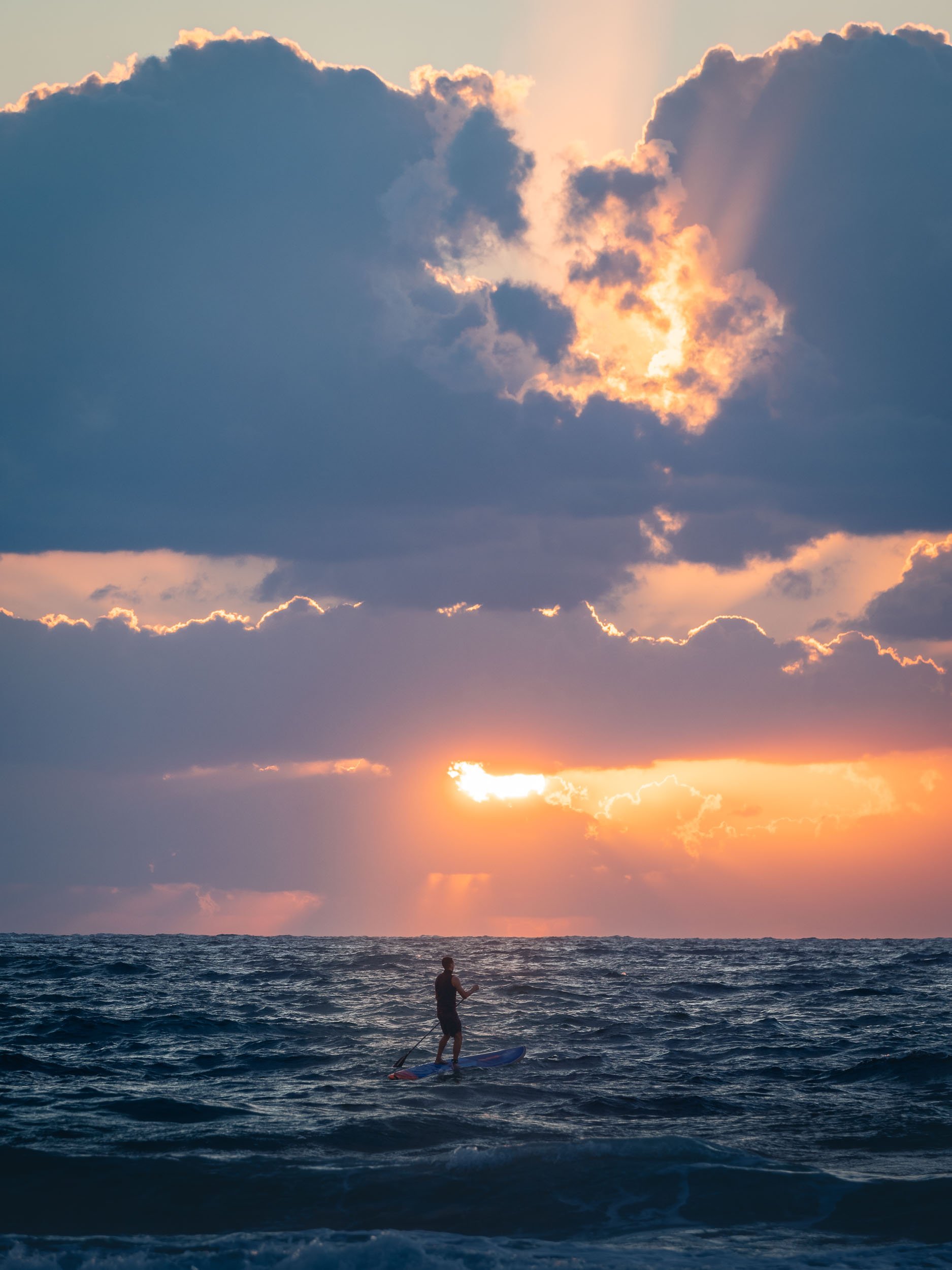
Into the Sunset
The beachfront location also means water sports are abundant.
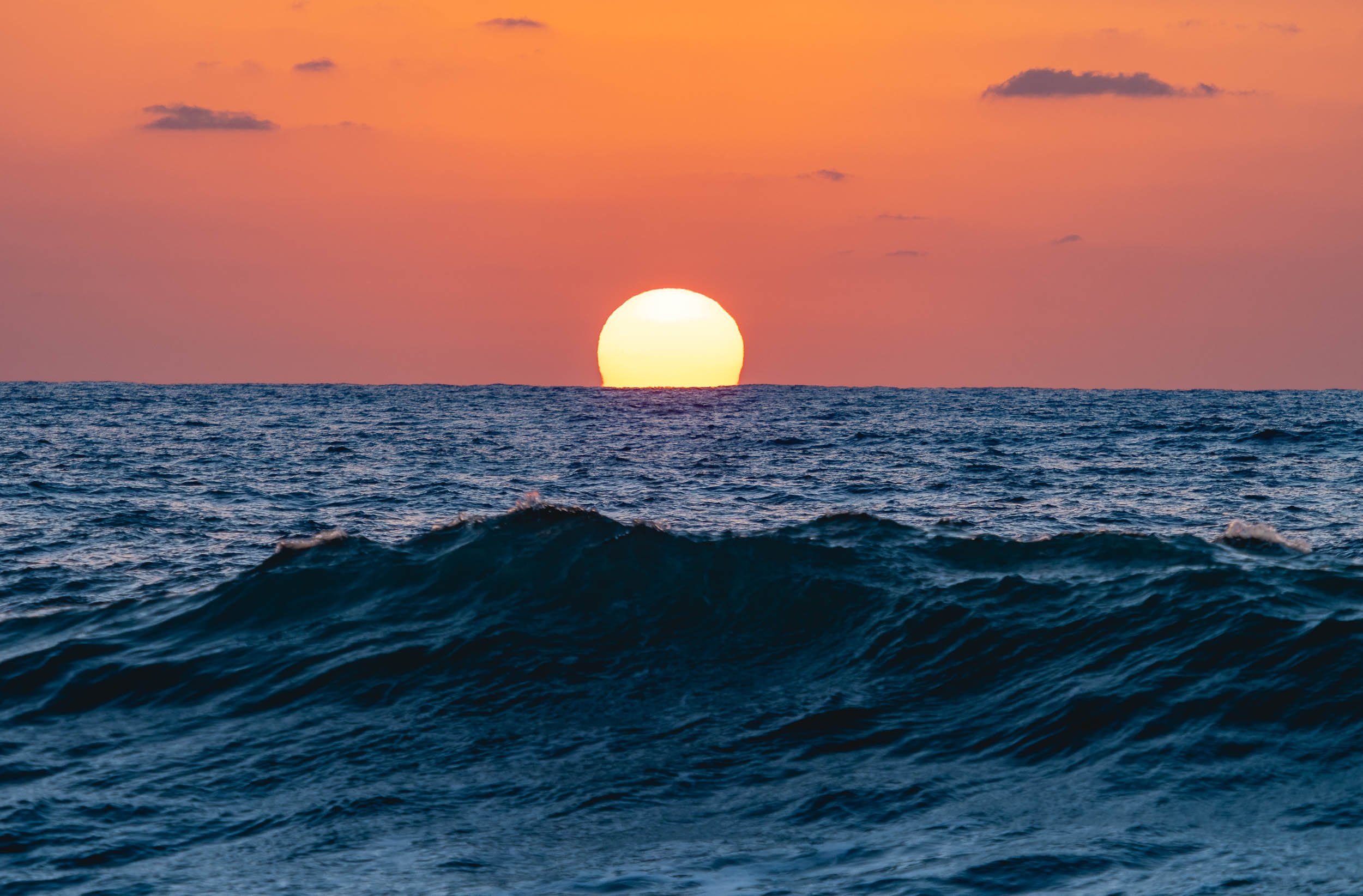
Horizon
Our home star disappearing over the Mediterranean sea.
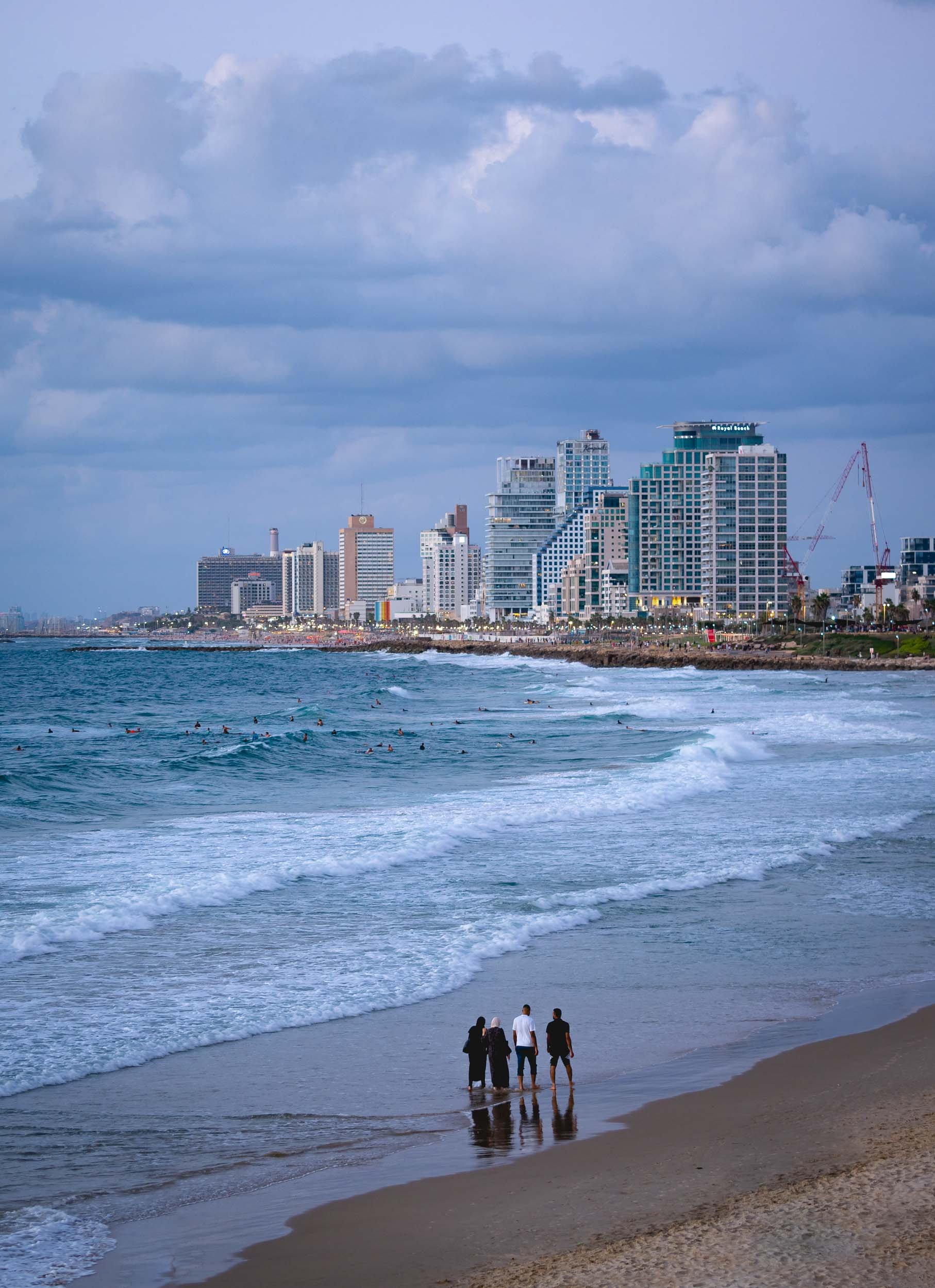
Vibe
Despite the looming conflict, the vibe is friendly, relaxed, and inclusive.
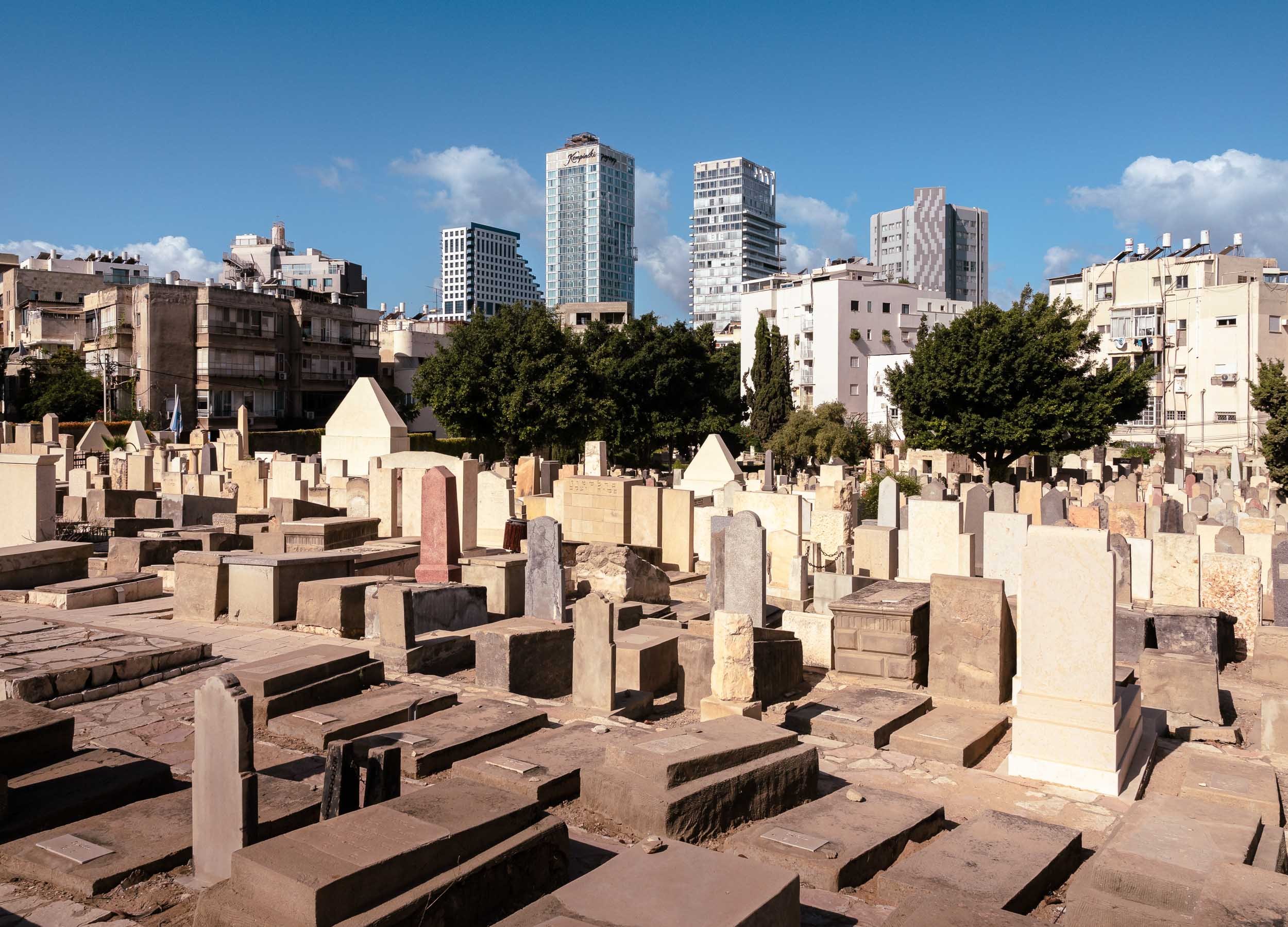
Trumpeldor Cemetery
Home to the city's founders and early residents during the beginning of the 1900s.
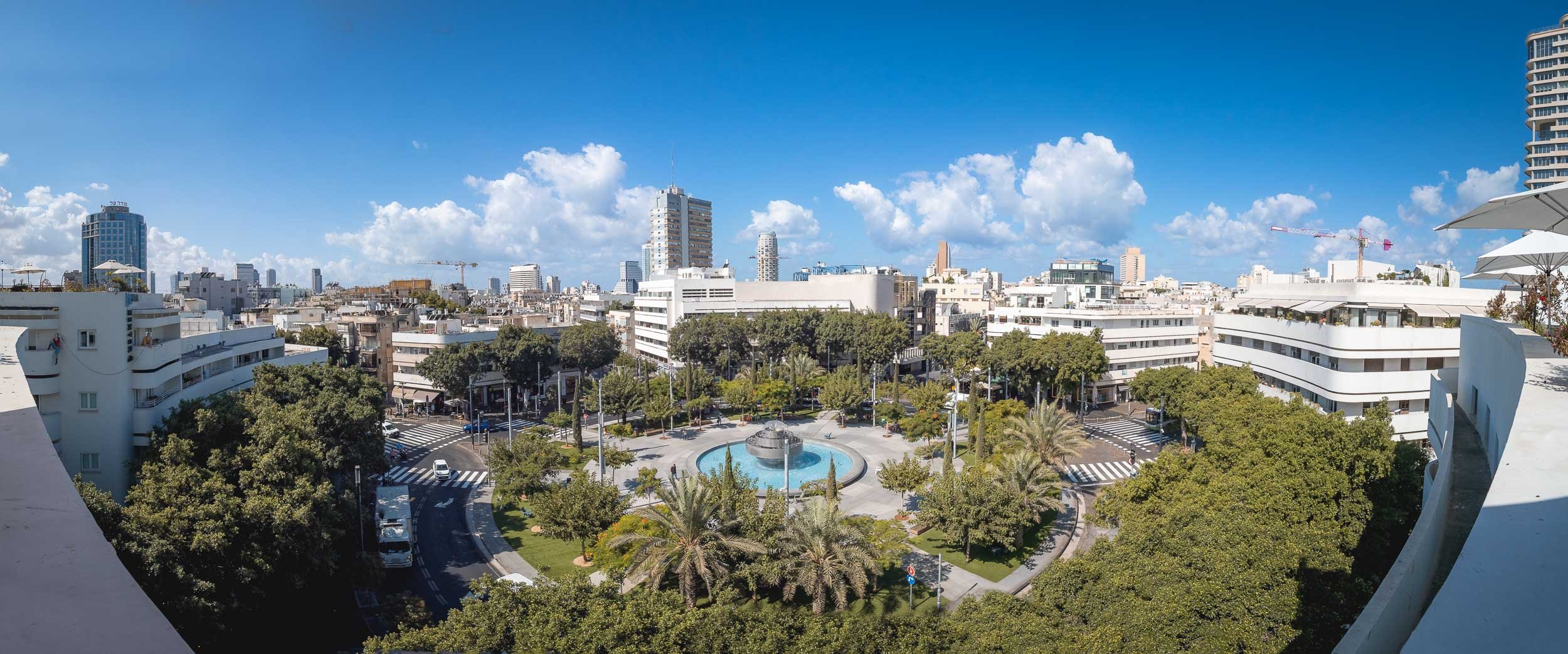
White City
Tel Aviv's White City is a UNESCO World Heritage Site due to its architectural variety, including many Bauhaus inspired buildings.
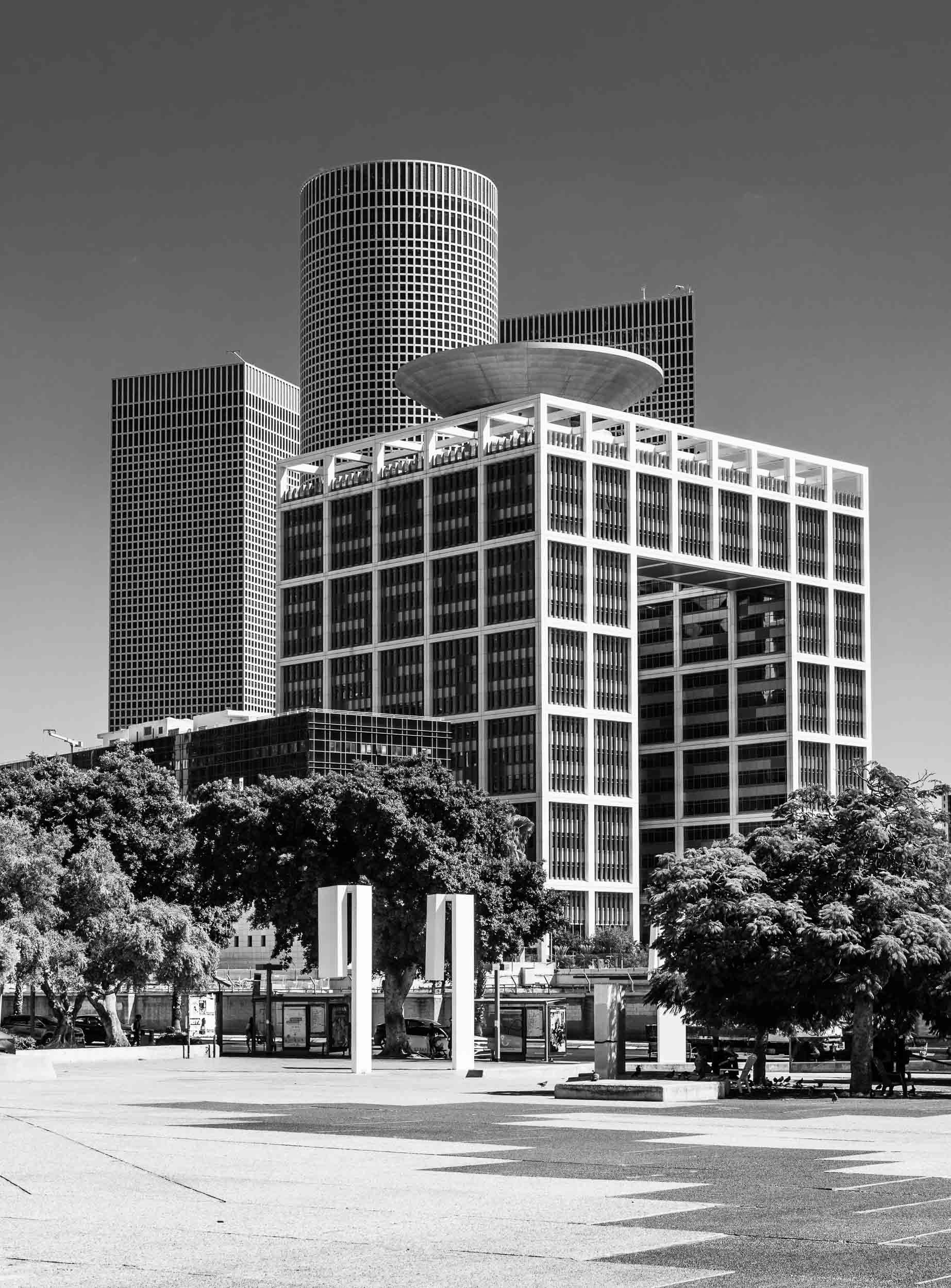
Azrieli Centre
The ciruclar (tallest in Tel Aviv on completion), triangular, and square towers, partly obscured by the Matcal Tower housing the Ministry of Defense.
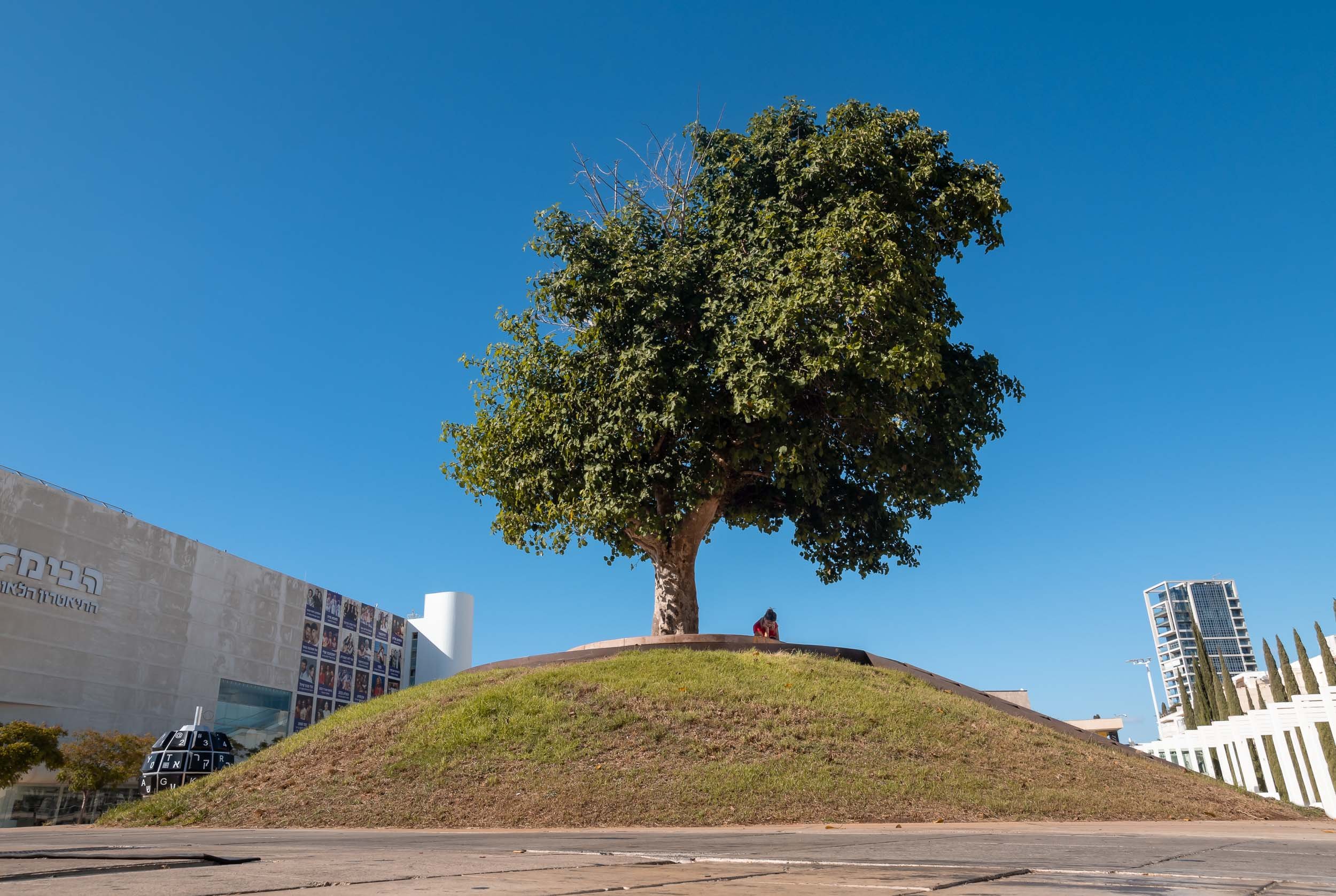
Habima Square
With a single tree, just across Rothschild Boulevard, one of the oldest streets in the city, named after one of its most influental families.
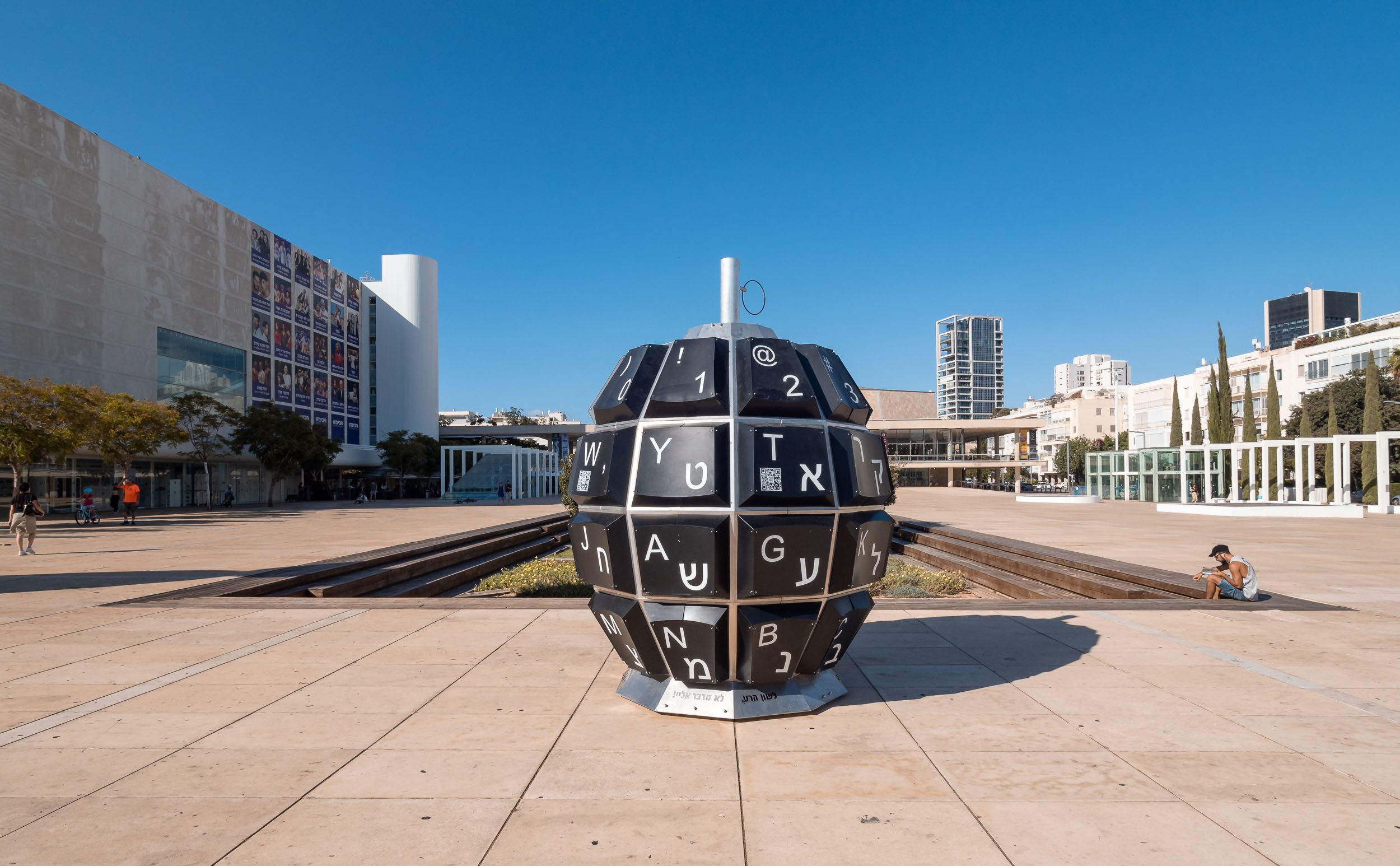
Keyboard Grenade
It's also home to this piece of art, presented without comment.
The Museum of Modern Art
While the city’s diverse architecture features many interesting corners, this building was definitely among my favorites.
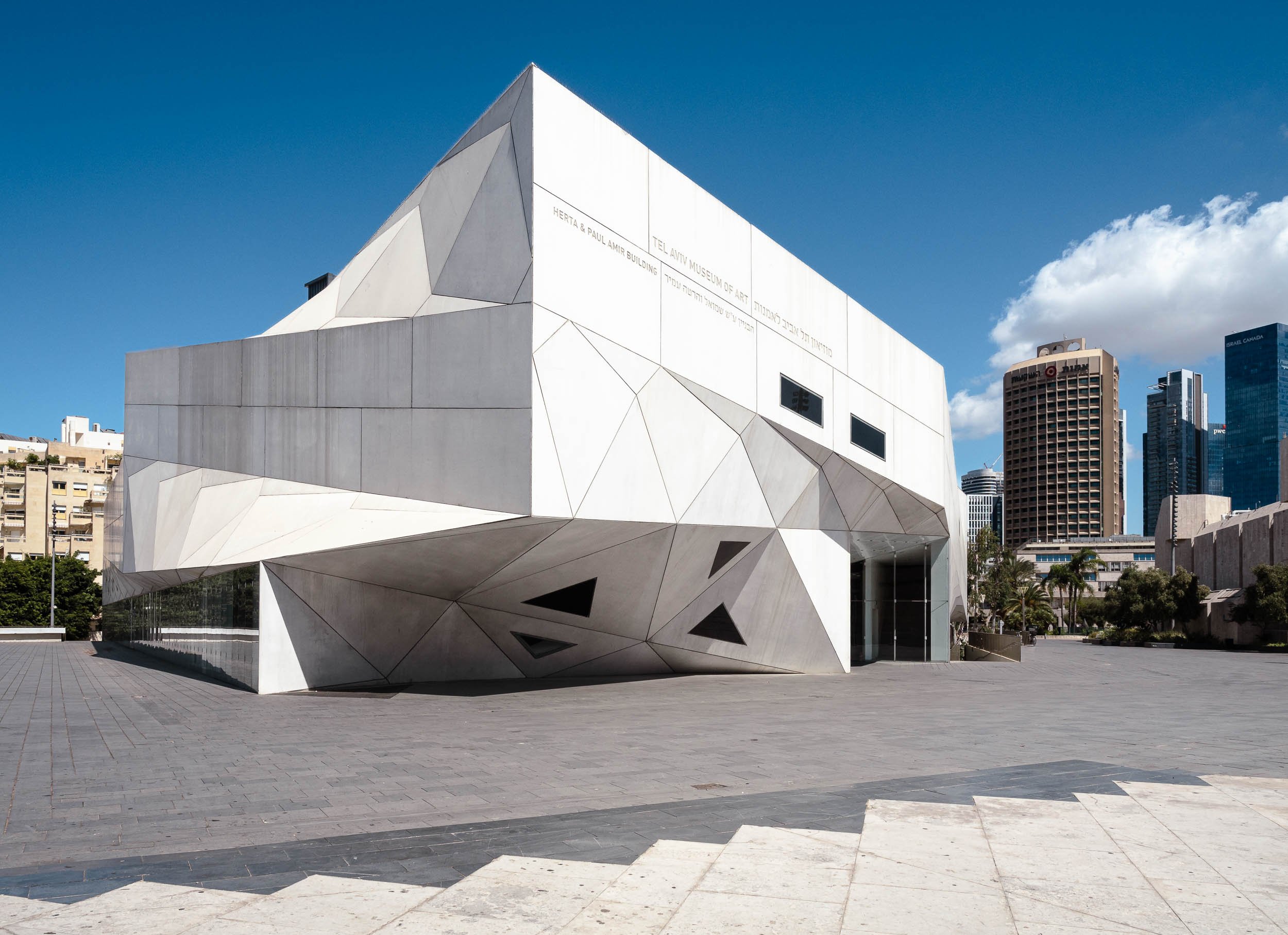
Herta and Paul Amir Building.
Particularly this part of the museum, with its hyperboloid shapes made of local stone.
The inside is no less intriguing.
The Museum features works by Klimt, Van Gogh, Monet, and also the intriguing Miniature Rooms by Helena Rubinstein.
Jaffa - The Real Roots
Tel Aviv in its current form is just over 100 years old, but the real roots of the city lie in Jaffa to the south.
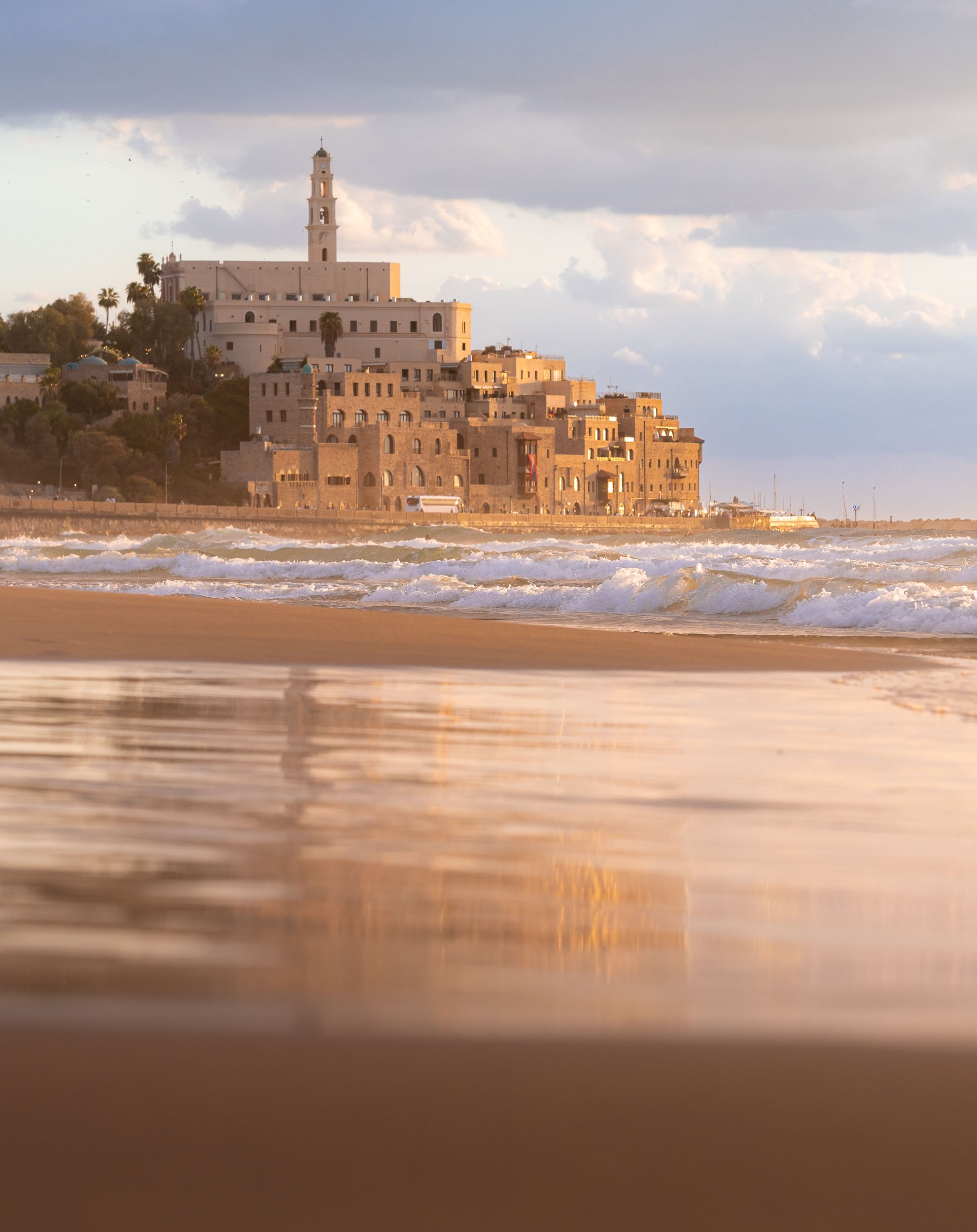
10000 Years
First evidence of human settlement found in the area dates back to 7500 BC.
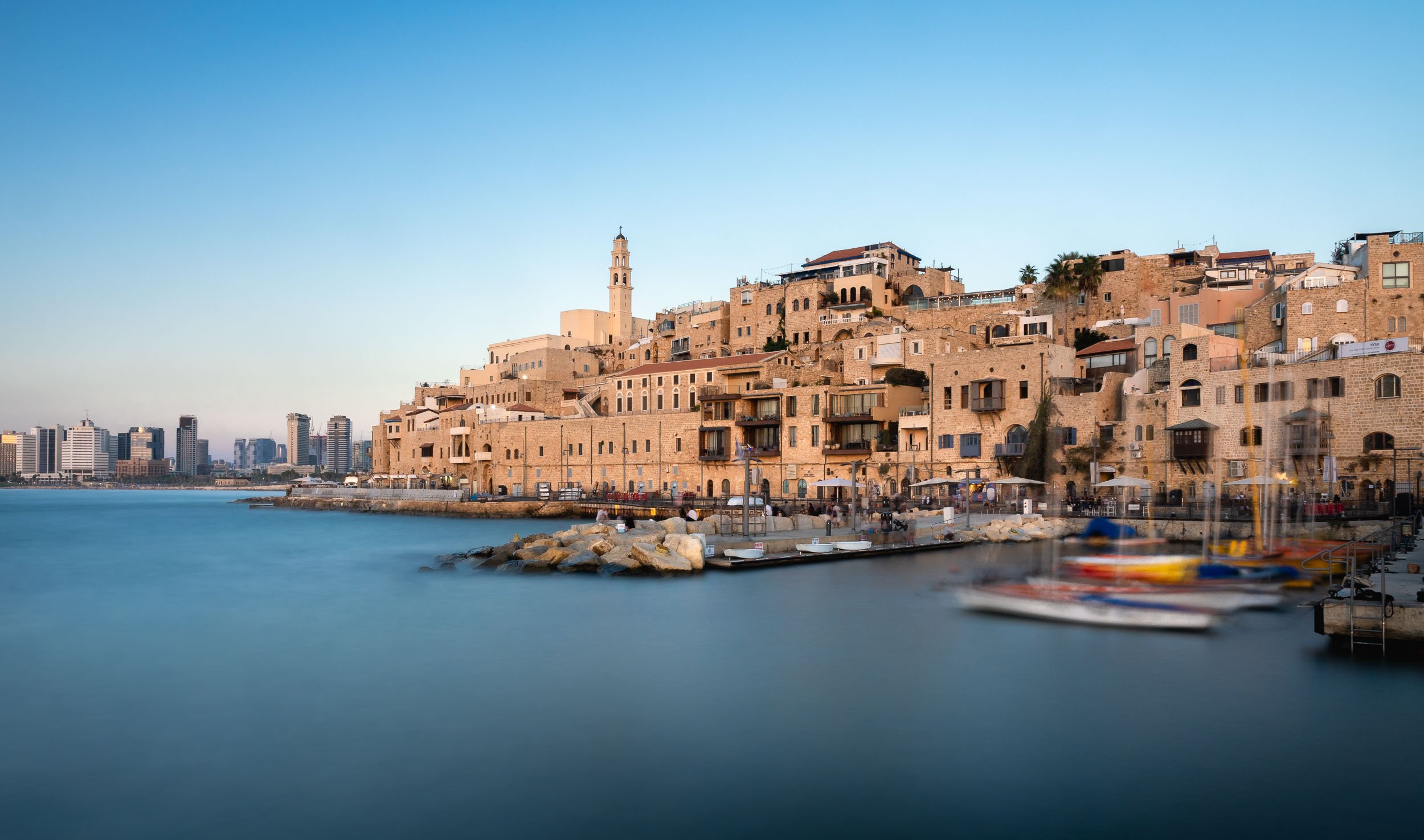
Origin
The city itself is said to have been founded in 1800 BC, and was ruled by virtually all powers that have ever had a say in the region. In 1950 the predominantly Arab city was absorbed into the faster growing Tel Aviv, visible in the background.
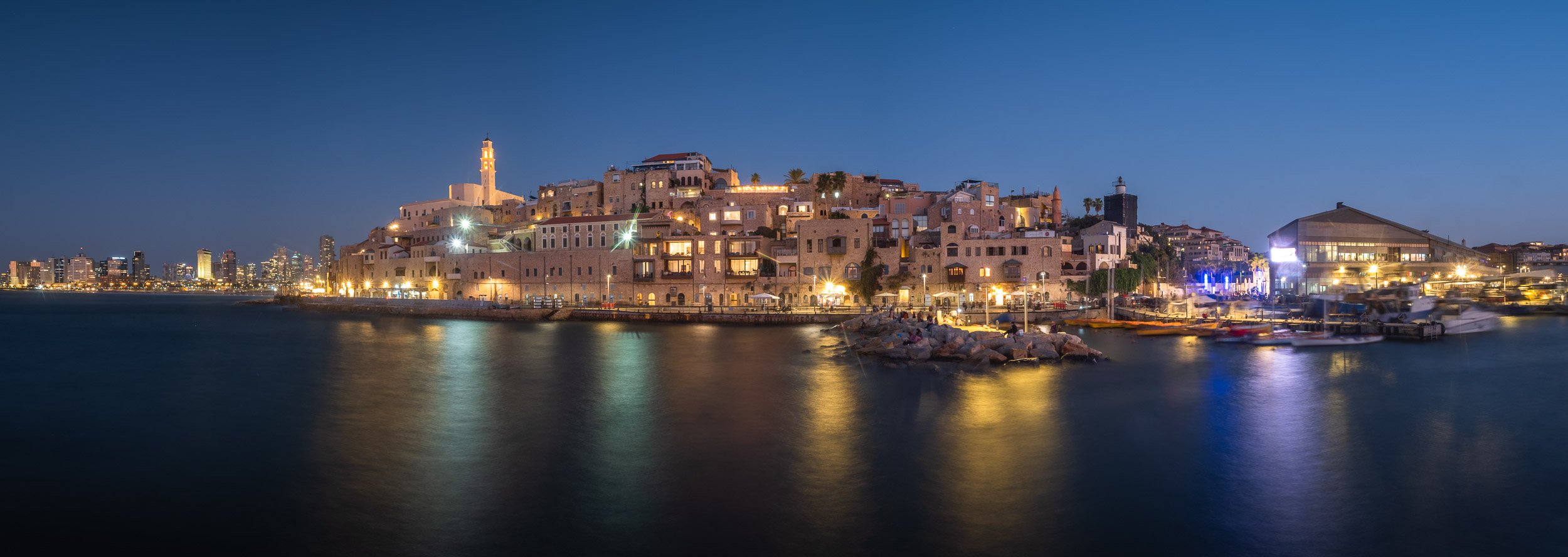
Blue Hour
A panorama from the harbour wall on the opposite side at night, when the promenade comes to life with restaurants.
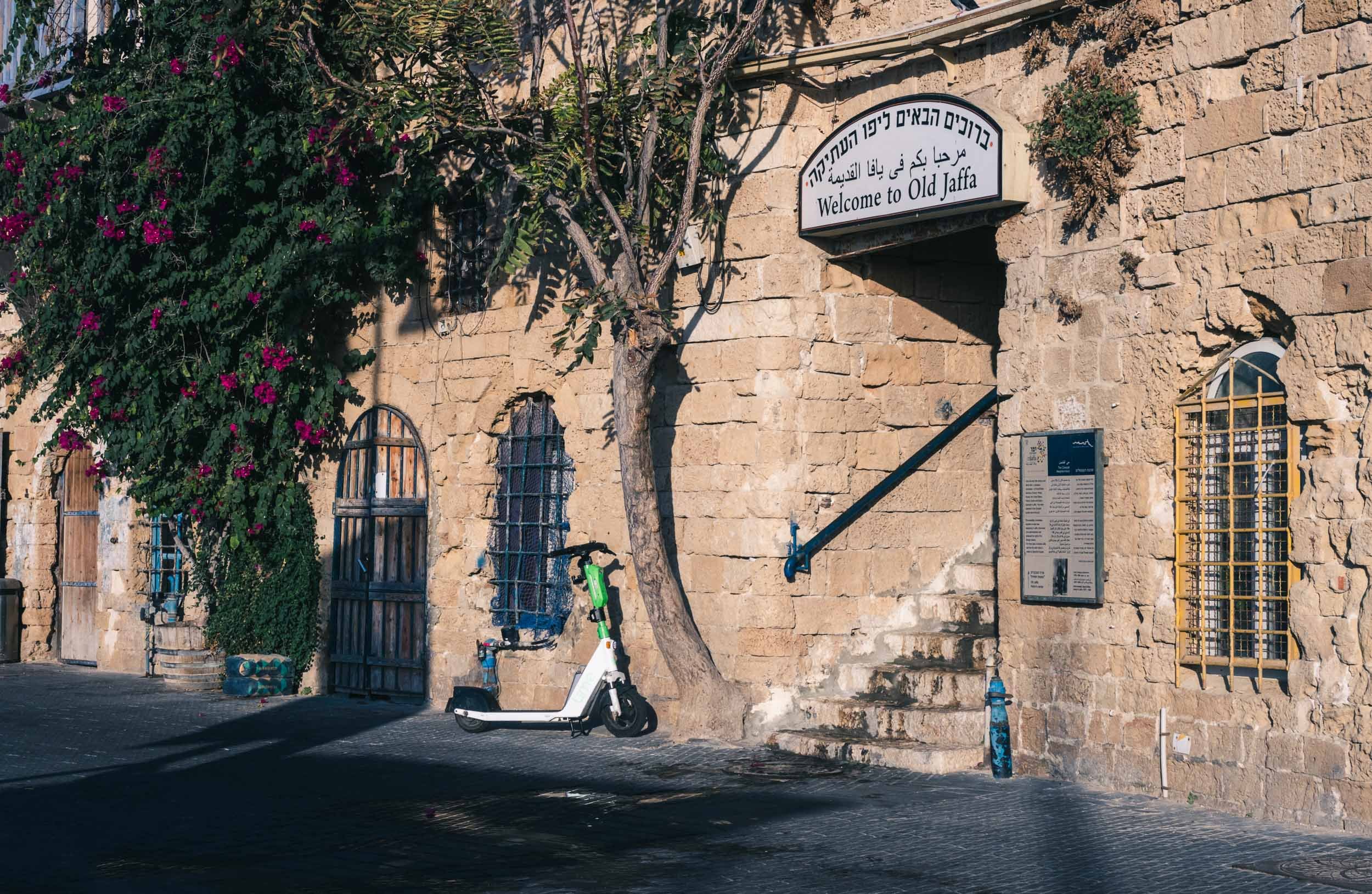
Entrance
One of the staircases leading up into the city.
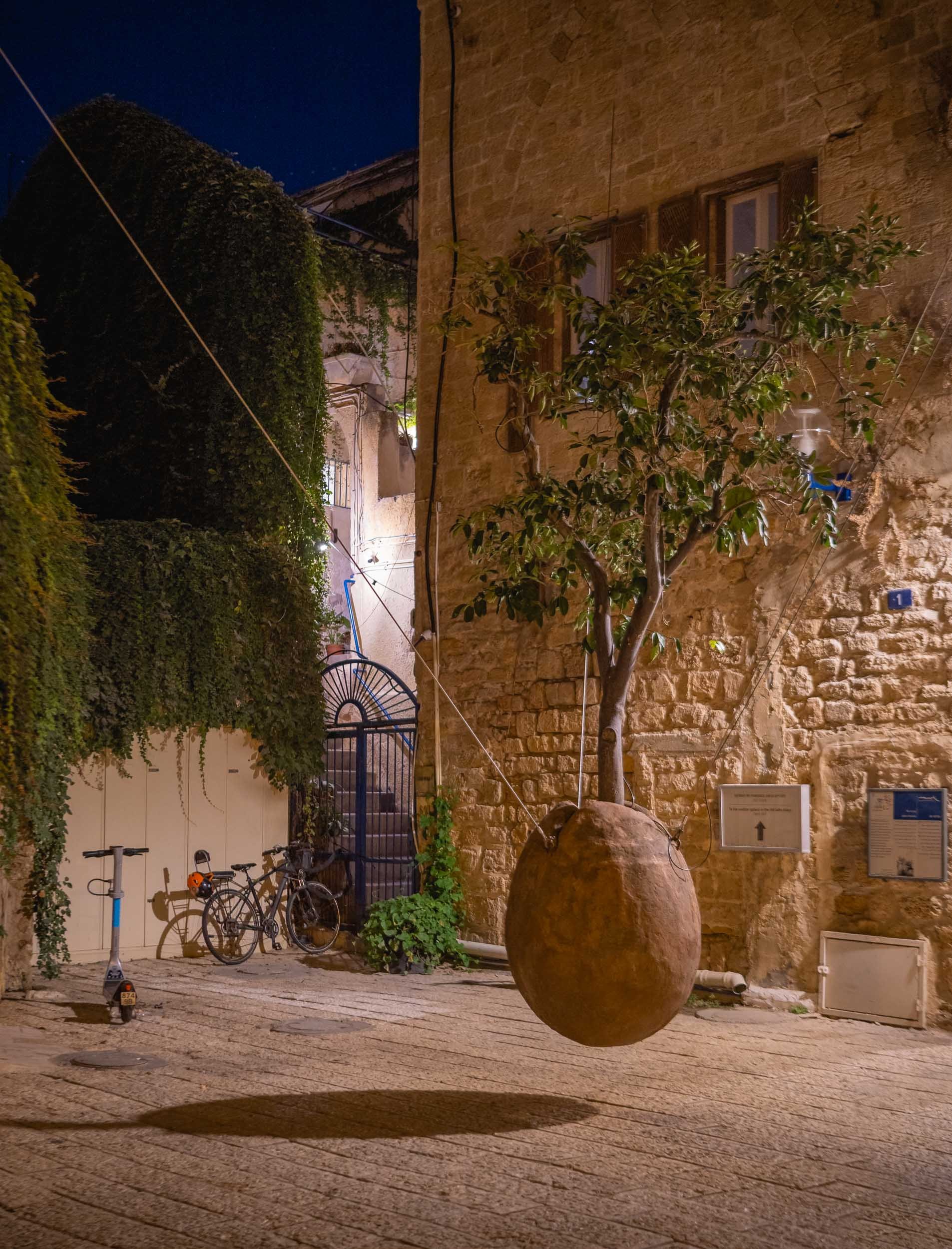
Orange Capital
This hanging tree pays hommage to Jaffa as the place of origin for the sweeter orange variety of the same name, now commonly found across the world.
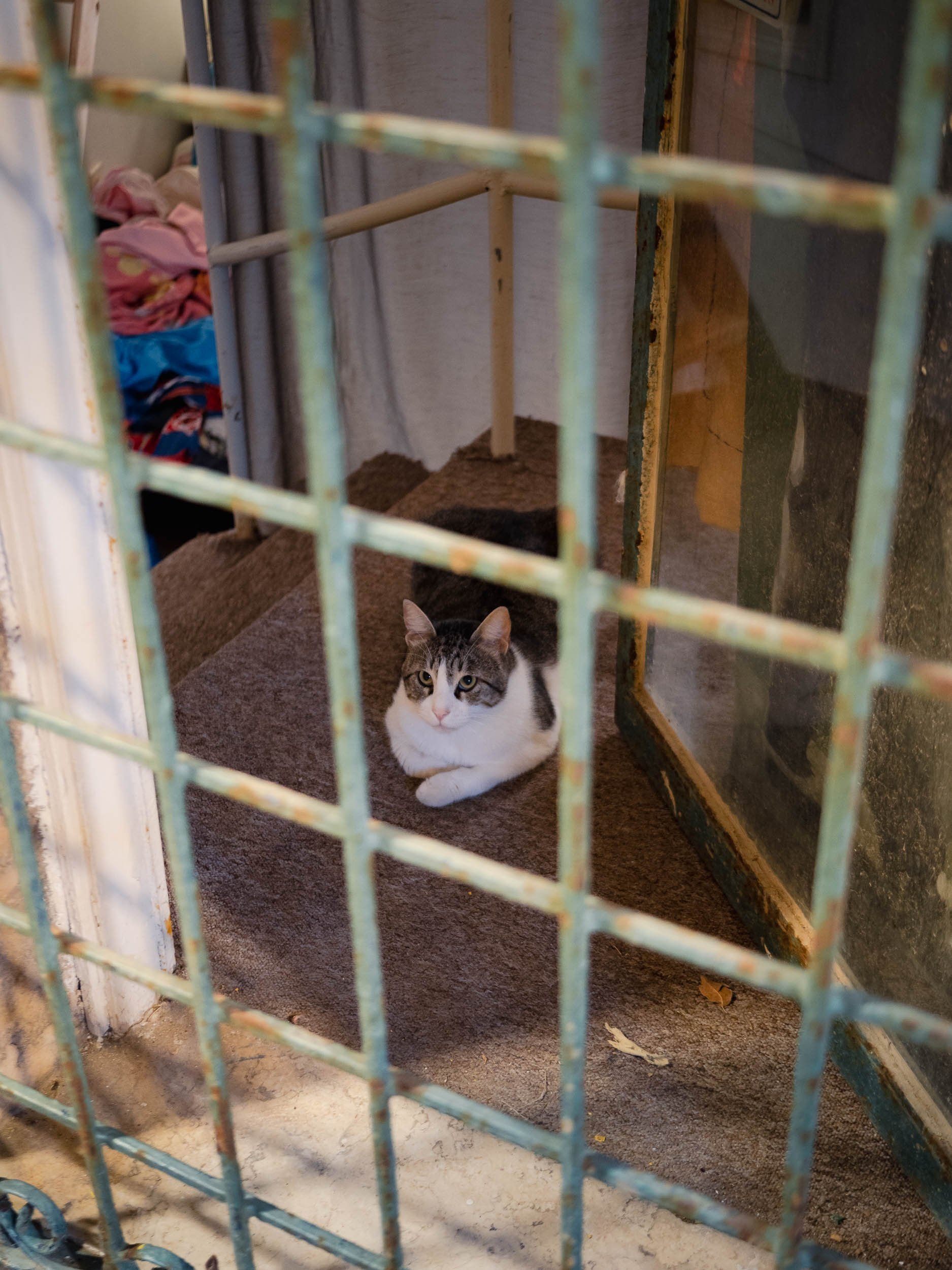
Fate
"I am trapped in misery, forever behind this metal bar, while the humans on the other side torment me with their expressions of freedom"
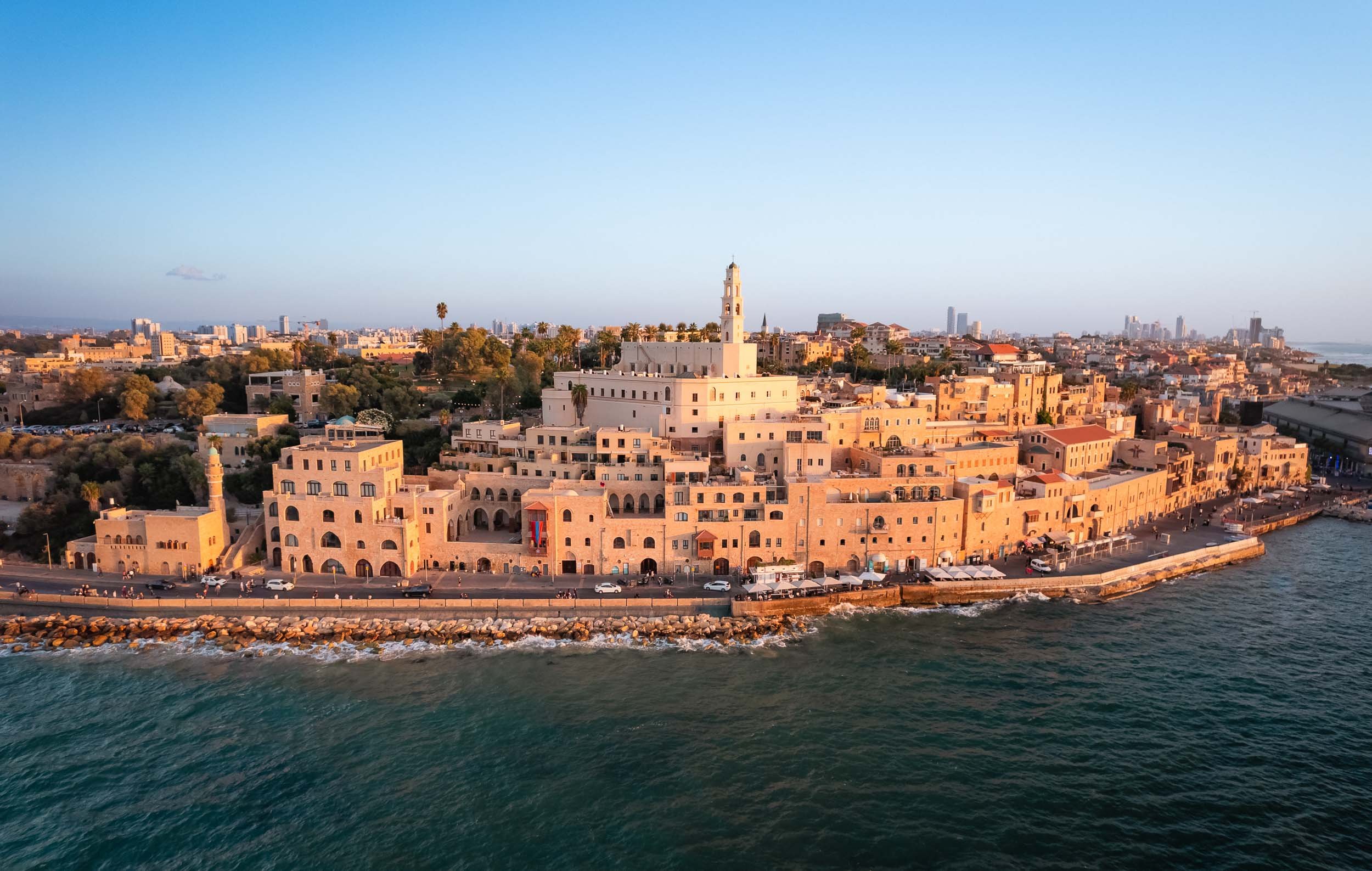
Upwards
The terraced buildings on the hill with the 1894 St. Peter's Church on the top.
Beit Guvrin-Maresha National Park - Jewish, Roman, Byzantin, and in Between.
About an hour south-east of Tel Aviv lies the next stop on our route. This UNESCO World Heritage Site was full of surprising archaeological excavations, starting with a group of huge bell caves, some of them over 18m tall, airy, and used over 1000 years ago to extract chalkstone from the ground for construction.
Additional caves acted as living quarters and baths, many of them interconnected via stairs and tunnels.
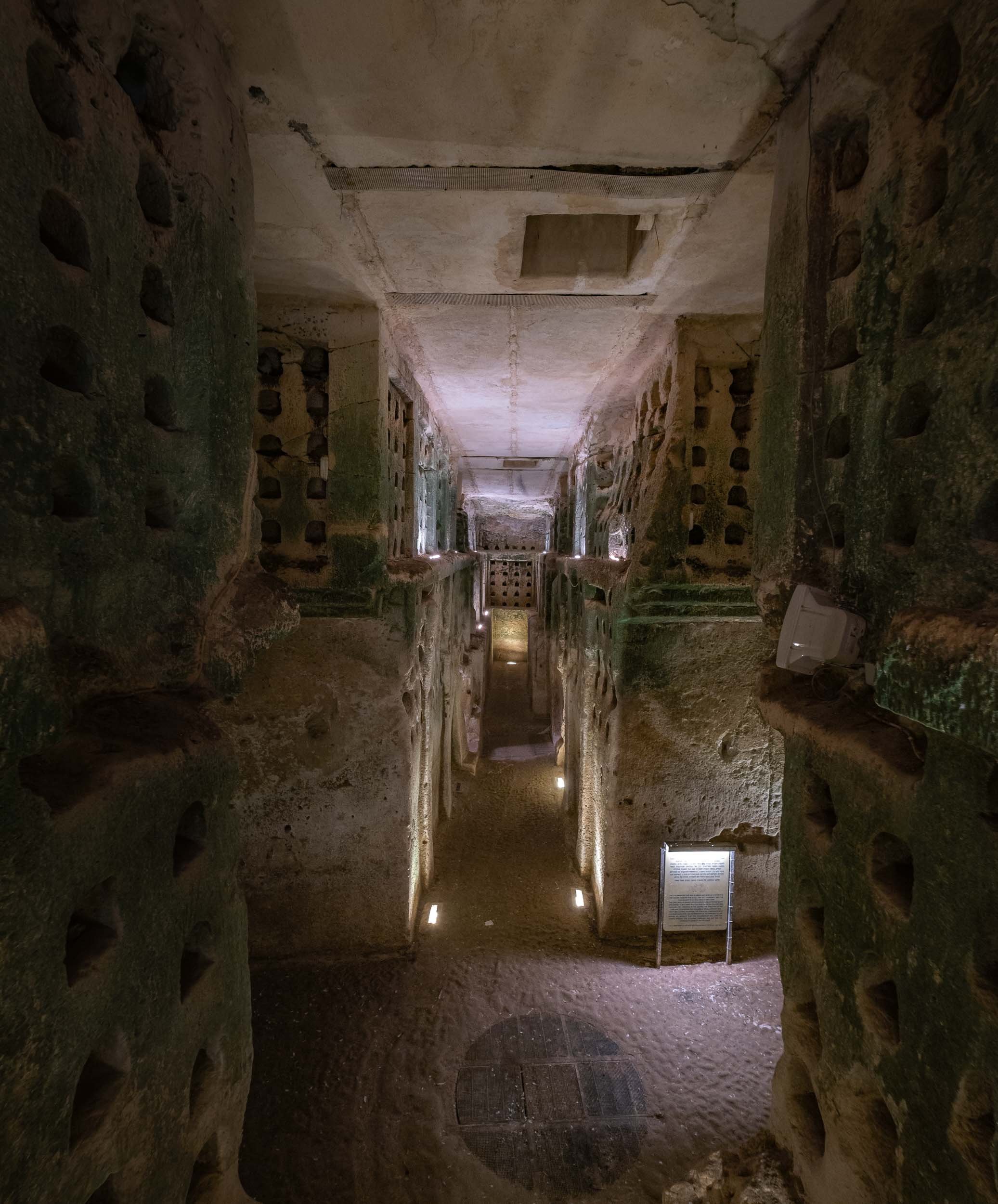
Columbaria
One of the most interesting uses were these caves, housing breeding pigeons during the Hellenistic and Roman periods.
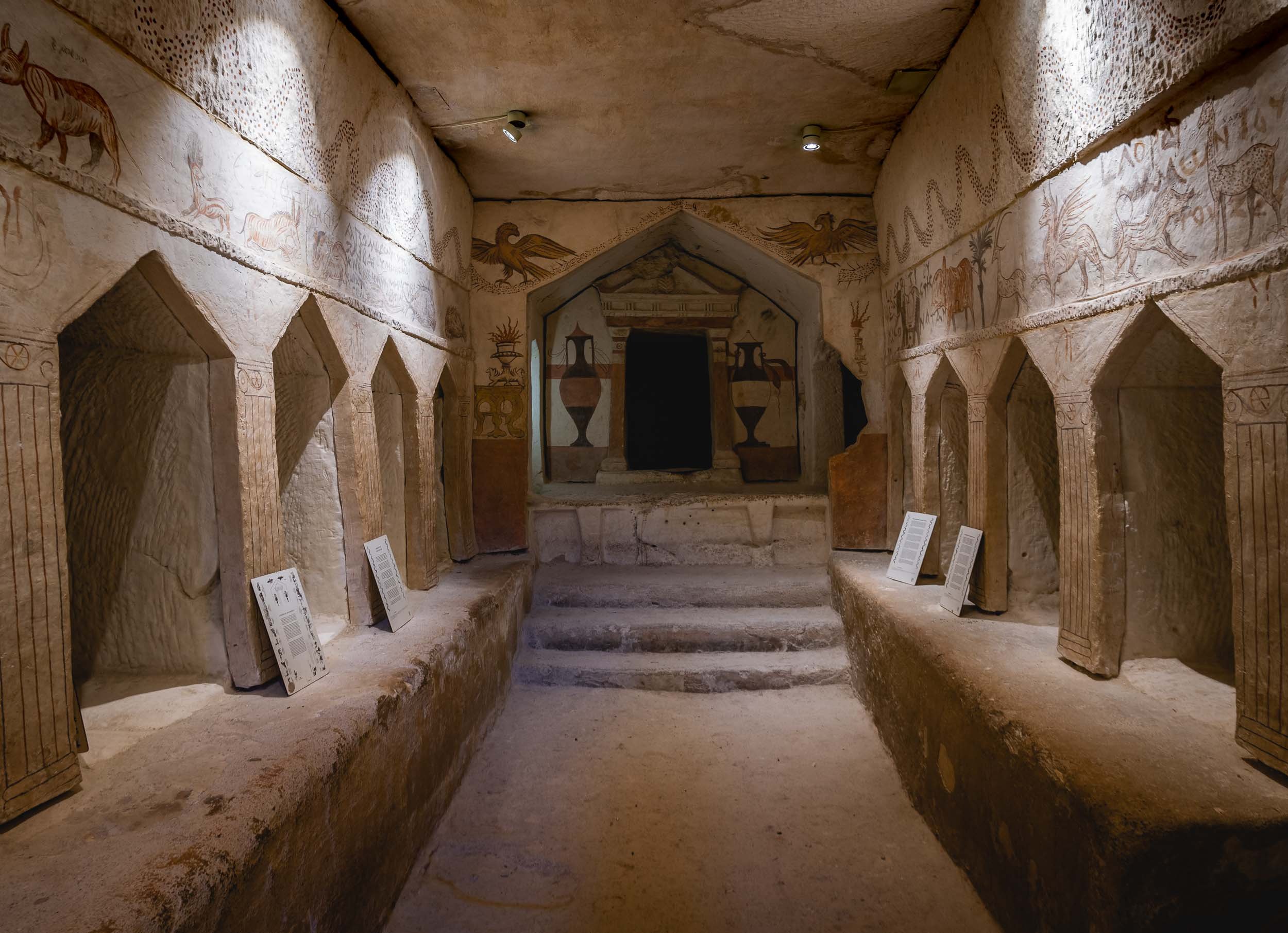
Sidonian Burial Caves
This cave was used in the city of Maresha over 2000 years ago, and is the only painted one, adorned with mythical and real animals, and other symbols.
The site is also home to a Roman amphitheater built in the second century and uncovered in the 1990s.
The Stalactite Cave
A few kilometres north of the park is the Stalactite Nature Reserved, situated around several quarries which were the reason for the discovery of this cave.
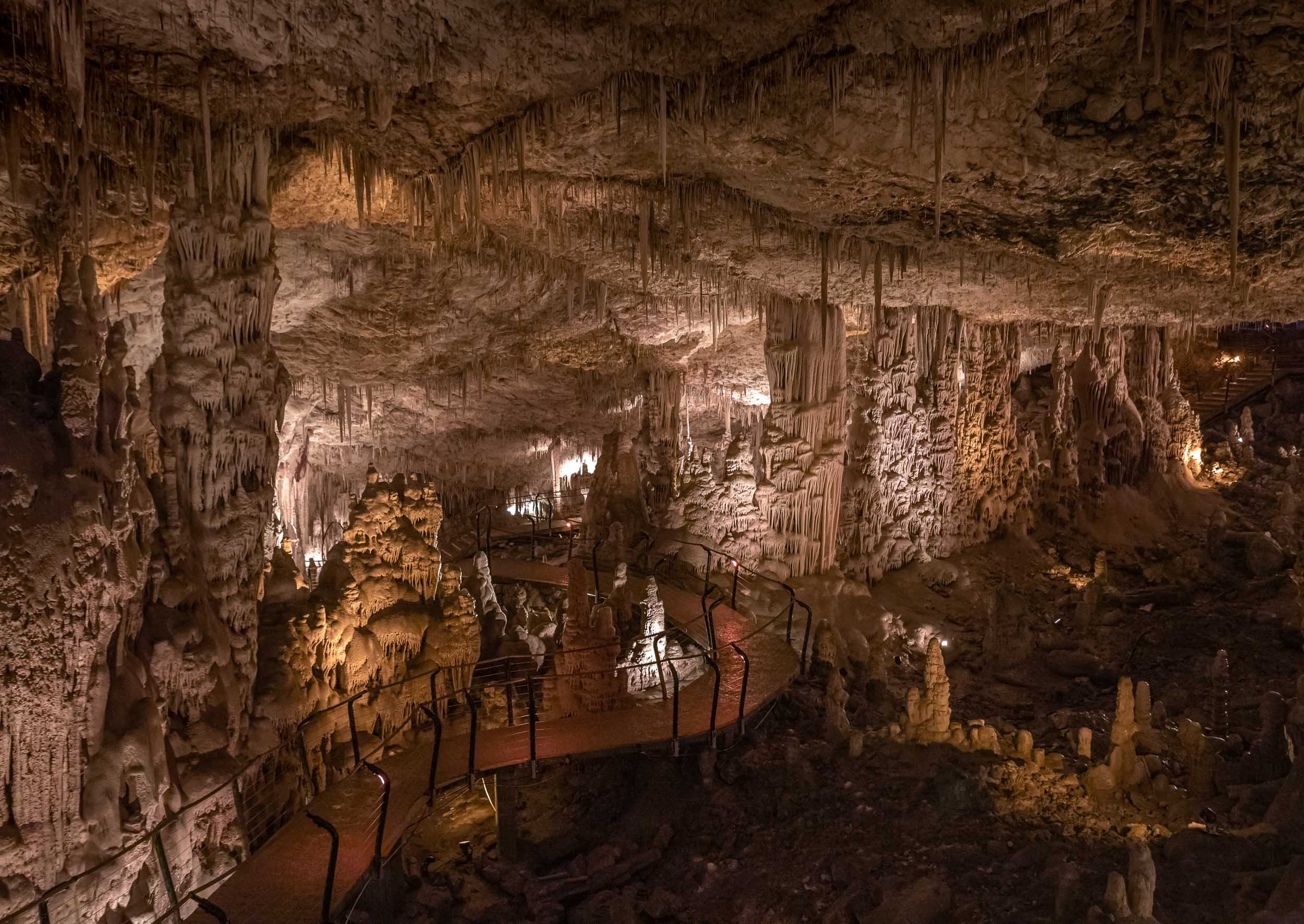
Sorek cave is a relatively small but beautiful cave, with nicely illuminated stalactites and stalagmites, some of them 300,000 years old.
Betlehem - Into the West Bank
Before heading to Jerusalem, the trip took a small detour into the only area we visited that is not controlled by Israel as of today - the city of Betlehem. The experience of crossing the border (with no formal passport control) into a Palestinian territory encompasses a walk through a prison-like corridor and passing several one-way metal barriers, before exiting into a completely different environment, with a huge concrete wall to your left and right.
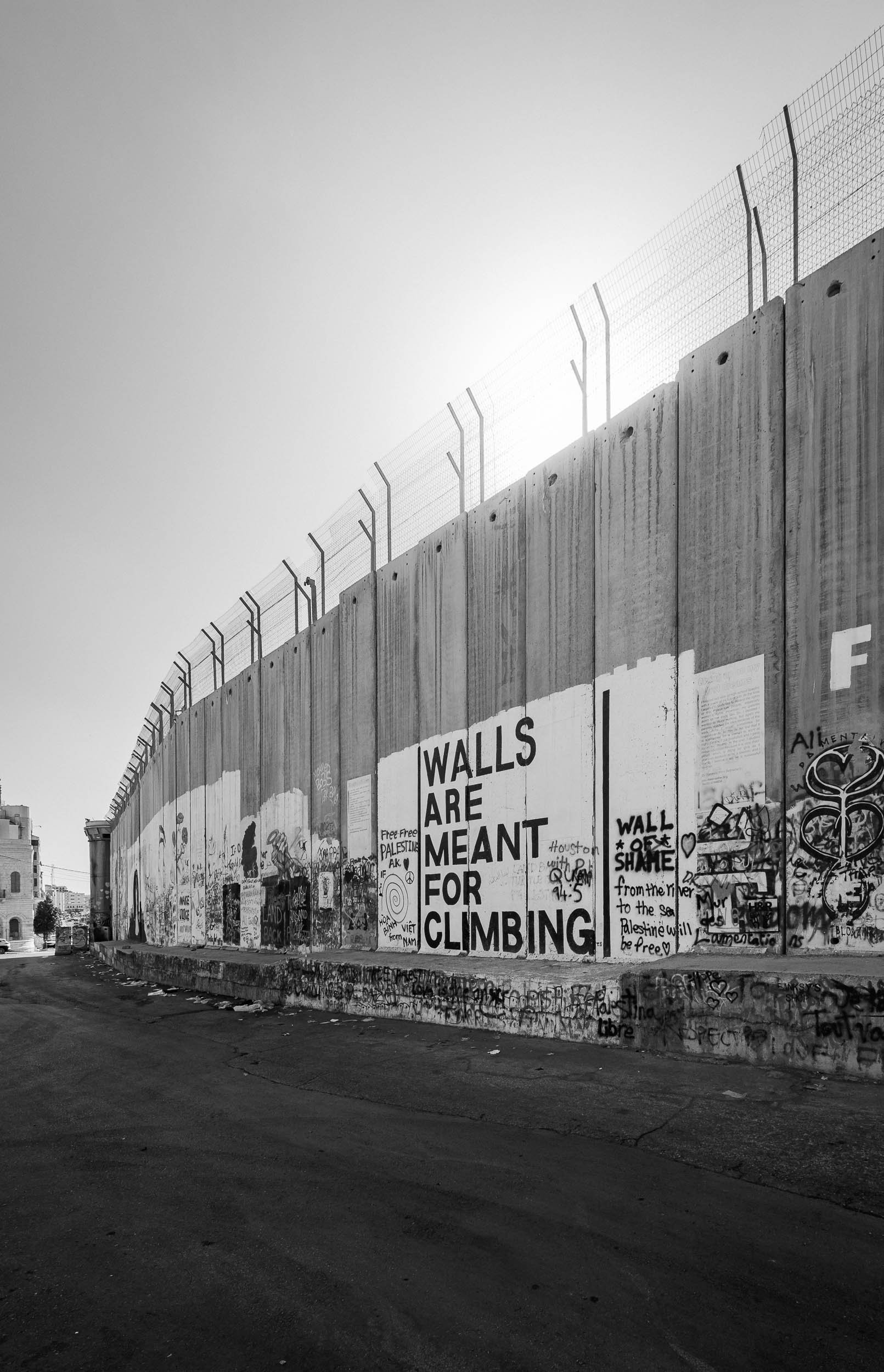
... not this one
But let's see what the future brings.
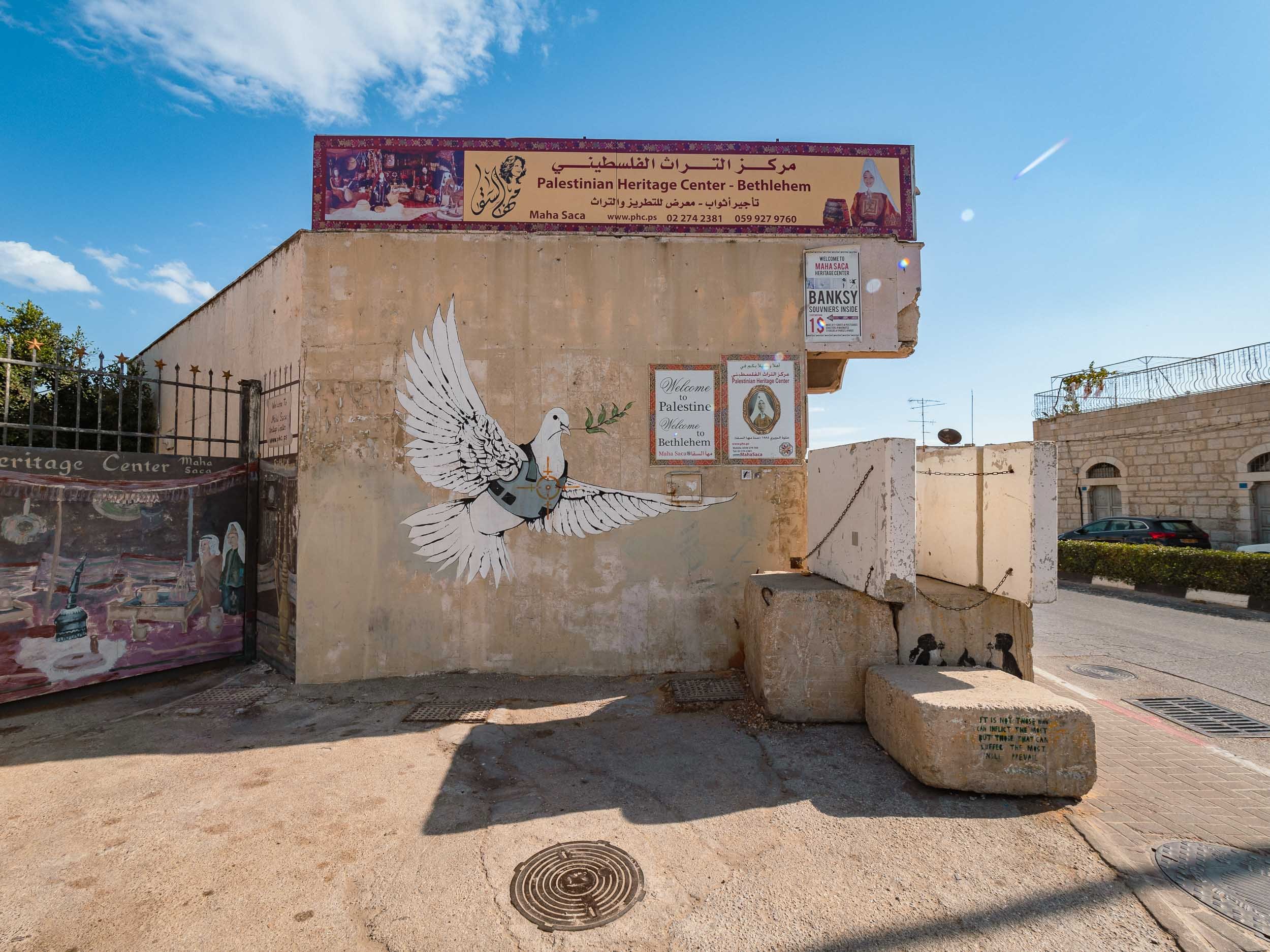
Banksy's Legacy
The Armored Dove of Peace was created by him in 2003 on the Palestinian Heritage Cente.
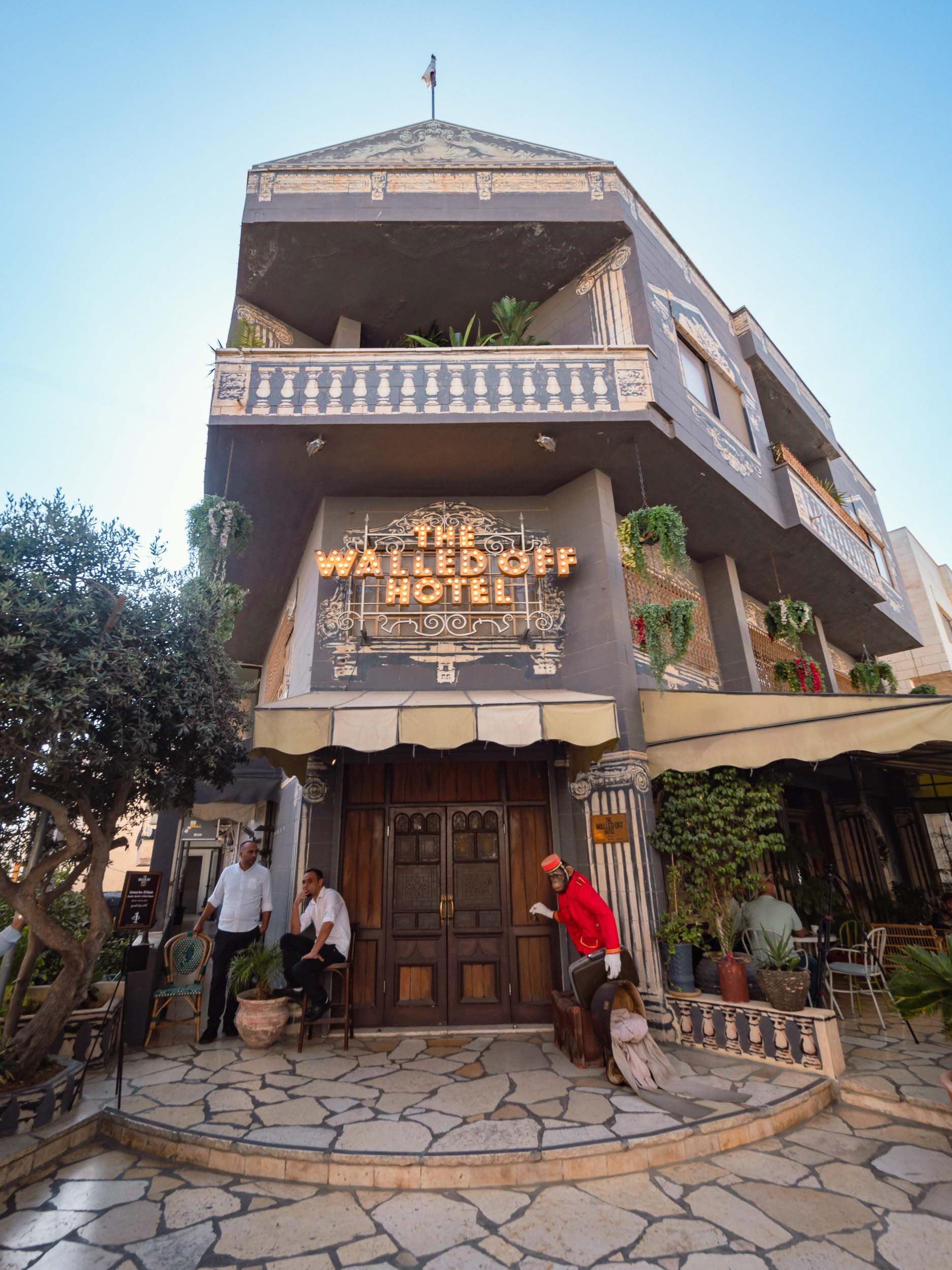
The Walled Off Hotel
Aside from the graffiti, the artist was also instrumental in the opening of this hotel, situated just next to the wall, and featuring many of his artworks.
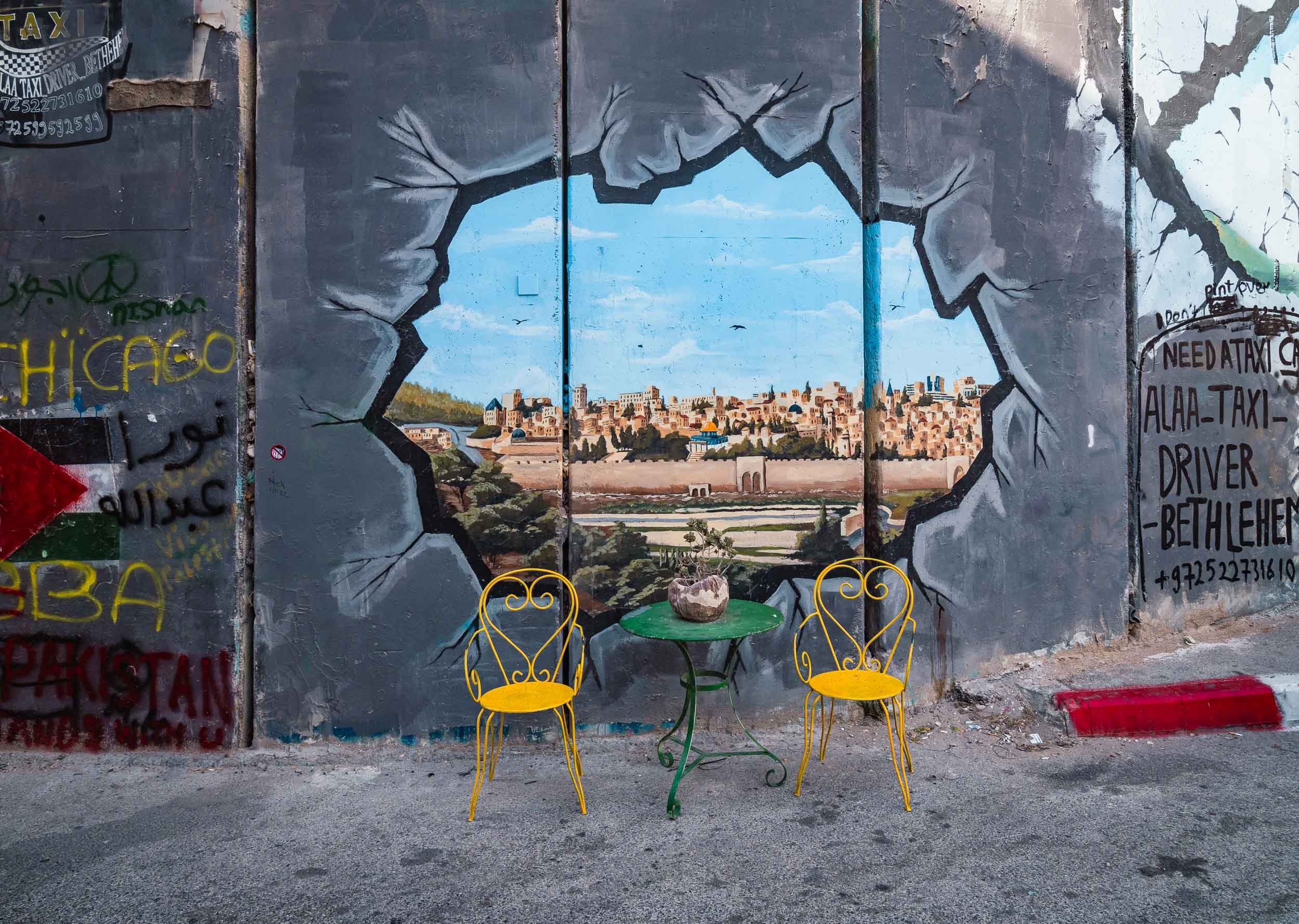
Wall Views
The hotel is ironically advertised as having "the worst view of any hotel in the world".
The Church of the Nativity
Of course, for most people the primary reason to visit Betlehem isn’t the wall or Banky’s art, but the church built at the spot where Jesus is said to have been born, albeit over 300 years earlier than the church’s construction. The nativity cave itself is the oldest site continuously used as a place of worship in Christianity and was declared a UNESCO World Heritage Site in 2012, the first listed under the State of Palestine.
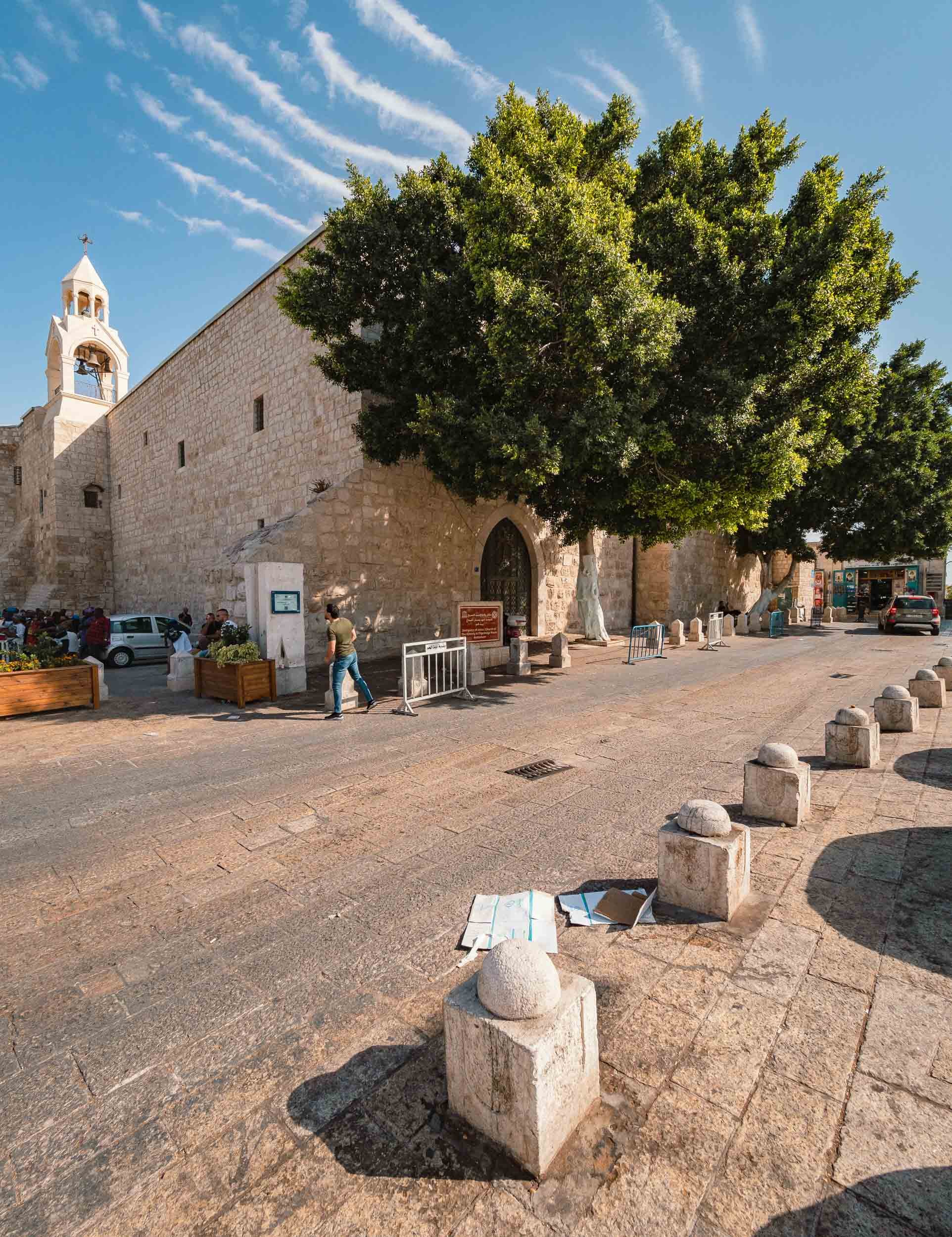
Simple Exterior
The church has undergone various changes over the centuries, and now in fact is home to three monasteries: A Roman Catholic, a Greek Orthodox, and an Armenian Apostolic one, seen here.
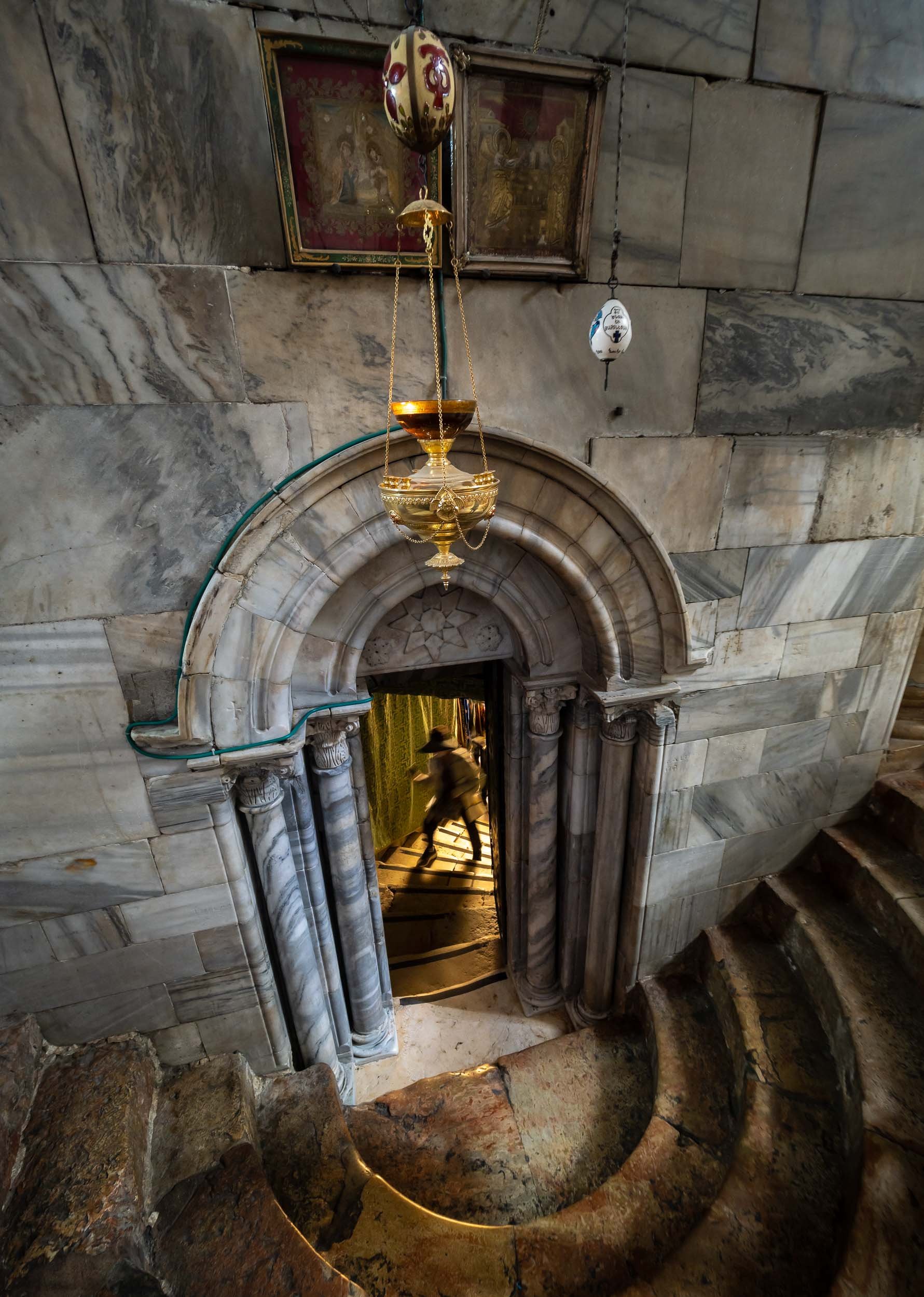
Into the Grotto
The staircase leading into the grotto, situated under the main altar.

Birthplace of Jesus
The alleged spot where Jesus was born. The hole in the star allows pilgrims to touch the original stone Mary laid on when she gave birth.
The Old City of Jerusalem - Holy Overload
Jerusalem’s Old City is without a doubt the most interesting part of the region - its historic significance is unparalleled and the number of sites with a complex past (and present) is difficult to grasp. The city is split into Muslim, Jewish, Christian and Armenian quarters (and a Moroccan one in front of the Western Wall, which was destroyed by Israel after the Six Day war in 1967), and each has its own flair, in a complex social, cultural, and political web.

Panorama
A panoramic view over the Old City of Jerusalem, from the Muslim Quarter.
Walking through the allyes makes you feel like you are underground, and there is another layer above you - this is partially true, the roofs of many of the houses are accessible and walkable.
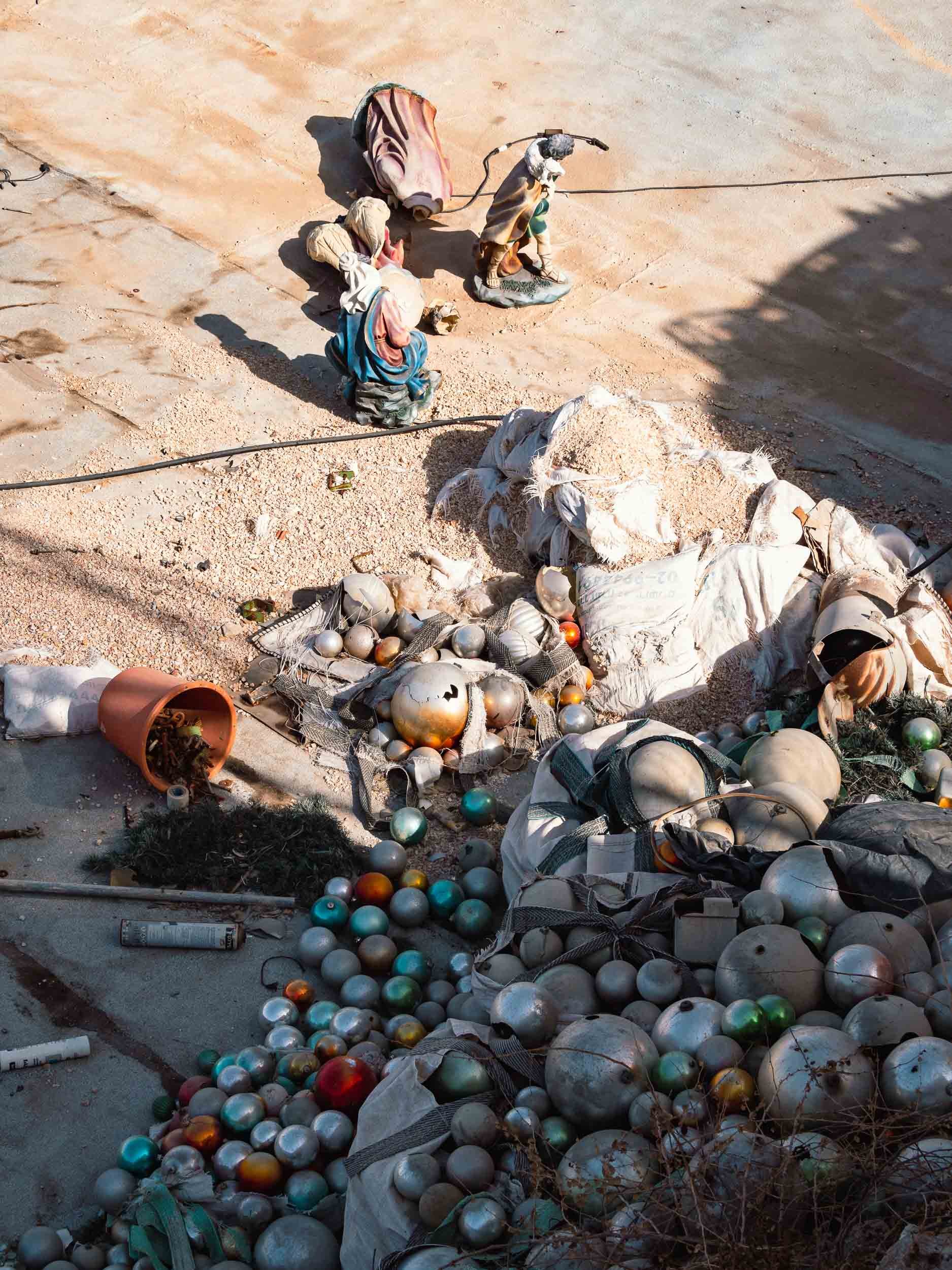
The Aftermath
Even Jerusalem isn't immune to the ever-growing commercialisation of Christmas and other religious holidays - and the leftovers they produce. We spotted these in a backyard while walking on the Old City walls.
Church of the Holy Sepulchre
The current responsibilities for the religious sights in Jerusalem and Betlehem are managed through the so-called Status Quo from 1878, governing the roles of the various religions in managing the significant historic sites in the area. It’s an incredible read, and the complexity of interactions between the political parties and religions (even within their branches) is difficult to grasp. Find out more here.
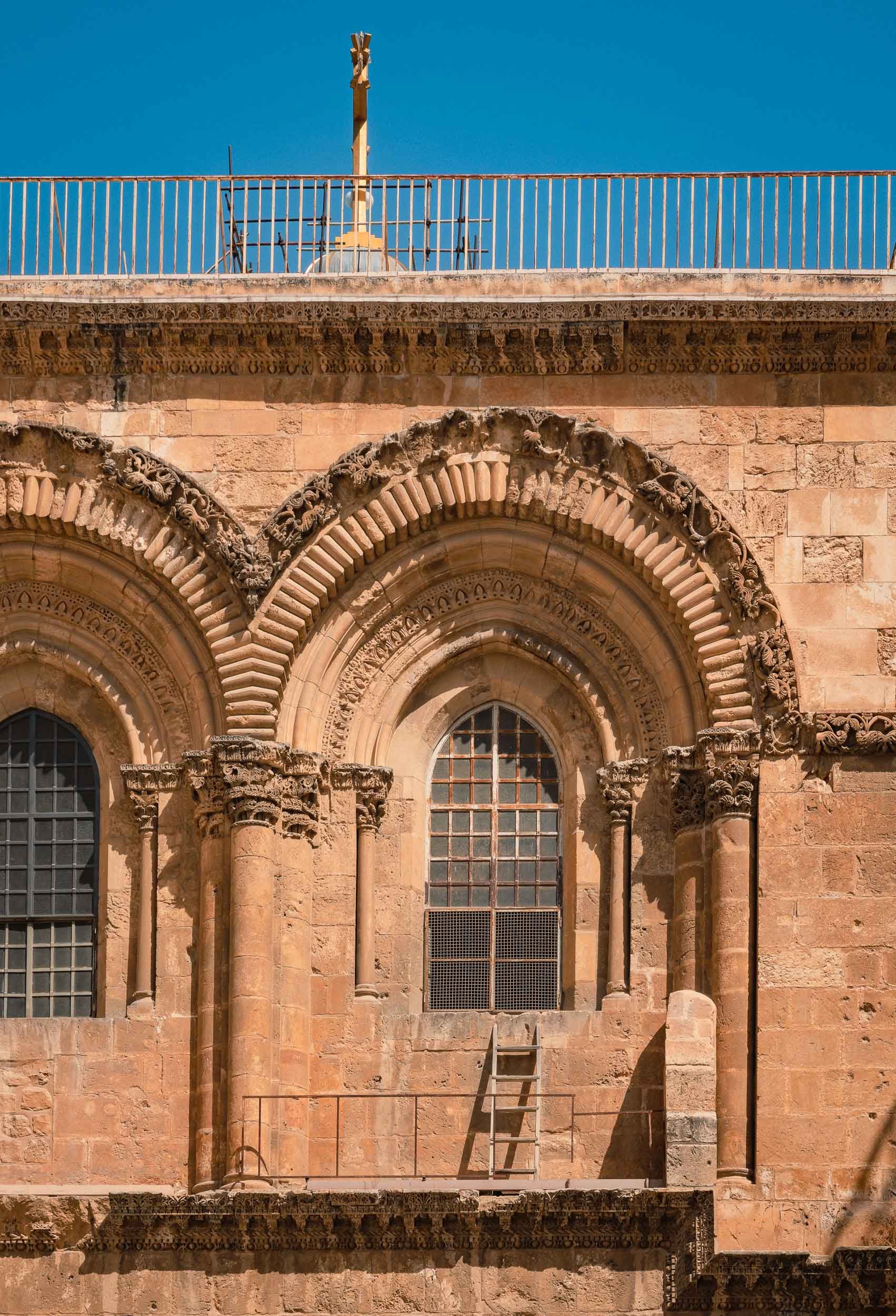
Nothing exemplifies this more than the Immovable Ladder on the exterior wall of the Church of the Holy Sepulchre, in place since 1728 to represent the clause that none of the six Christian churches may alter any of the physical aspects of the church without consent of the five others.
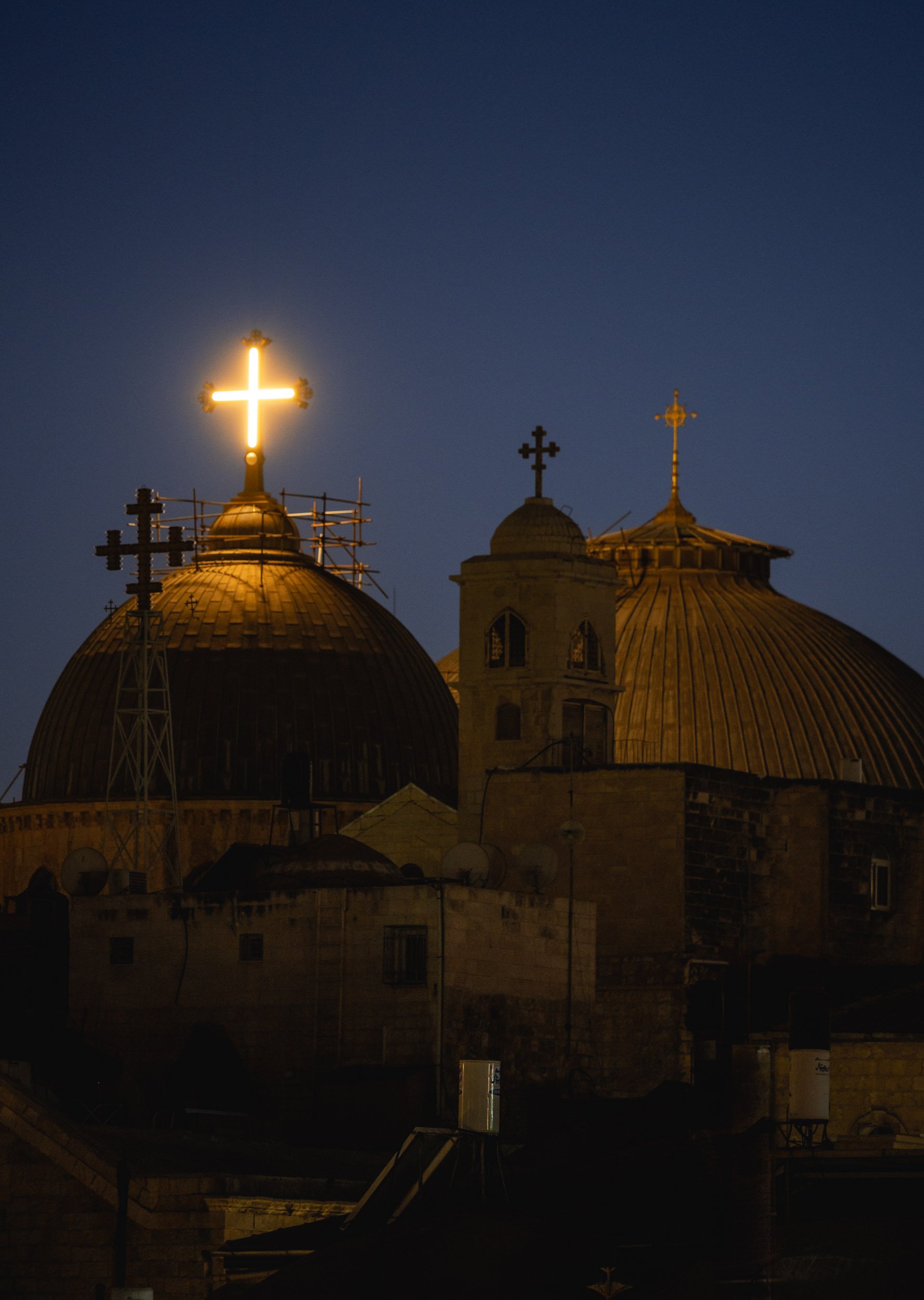
Holiest of Christian Sites
The roof crosses within the church complex.
Two of the most important pilgrimage sites in the church are the Calvary, said to have been the spot of Jesus’ crucifixion (to the left above), and the Stone of Anointing, where Jesus’ body was prepared for burial (although the current stone was only placed here in 1810).
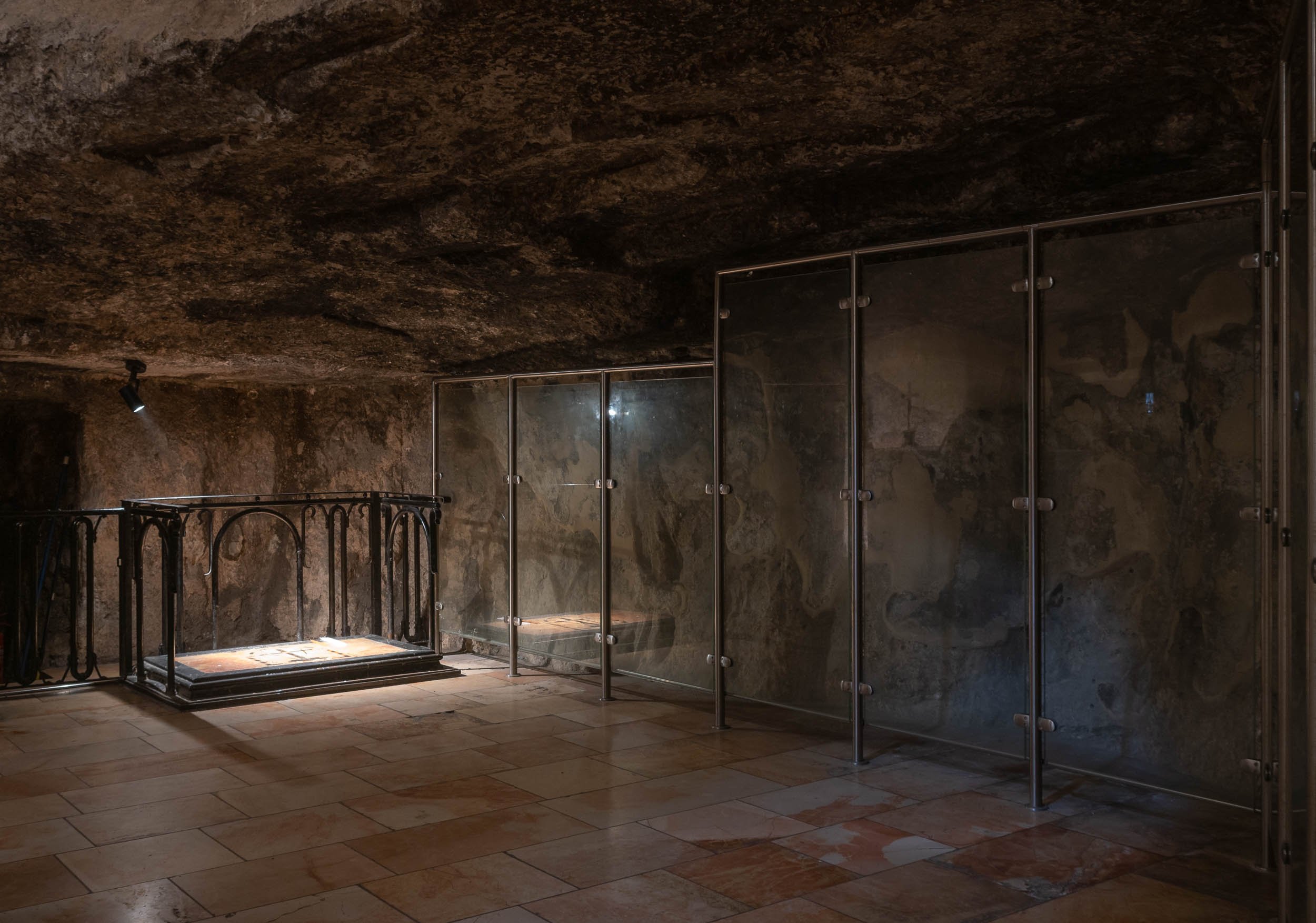
Chapel of the Invention of the Holy Cross
Far down the church into the lower section, past the Chapel of St Helena, is the spot where the "True Cross" was allegedly found - the cross Jesus was crucified upon.
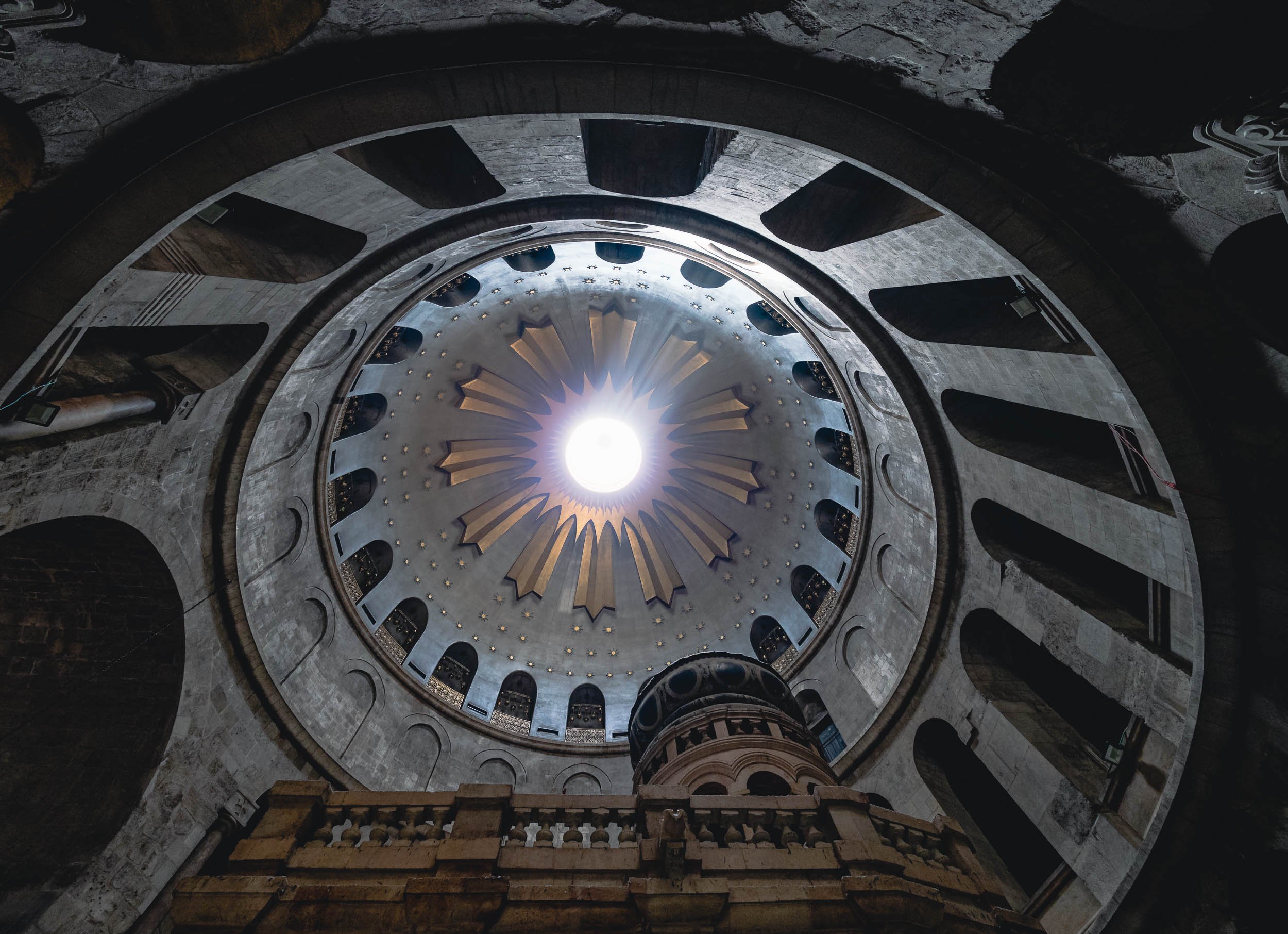
The Rotunda
The most significant section of the church is the Aedicule, said to hold Jesus' (empty) tomb and a part of the stone that covered it.
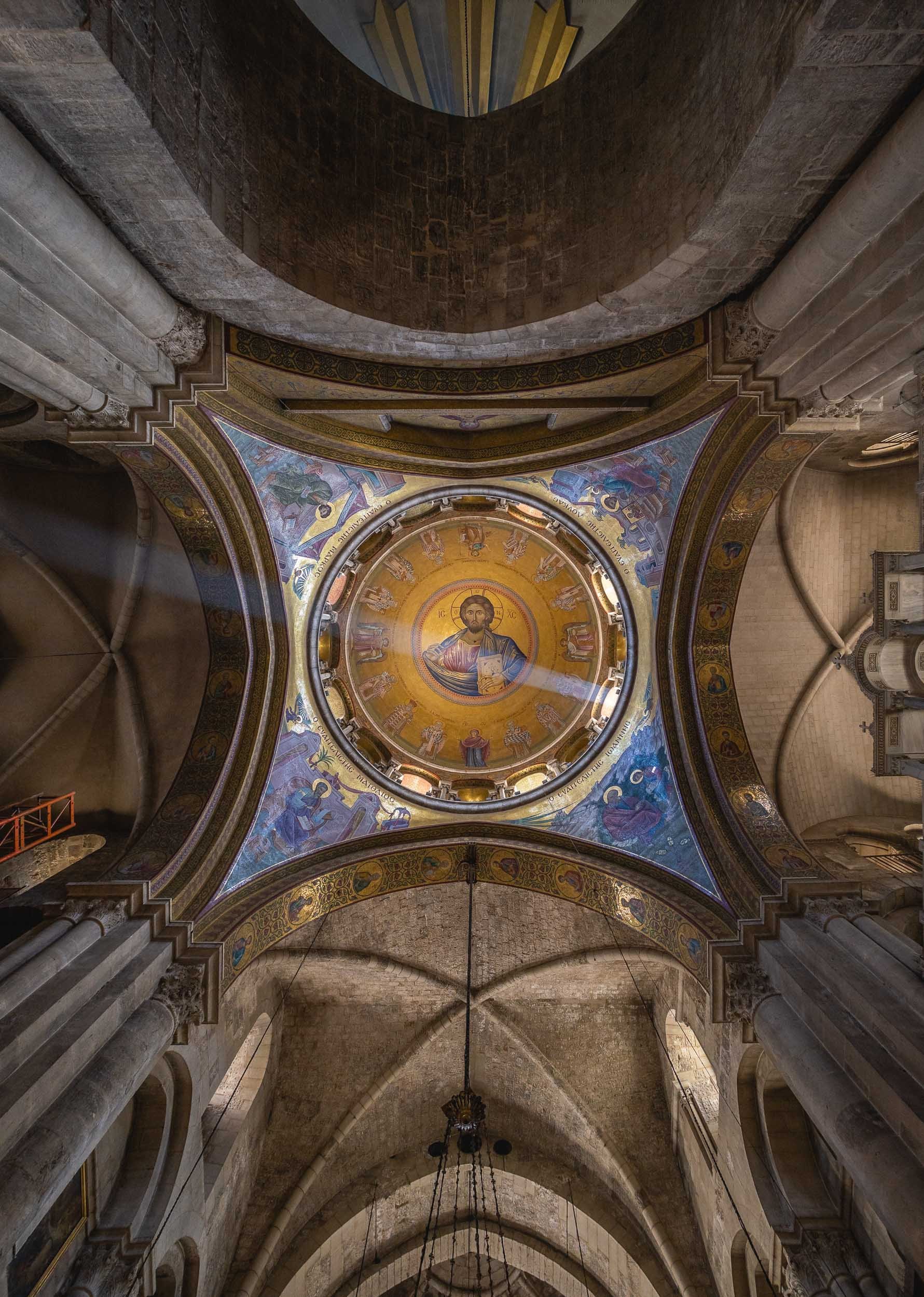
Looking Up
The Christ Pantocrator mosaic inside the catholicon dome.
Dominus Flevit & Its View
This church on the western slopes of Mount of Olives offers a beautiful view of the Old City, and a particularly special one from the interior of the church.
Its unique aspect is the western facing altar, which is unusual for Christian churches. It was built this way to offer the view Jesus was said to have had when he wept while predicting the impending destruction of Jerusalem.
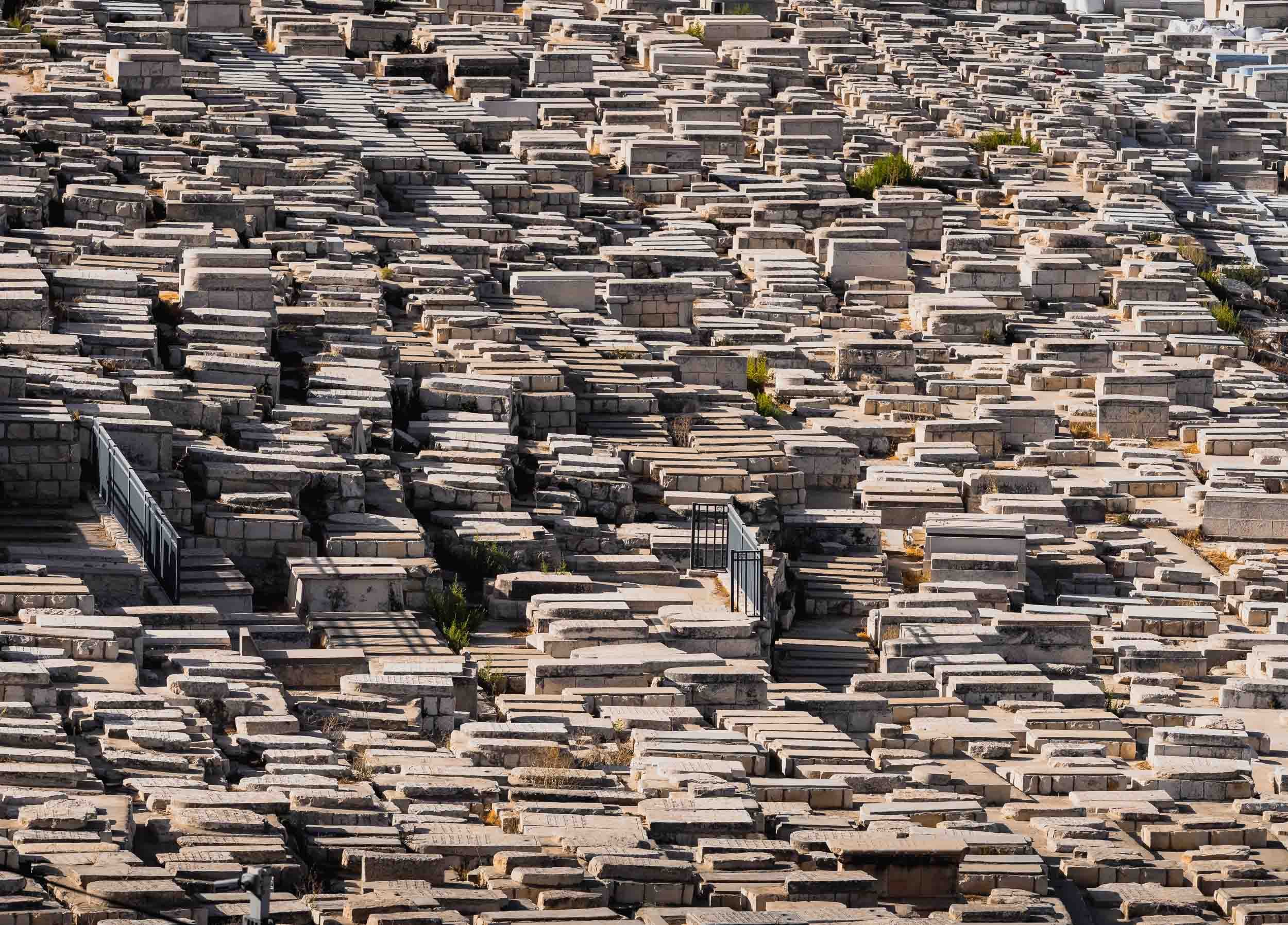
Tombs
The Jewish cemetary east of the Old City, on the hills of the Mount of Olives.
The Western Wall - A Small Piece of the Puzzle
The holiest Jewish site in the Old City is the Western Wall, often known as the Wailing wall. It sits on the west of the Temple Mount compound, and contains the exposed parts of the leftovers of the Second Jewish Temple.
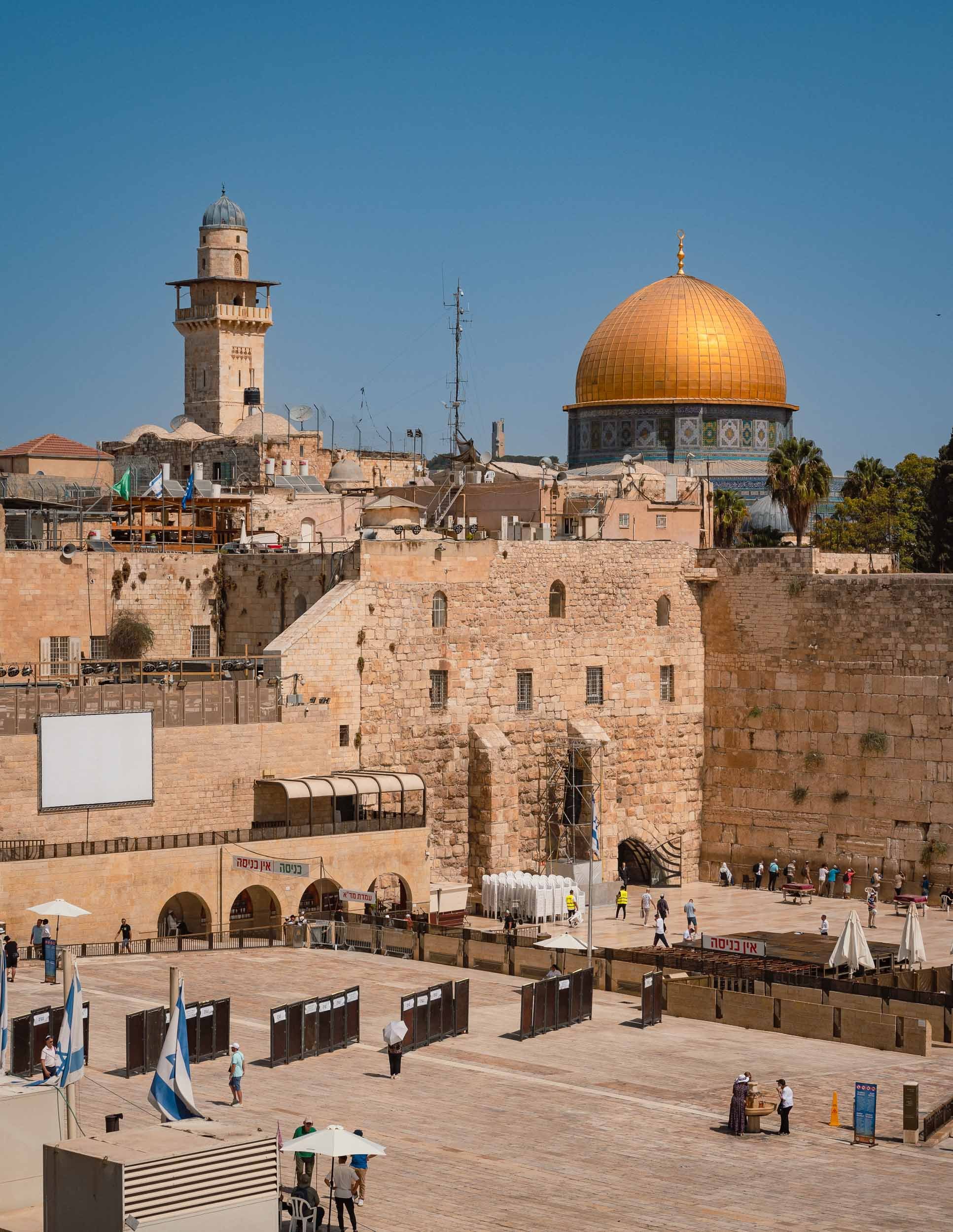
Western Wall
The wall to the right side, with the Dome of the Rock in the background and the entrance to the northern tunnel at the bottom.
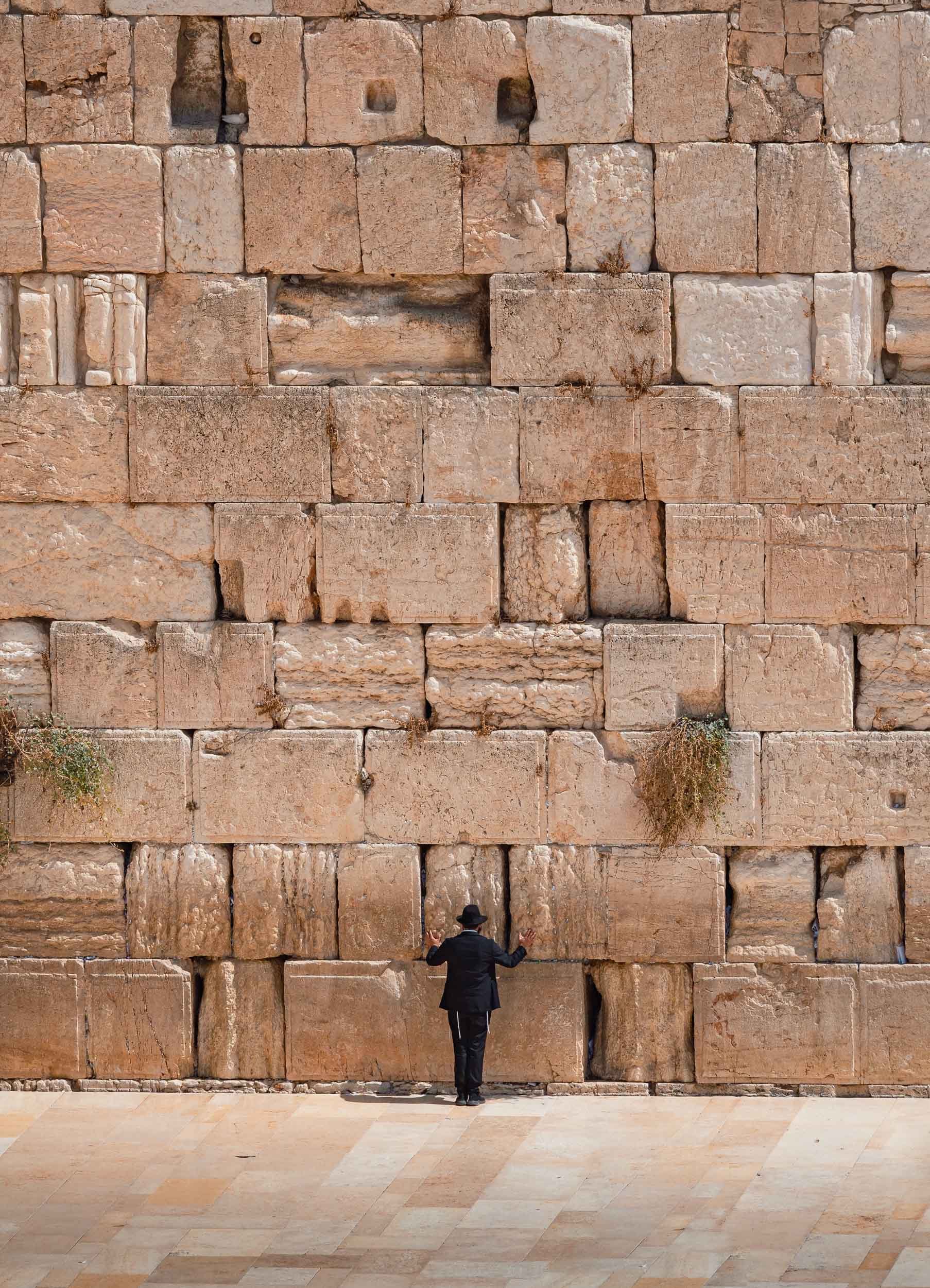
The Western Wall
A lesser known fact is that the wall contains a huge 520 ton stone, hidden from view in the tunnel.

Prayer Notes
It's common to slip written prayers to God into the cracks of the wall. This was actually taken at the so-called "Little Wall", another exposed bit further north and accessible to anyone.
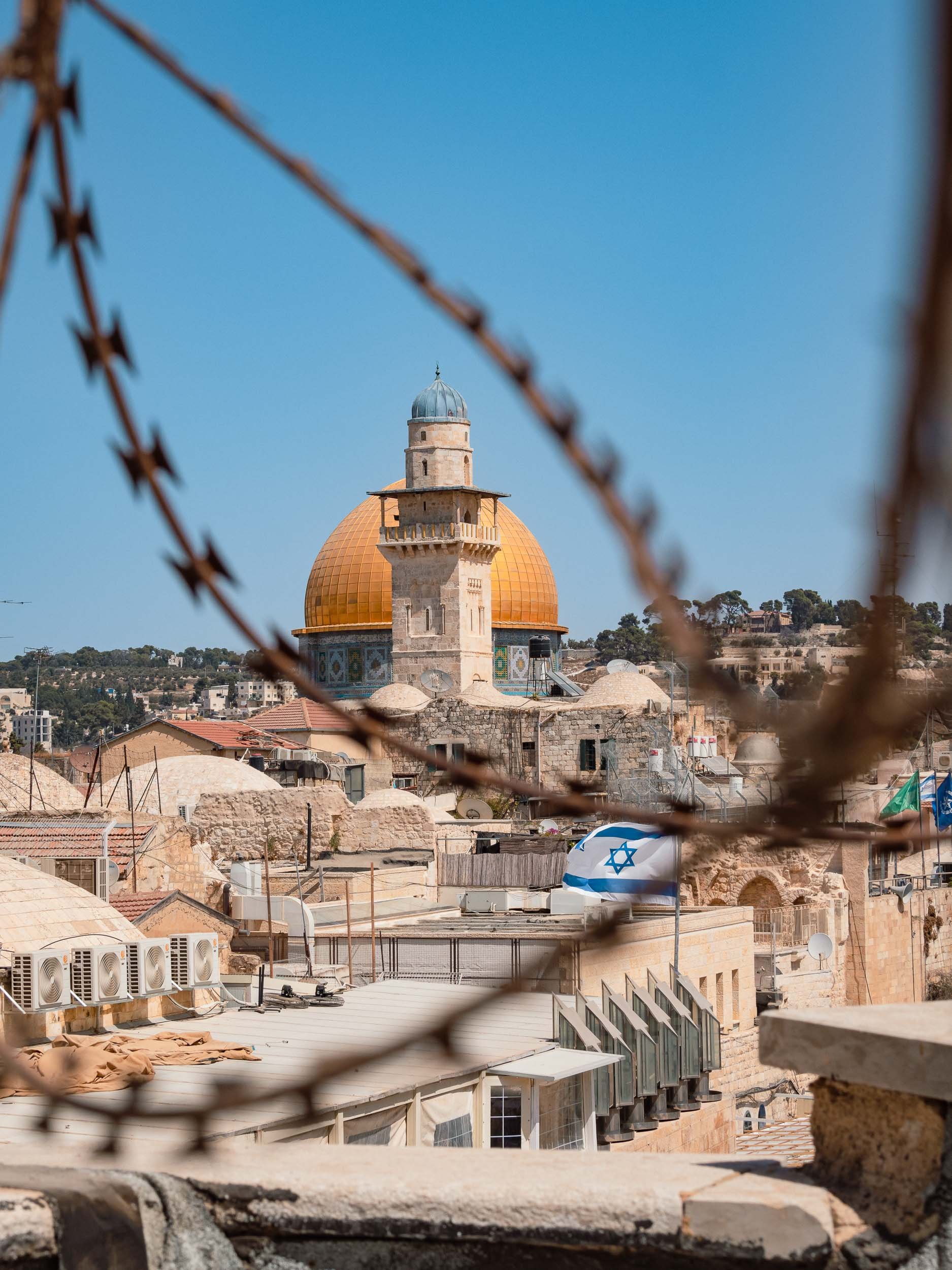
Symbolic
While the Status Quo regulates the cooperation of all relevant religious bodies making claims to the various sites, their joint presence is an ever tense subject full of distrust.
Dome of the Rock - The World's Oldest Surviving Work of Islamic Architecture
In the east of the Old City, on the Temple Mount, lies this another World Heritage Site, built in 688. While primarily an Islamic shrine today, it holds significance for all Abrahamic religions as the location of the Foundation Stone, the place where God created the earth and the first human.
In 1993, the golden dome covering was refurbished with funds provided by the King of Jordan - the country appointed the Waqf (trust) that is in charge of managing the site.
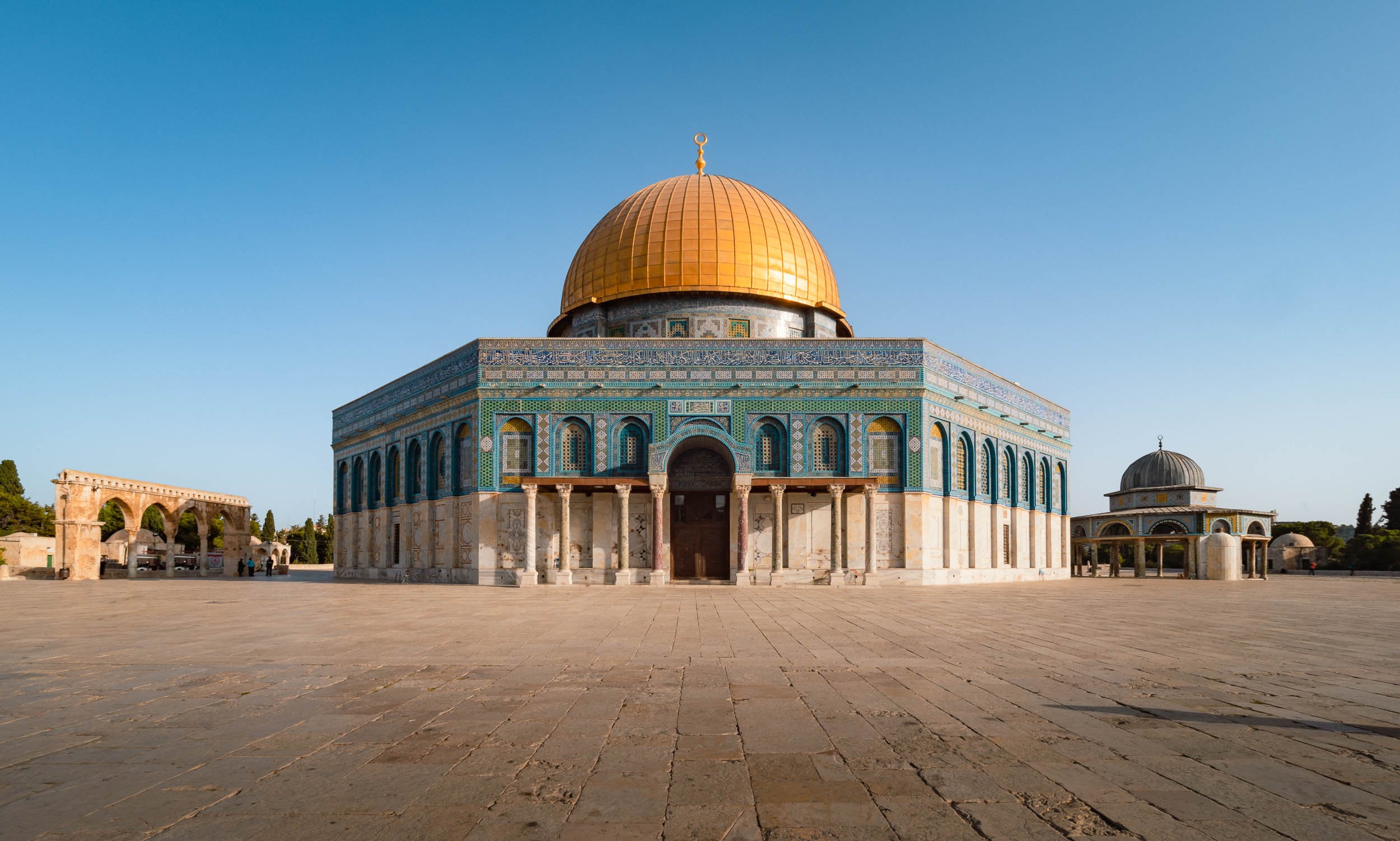
Exterior
The building's inscriptions contain the earliest proclamations of Islam and its prophet Muhammad.
Take a Walk Around
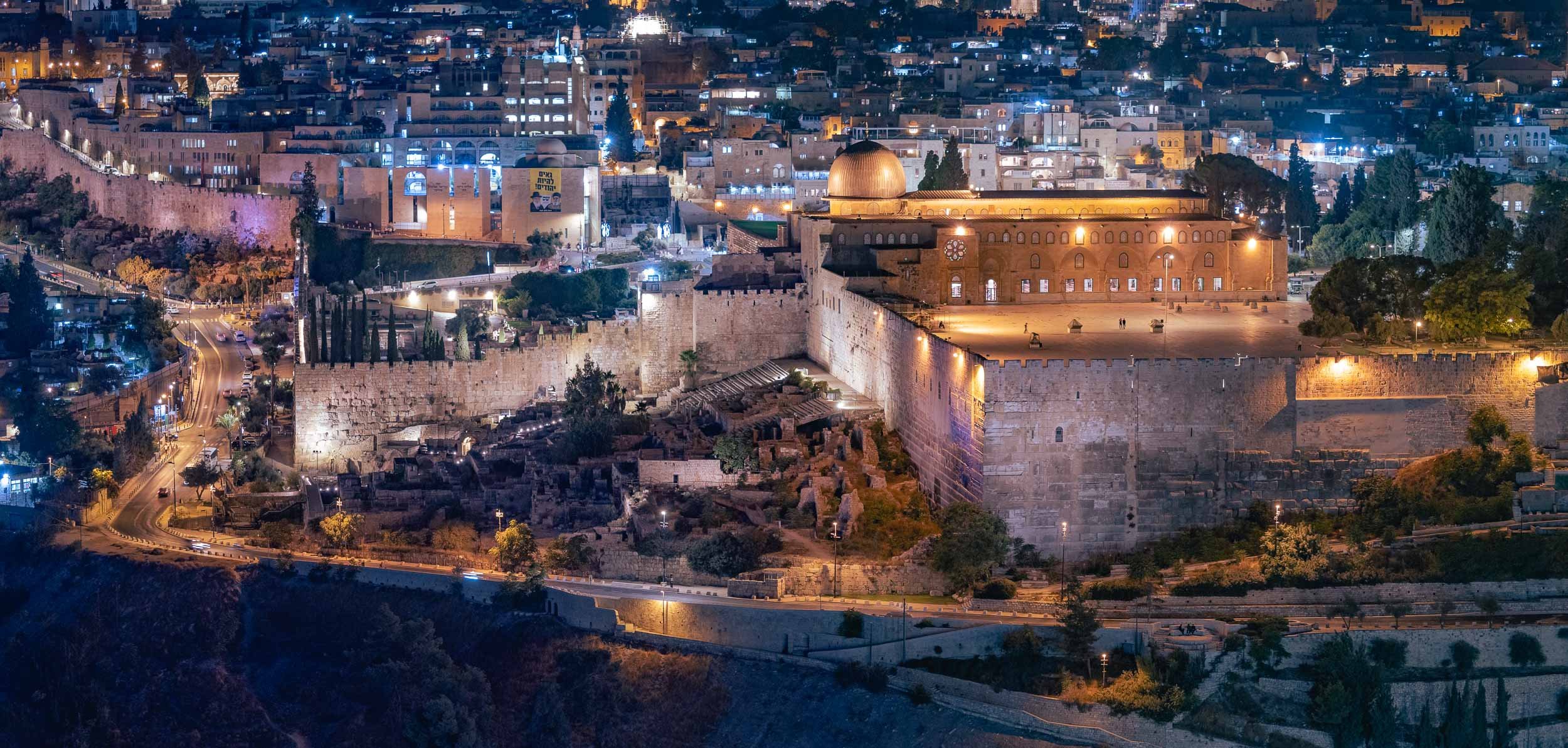
Al Aqsa Mosque
The third holiest site for Muslims sits on the Temple Mount just next to the Dome of The Rock.

Blue Hour
A nightly view from the Mount of Olives on the eastern side of the city.
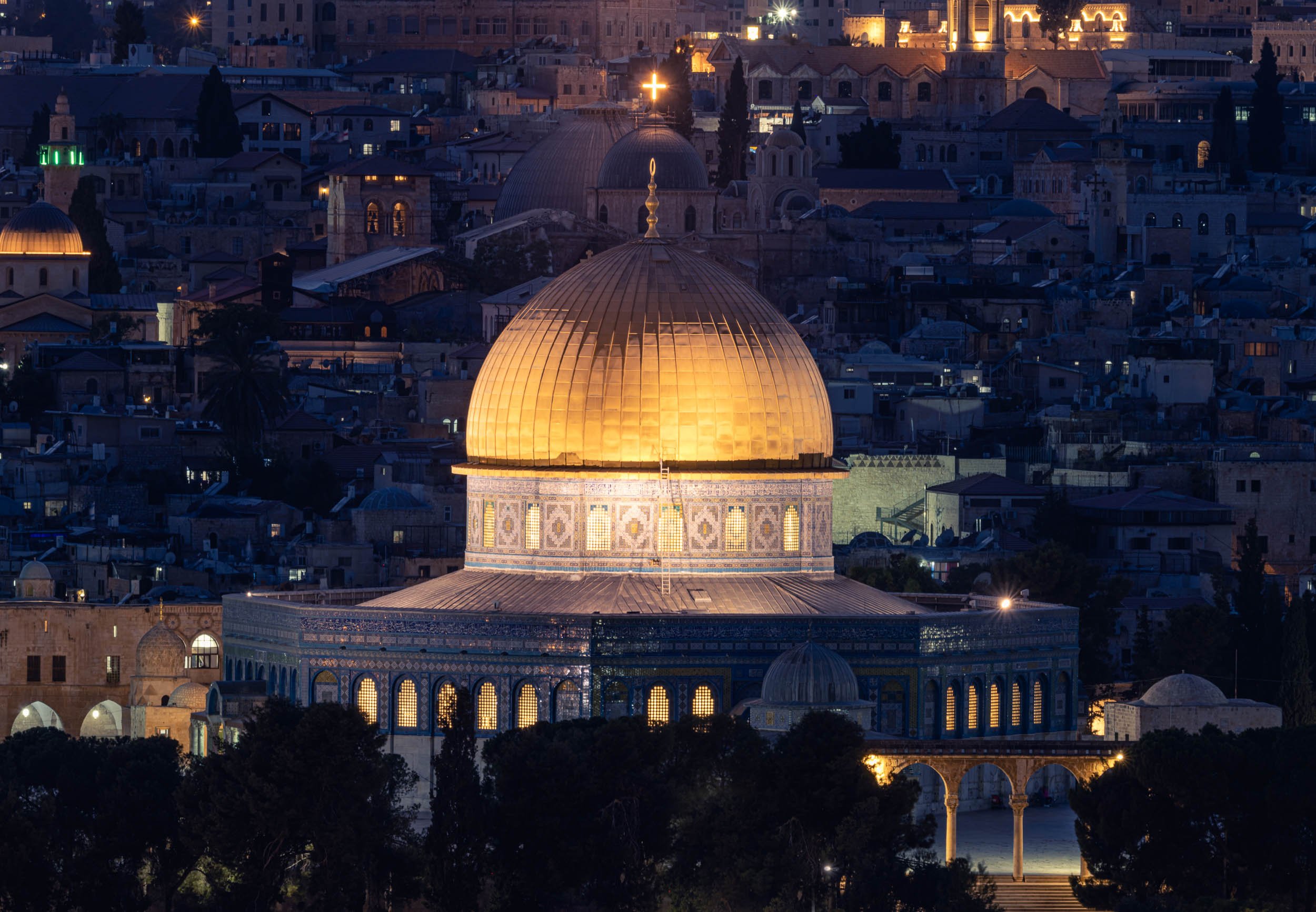
Religious Alignment...
.. is hard to find, but sometimes you can catch it.
Street Scenes of the Old City
It’s an endless endeavor to cover all the alleys, corners, roofs and small shops in the quarters.
If you’re in need for some souvenirs, there are plenty of questionable options.
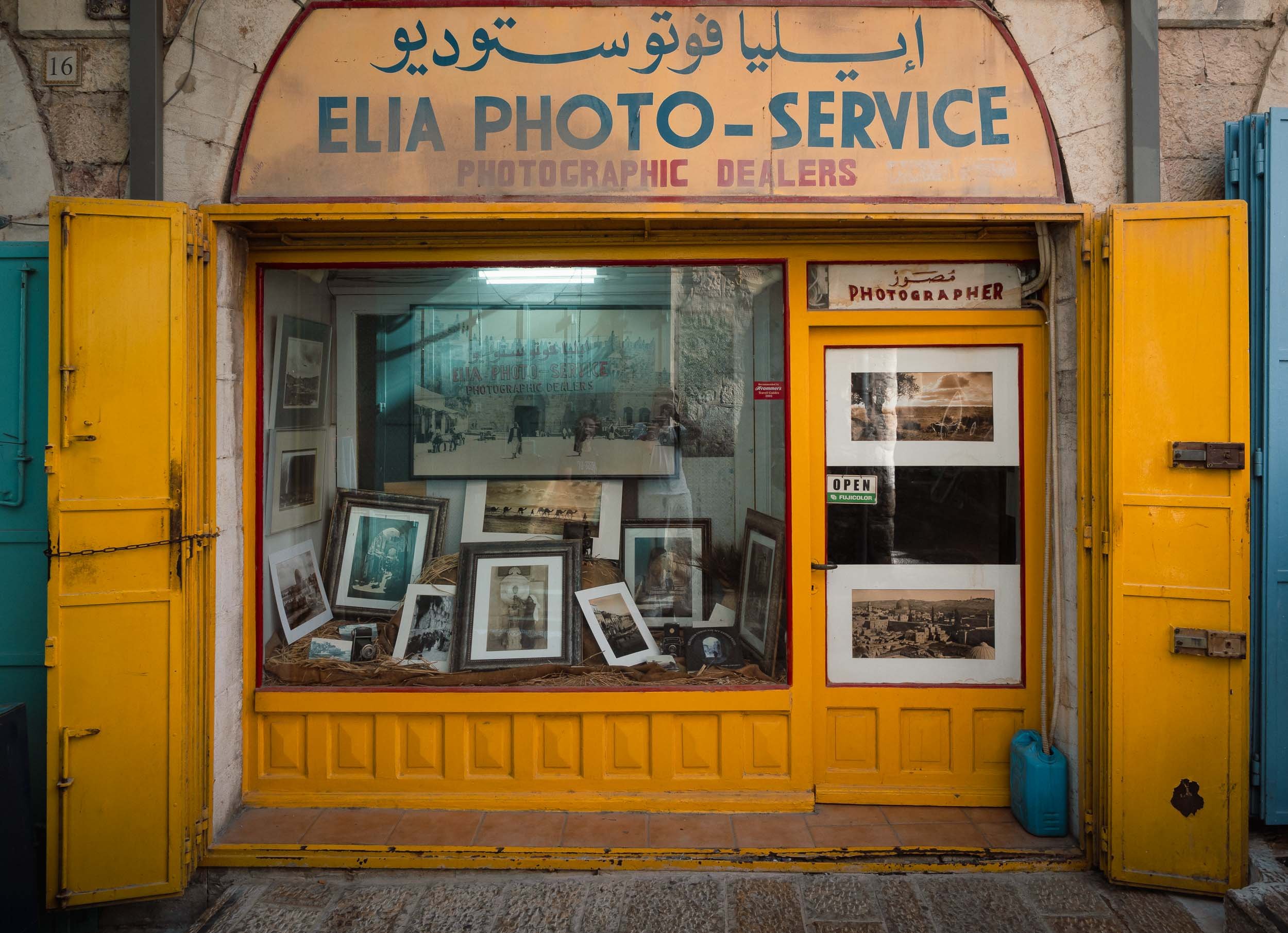
Historic Photographs
This shop had a few interesting old photographs showing the changing face of the city.
The Pool of Arches in Ramla
The last stop on the way back to Tel Aviv was this rather curious place, a 1200 year old underground reservoir.
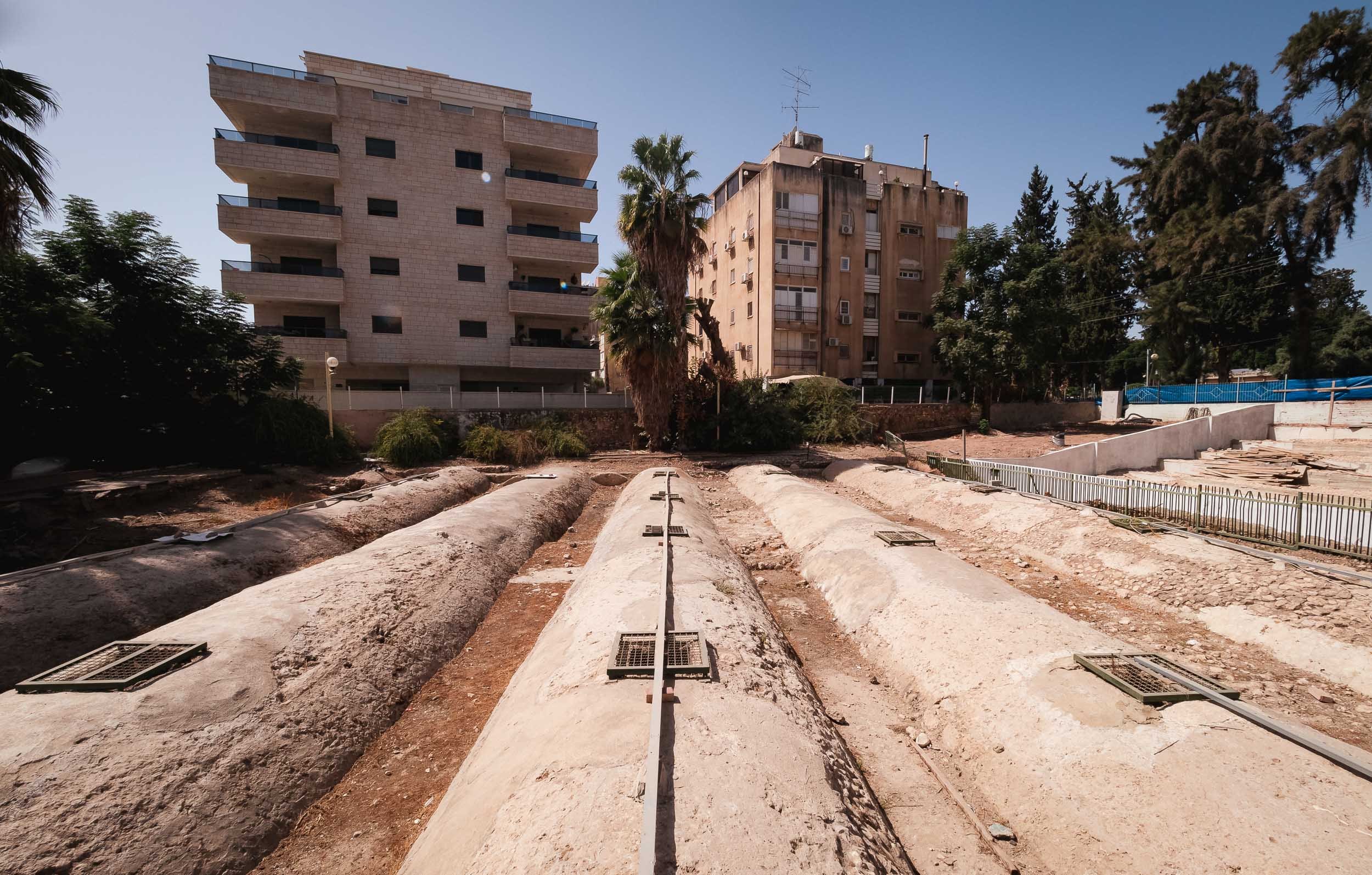
From Above Ground
The reservoir is located underneath this rather inconspicious plot of land.
Once you descend down the stairs, you get to see the 20m x 20m basin, which is said to overflow in winter times, and rent a small boat to row around the stone columns carrying the roof.
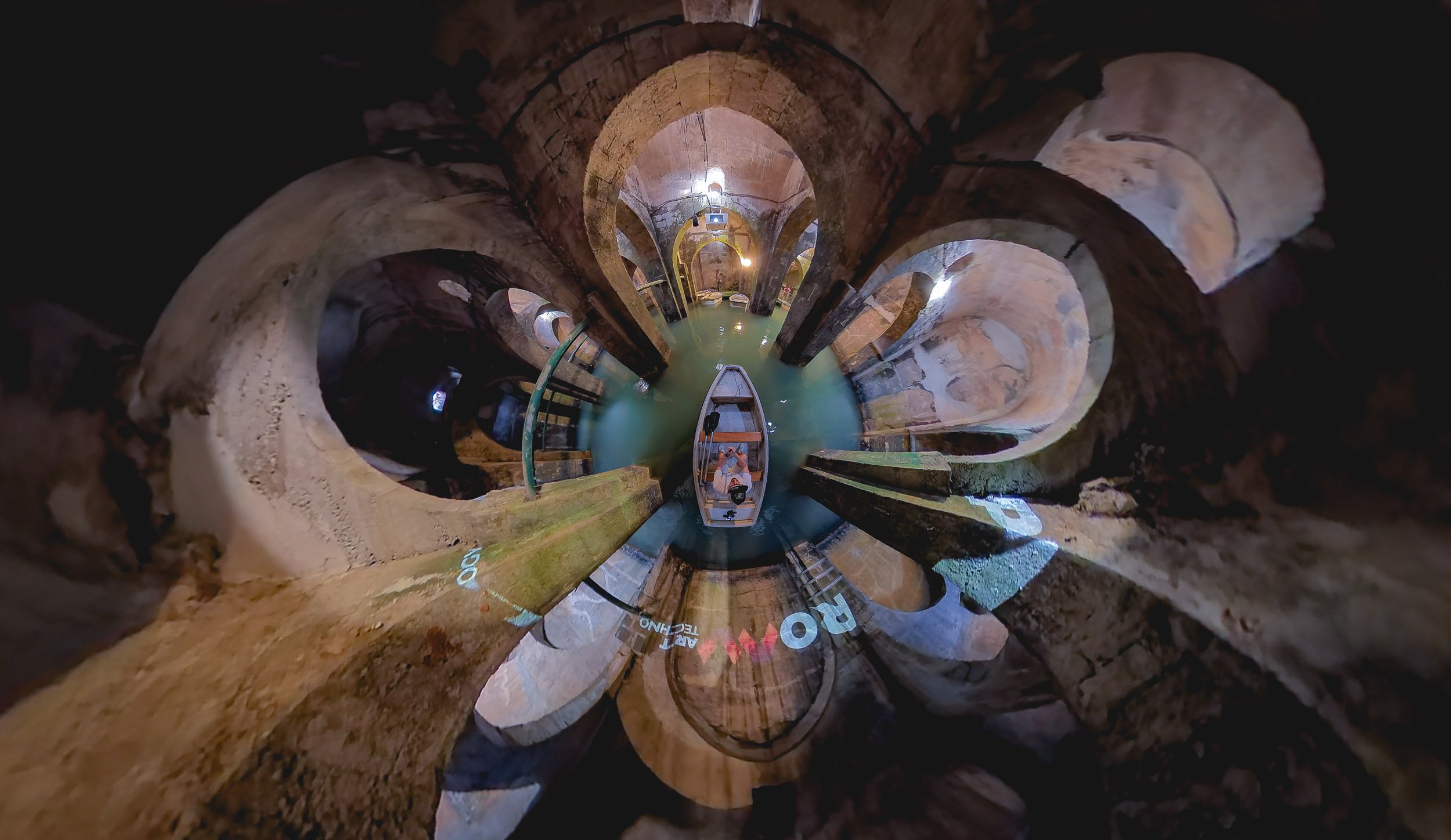
360 View
A small installation projects art onto one of the walls.
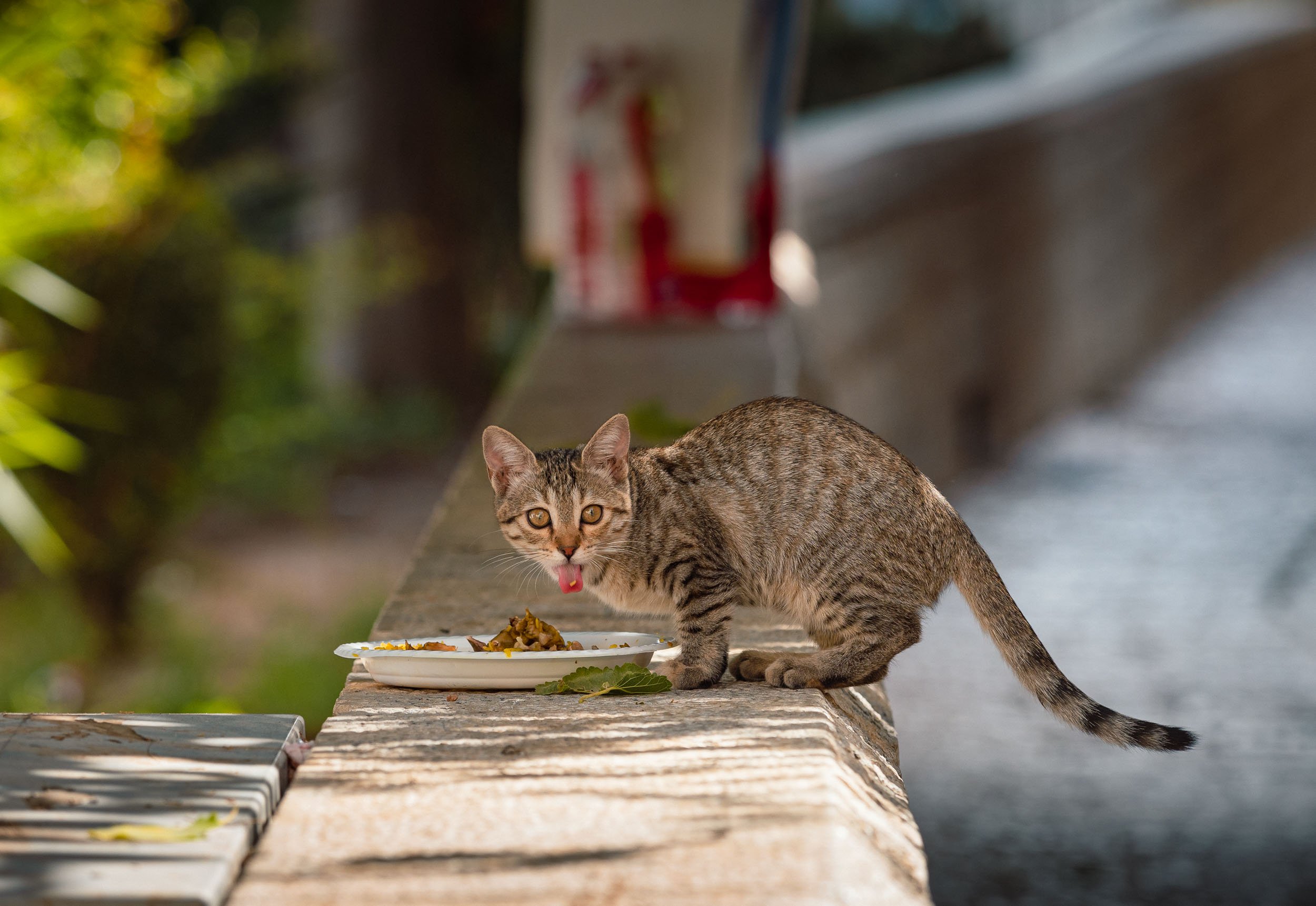
This region still has a lot more to offer, and is another part of the world that I want to go back to, but for now those were my first glimpses into one of the most historically significant parts of the world.
Oman - 7 Days of Authentic Beauty
From Dubai to Muscat and along the coast - an amazing journey of natural beauty, history, architecture, geology and kind people.

In February 2022 I had plans for a trip to India’s Himalayas, with the goal to take photos of the elusive snow leopard. Owing to various Covid restrictions, this idea unfortunately did not materialize, so it was time to look for another destination. One obvious choice was to look no further than a few hundred kilometers towards the Indian Ocean: Oman. Even though I’ve lived in the UAE on / off for 15 years, so far I had only seen the Musandam part of our neighbor country, and had yet to explore its mountain areas, the coastline, and the capital Muscat.
And oh boy did I miss out! The amount of landscapes, history, people, architecture, and activities you can encounter in just a week, all accessible with easy visa regulations (if you’re a GCC resident especially) and within a few hours drive from Dubai, is incredible.
The route took us through the border near Al Ain towards Nizwa, with several stops on the way, before heading up Jebel Akhdar for a couple of nights. From there, onwards to Muscat to explore the city and its surrounding areas, and a day trip southwards along the coast almost until Sur (but not quite) was on the agenda.
Read on to find out about the sights and experiences on the way…

Hajar Colours
The Hajar mountains feature an amazing variety of colours and shades, and their geological significance has been recognised globally - it makes the 6h drive towards Muscat all the more pleasing.
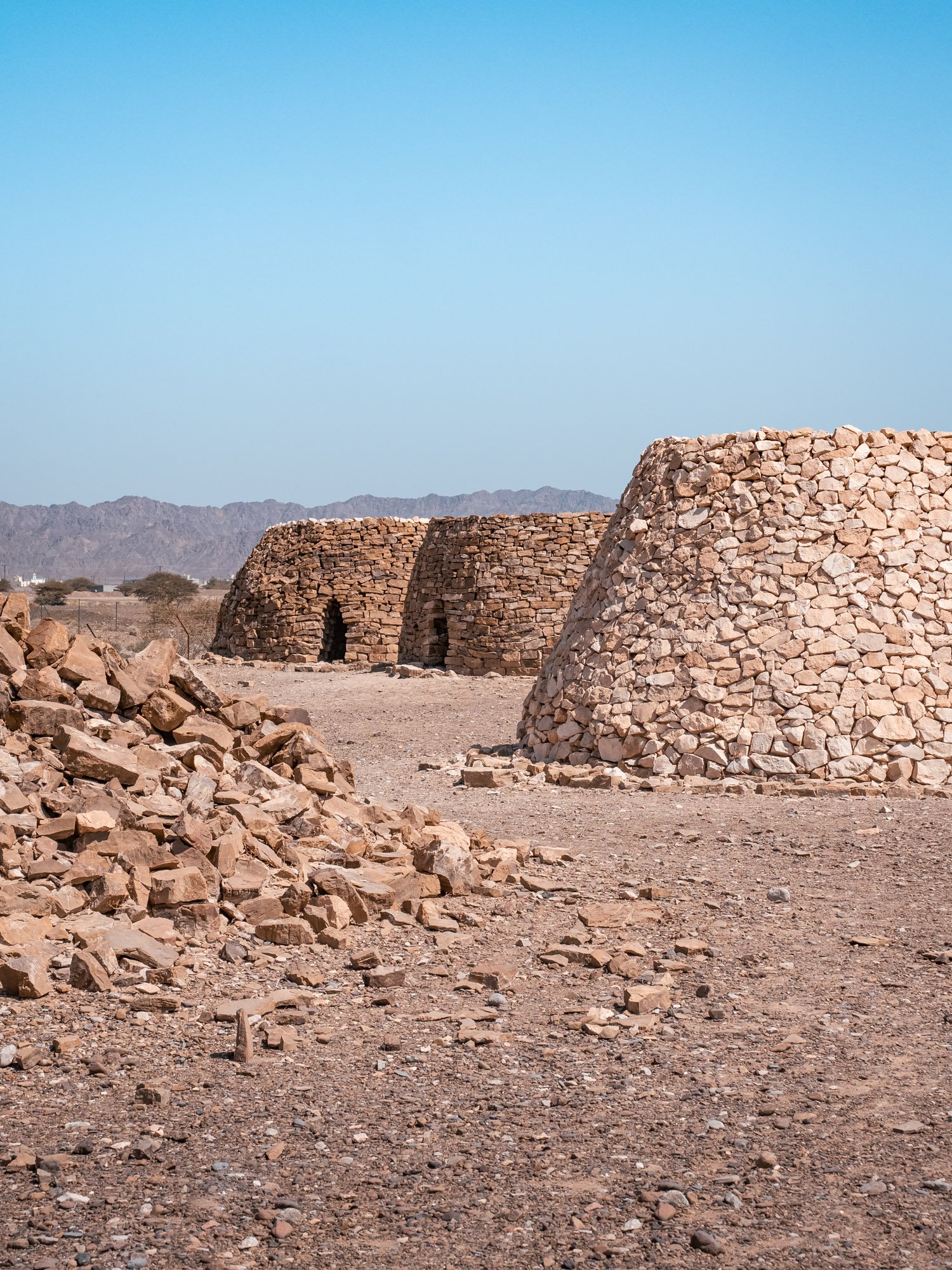
Beehive Tombs of Bat
Our first stop were the Beehive tombs of Bat, which are between 4000-5000 years old.
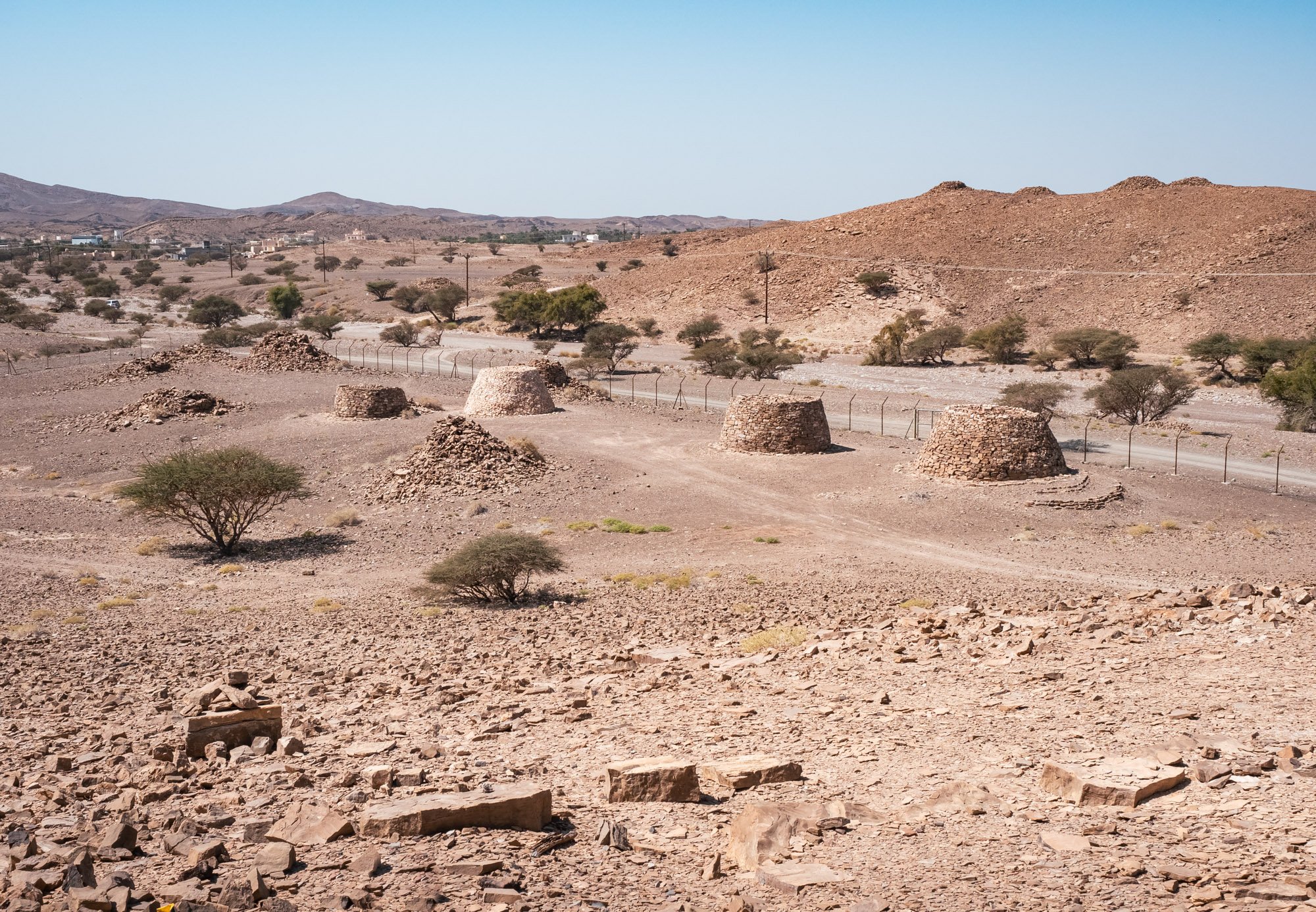
Unesco World Heritage Site
Together with their sister sites in the same region, they form one of the largest protohistoric necropoleis in the world.
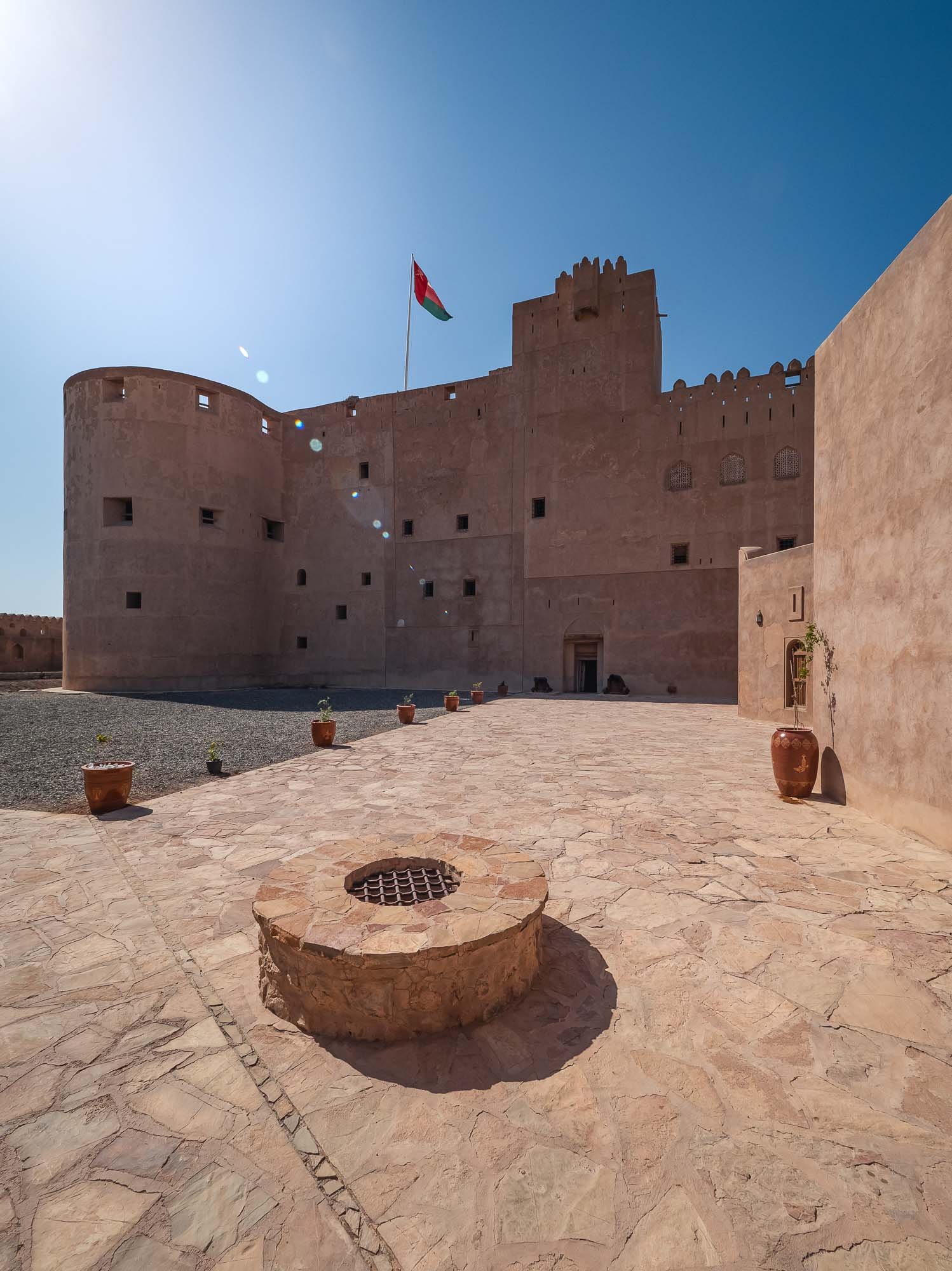
Jabreen Castle
A little further towards Nizwa awaits one of the many castles and forts in the region.
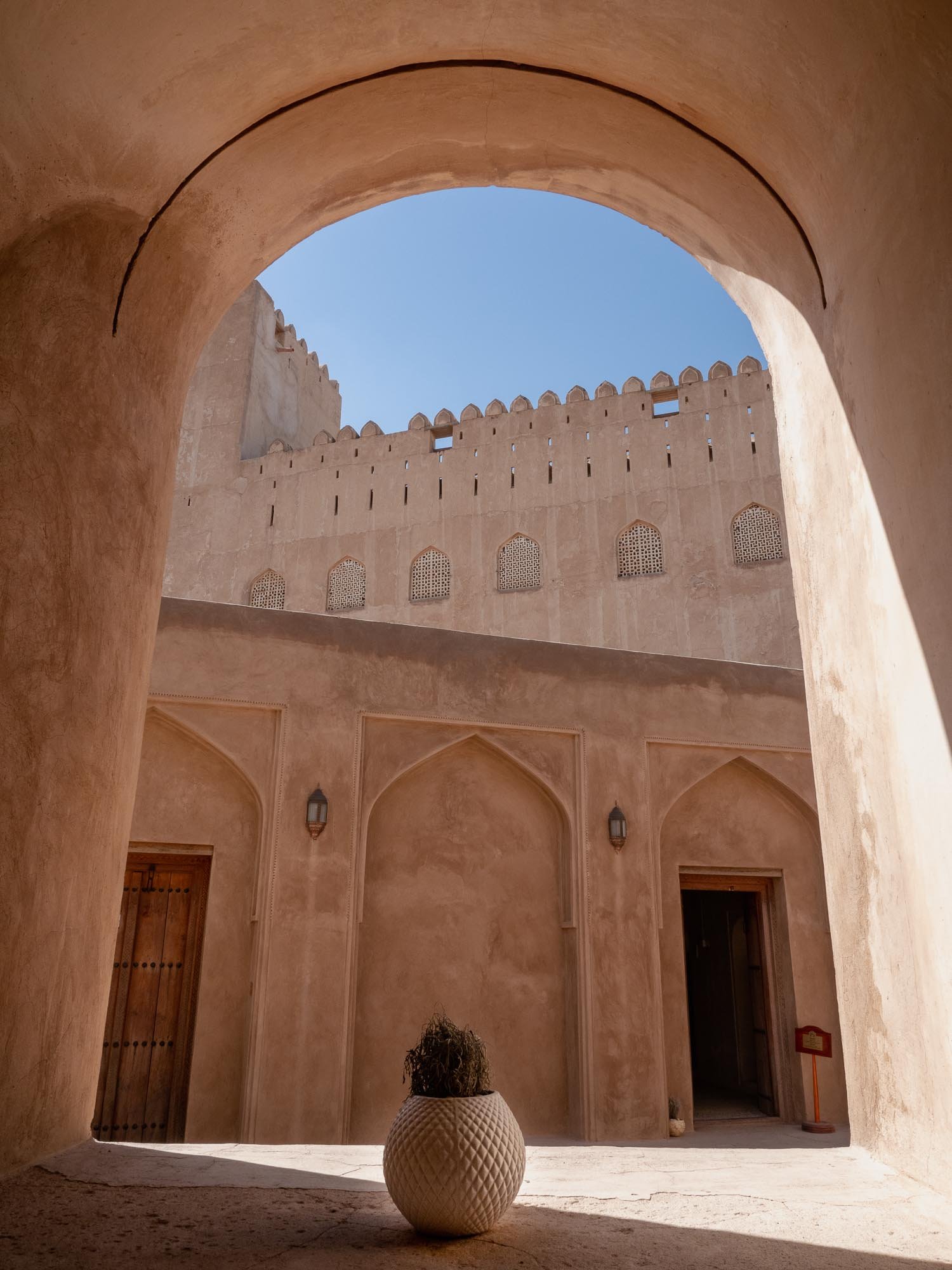
Shapes
This one was arguably my favourite - which says a lot, given the number of forts and castles on this route.
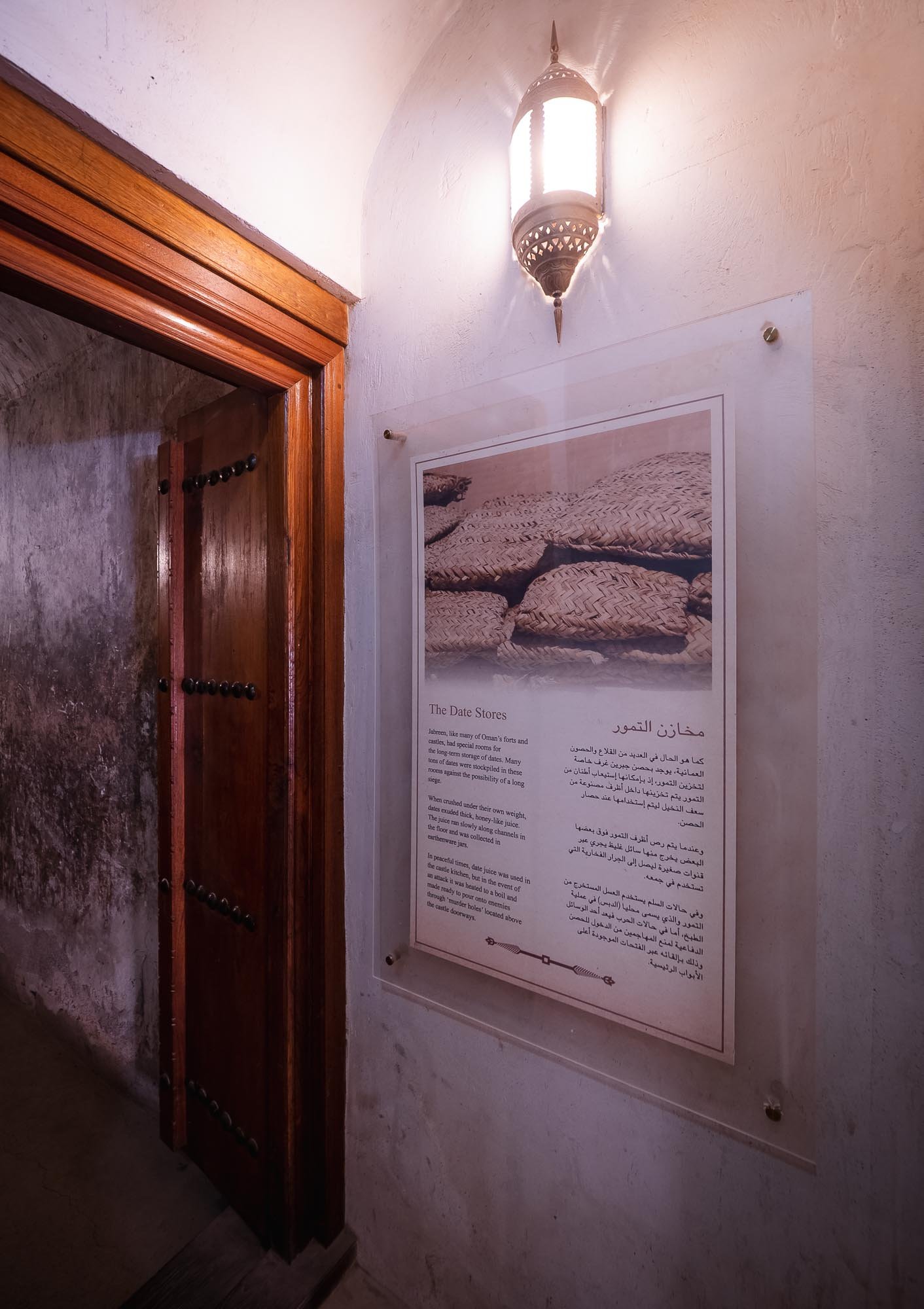
Date Storage
... along with some interesting uses in war times. The castles and forts in Oman feature some clever defense mechanisms you will encounter when exploring them.
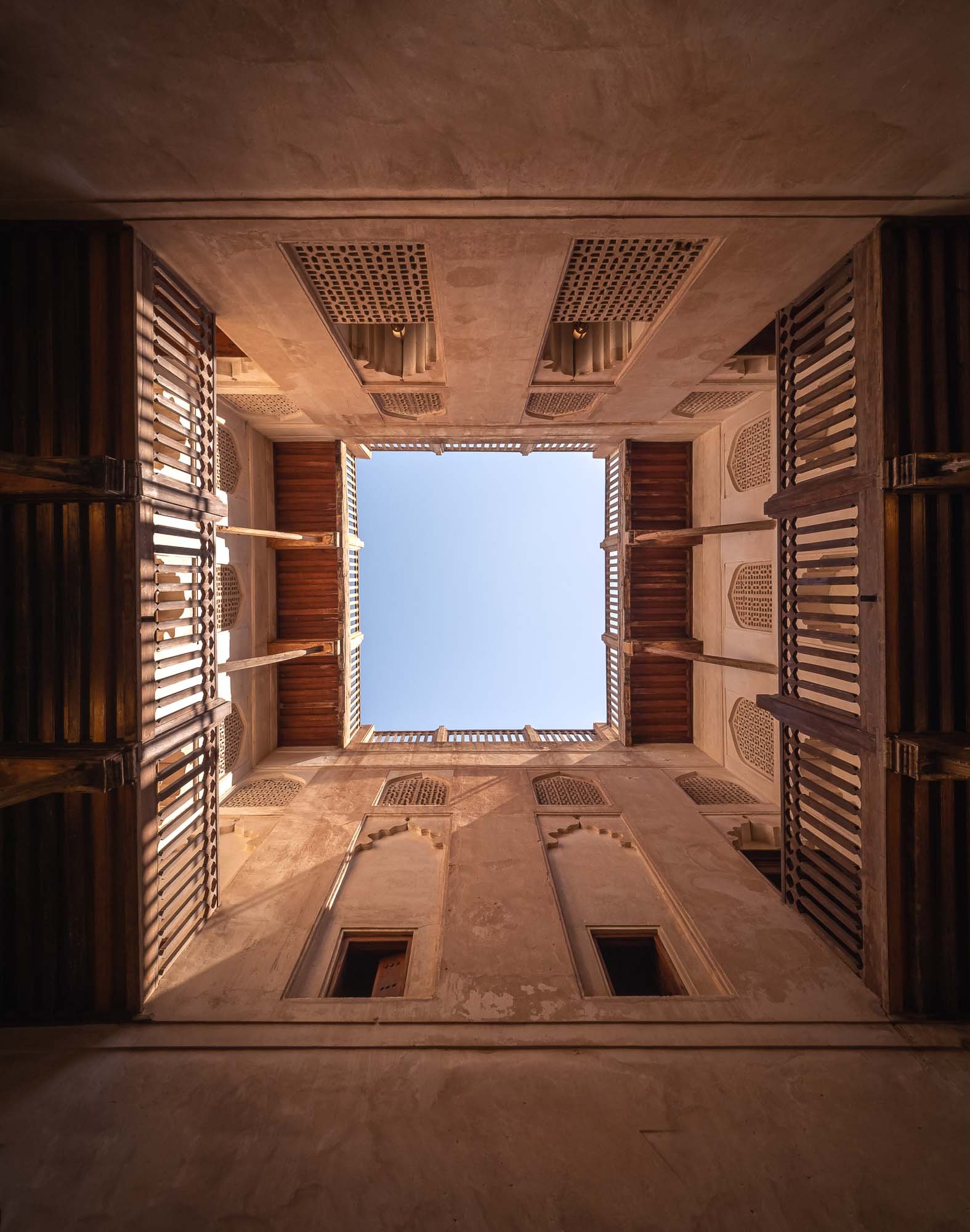
Courtyard
One of the two major courtyards in the castle - this one had its original wooden balconies restored.
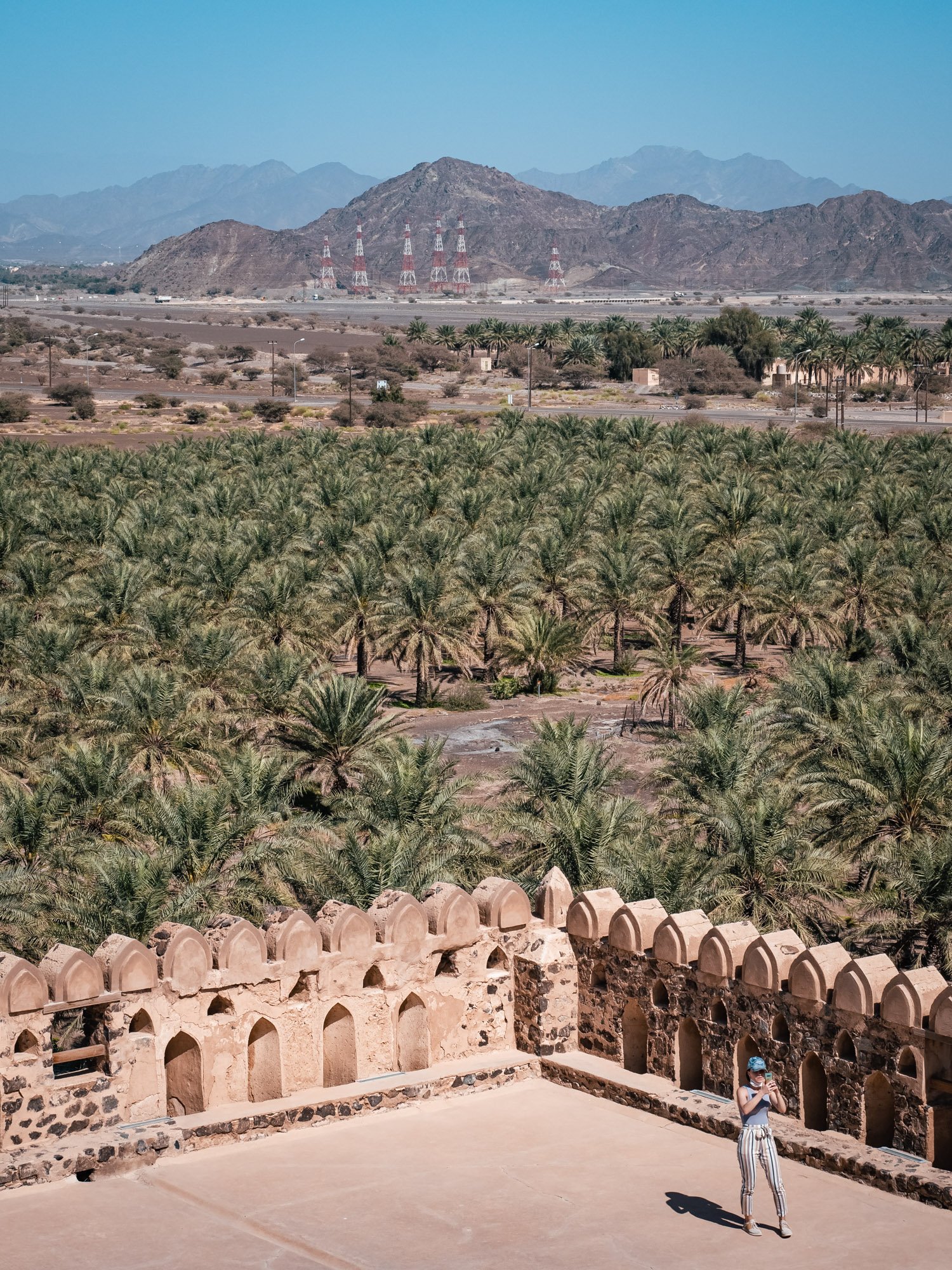
Green surroundings
As with most of the cities in this basin of the Hajar mountains, farms and date palms can be found everywhere.
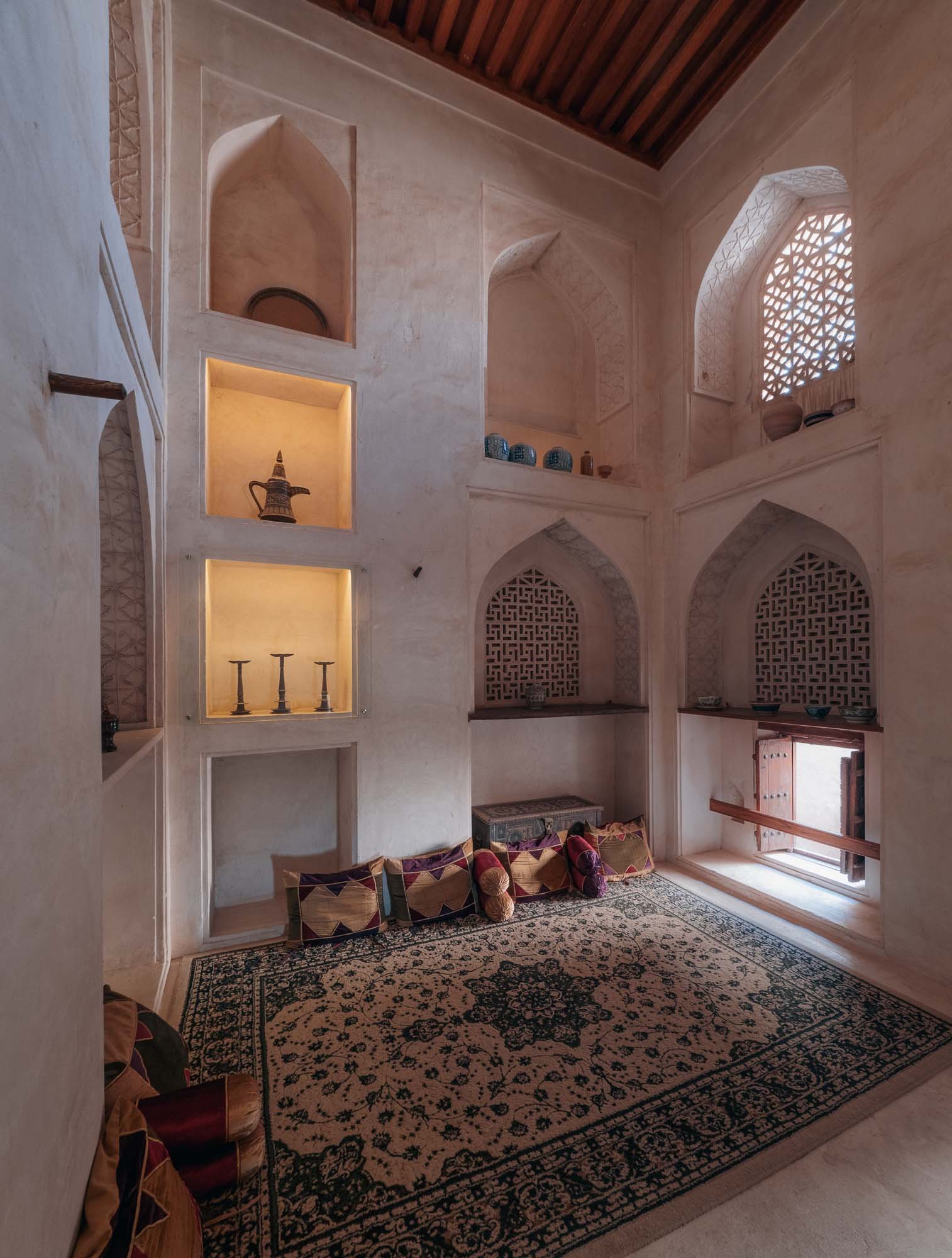
Interior
Some of the rooms have been restored and decorated.
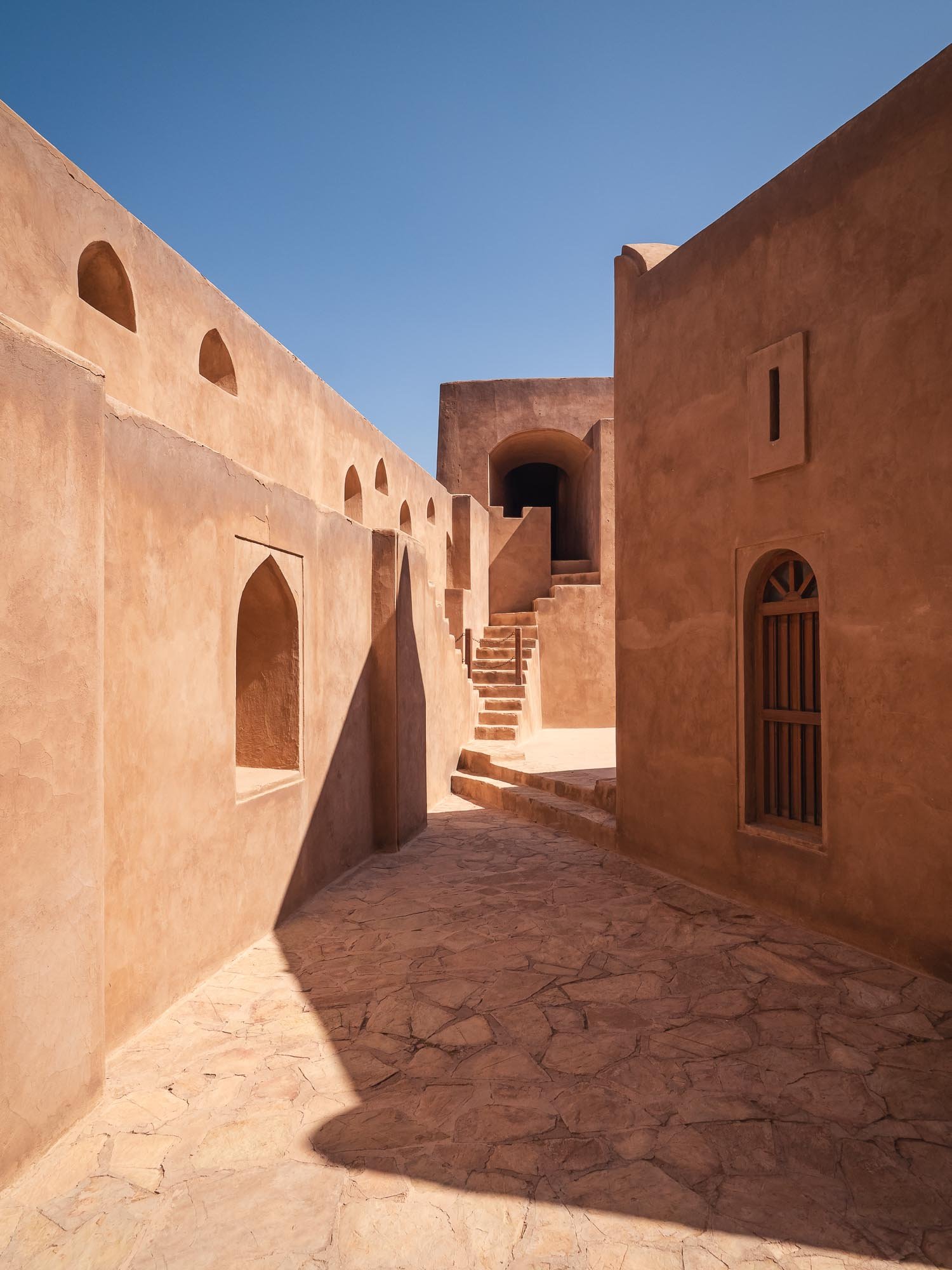
Warm Colours
hiding some of the cruel past of these forts.
Next up, we had planned to visit the ruins of Salut fort, another important archeological site in the area, but were disappointed to find it is currently closed and under development. Check before you go - and avoid getting a flat tire like we did.
Bahla Fort
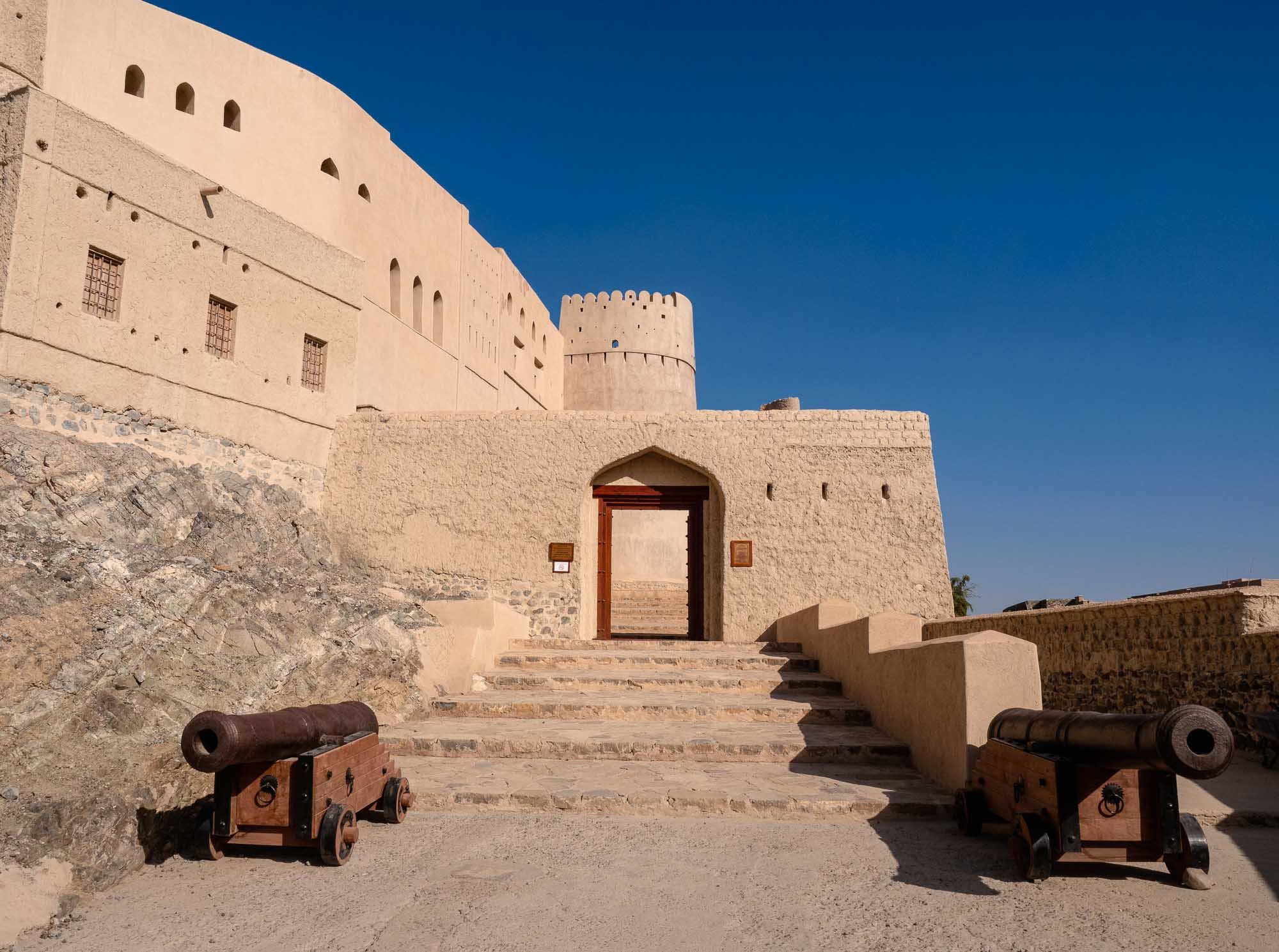
Bahla Fort
We then made it to Bahla Fort, the country's only UNESCO-listed fort, added in 1987.
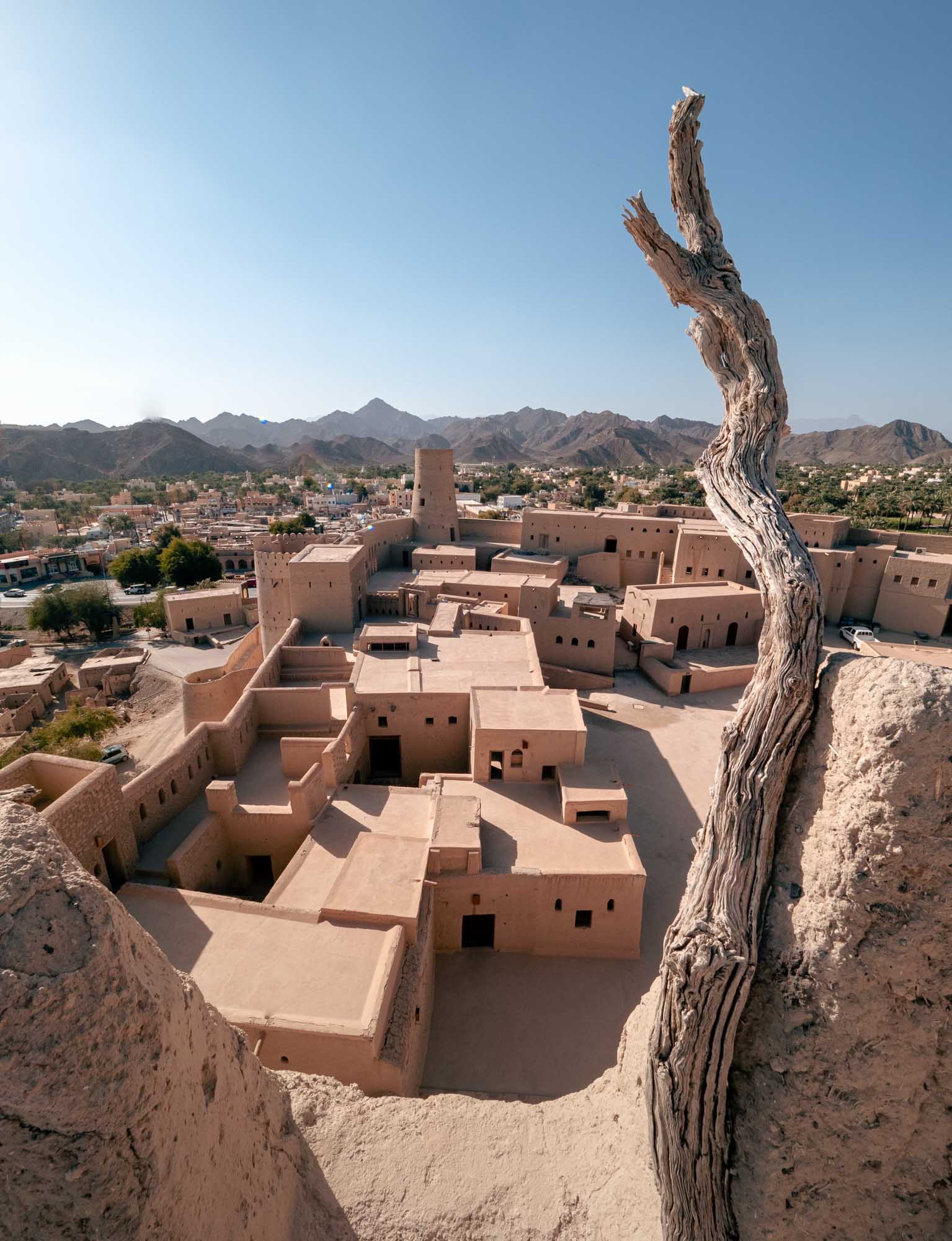
Haunted?
This fort is also the subject of many tales of djinns and black magic.
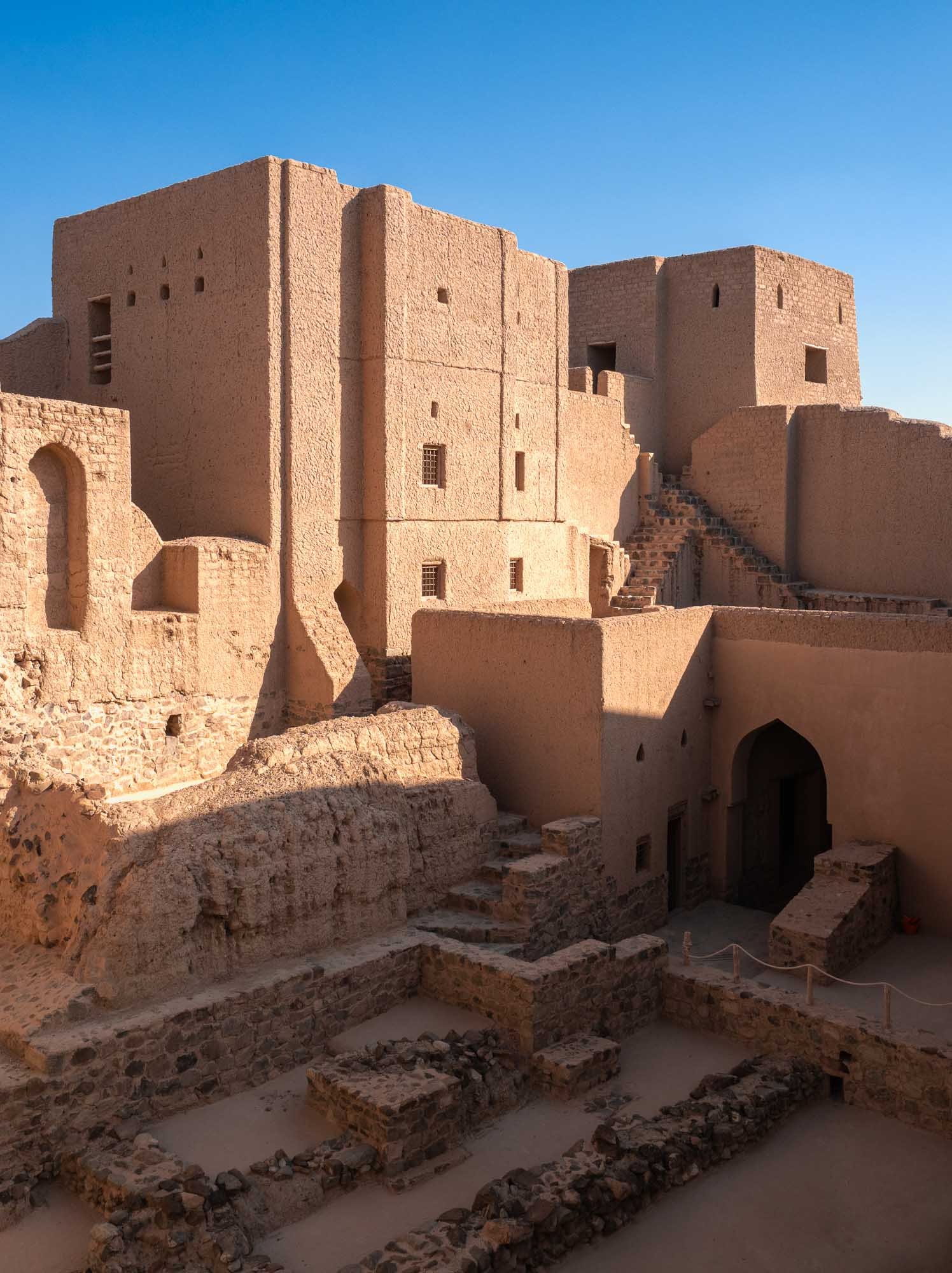
The Real World
We only encountered beautiful architecture and a cat though (not pictured).

Complex
The fort is part of a bigger settlement, including a 13km wall, pieces of which you can still spot in the mountains surrounding it.
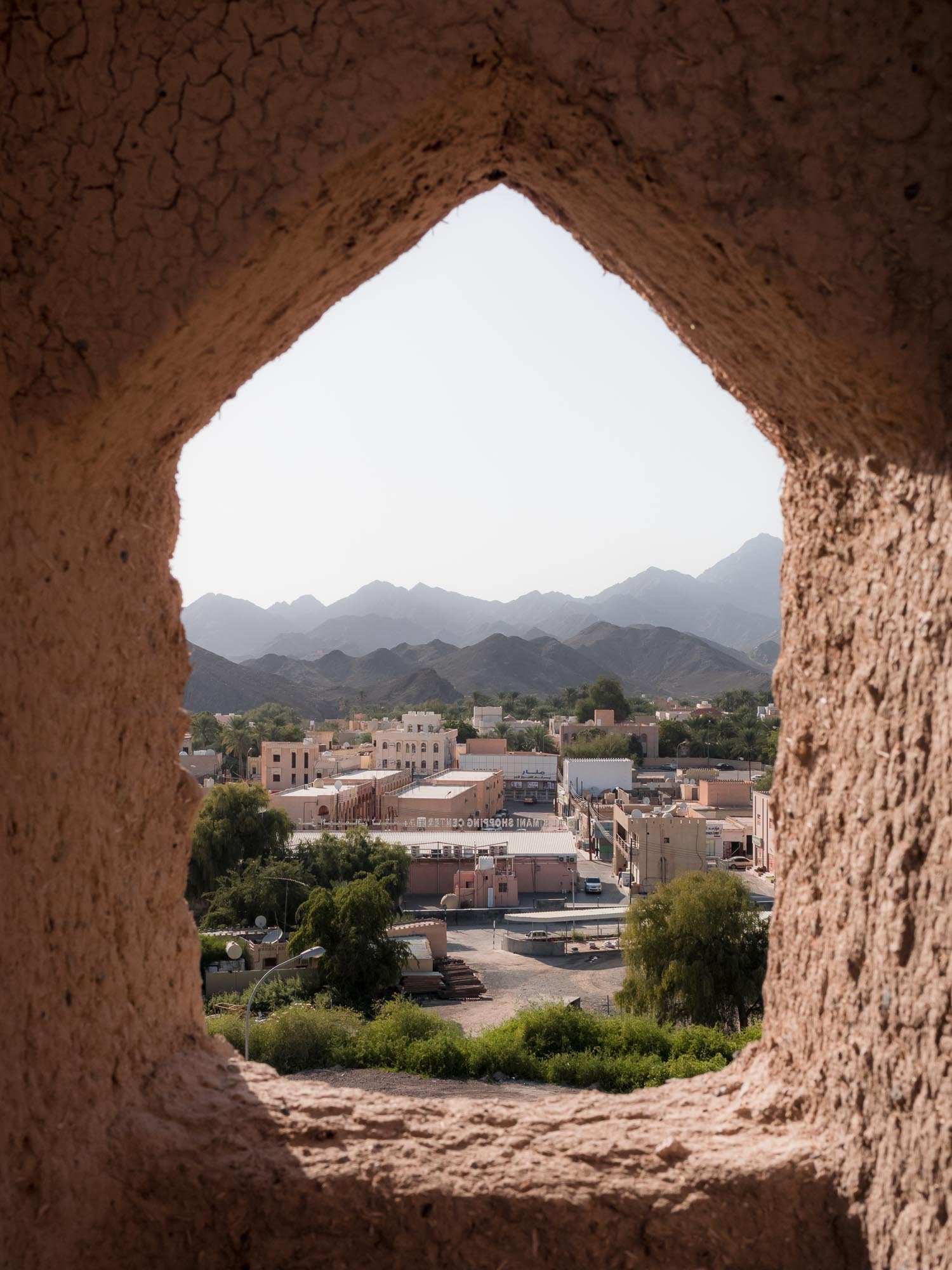
Views
As with all the forts in the area, this one also features beautiful Hajar mountain scenery from its windows.
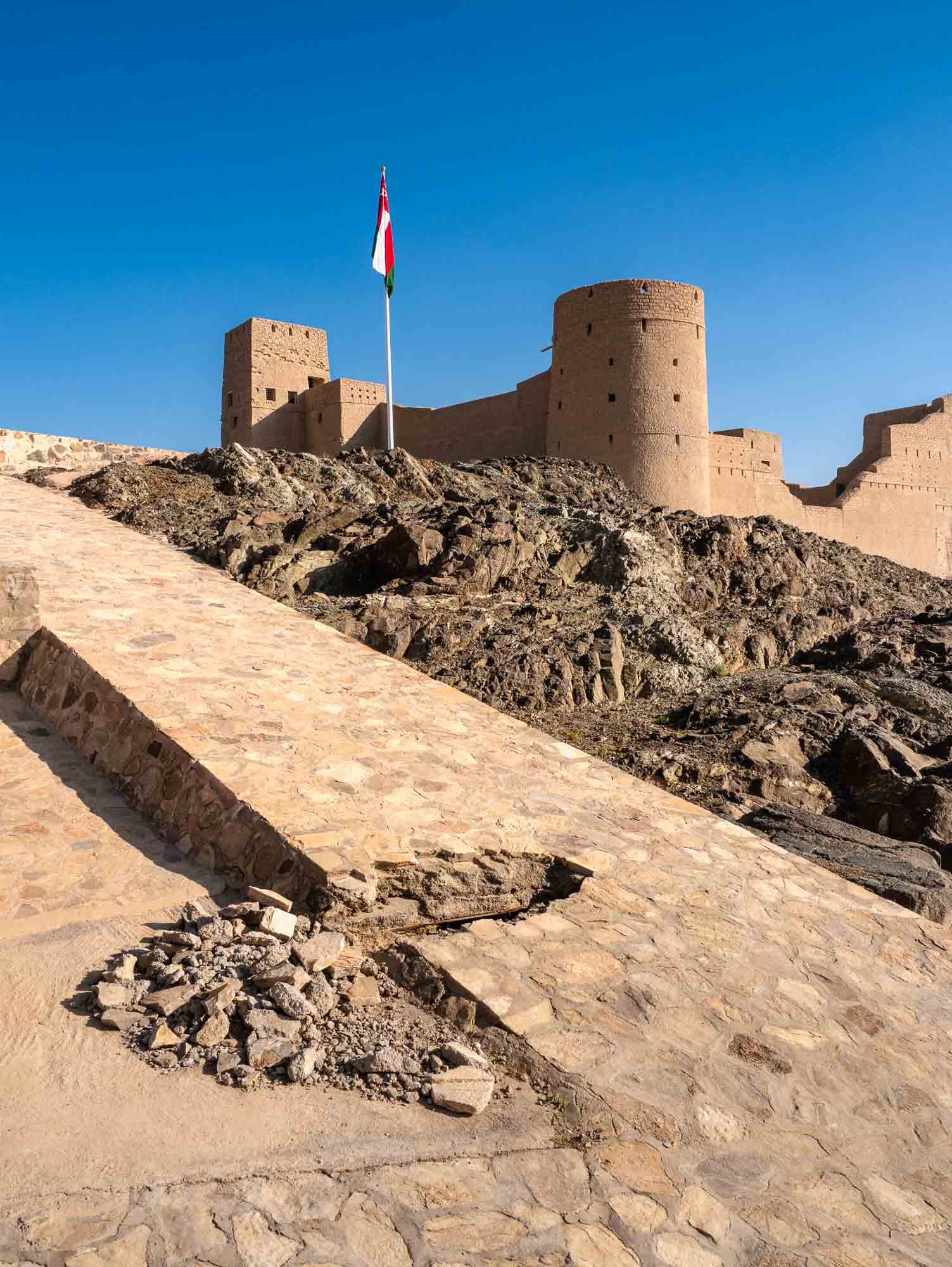
Restoration
The fort was fully restored in 2012, but there is not a lot of visitor information available, unlike in Jabreen or Nizwa.

From Prayer
A group of young local men returning from prayer and walking past the abandoned village area surrounding the fort.
Al Hoota Cave
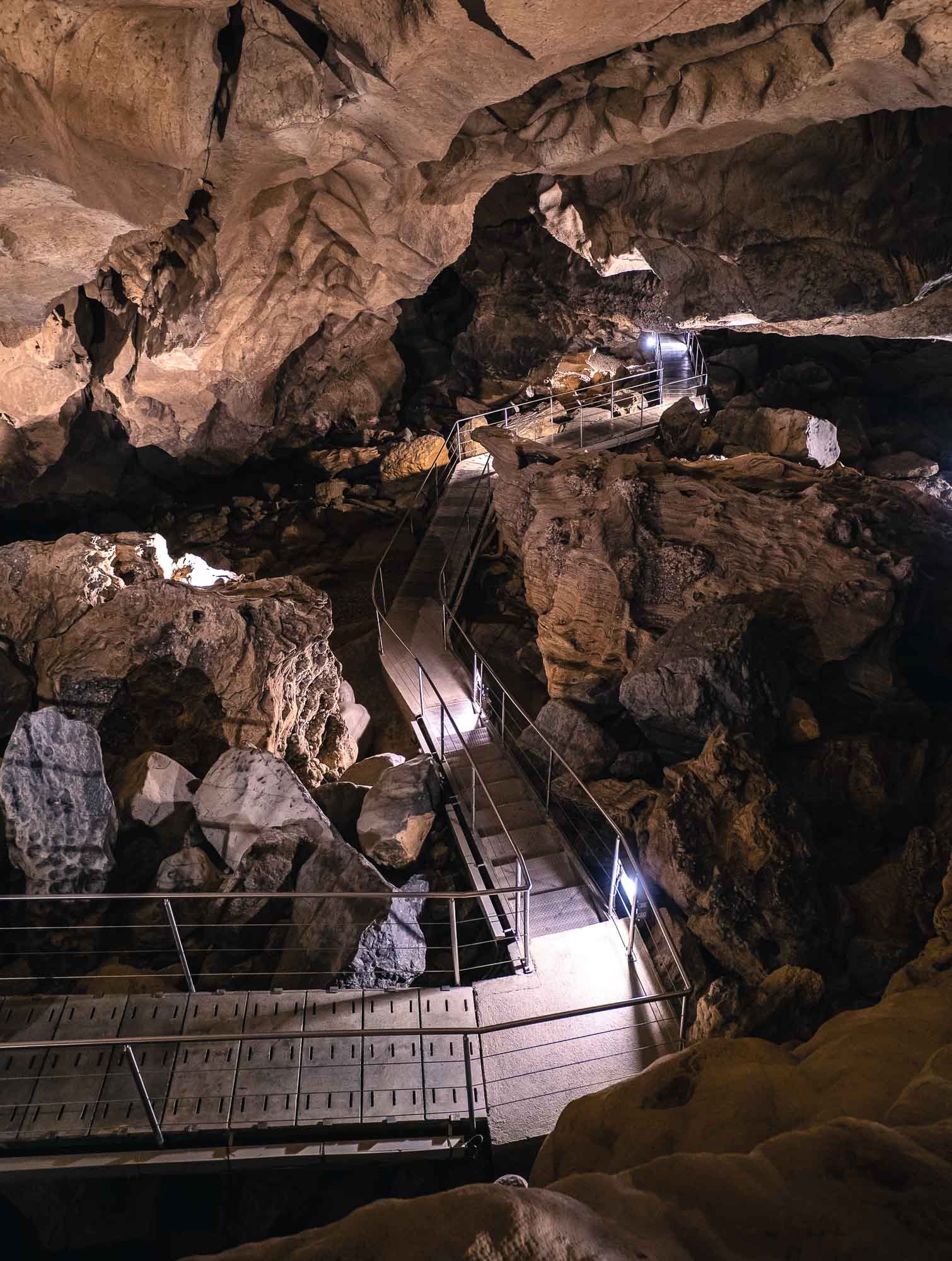
Hoota Cave
Another 30min further and you reach Hoota Cave, probably the most famous (of many) in Oman.
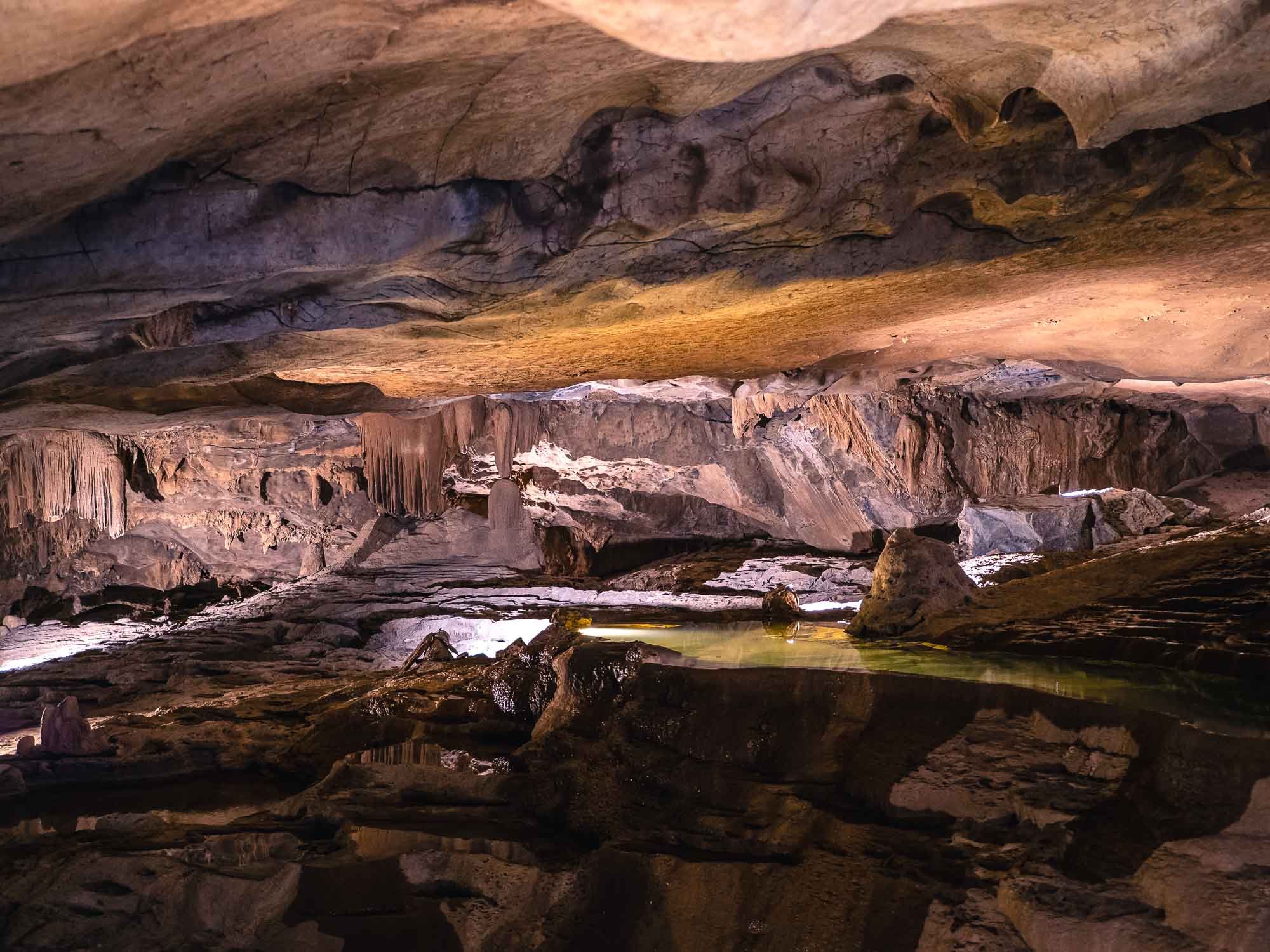
Accessible
It's the only cave in the country that has been developed for tourism, although you can only access 500m of its total 4km length.
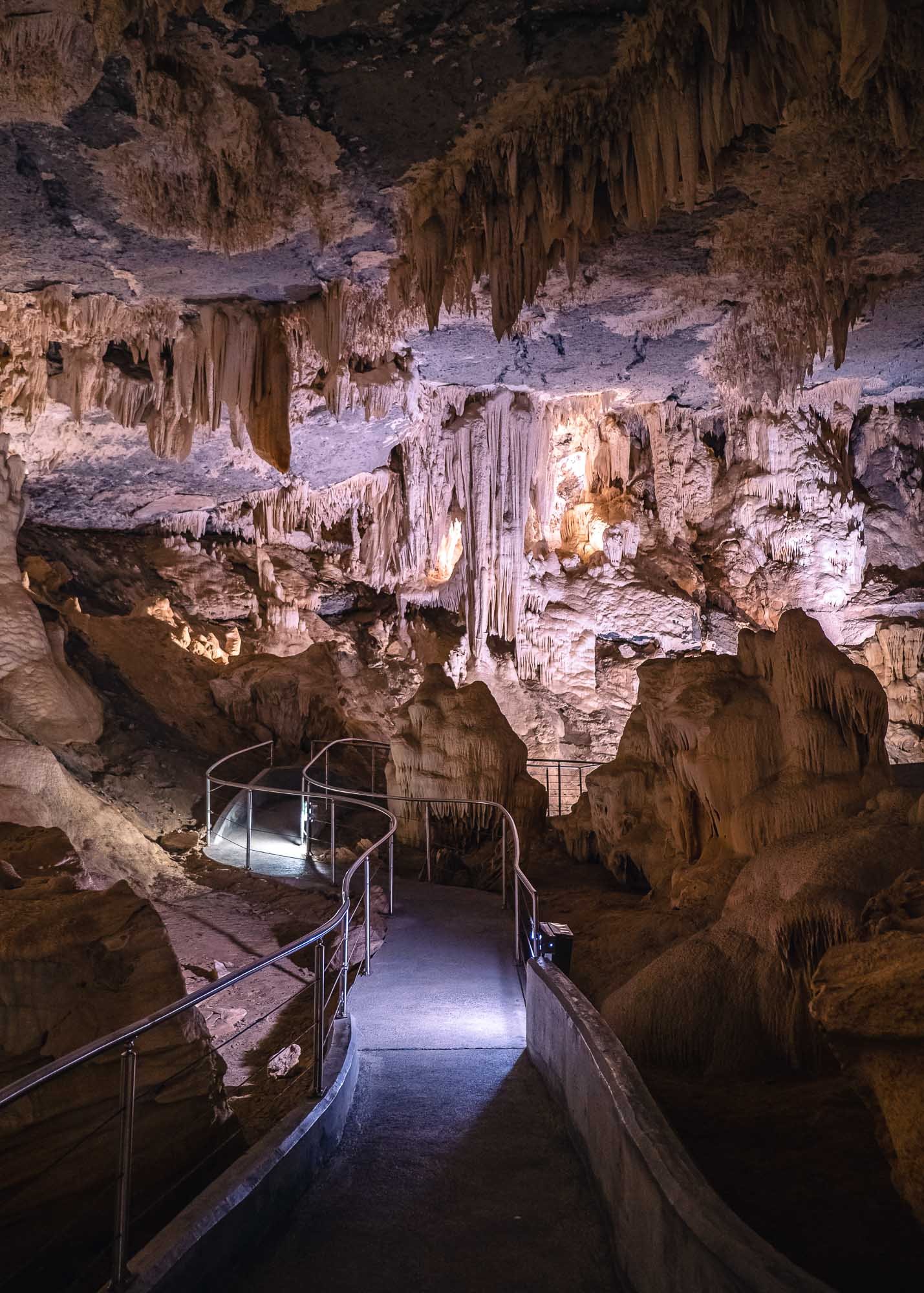
Impressions
The cave is a nice example of a Karst cave with some stalactites and stalagmites.
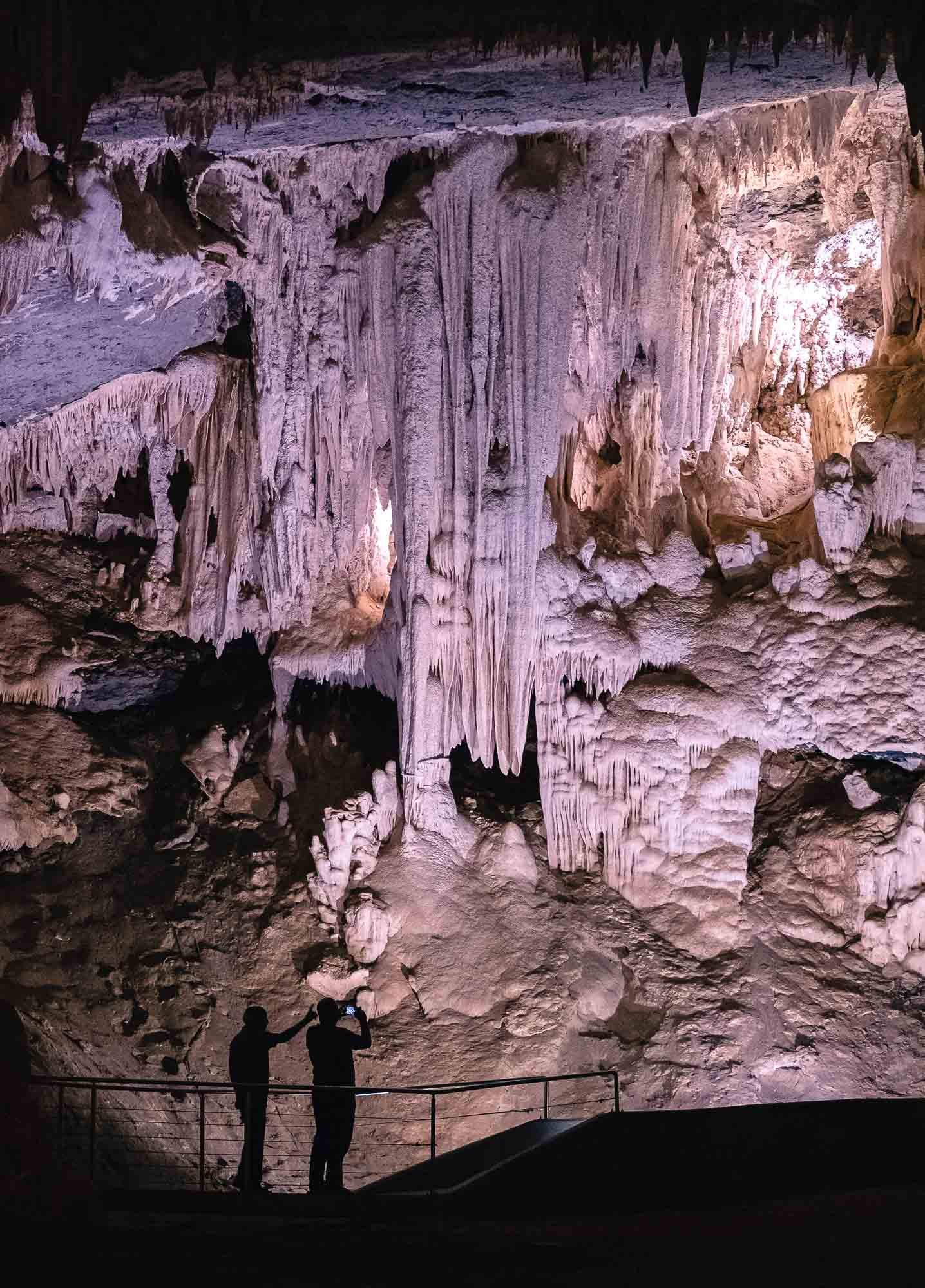
Comparison
Having said that, if you've visited some of the large and famous caves around the world, this one may not completely wow you - it's definitely worth the small detour on this route though.

Blind Fish
The cave features year round water, providing a habitat for tiny blind cave fish living in its 4 lakes, one of which is visible below.
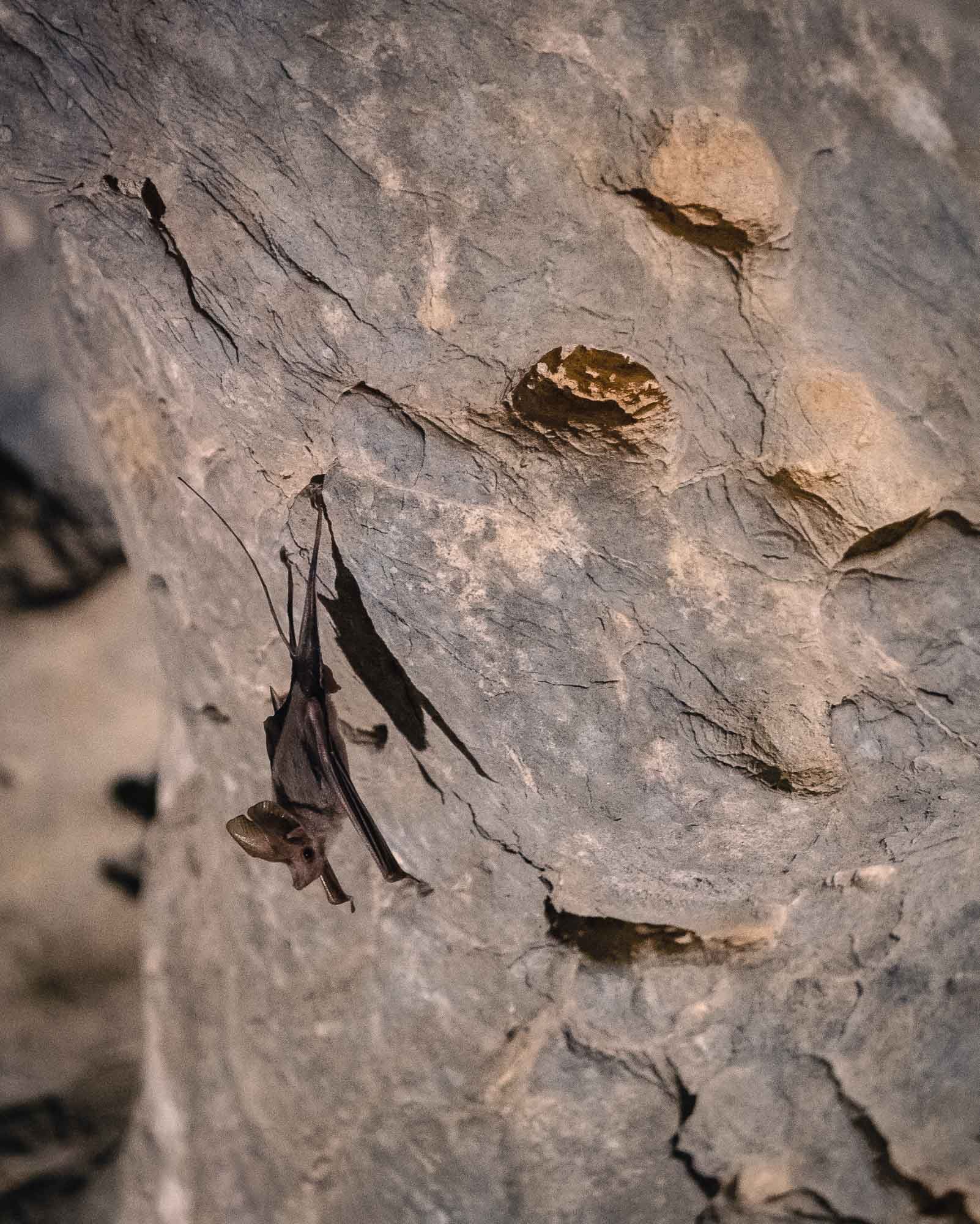
Chilling
...and you get to see some bats hanging from the ceiling.
Nizwa
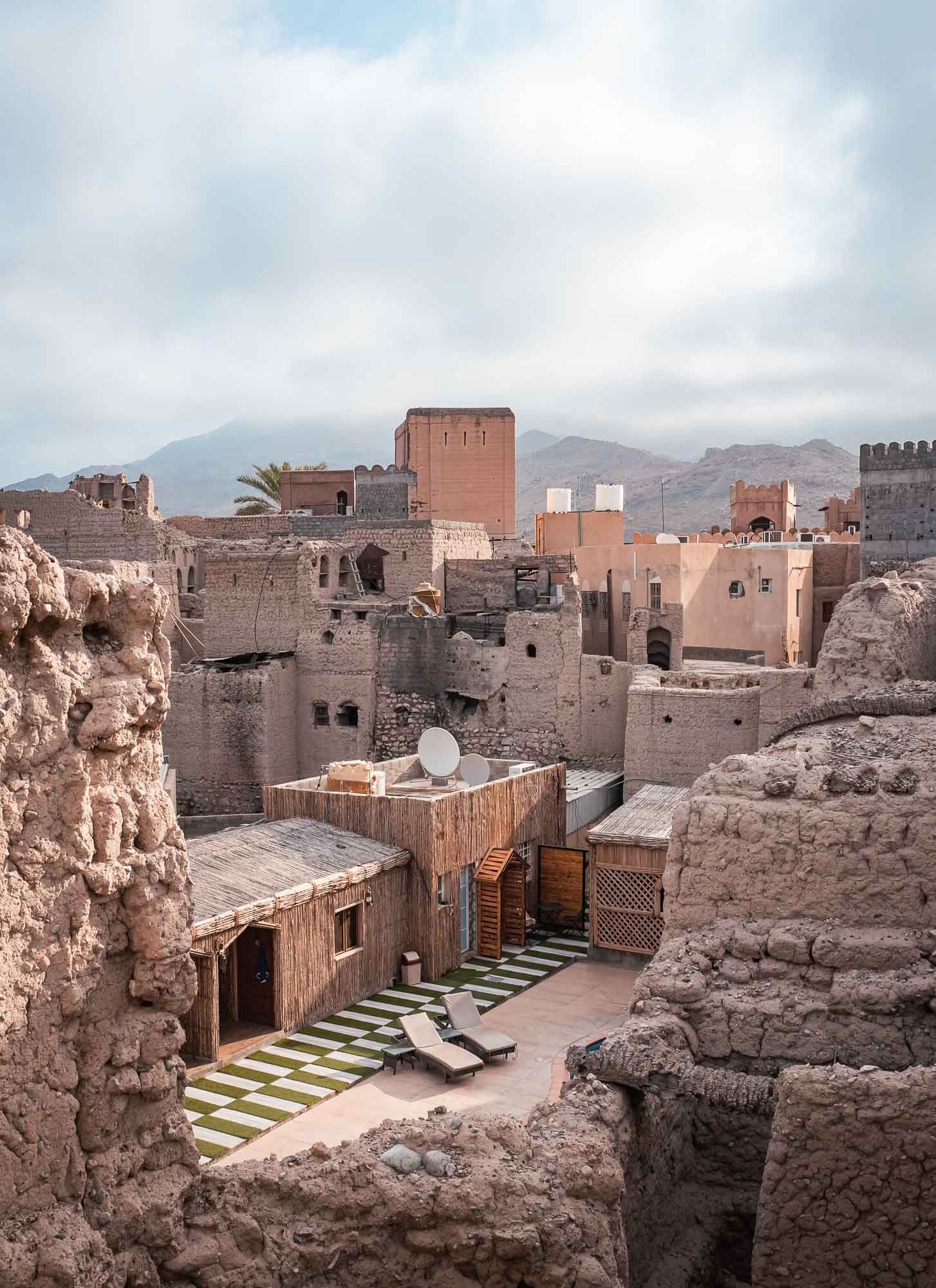
Views of Nizwa
The view from Antique Inn's rooftop in Nizwa, our place for the night.

Former Glory
Nizwa is one of the oldest cities in Oman and was the capital in the 6/7th century.
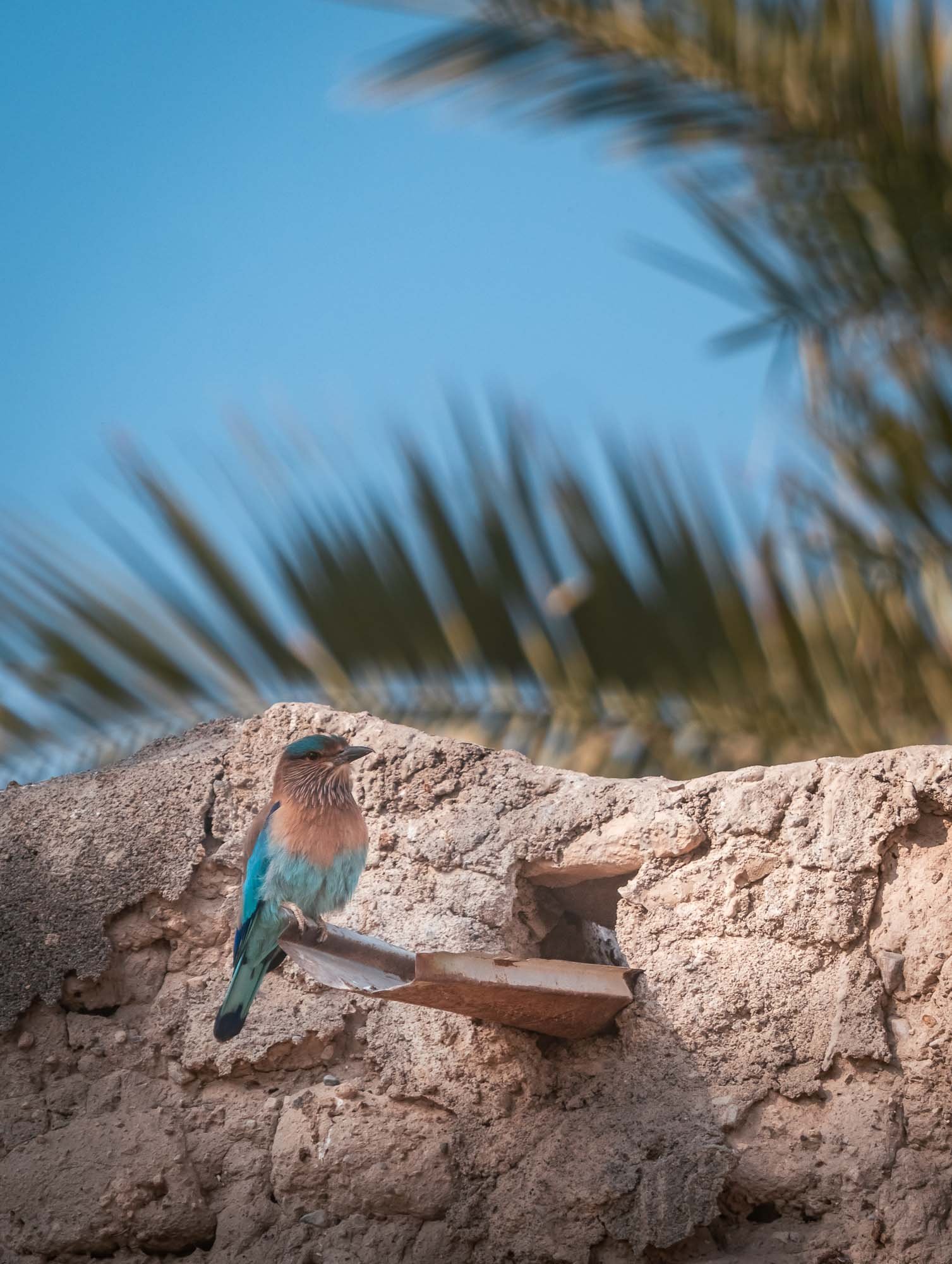
Indian Roller
A very common bird in this area around the farms. Particularly beautiful in flight when it spreads its blue wings.
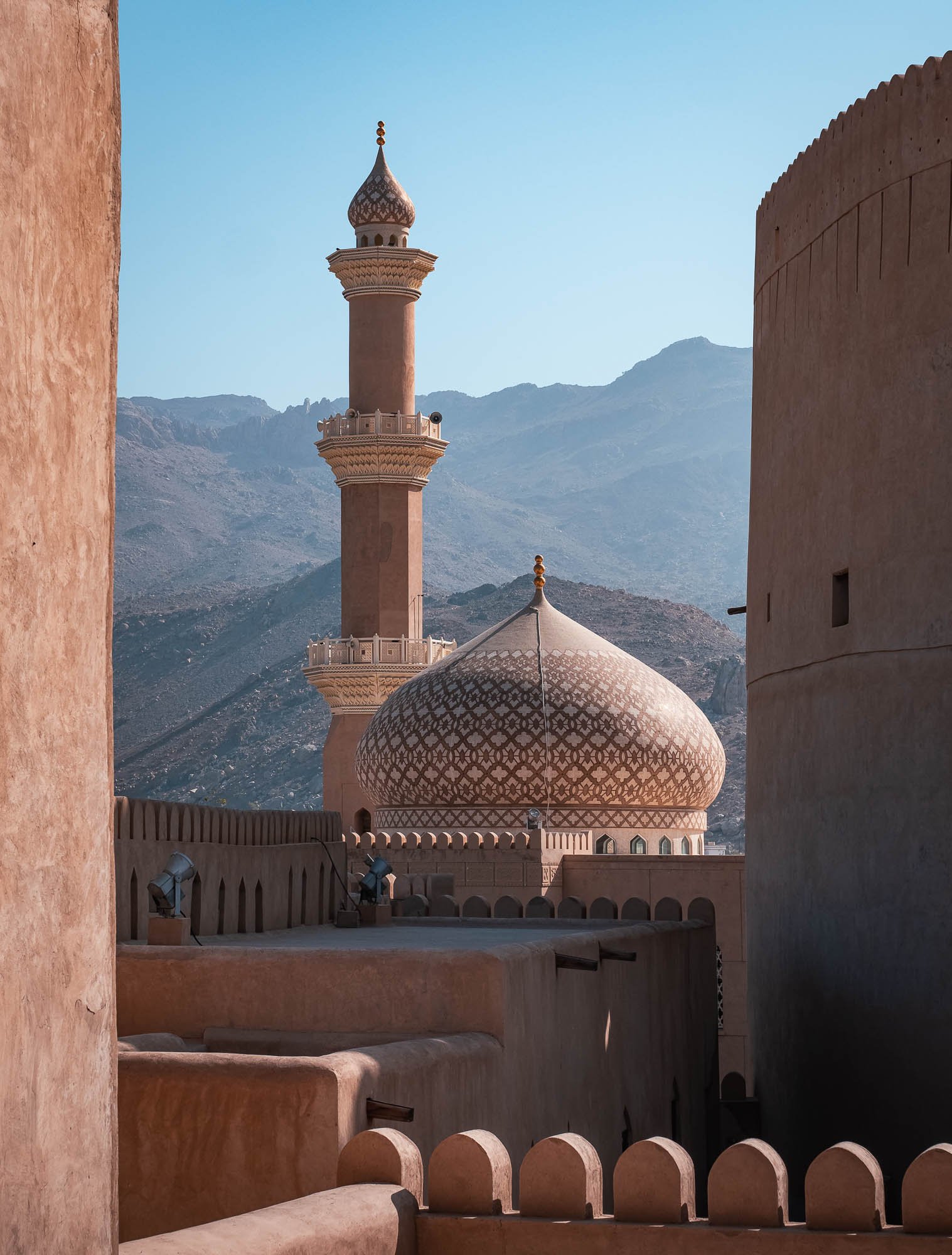
Al Qala'a Mosque
As seen from the fort. Nizwa features some of the oldest mosques in the world.

Fort Views
The fort was built in 1688, and sits above an underground stream.
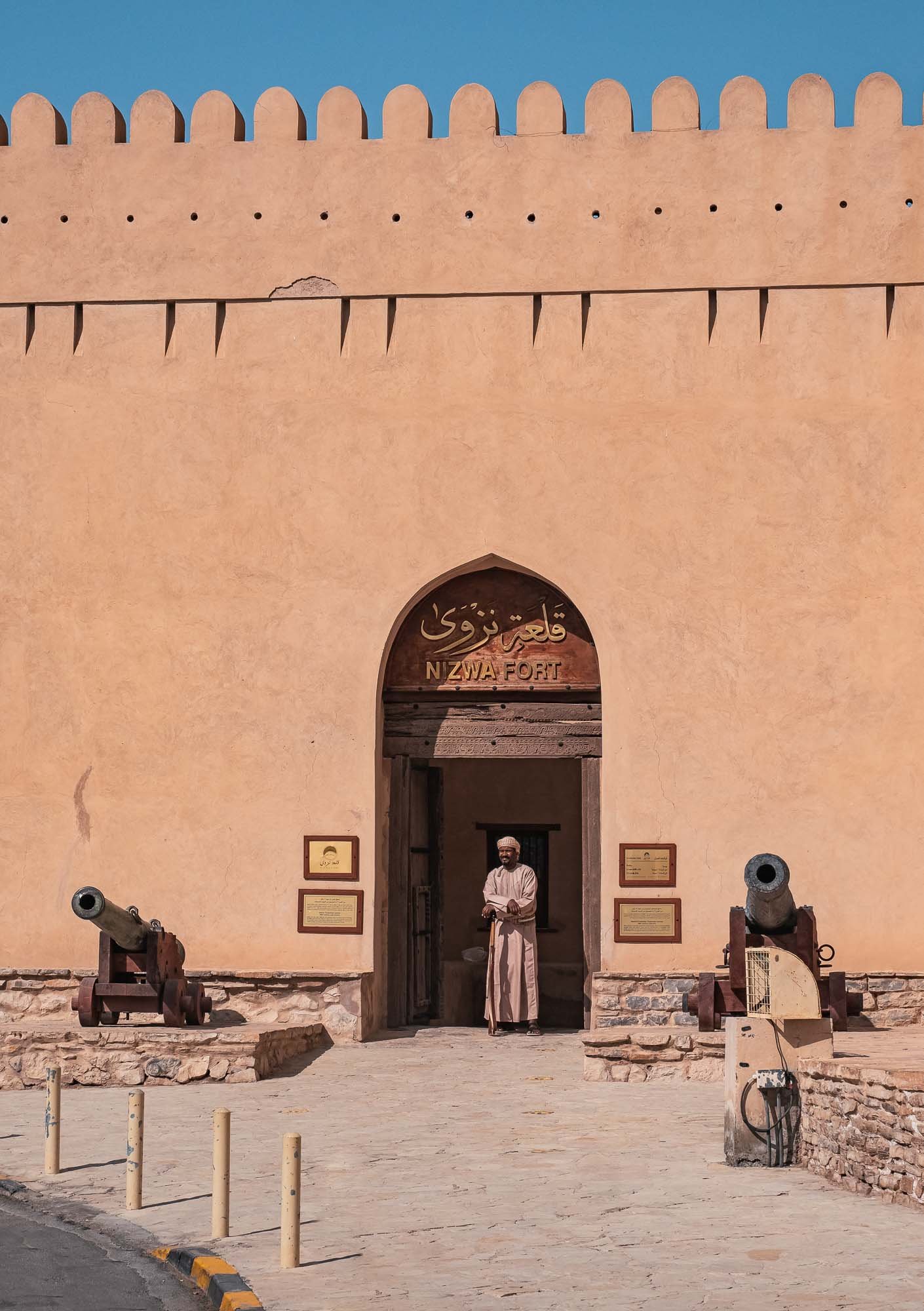
Entrance
The entrance to the fort, coincindentally guarded in this photo for that authentic flair.
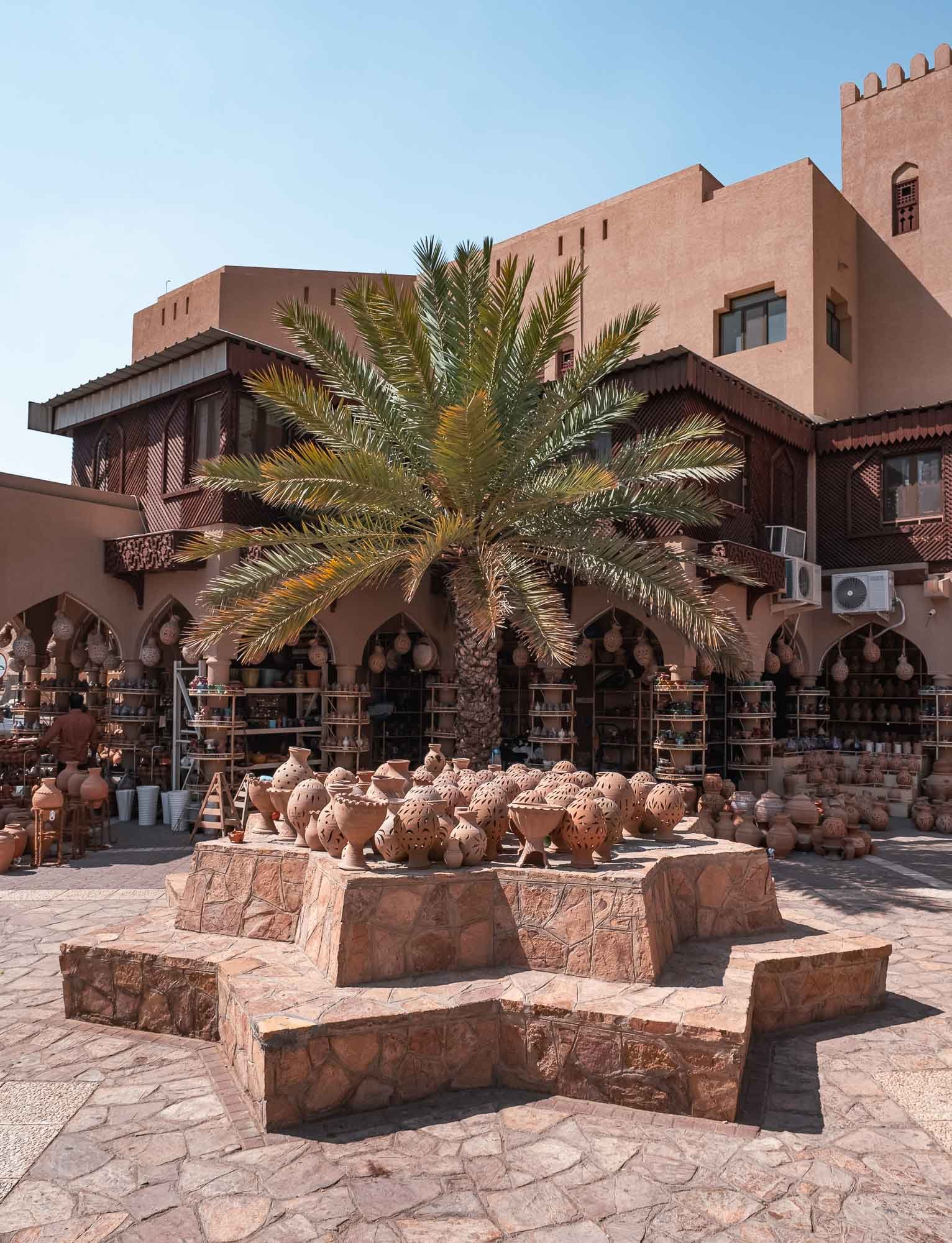
Nizwa Souq
The outside area near the entrance to the souq, selling pottery and other homeware goods.

Alleys
While it doesn't look it in this photo, Nizwa Souq is one of the most important and oldest in the country.
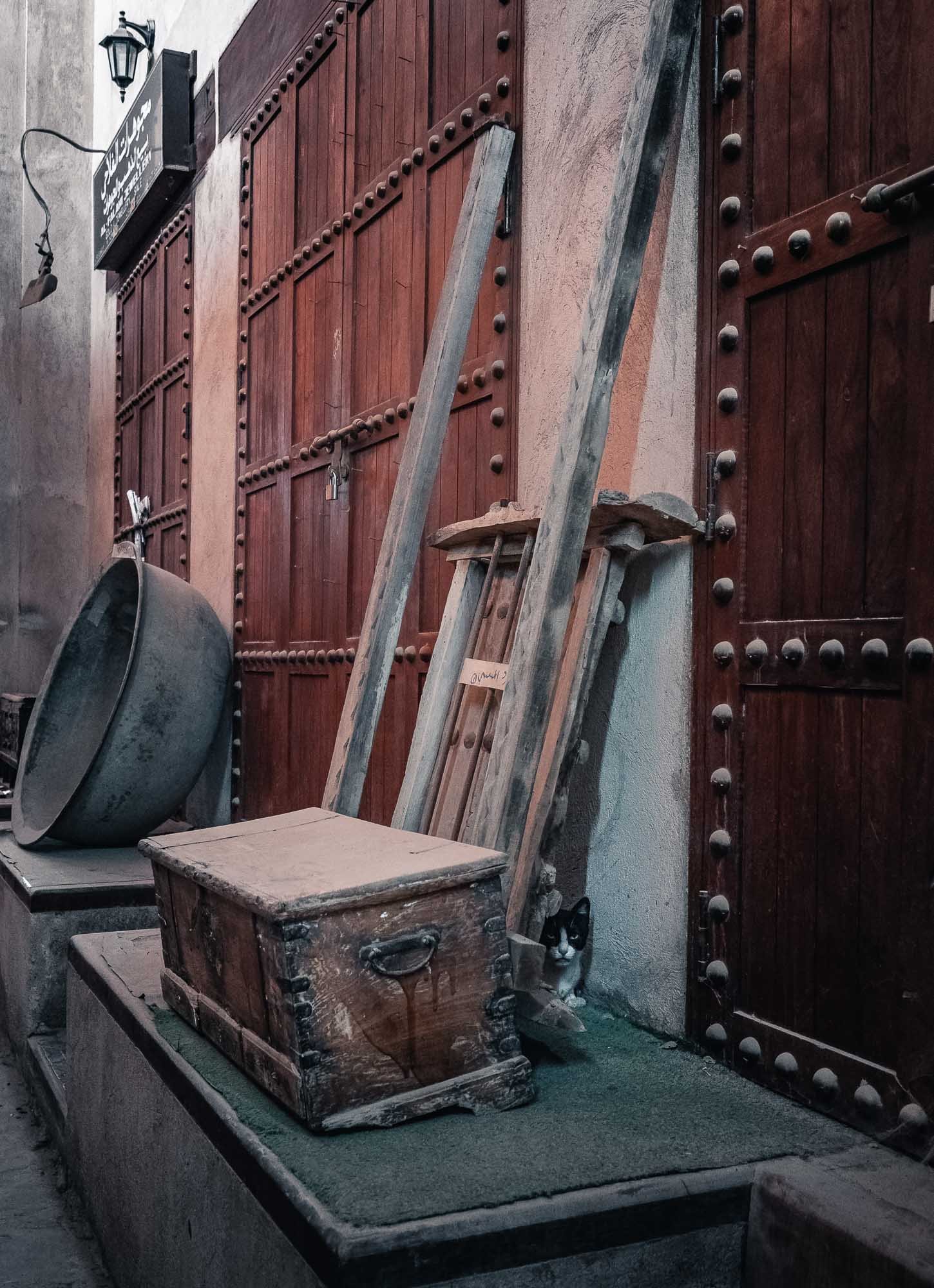
Salesman
During our visit, it was primarily occupied by this fellow.
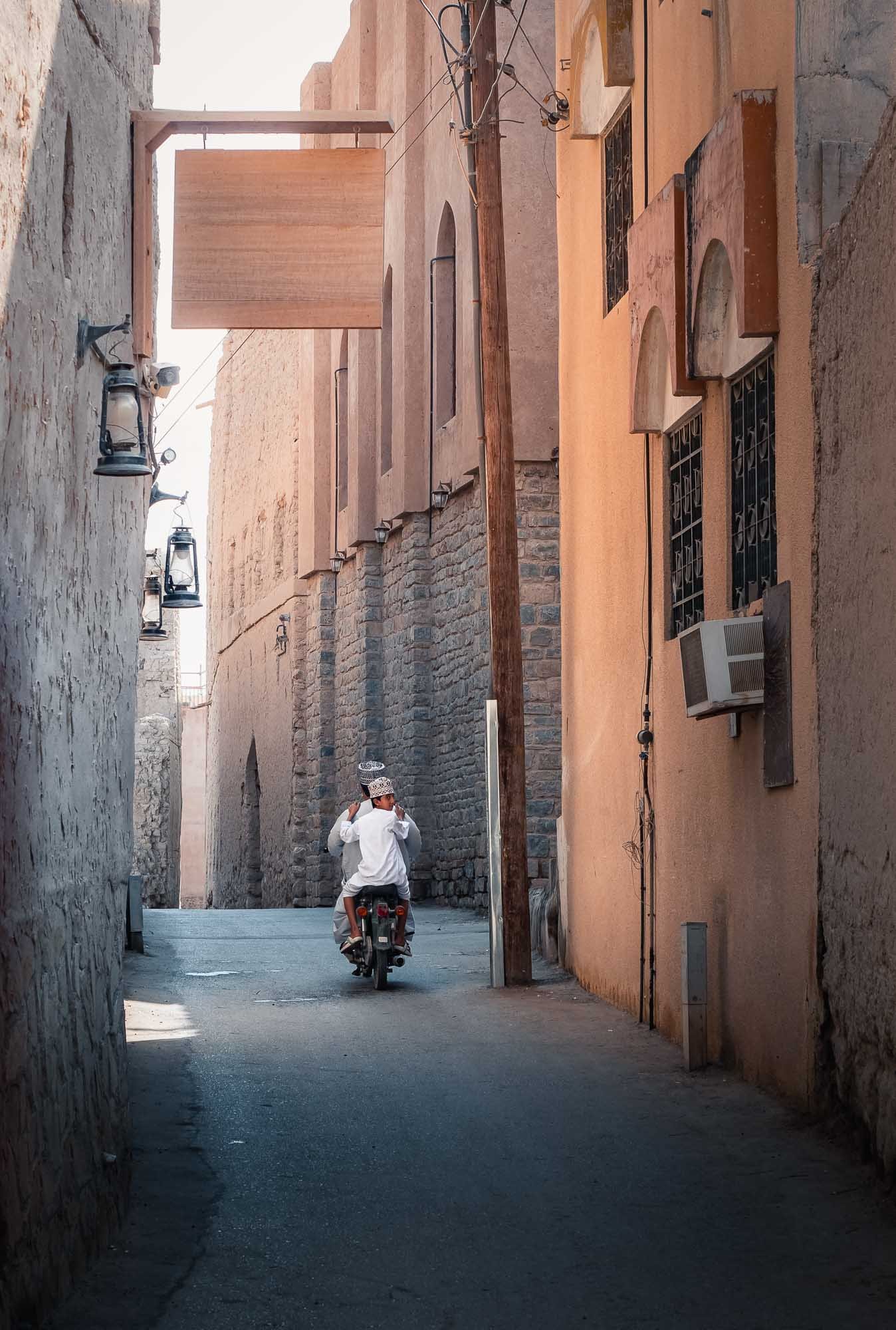
Transport
The small tight roads running through the old town are mainly accessible this way.
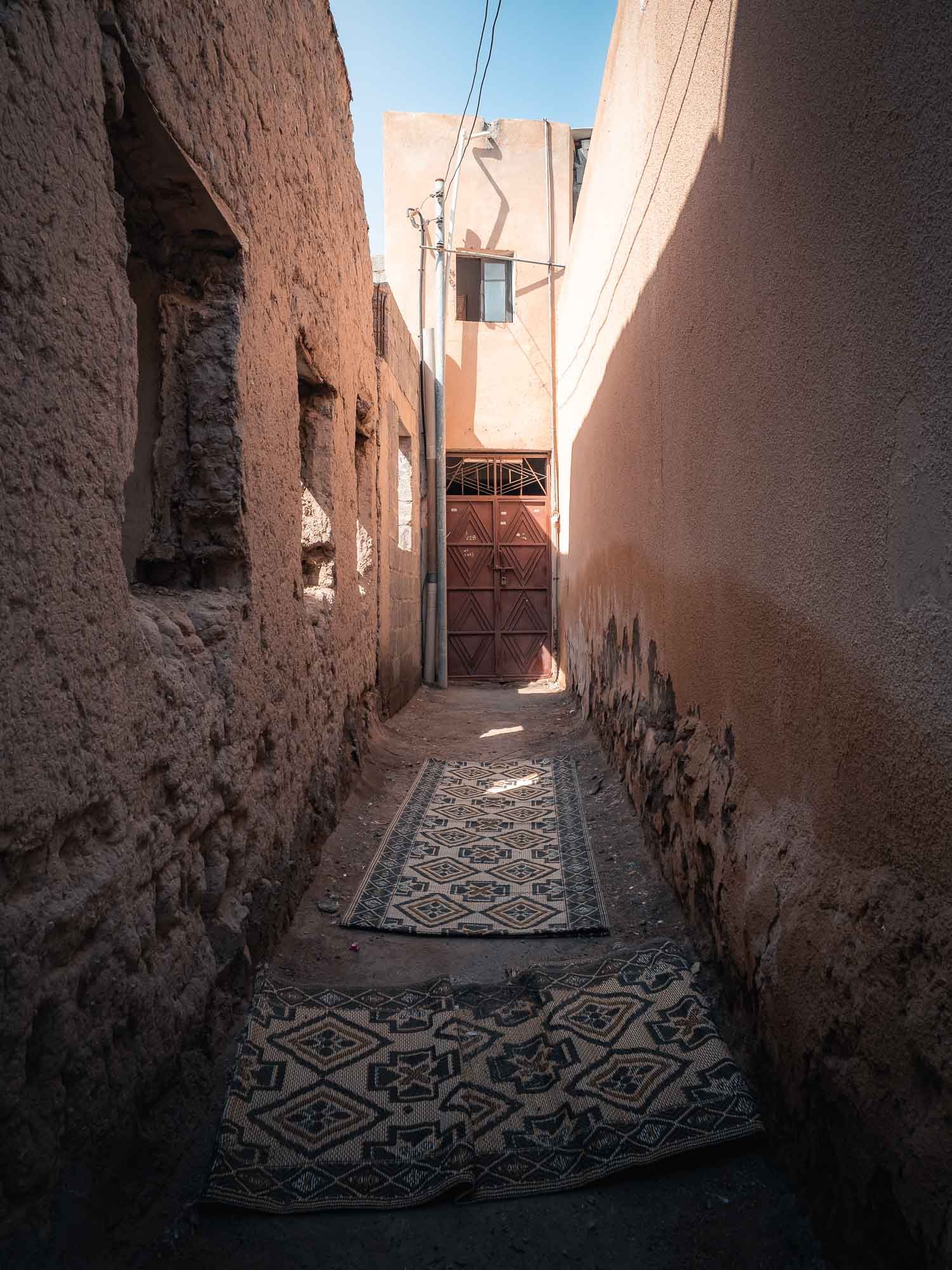
Old Town
While many of the houses are crumbling and abandoned, some are still occupied.
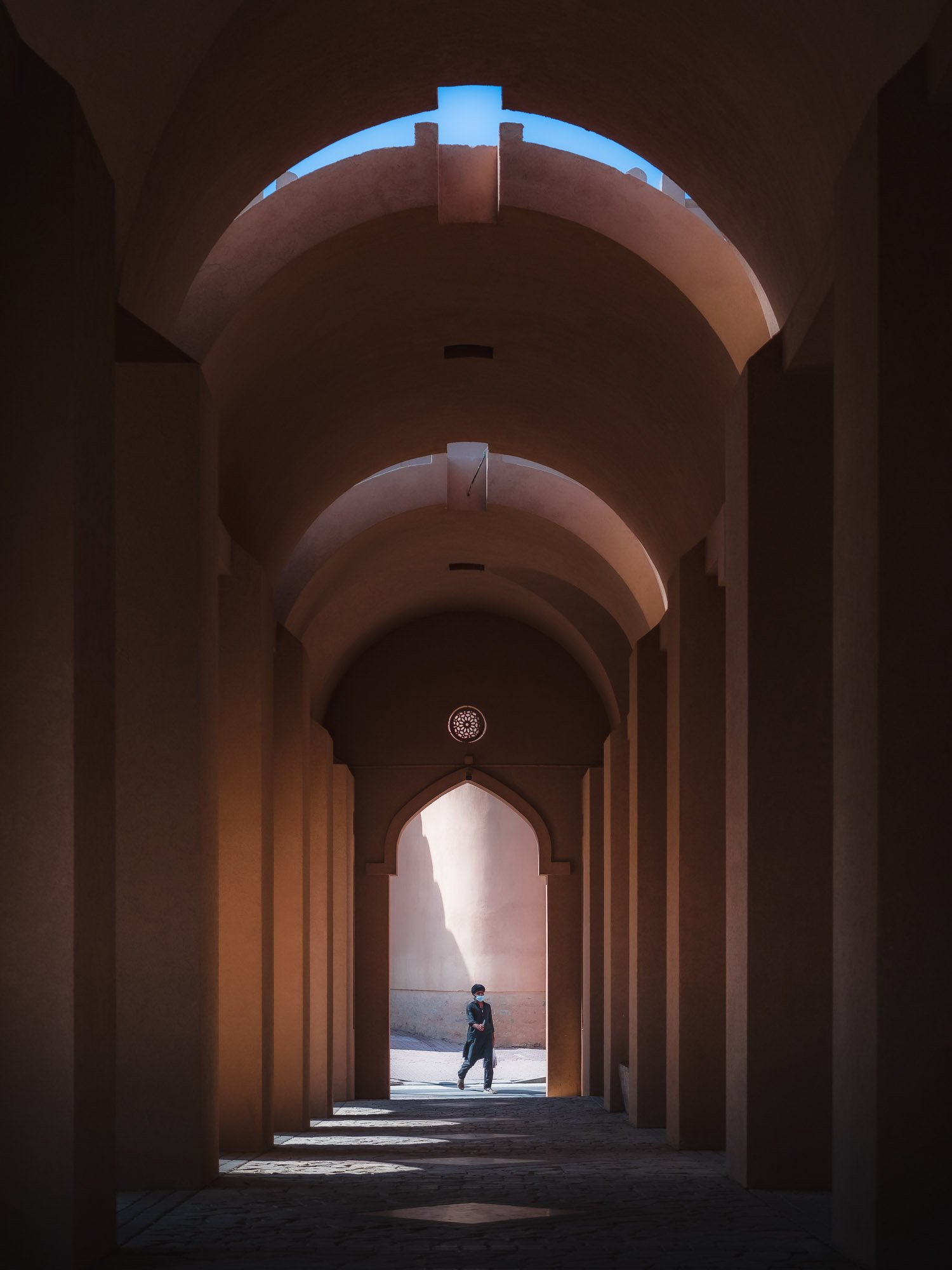
Grocery Duty
An Omani man passing through the shaded walkways of the market courtyard.
Jebel Akhdar
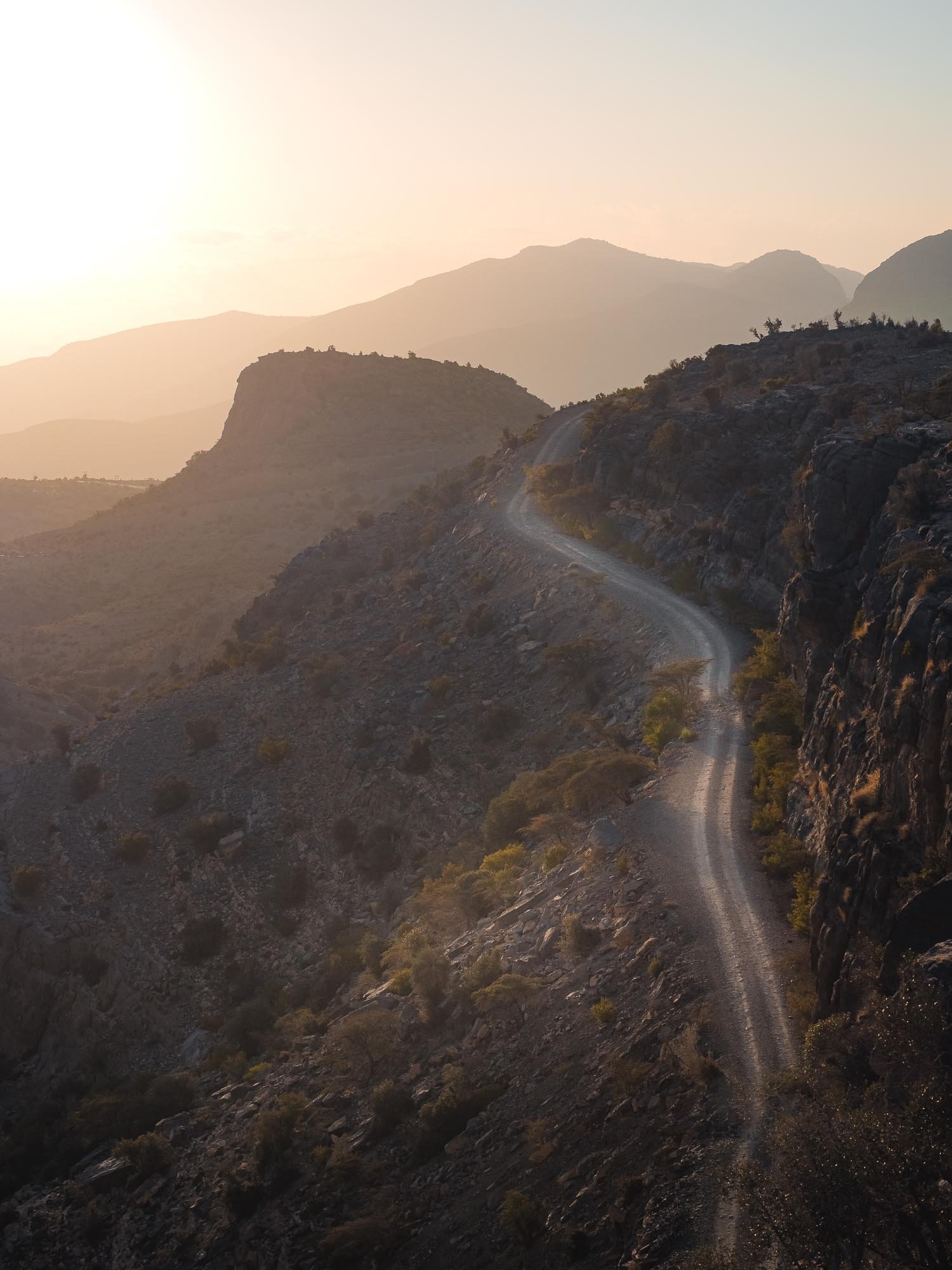
Upwards
Our next destination was Jebel Akhdar. It's an hour drive into the mountains, to an altitude of more than 2000 meteres. Although the roads are ok (better than in this photo), a 4x4 is required, otherwise you cannot pass the police checkpoint.
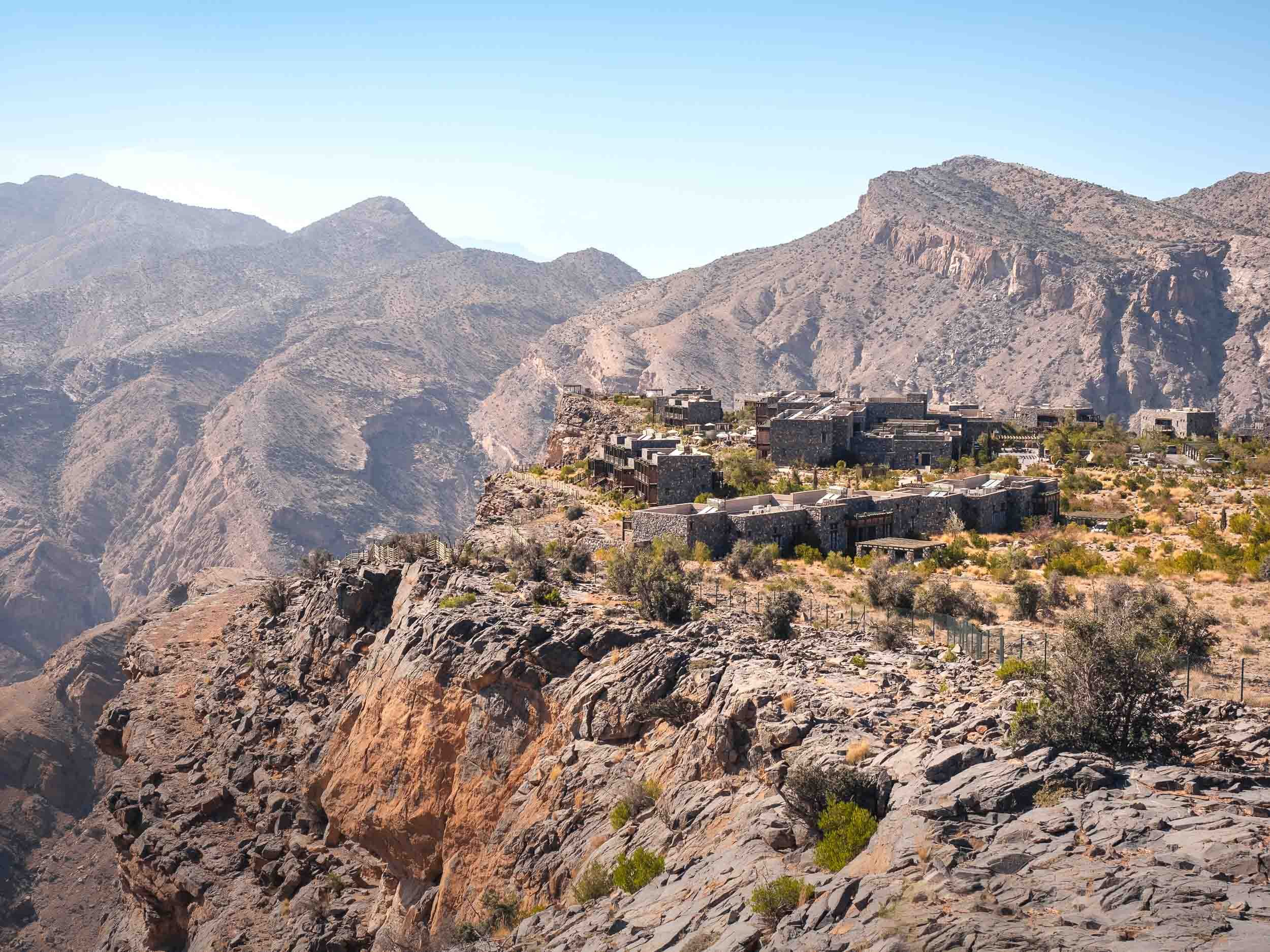
Alila Jabal Akhdar
We spent 2 nights in this amazing property, directly on the cliff of the one of the deepest canyons in the Hajar mountains.
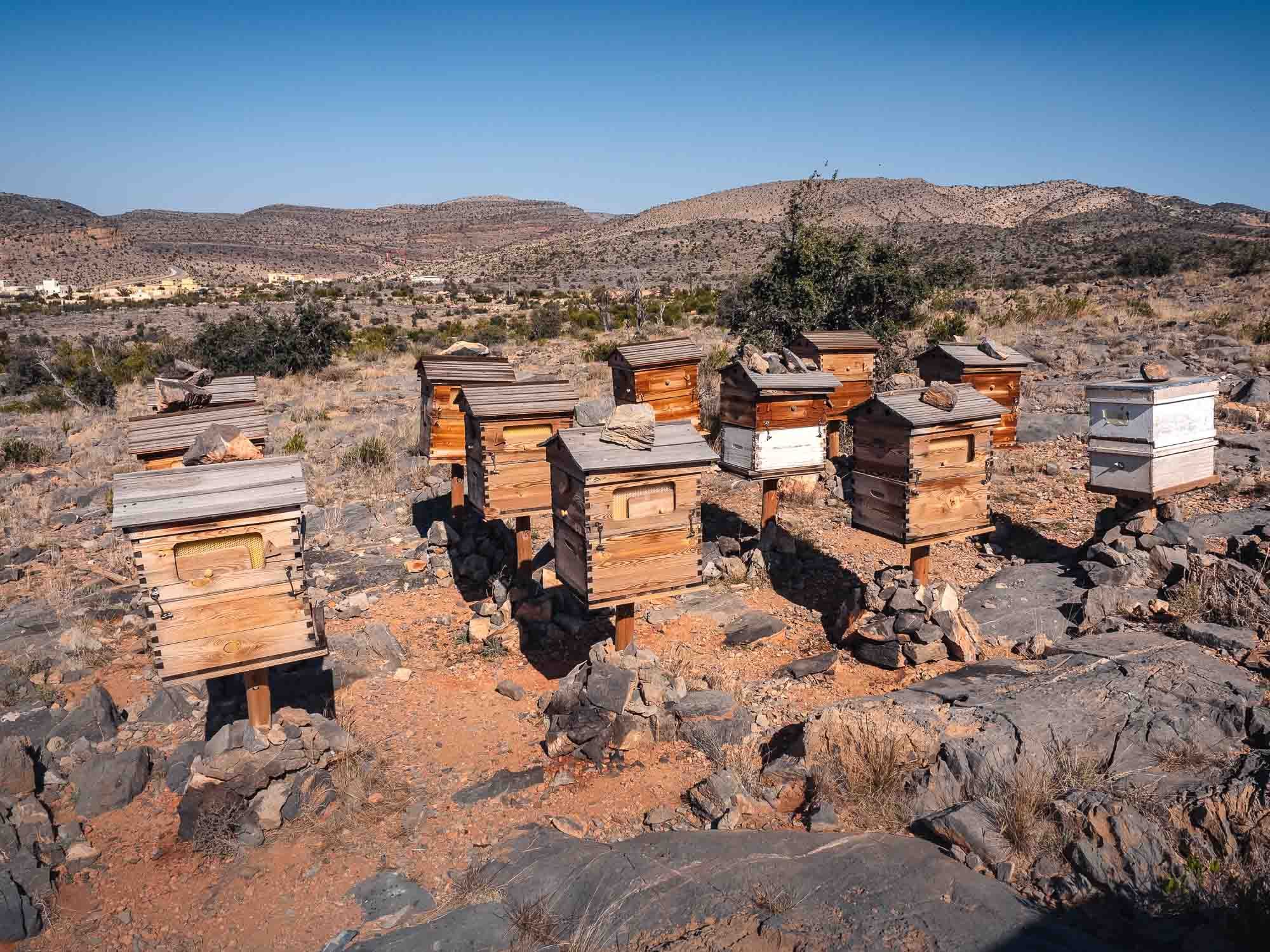
Beehives
The area round the hotel features many hikes, and a small trail directly in the grounds, with several interesting spots such as these beehives.
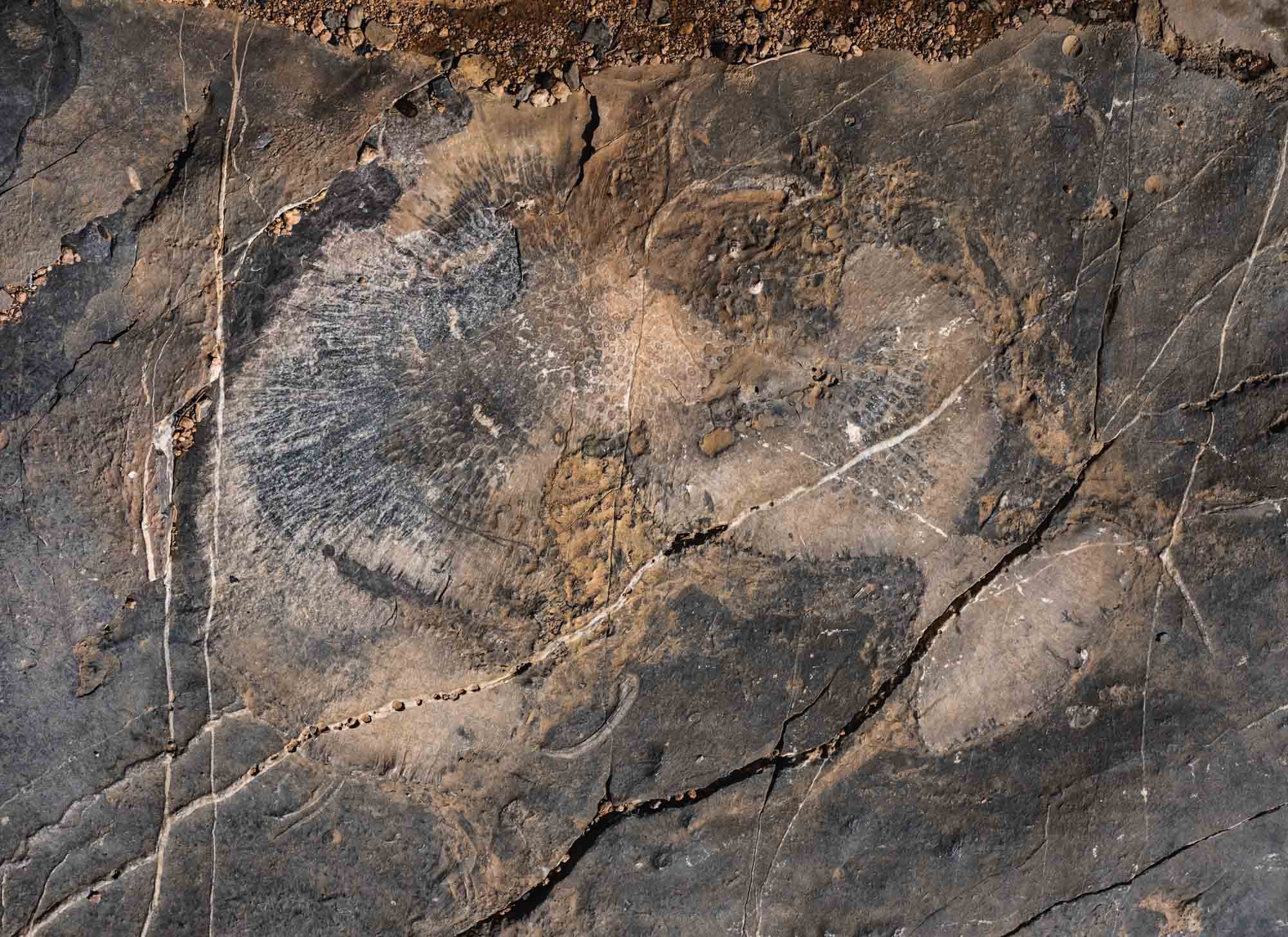
History
You can also find marine fossils everywhere, from millions of years ago when the area was under water.
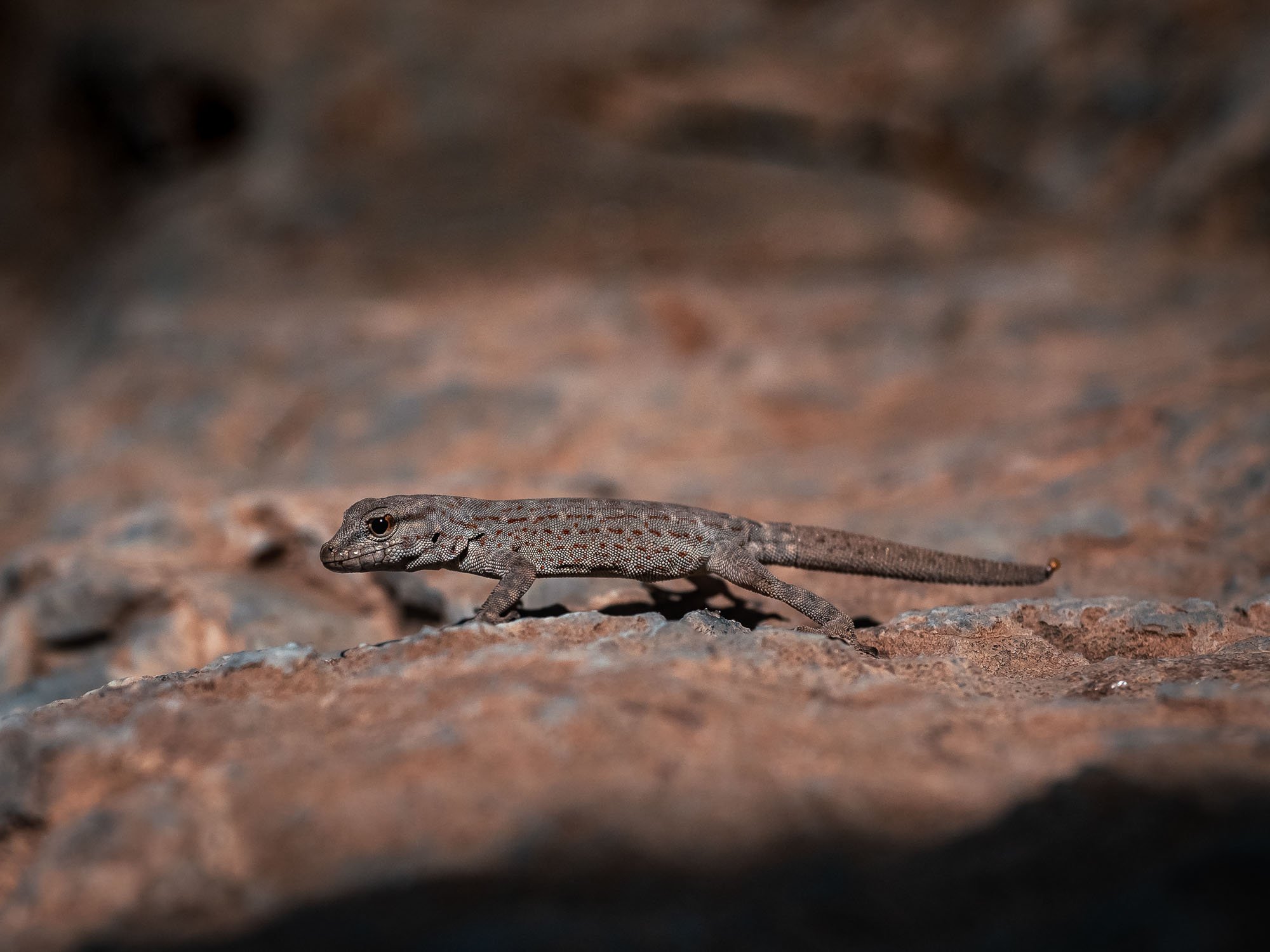
Visitors
Nowadays, the mountain is home to an abudance of Flora & Fauna - Akhdar literally means "green".
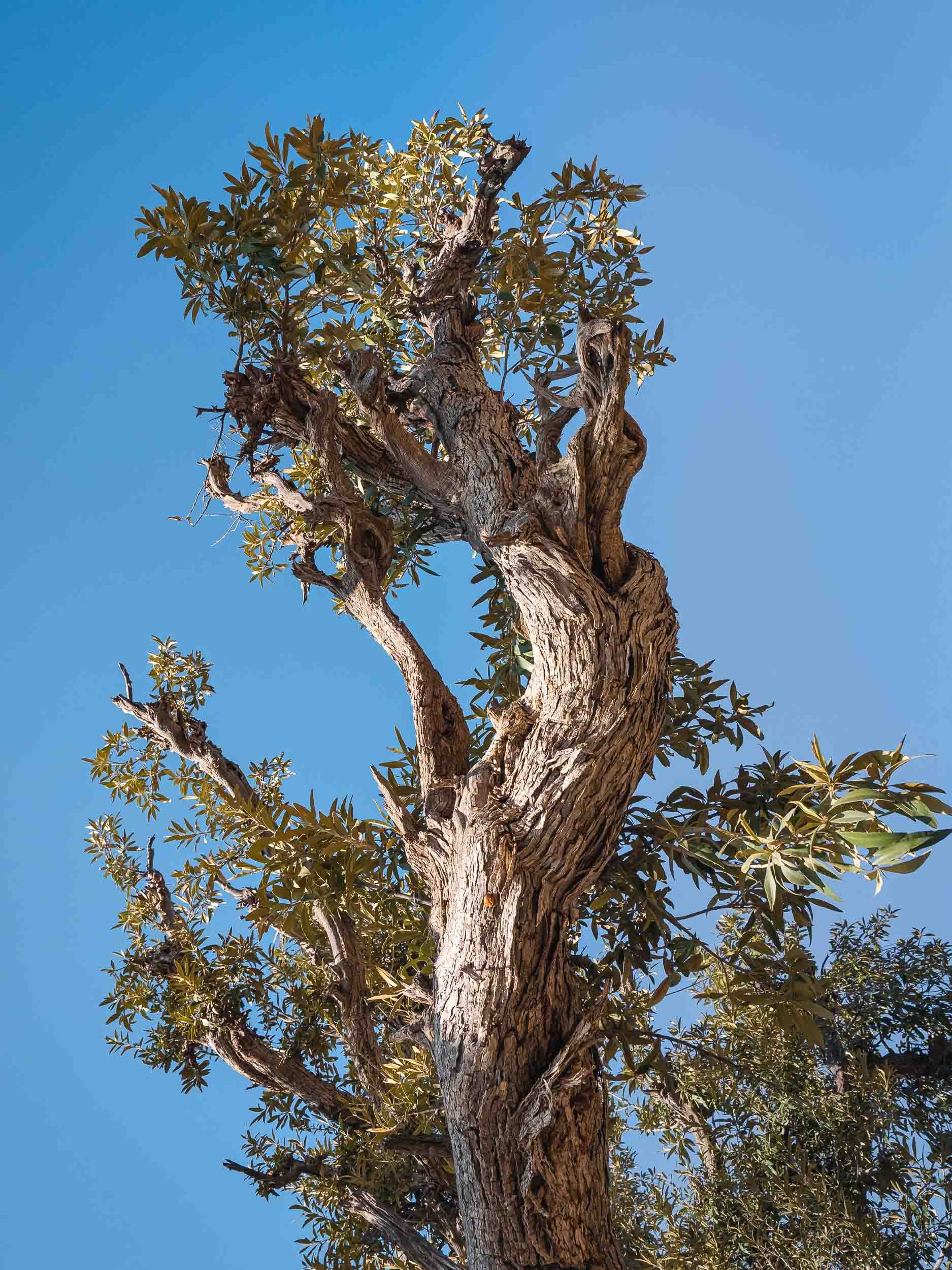
Wadi Walk
We spent the afternoon on a 4h hike through a nearby Wadi. The variety of trees is particularly interesting, including wild olive trees.

Water Source
The end of the trail brought us to this little dam, occupied primarily by frogs.
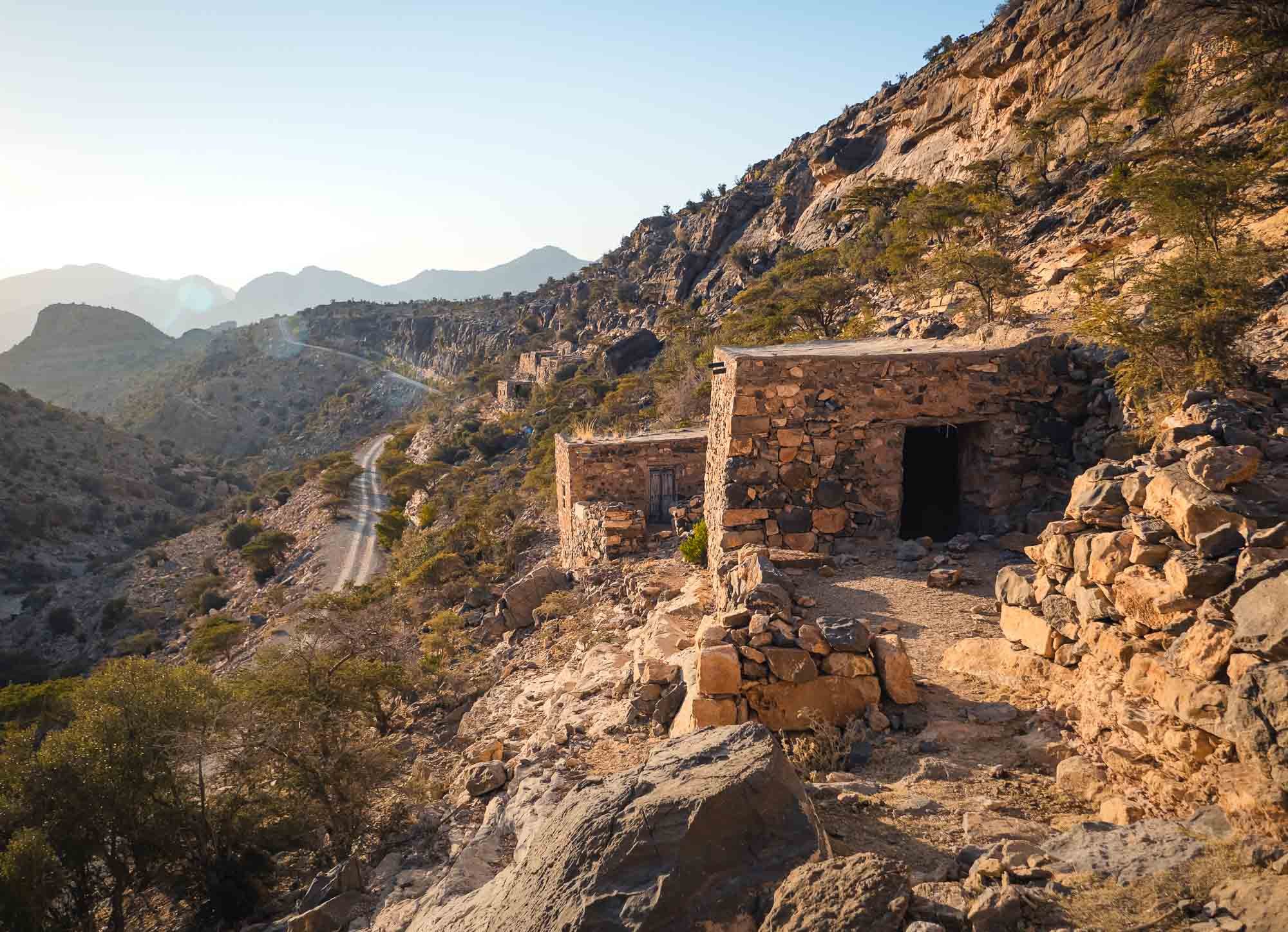
Abandoned
On the way back, we climbed upwards to find the crumbling houses of Sarab, a former village on the slopes of the Wadi.
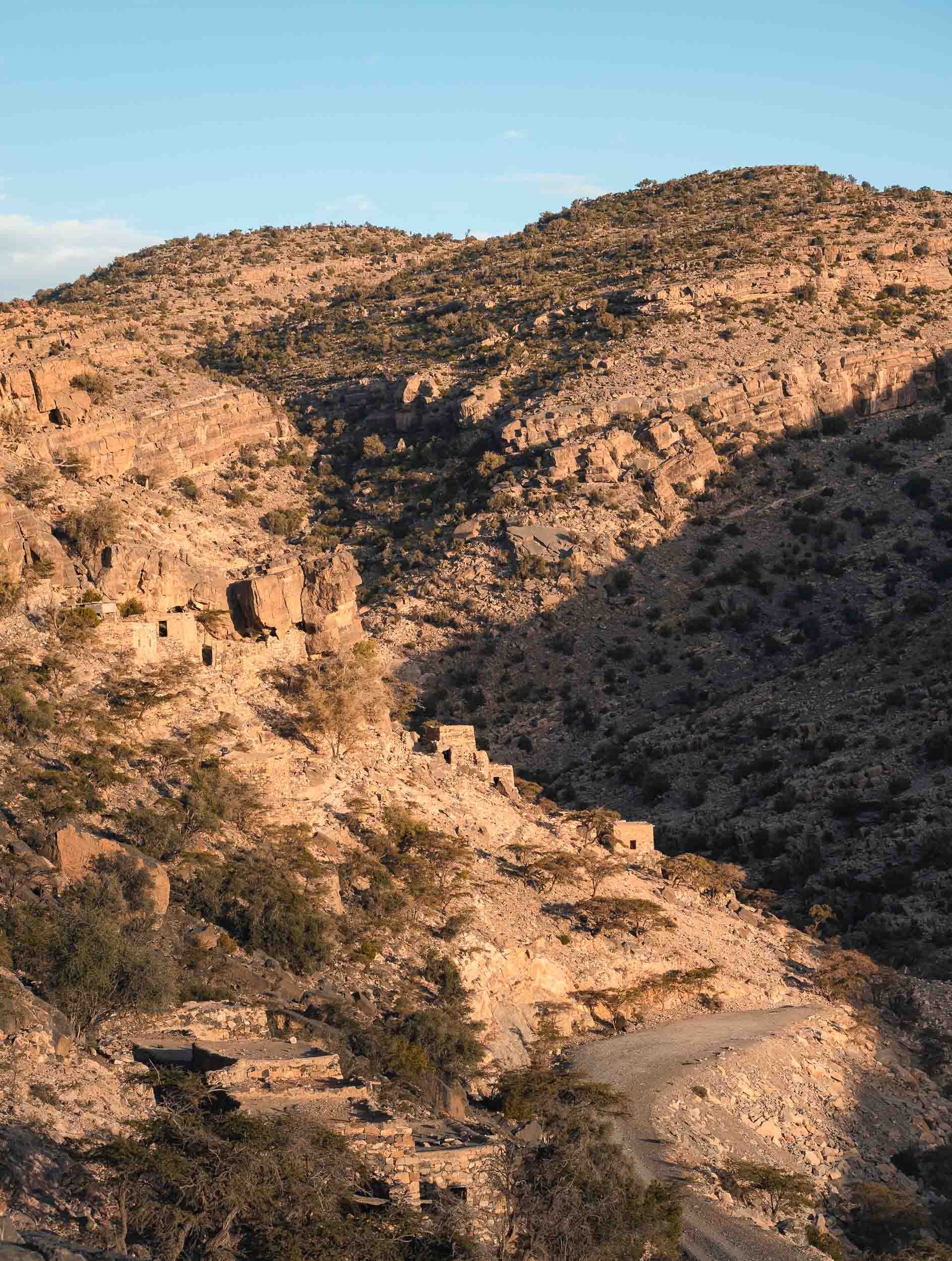
Illuminated
Sunset was the best time for this trail.

Sunset over Alila
Sometimes the scenery speaks for itself.
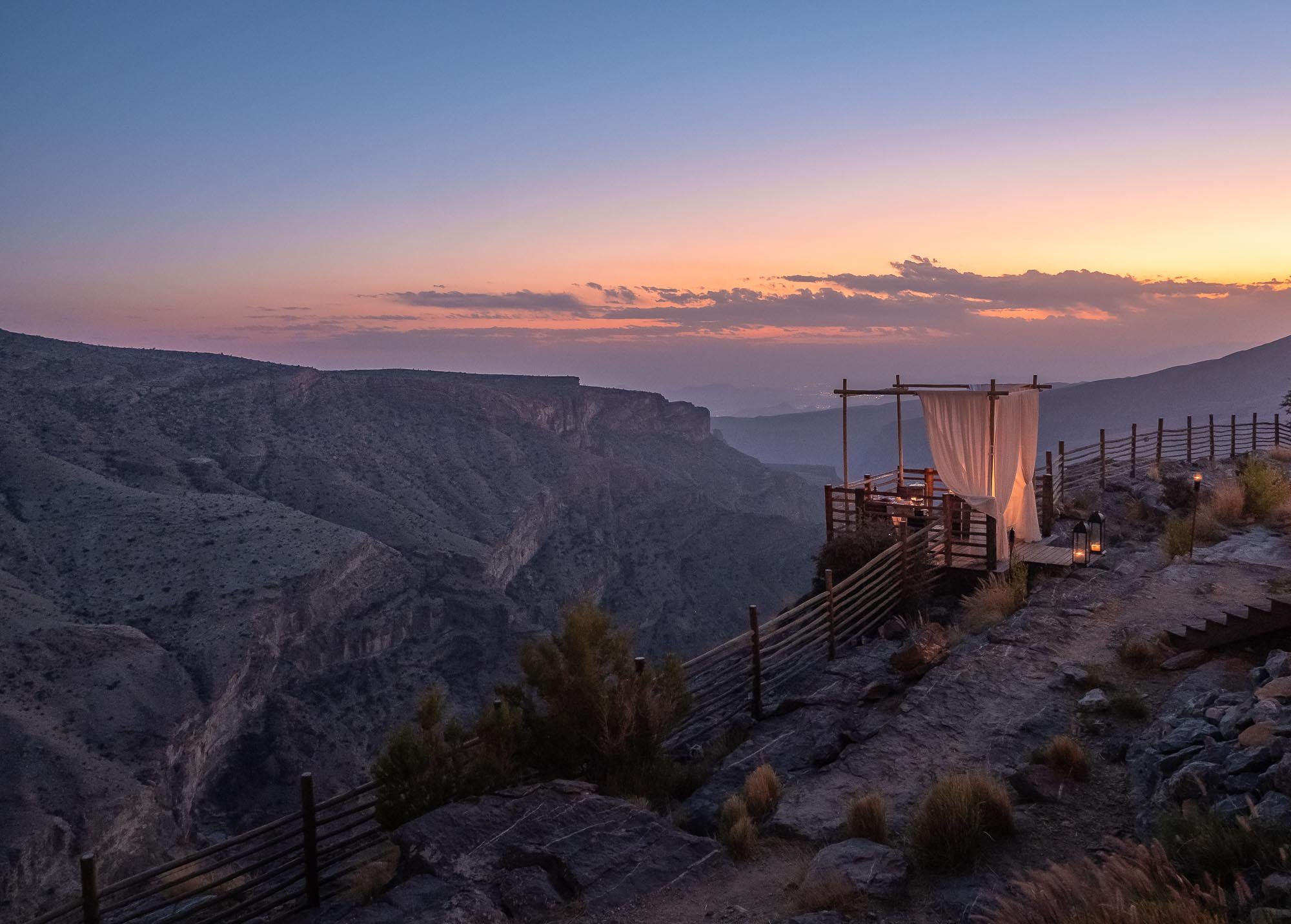
Cliff
Not a bad spot for dinner?
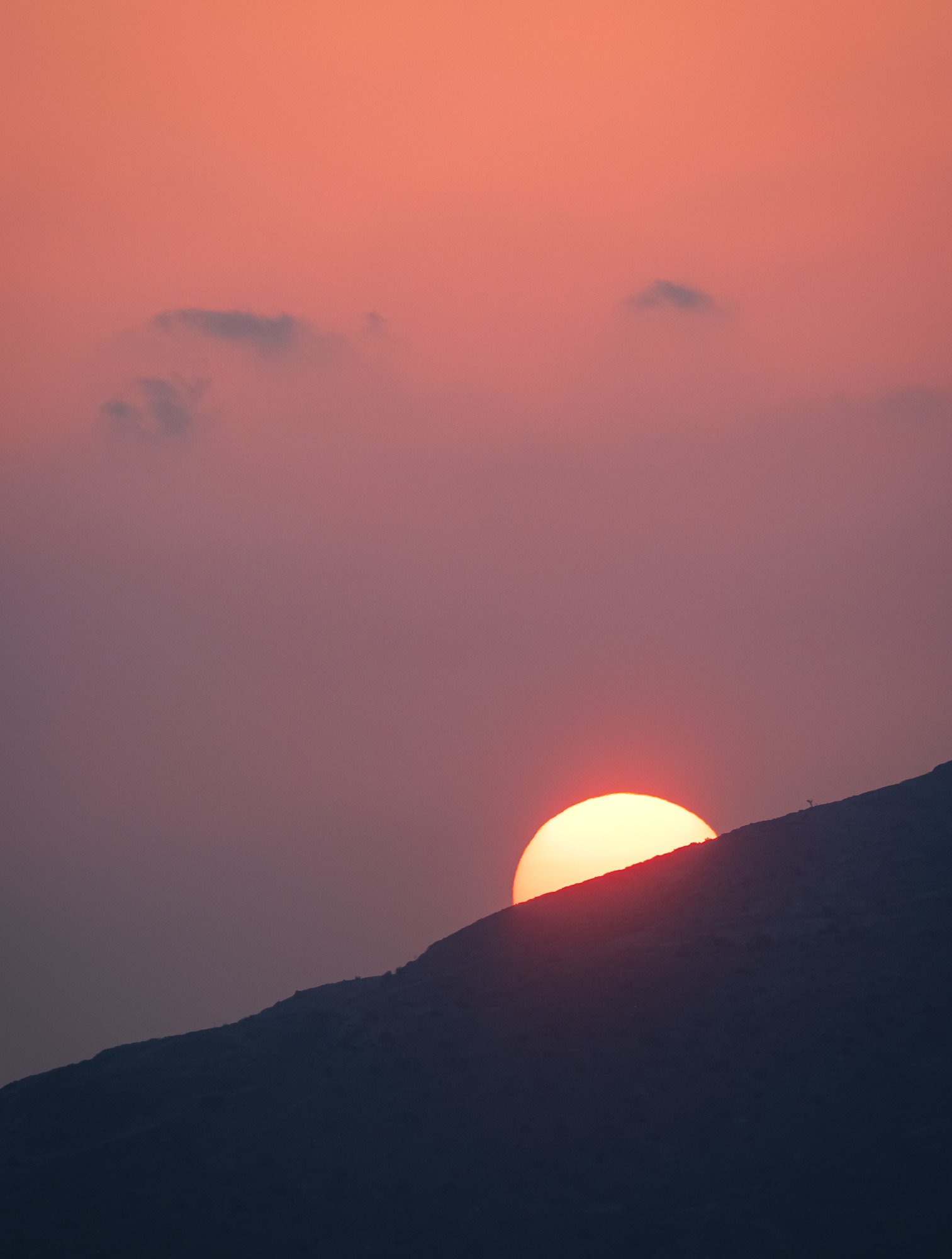
The Day's End
The sun setting behind the Hajar mountains in the distance, next to a little tree.
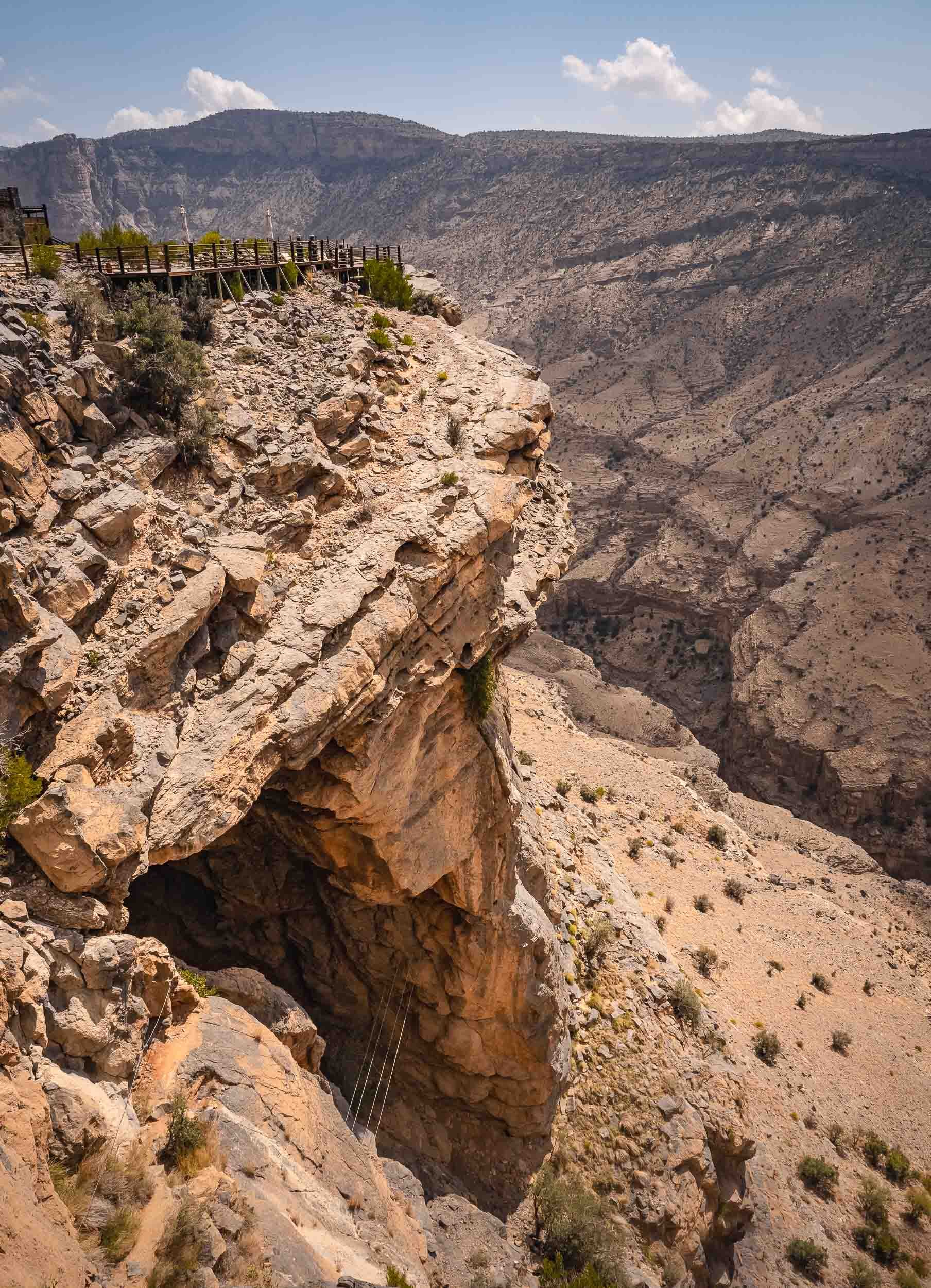
Via Ferrata
The next morning brought some adventure, as we climbed the via Ferrata, which literally starts at the hotel lobby. You can see the iron rope on the bottom left and the rope bridge across the cave in this image.

On the Edge
An incredible experience, and definitely recommended.
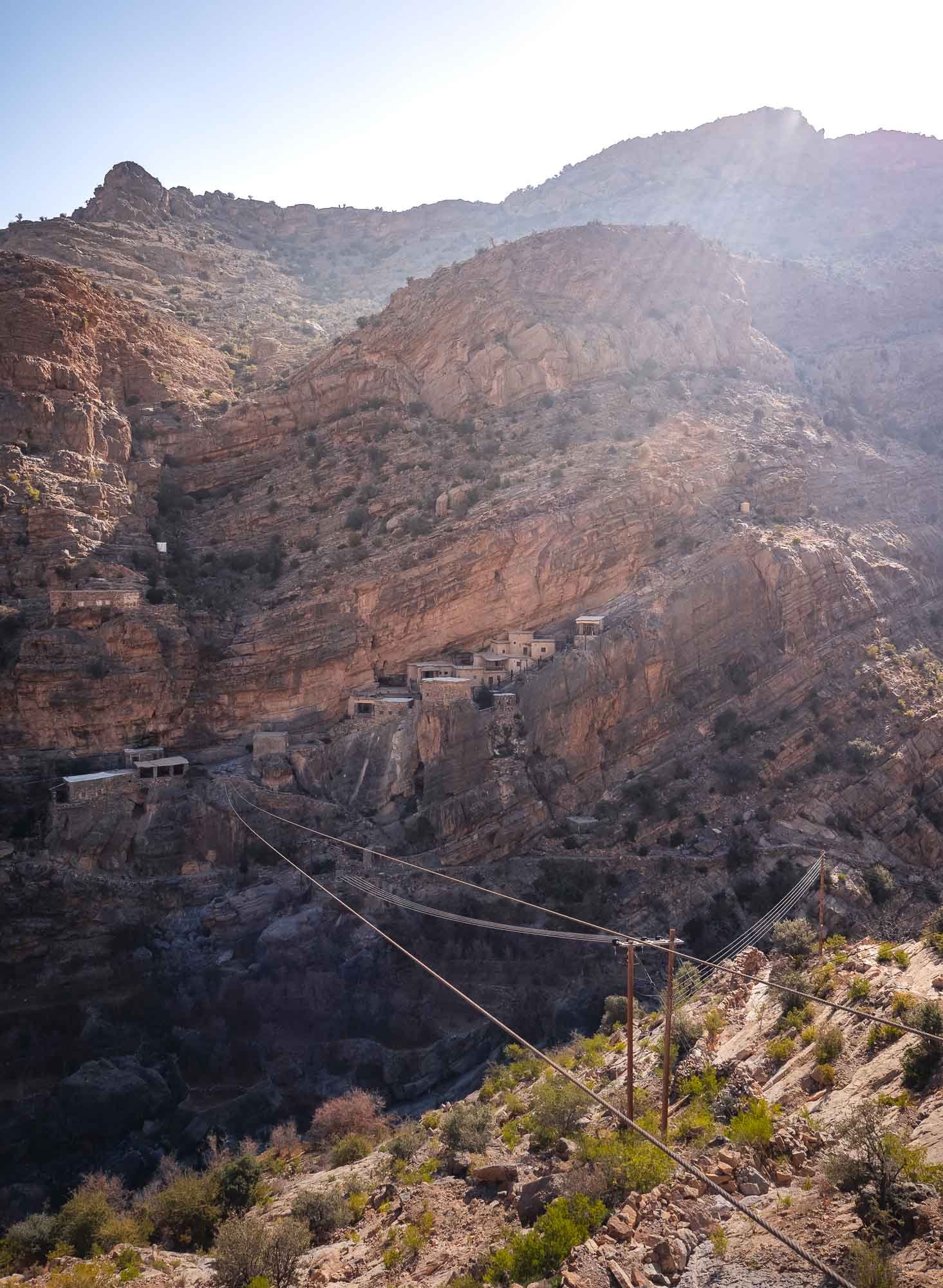
Alsuwjara Village
Our last day at Jabal Akhdar brought us to the cliff guest house, an old village from 500 years ago that is slowly being converted for tourism.
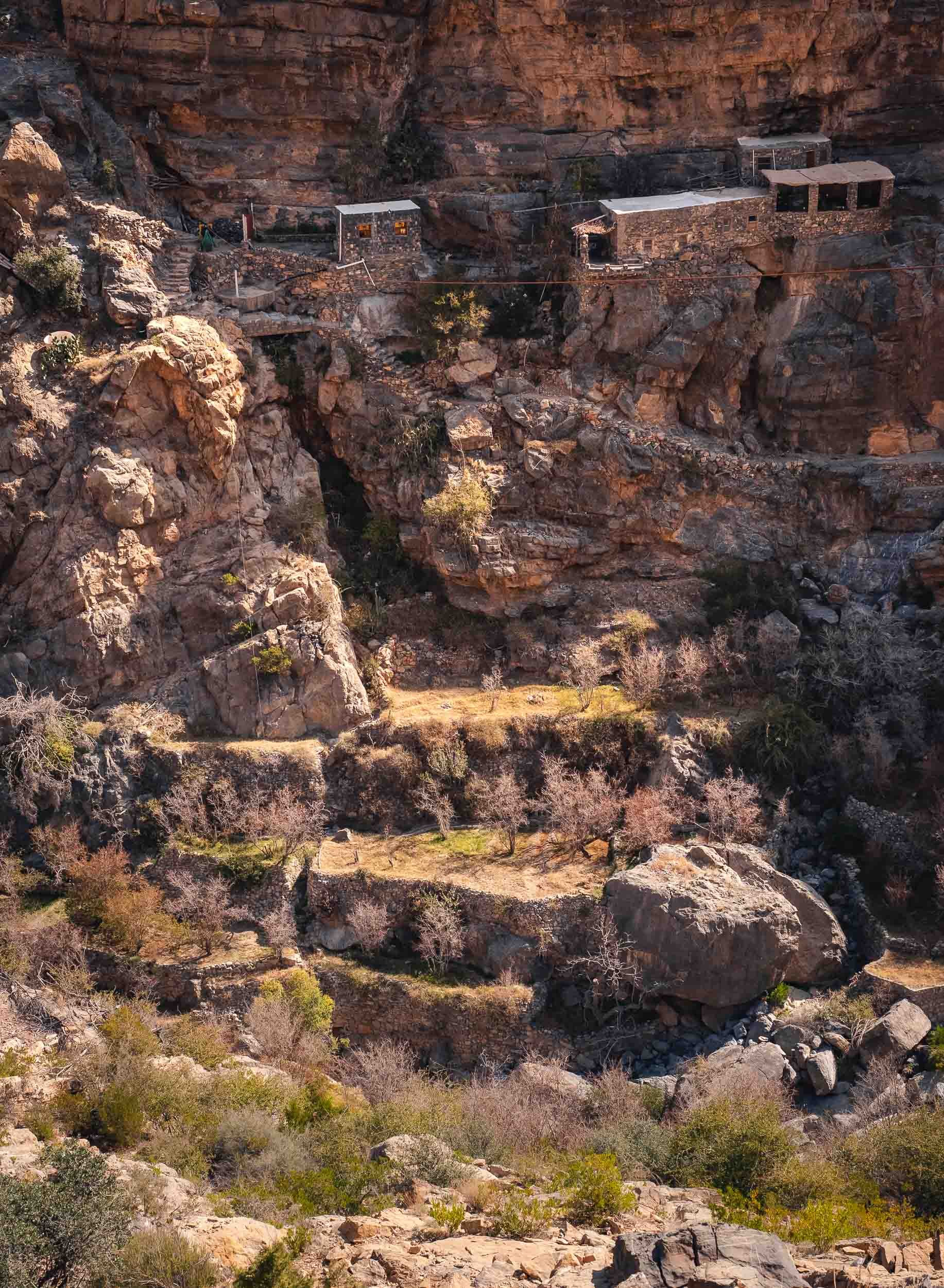
On the Rocks
We were lucky enough to get a tour organised directly by the local Omanis operating the place, who lived in the houses up until a few years ago.

Mountain Villages
We then moved to the towns of Al Aqr, Al Ayn and Ash Shirayjah, famous for their terraced farming, used to grow roses and other crops.
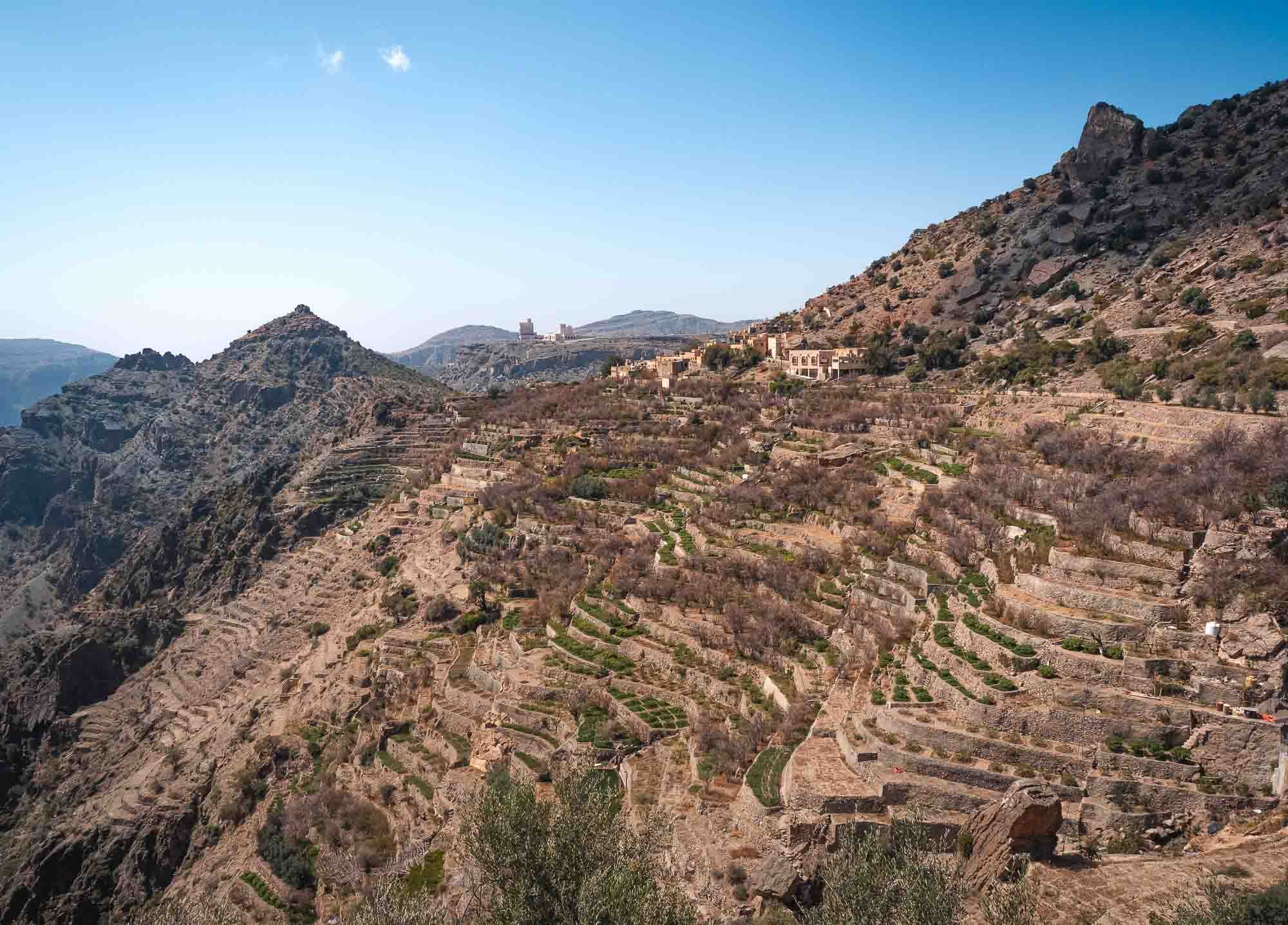
Farming
The terraces used to reach all the way into the wadi, but a lack of water in recent years meant a reduction in usable area. Nevertheless, the entire slope is green during the summer time.
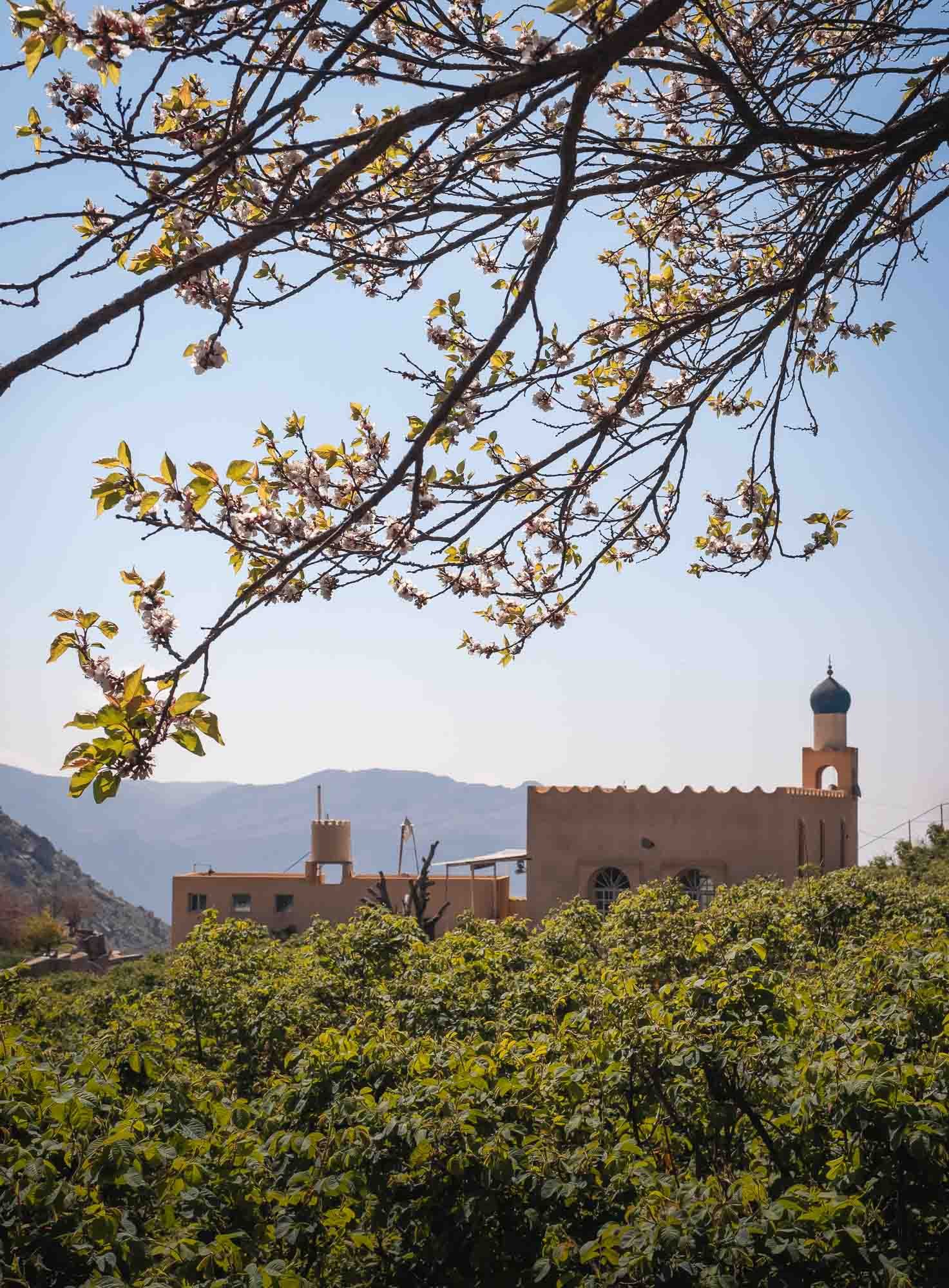
Pomegranate Season
One of the many blooming flowers at the time of our visit. The primary rose season was about to start as well.
Onwards to Muscat
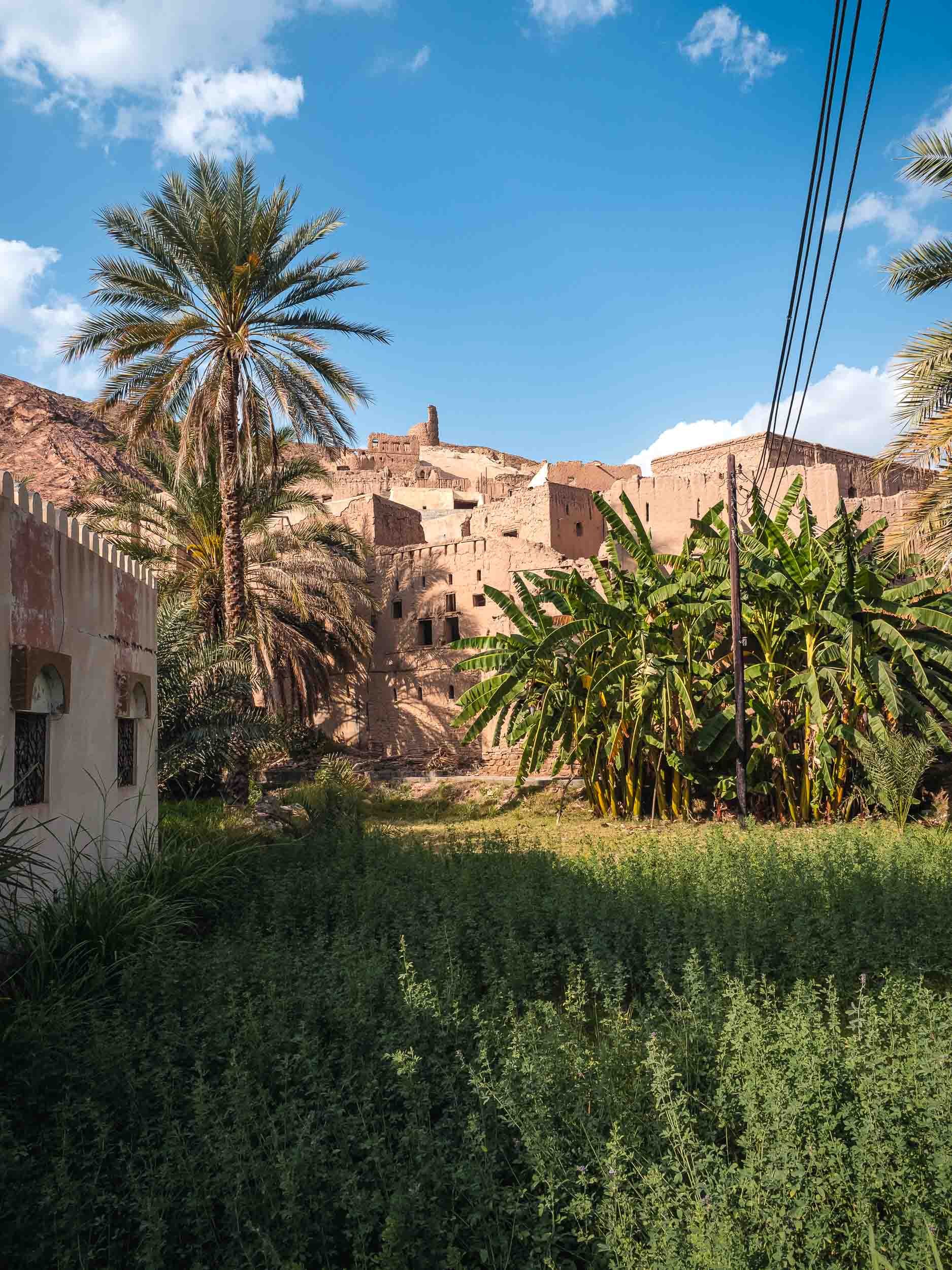
Birkat Al Mouz
This was our next stop on the way from Jebel Akhdar to Muscat.
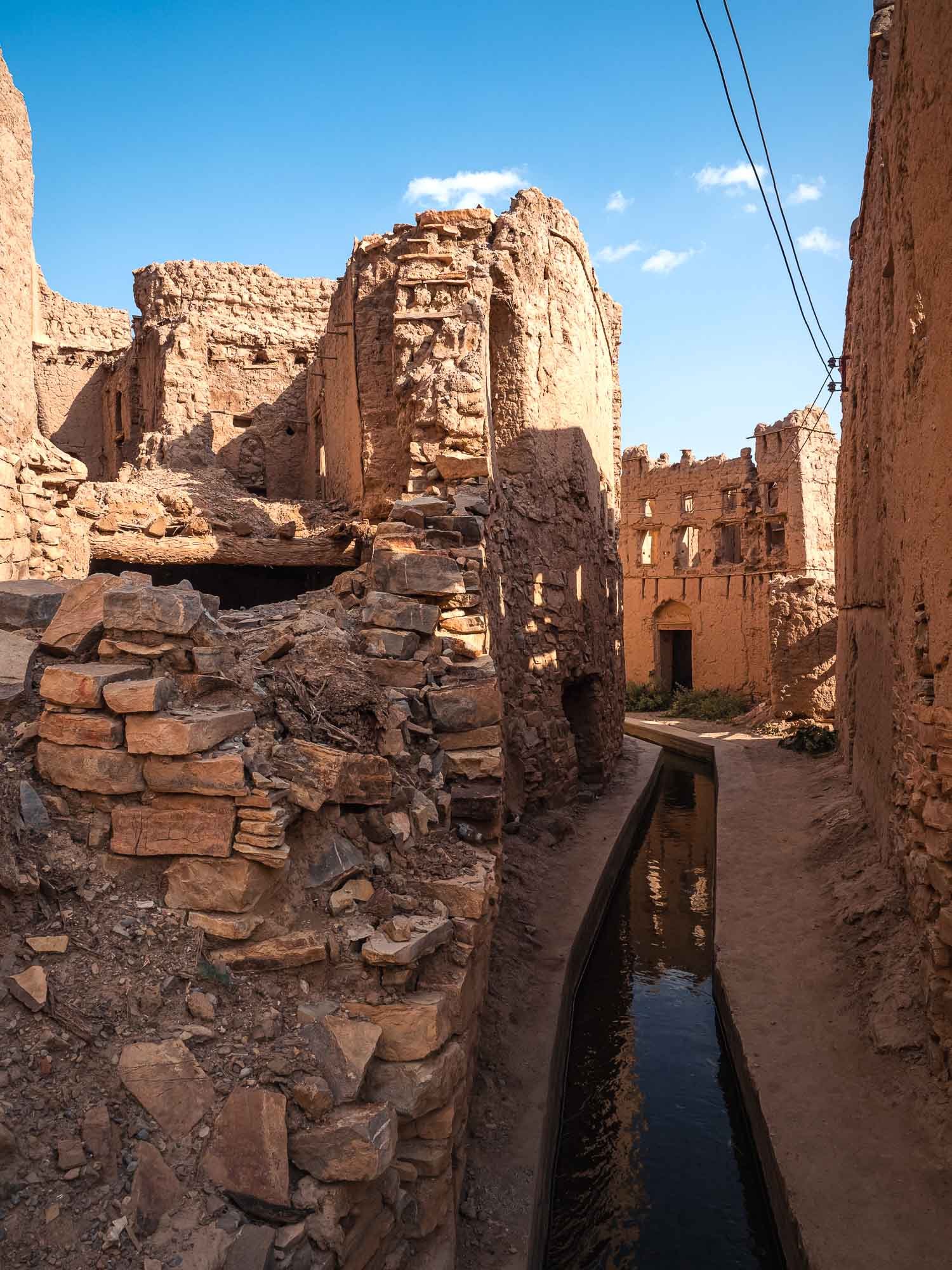
Falaj Al Khatmain
One of the five irrigation systems in Oman listed on the Unesco World Heritage site runs through the abandoned part of town.
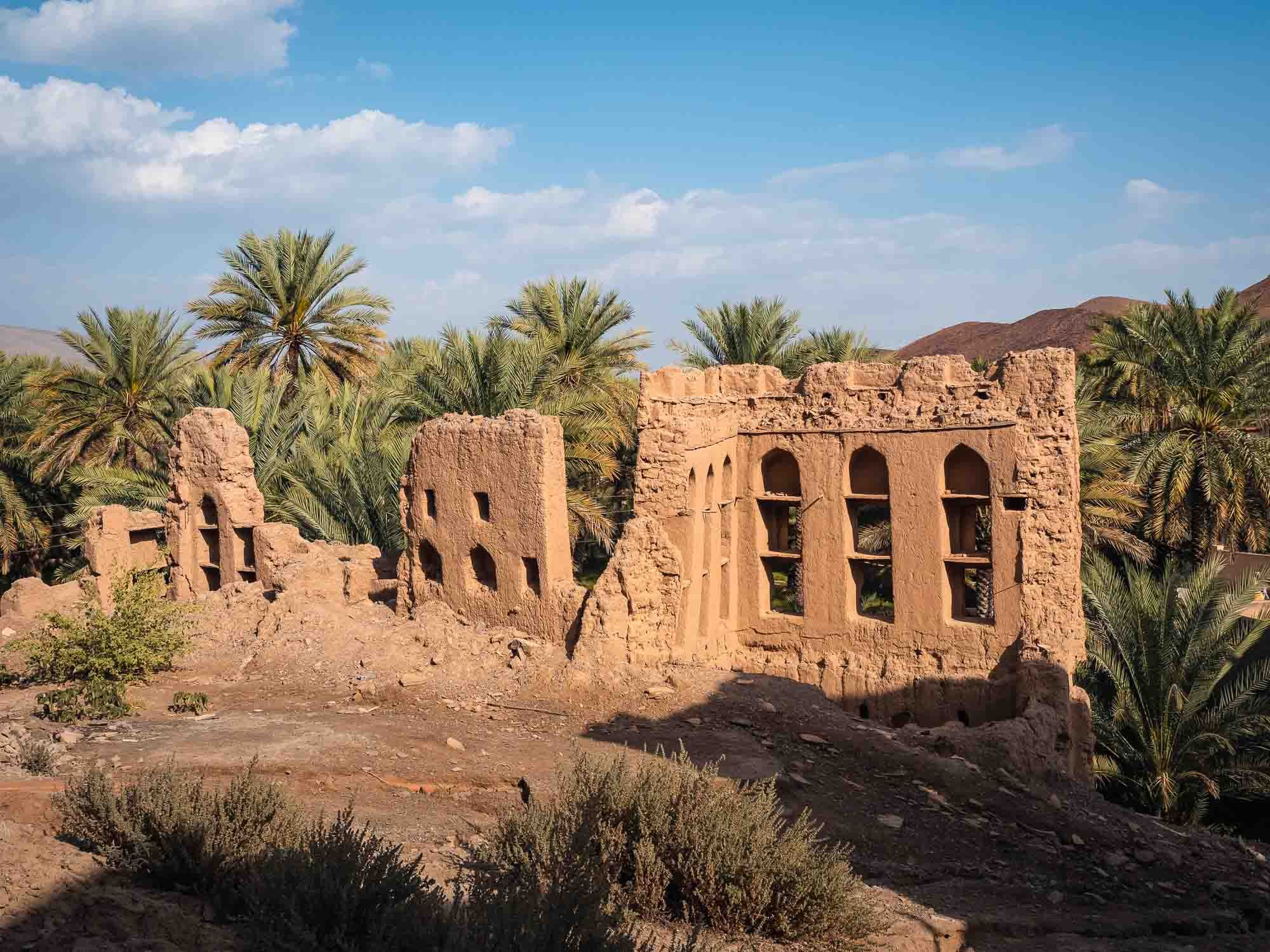
The Last Walls
The village contains two such parts, the larger one called Harat Al Sibani.
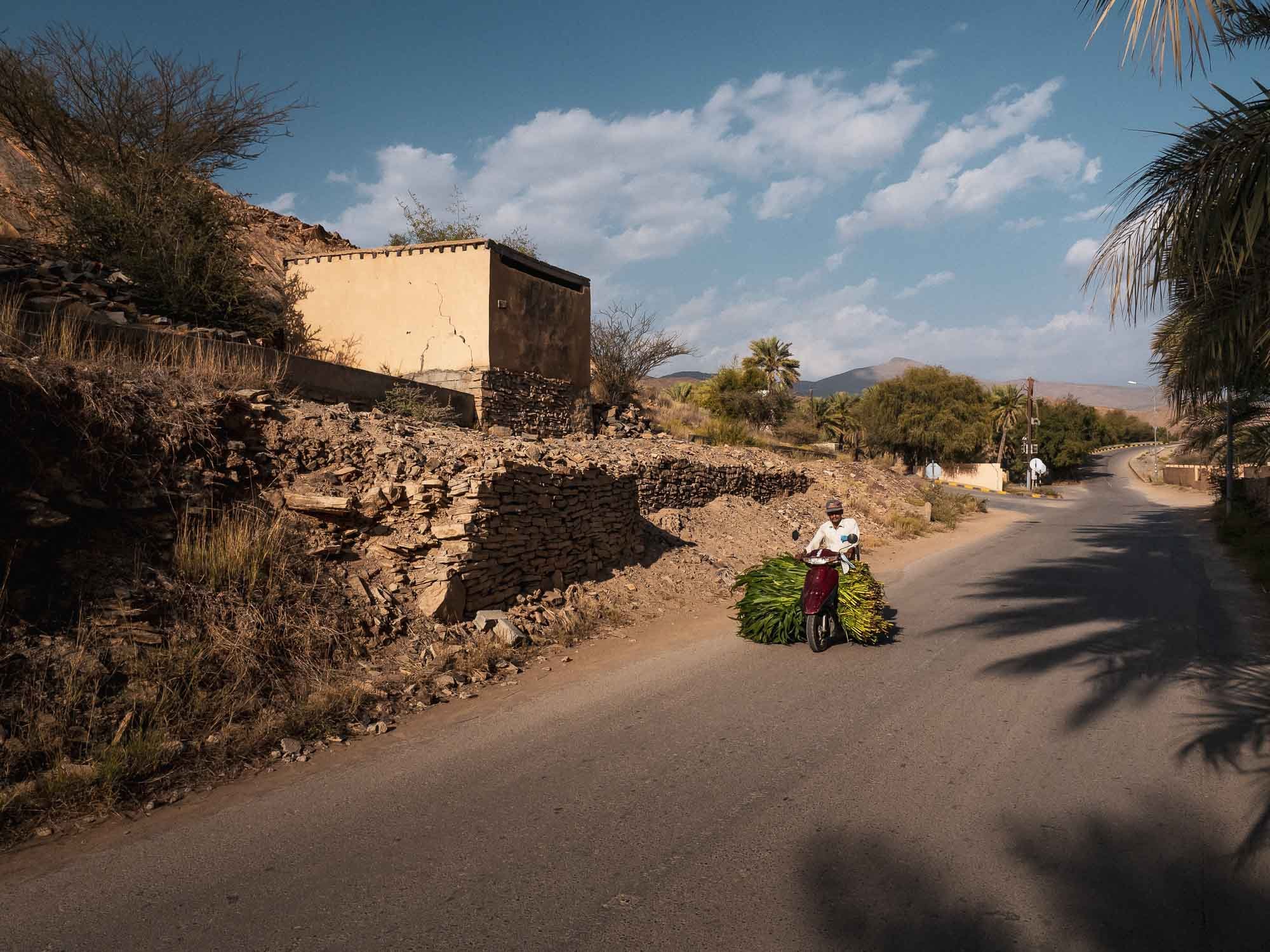
Banana Pool
That's the meaning of the city's name in Arabic - and the farms surrounding it give away why.
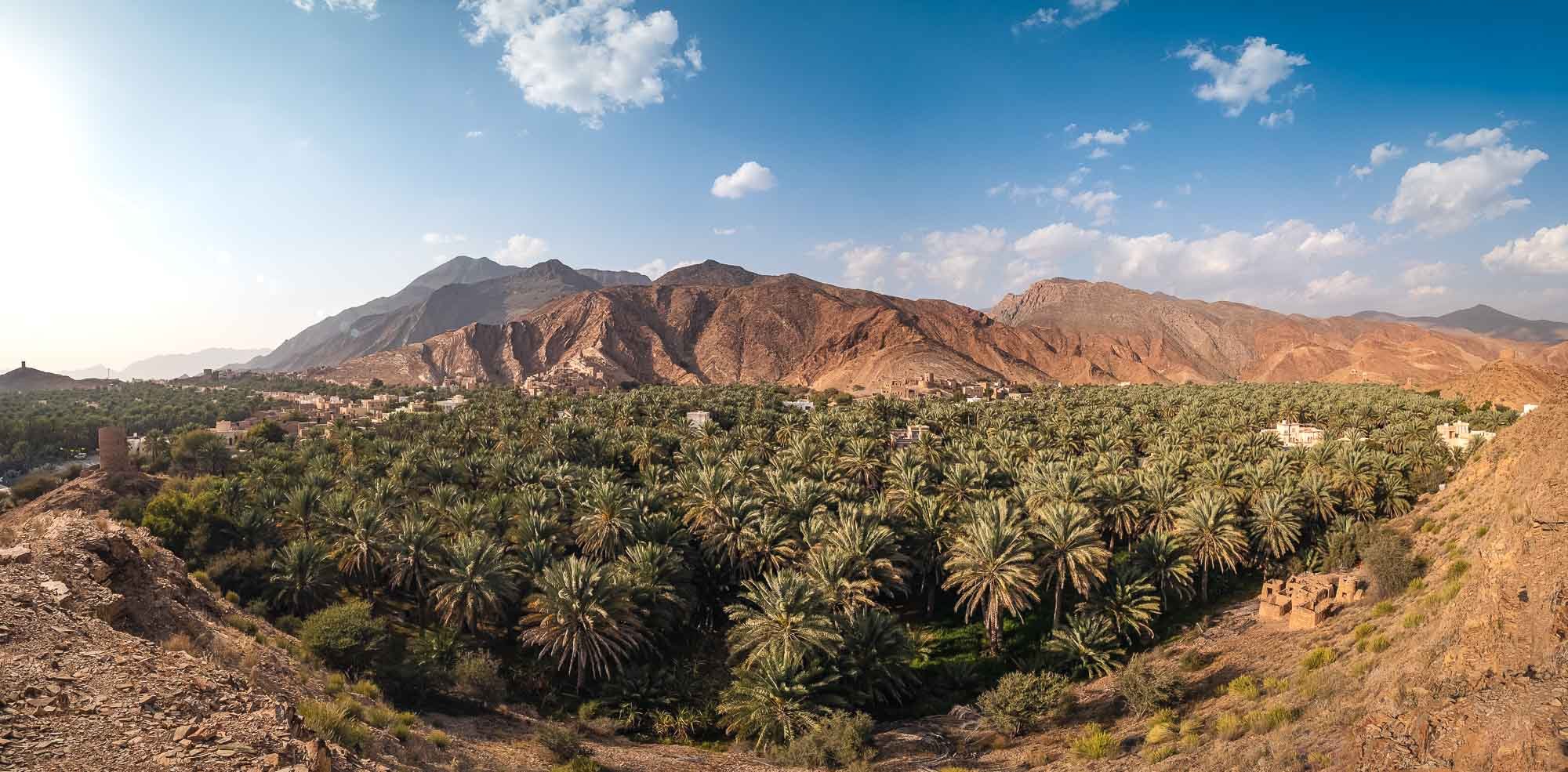
Quintessential Oman
A short climb on the other side of the farms rewards you with this scenery.

Harat Al Sibani
And this stunning view of the abandoned village.
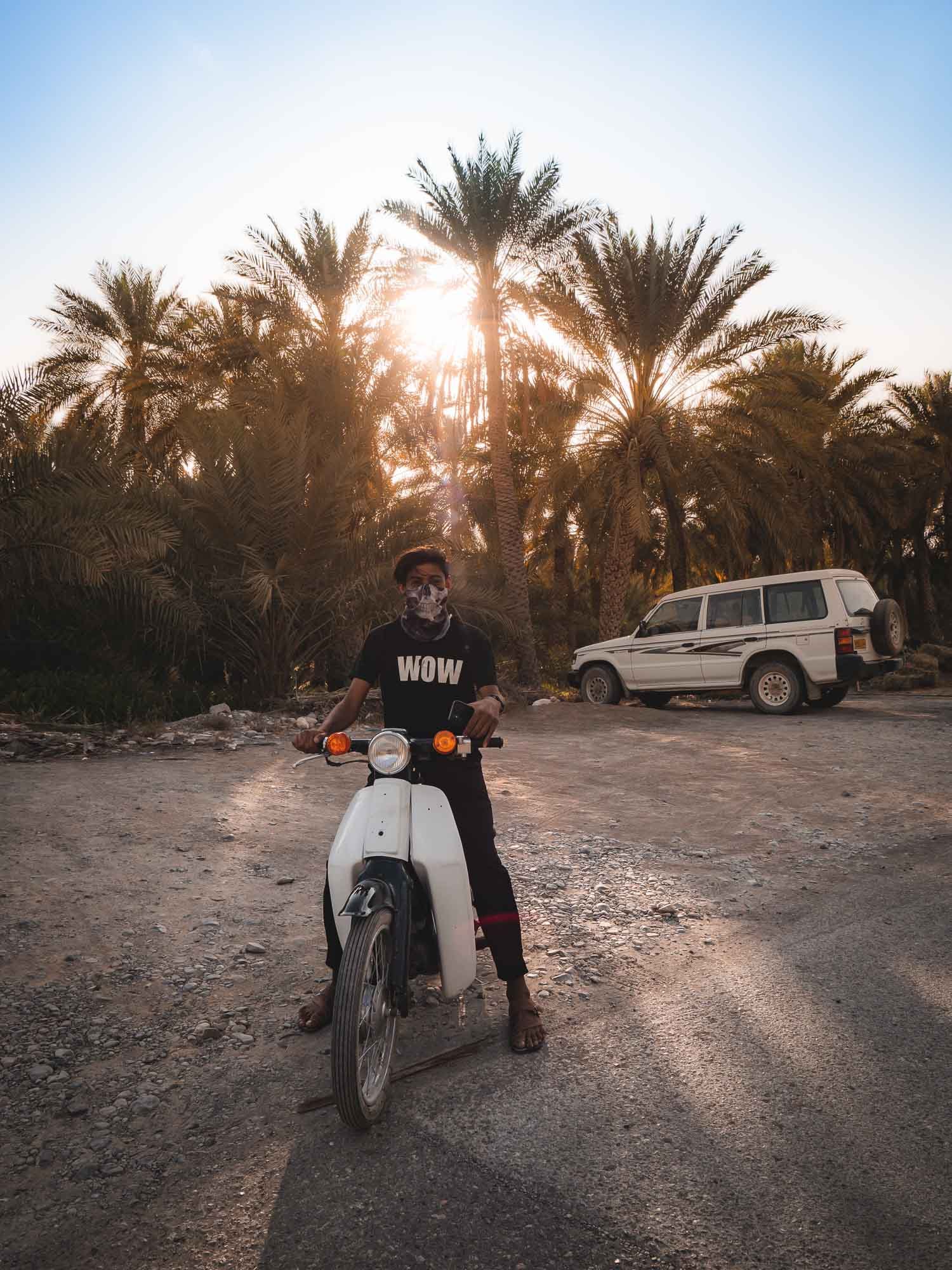
New Friends
Omani people are always curious, polite, and hospitable.
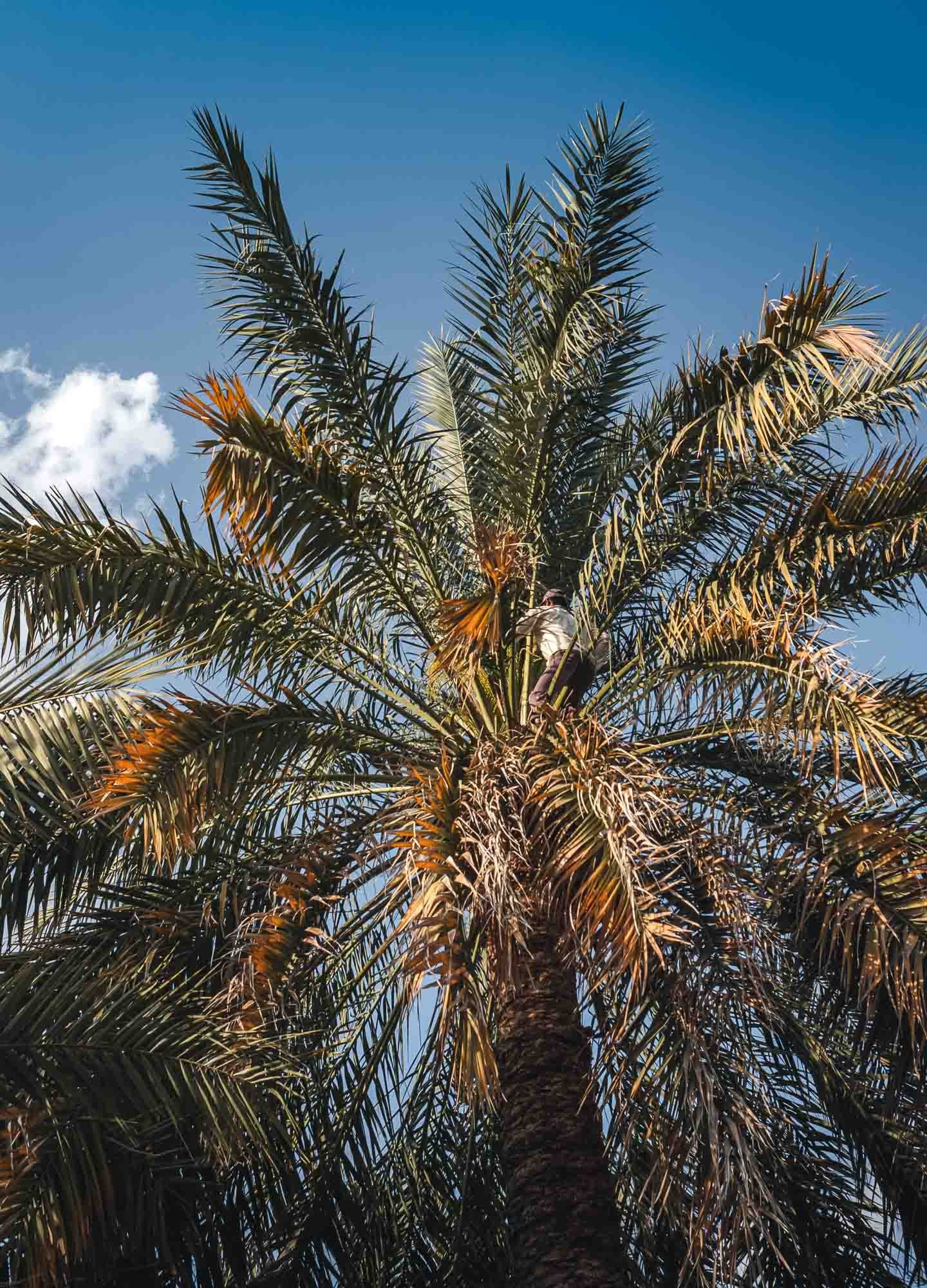
Work In Progress
Farming and plantations still make up a large amount of the economy in this area.
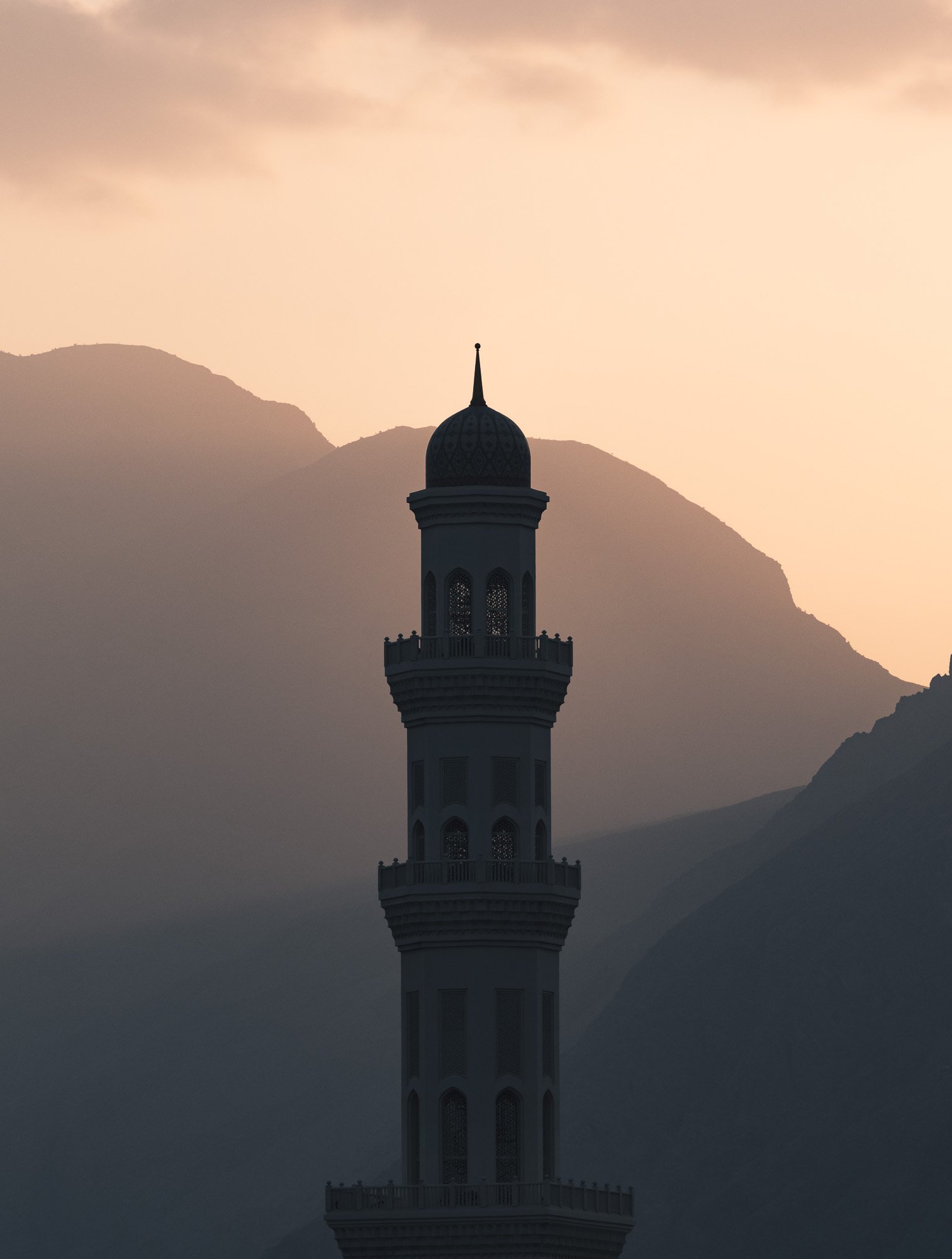
Hajar Layers
One kind of shot I can never get enough of.

Samail
Samail and its fort was our last destination before reaching Muscat - unfortunately we were too late to see it from the inside.
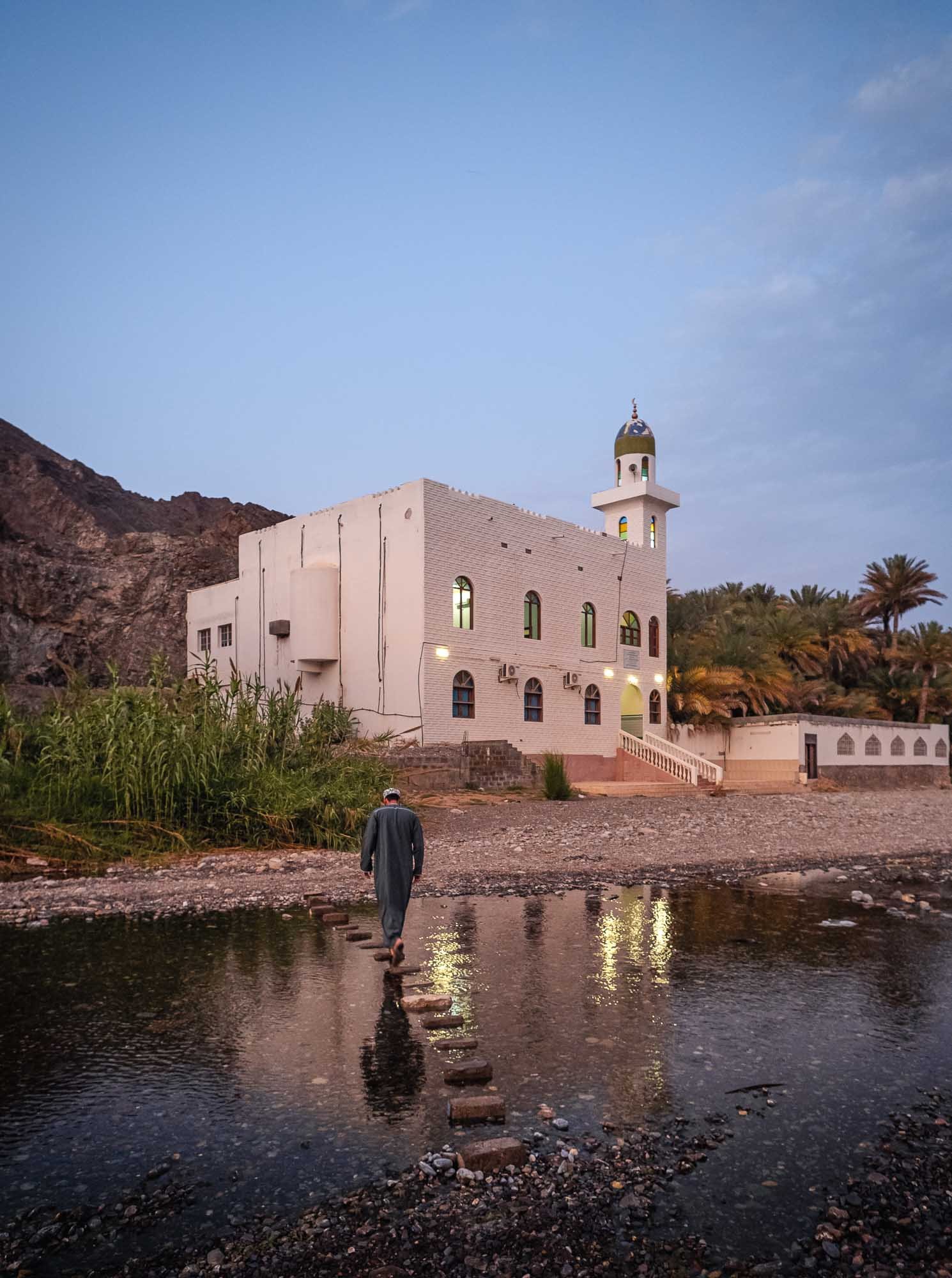
Steps to Prayer
The city is said to feature Oman's oldest mosque from 600 AD - not this one here though, which we found in our search for a good spot to watch the sunset.
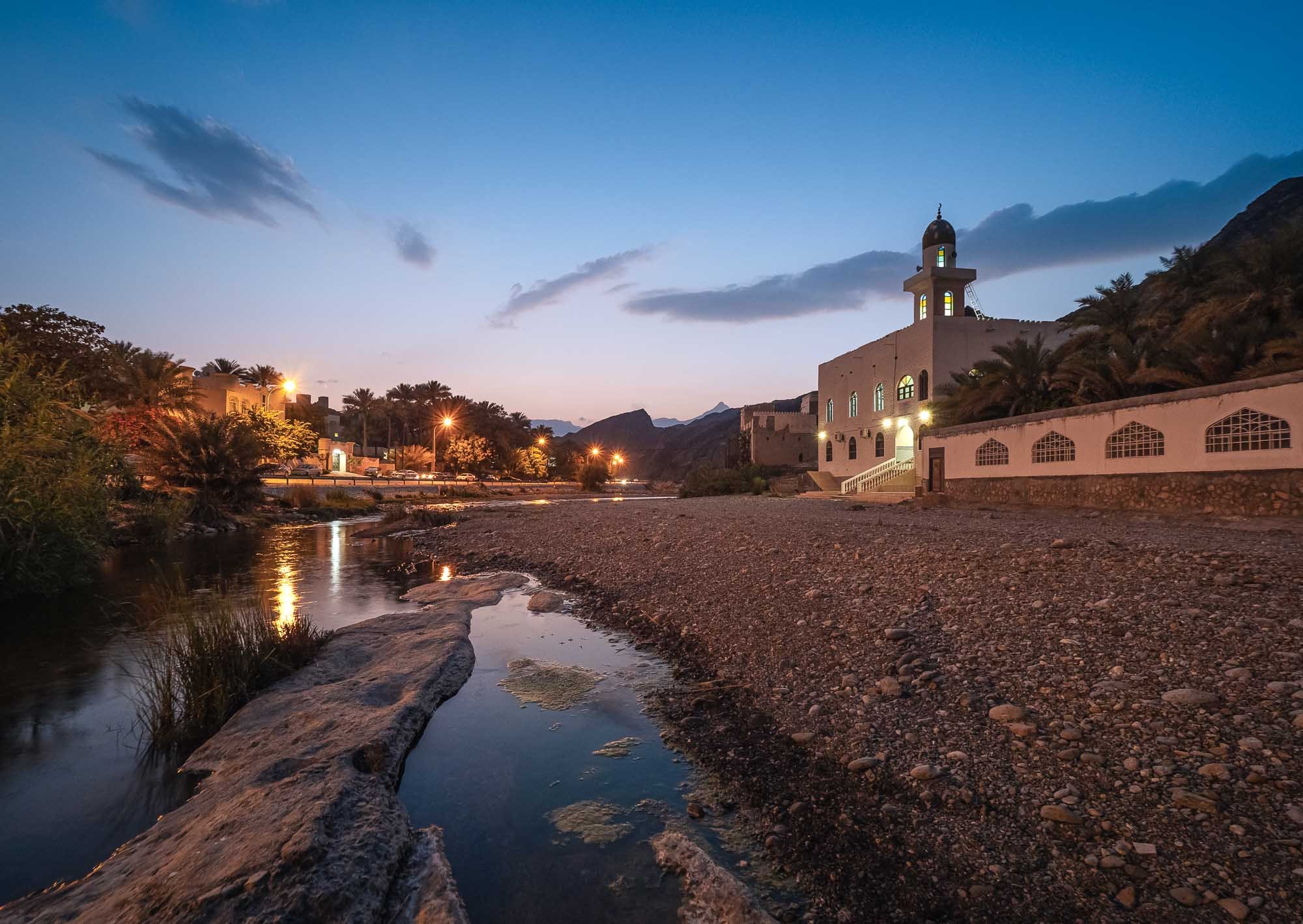
Evening Vibes
The sound of the prayer call and a few lonely frogs accompanied this scenery.
The Capital and its Surroundings
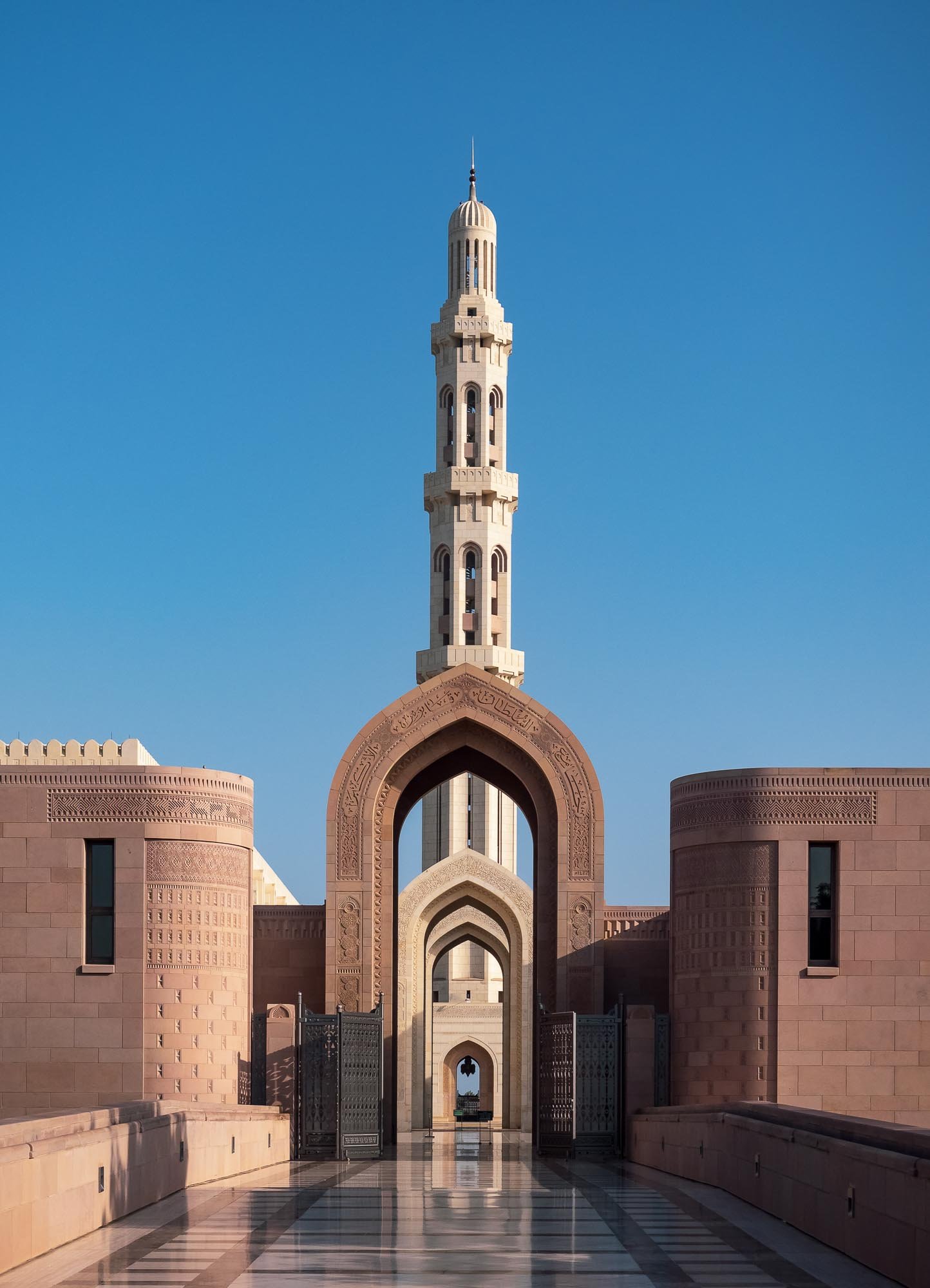
Muscat!
Our first stop in the capital had to be its arguably most famous sight: Sultan Qaboos Grand Mosque.
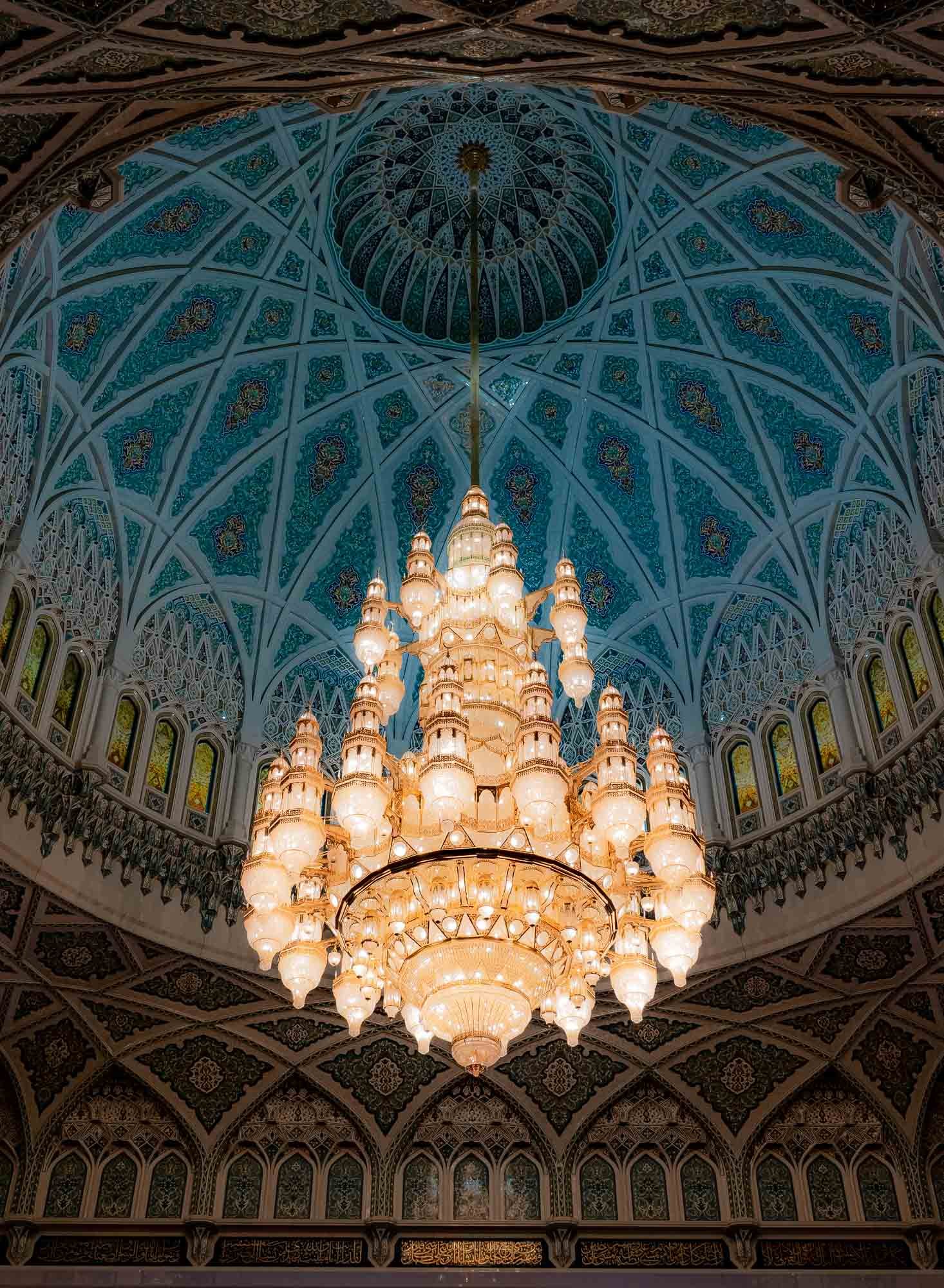
Lighting
The mosque's primary prayer hall can accommodate 6500 people - its chandelier used to be the largest in the world. The same is true for the carpet, with 1,700,000,000 knots over 4300 sqm. Both have been overtaken by Abu Dhabi's Sheikh Zayed Mosque.

Interior Views
In hindsight my OCD is really annoyed that they chandelier doesn't perfectly line up with the window.
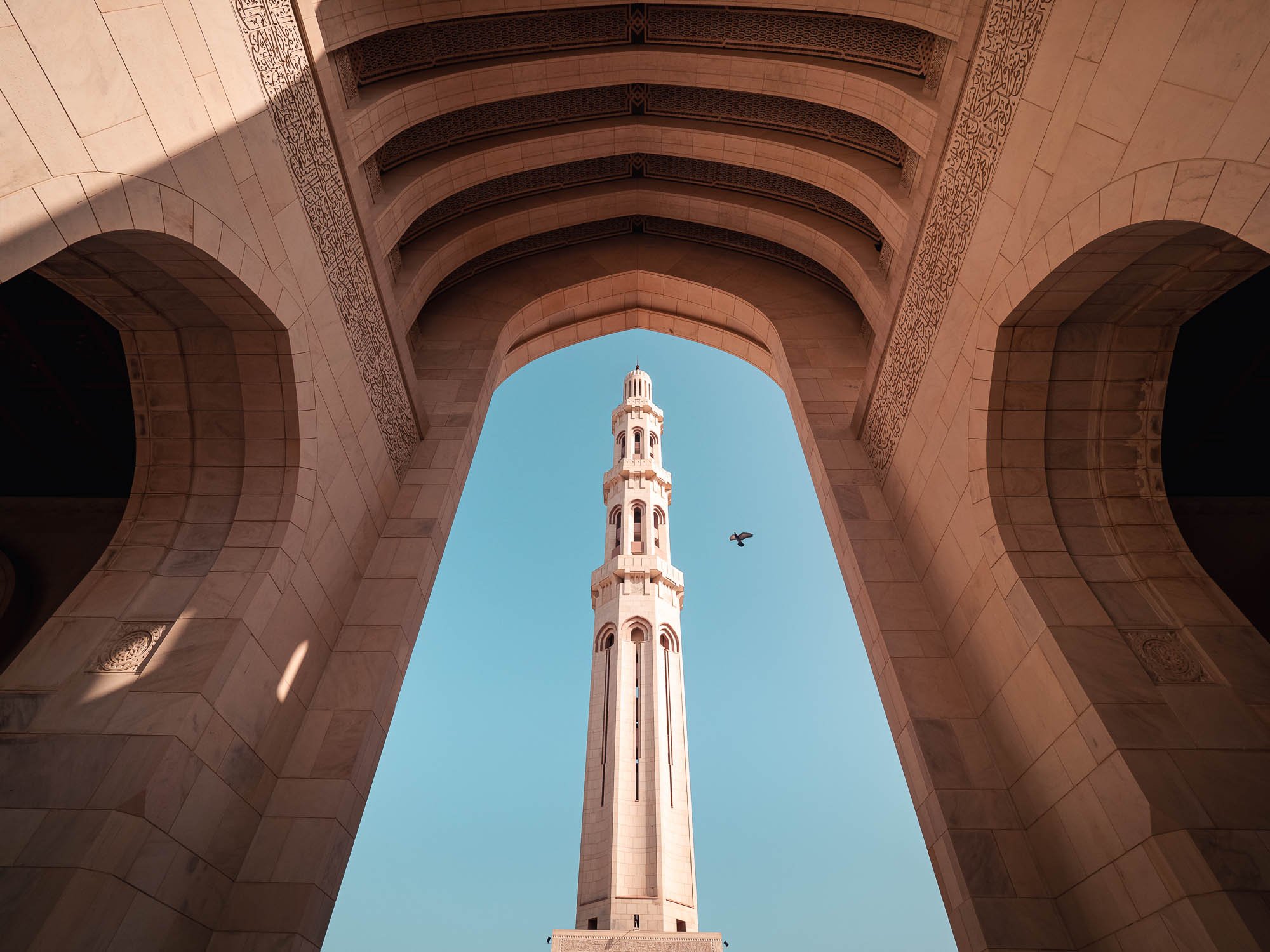
Upwards
The mosque was inaugurated in 2001, after 7 years of construction.
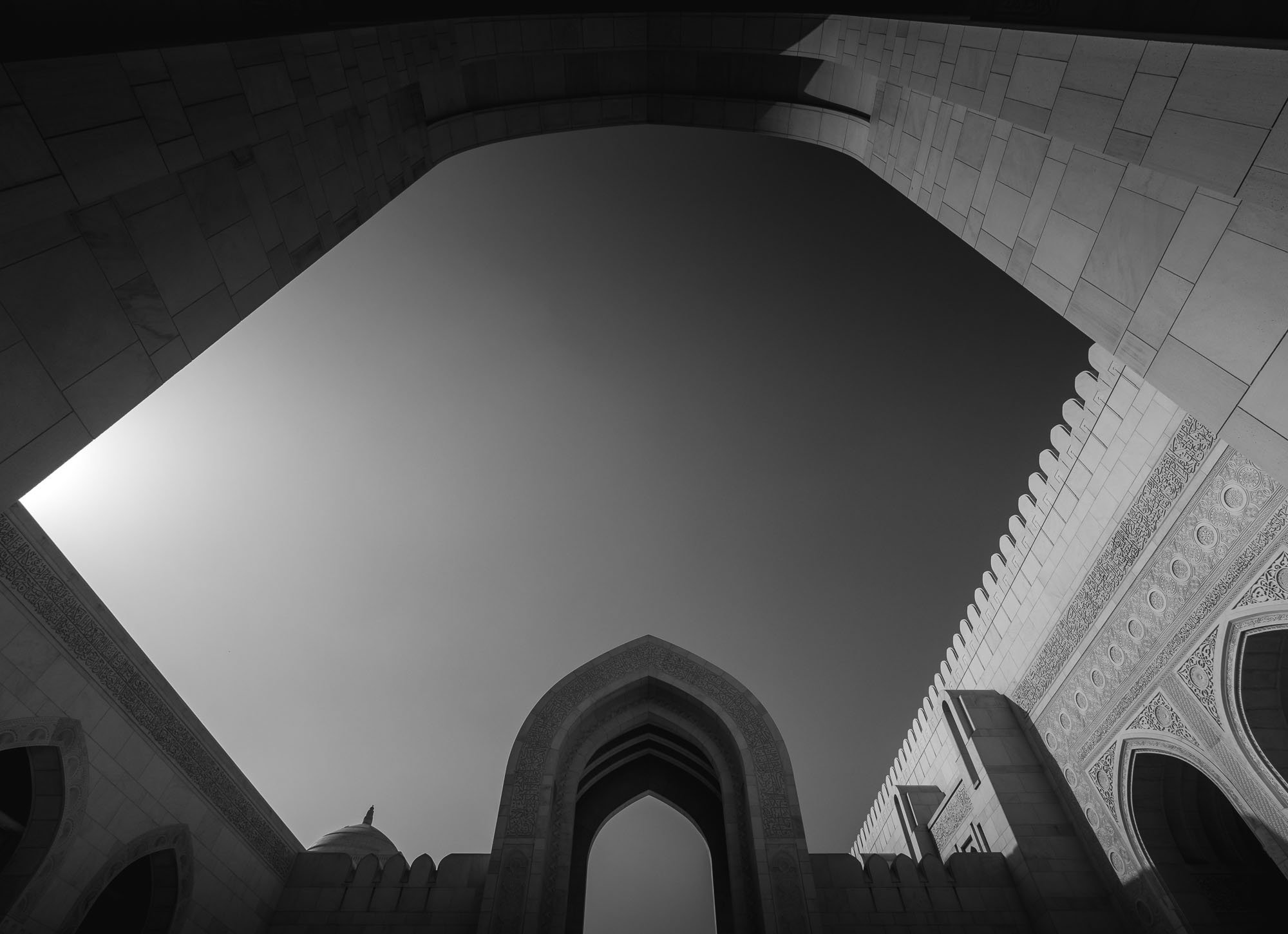
Materials
It was built from 300,000 tonnes of Indian sandstone.
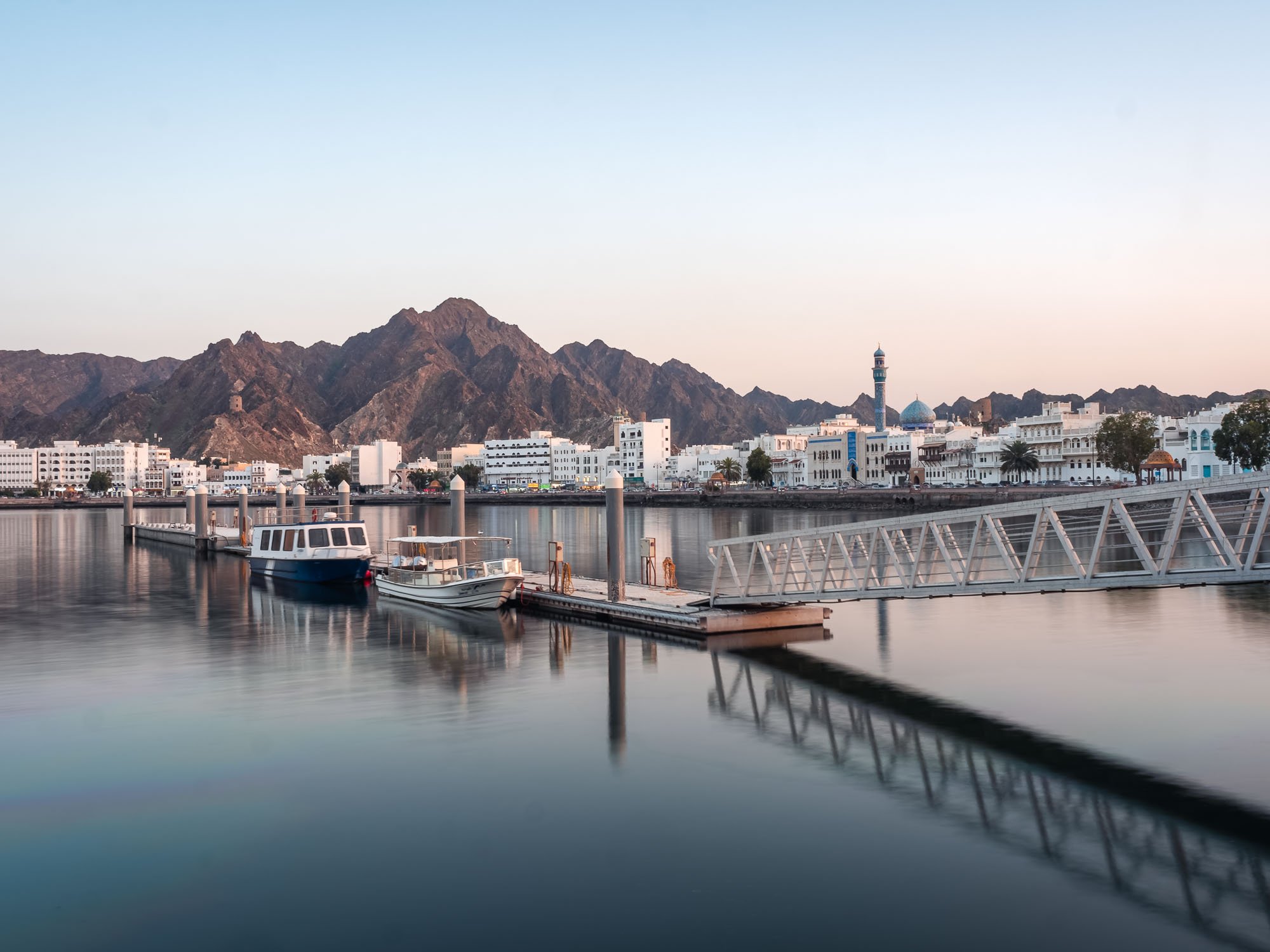
Muttrah Corniche
Our next destination was Muttrah, a trade and seaport city very close to Muscat.
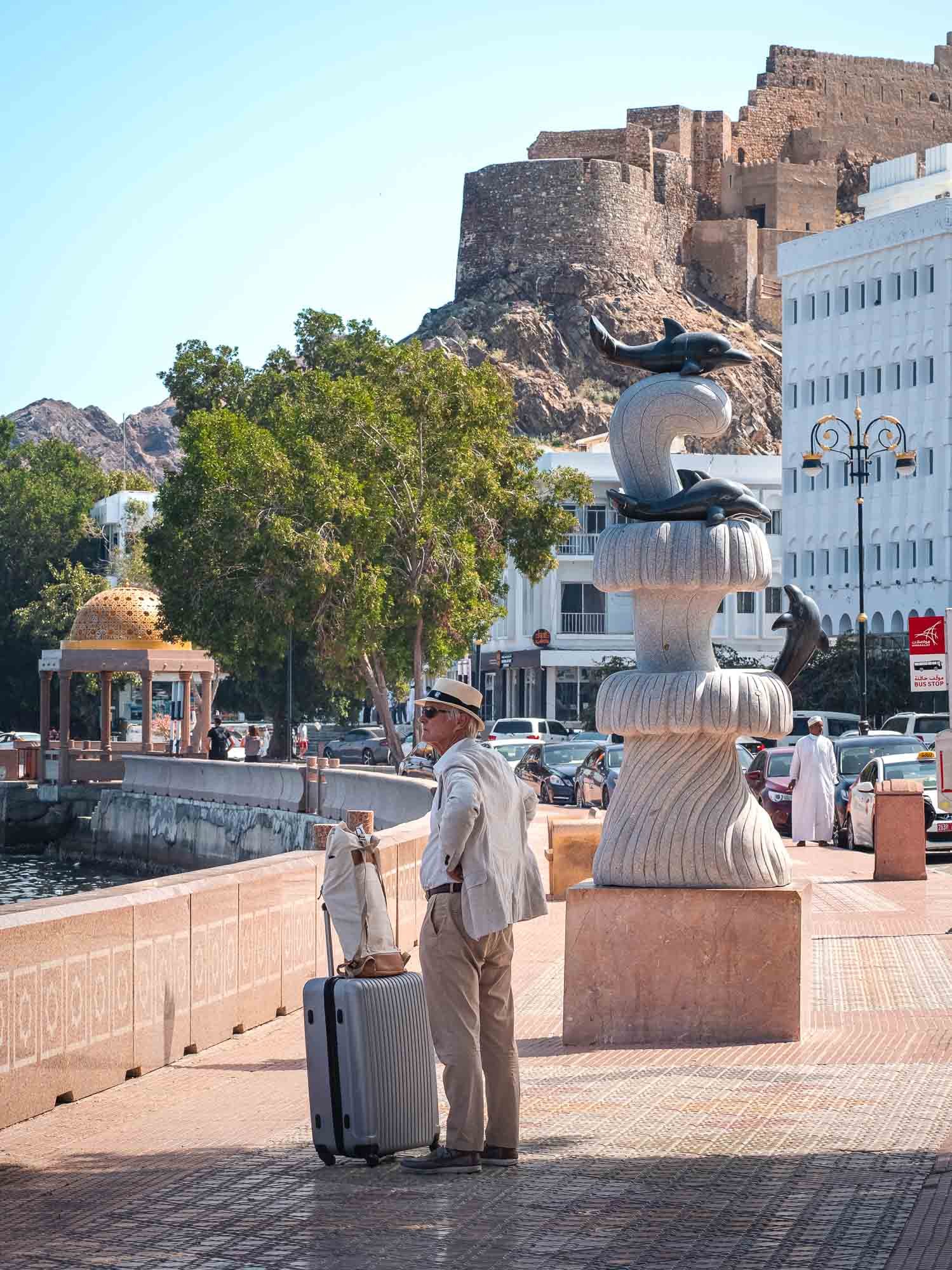
In Style
The presence of large cruise ships sometimes brings more sophisticated travellers than us to the town ;)
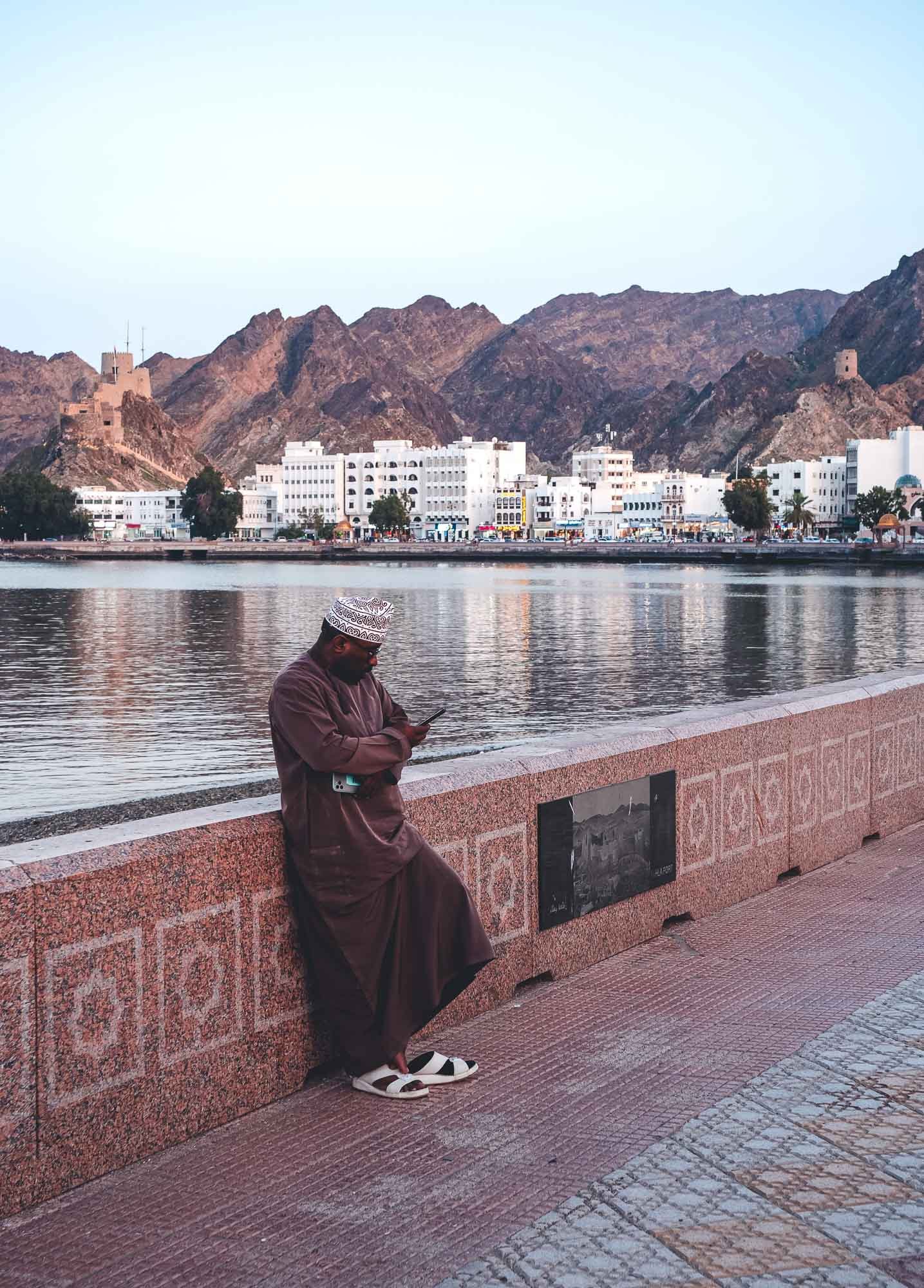
Juxtaposition
It makes for a nice contrast with the traditional Omani style.
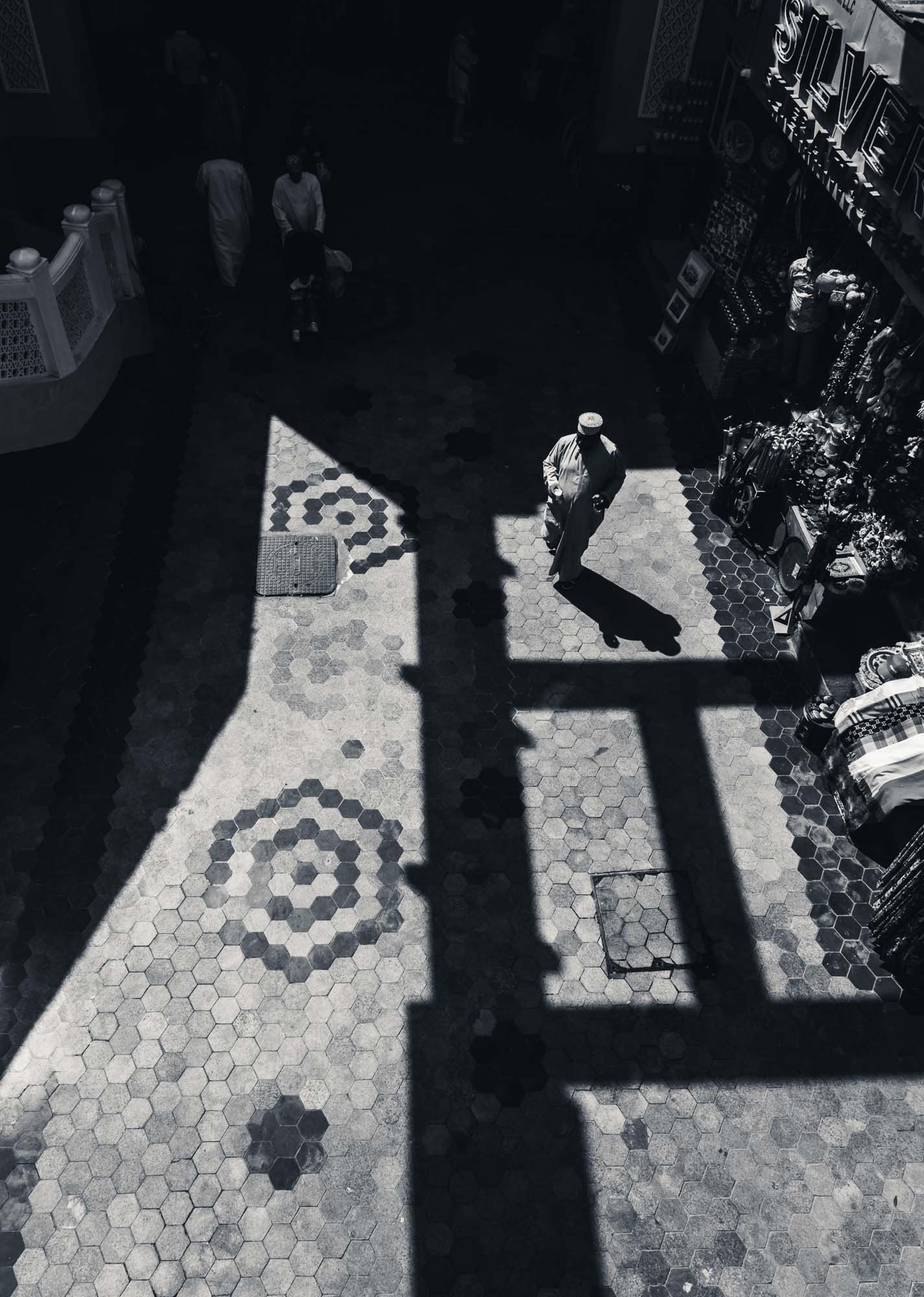
Souq Entrance
The city's souq is one of the most important in Oman, and dates back 200 years.
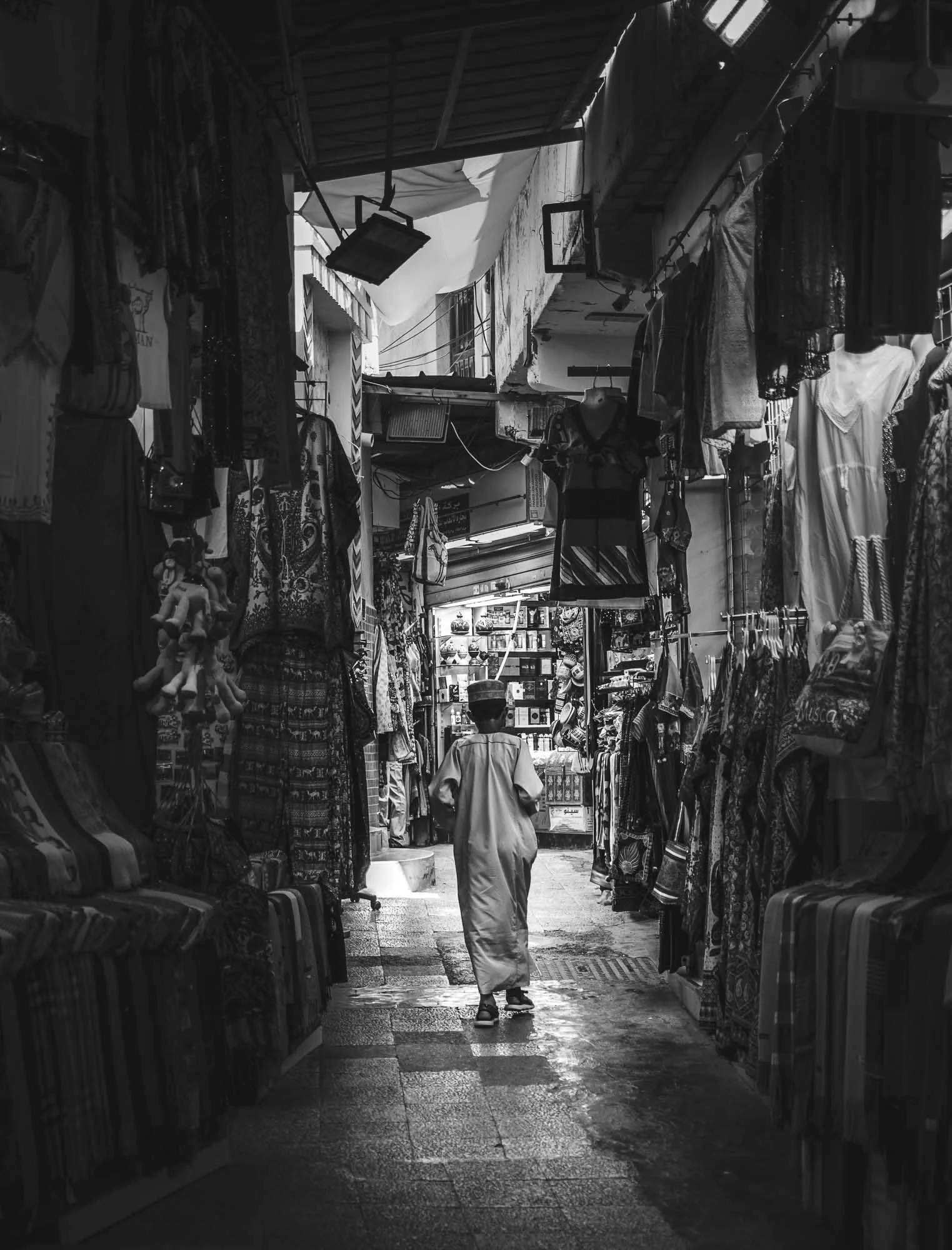
Into the Light
It's nicknamed the "Market of Darkness" due to the roof blocking most of the sunlight even during the day.
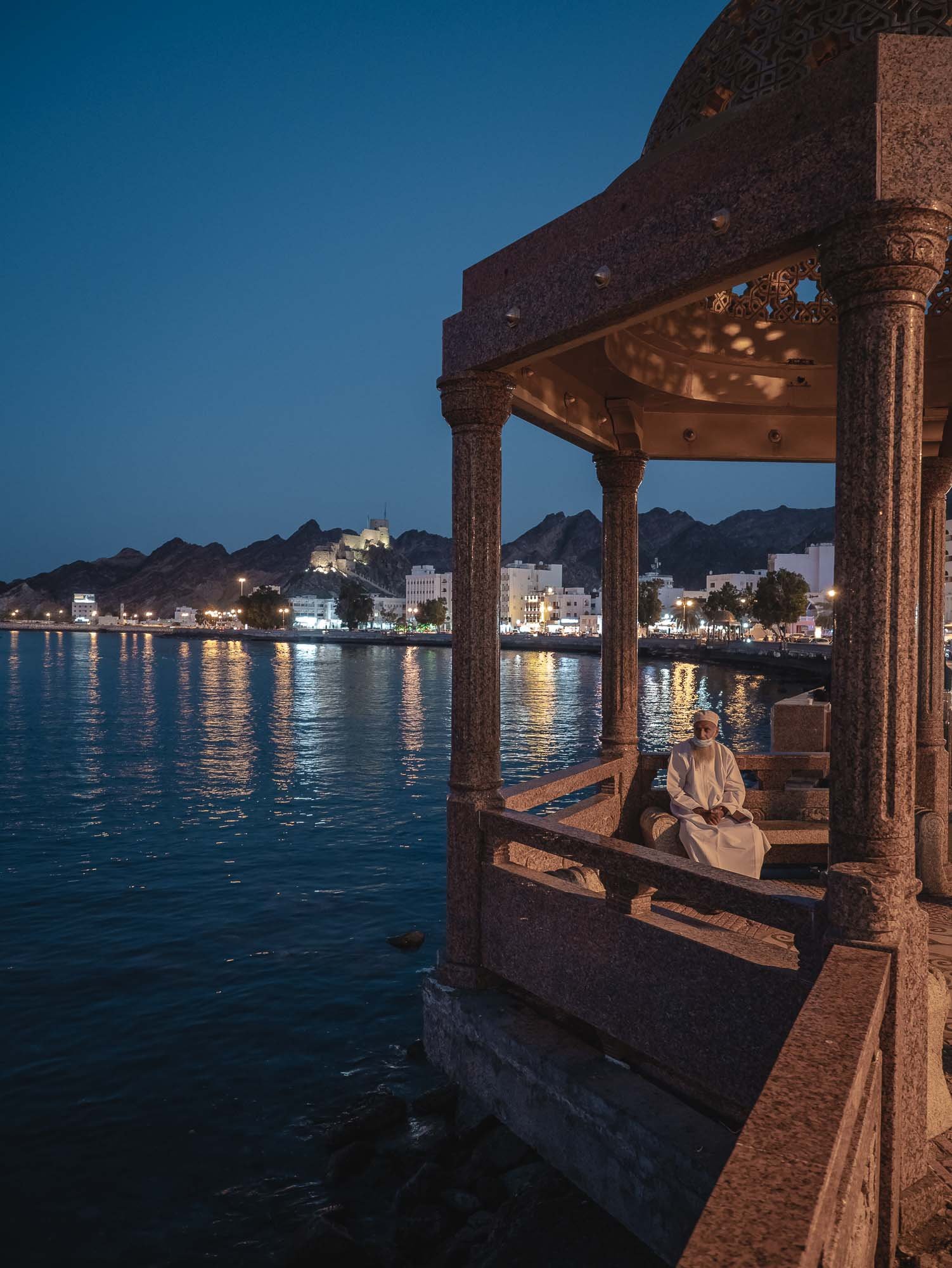
Muttrah
Evening views along the corniche, with the local fort in the distance.
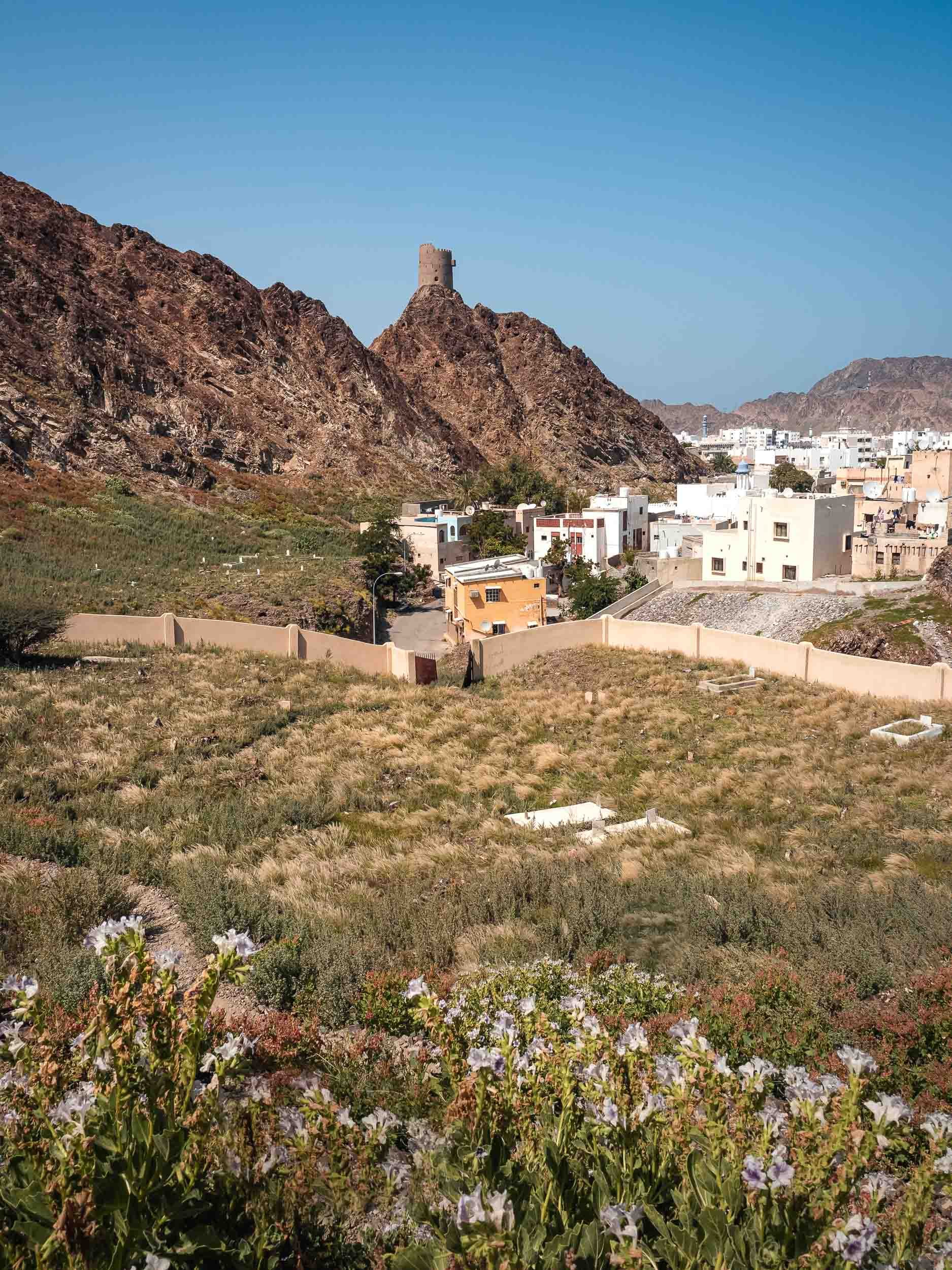
Hiking in the City
There's a 1h hike from Muttrah to Riyam, crossing green flower fields and a beautiful wadi - in our case filled with water - on the way.
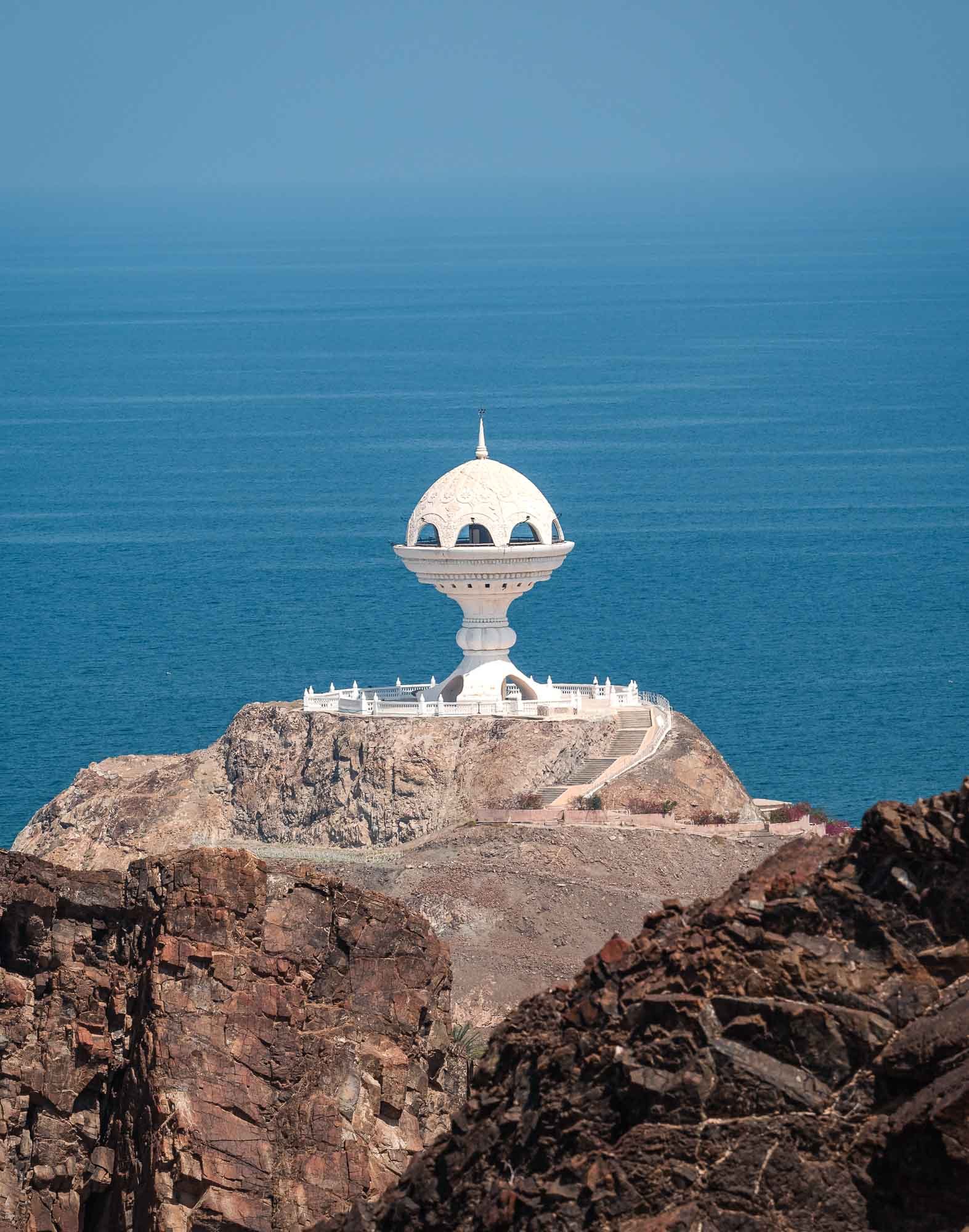
Riyam
At the end of which, you're rewarded with this view of the Riyam Park Monument, often termed as the "giant incense burner" due to its shape.
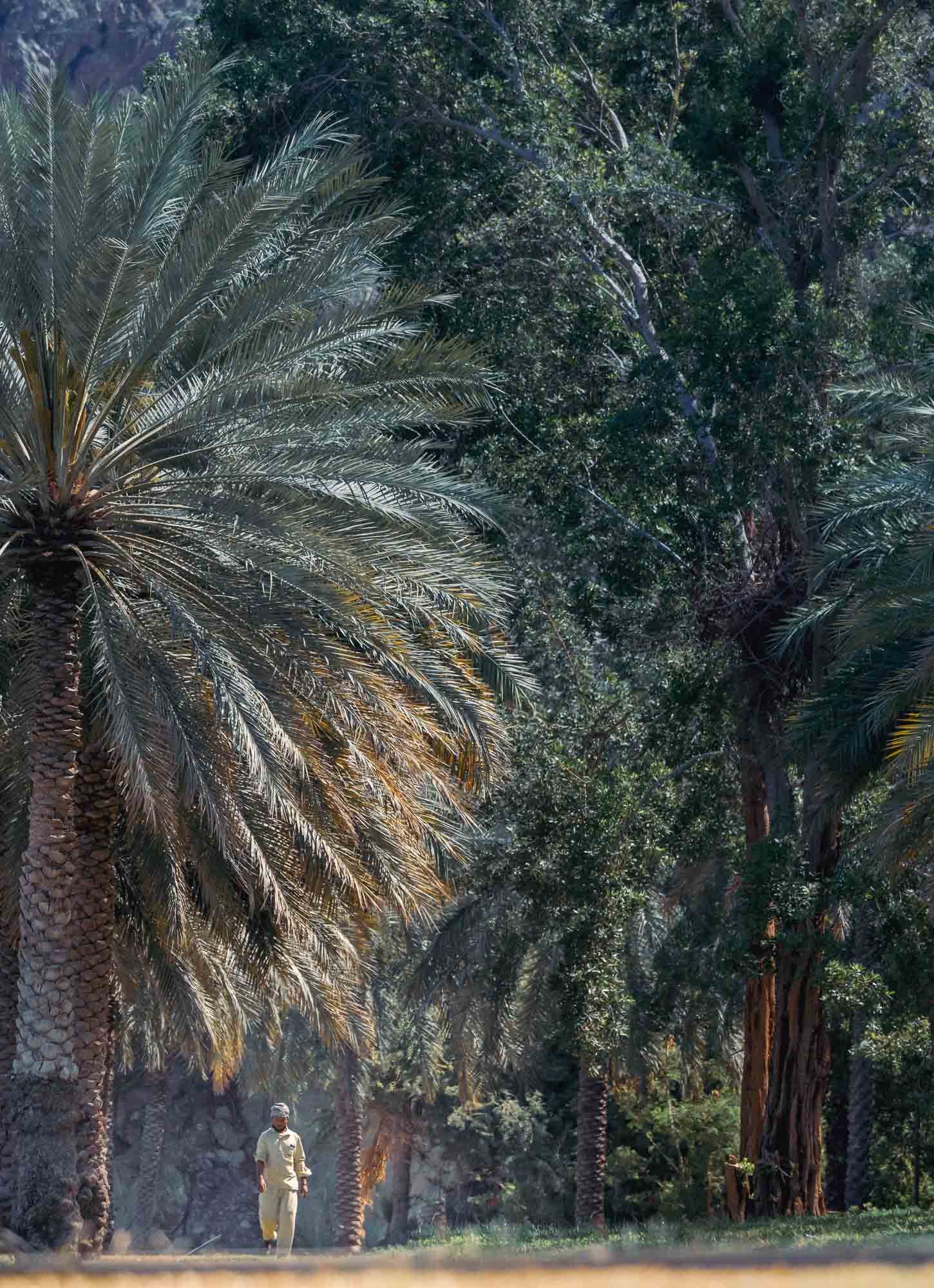
Old Muscat
Our next destination was "Old Muscat", the historic part of the city still housing many government institutions. But not before crossing a few more farms on the way, such as this one.
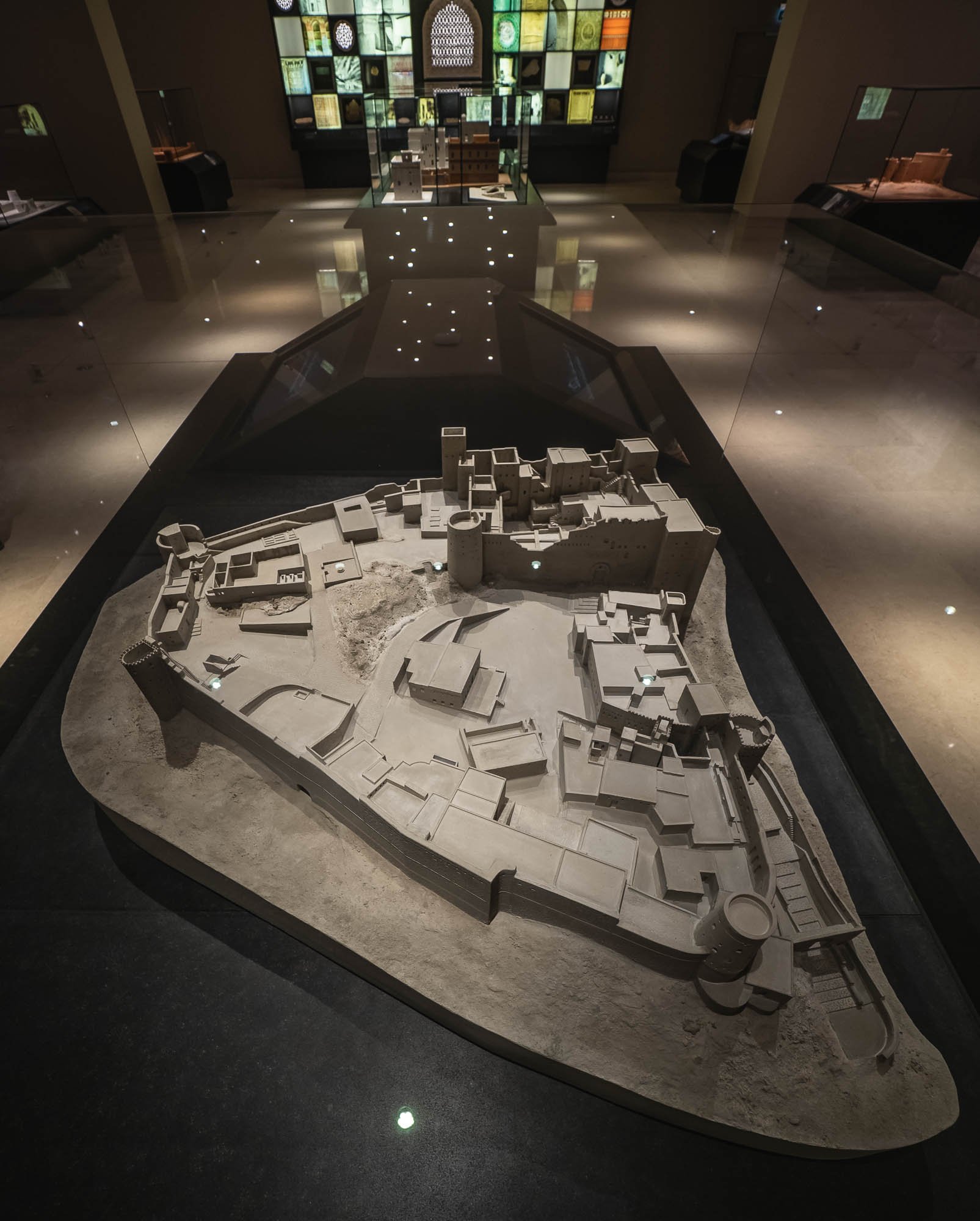
National Musem
The city is also home to the National Museum, with some interesting exhibits. I often find the history of the Middle East to be completely underrated and possibly overshadowed by its recent development. Humans have set foot here some 400,000 years ago, and there is an incredibly rich and accessible past. Reognise this fort model? It's Bahla!
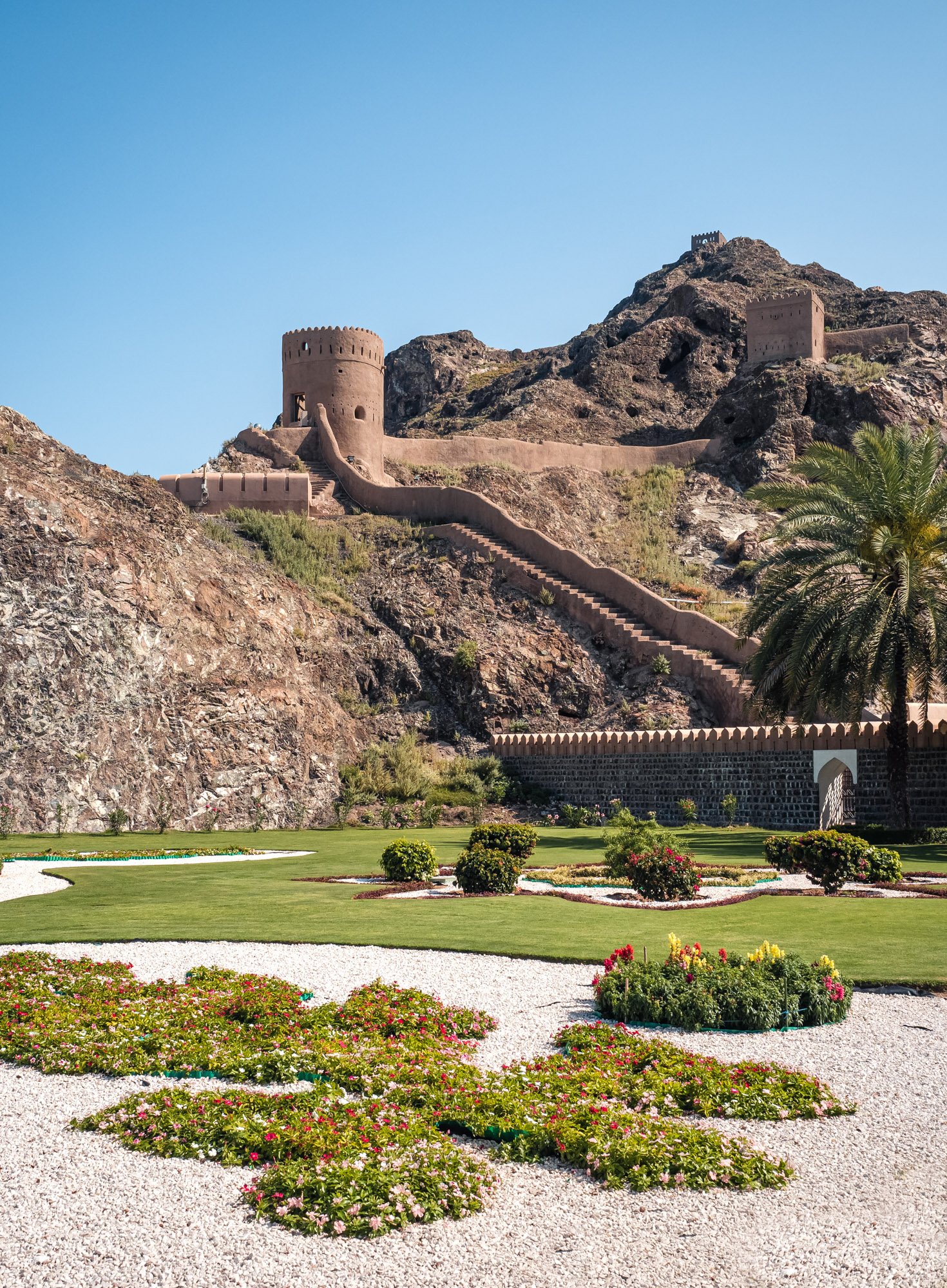
Jalili Fort
Old Muscat is also home to Al Jalili fort, built by the Portuguese in the 1500s and said to have been used as both a jail & refuge for the Omani royals. This one does not seem open to the public.
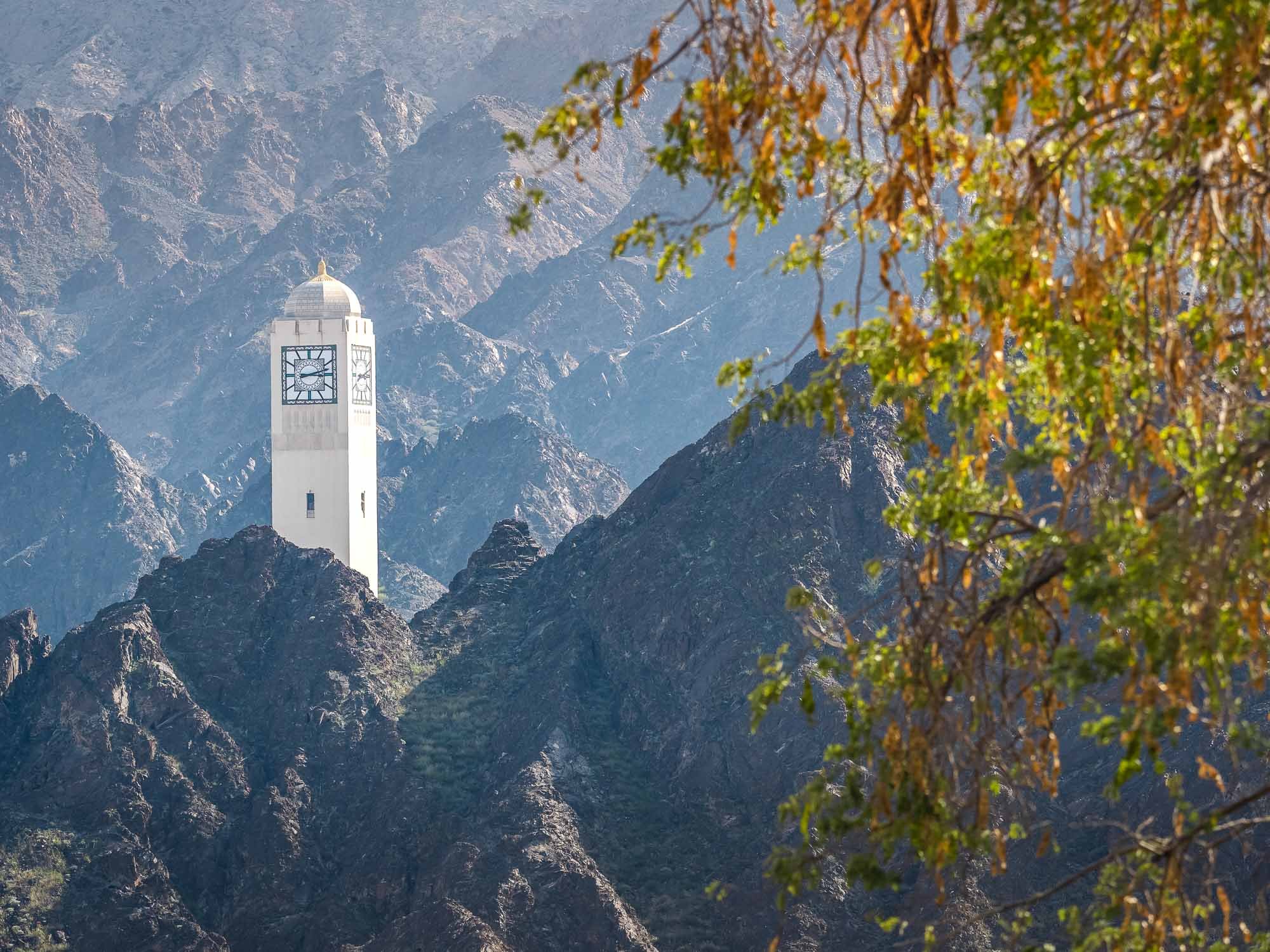
Al Bustan
Driving a bit further along the coast brings you to the Al Bustan, home to the famous hotel (also where my grandmother used to stay in the 80s) and the State Council, which is the building this clock tower belongs to.

Qantab
Another few kilometres and you reach Qantab, home to this beauitful beach and a natural stone arch in the sea, which we will see later...
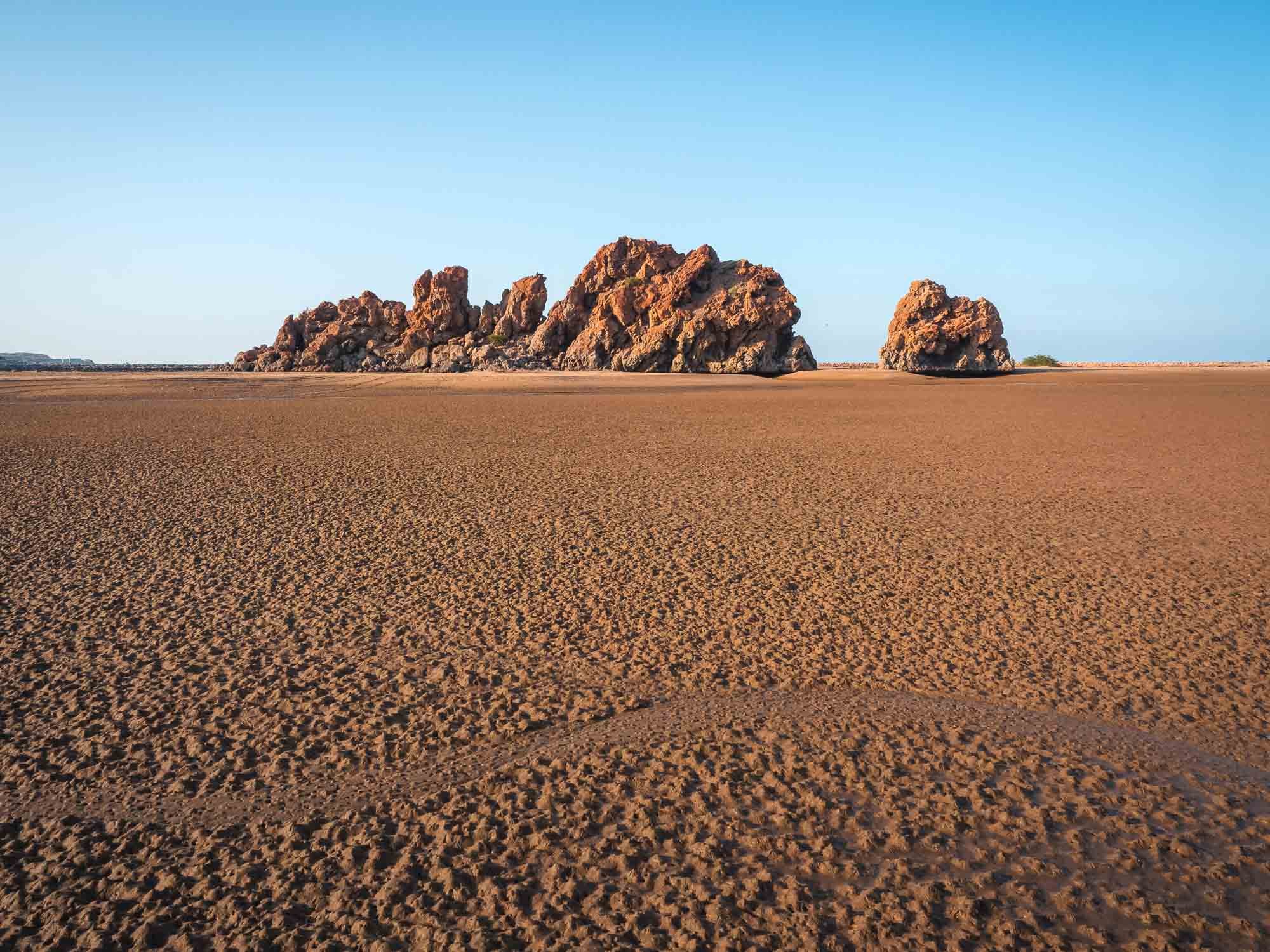
Rock Formation
This formation near Yiti was our last spot for the day, before heading back to Muscat.
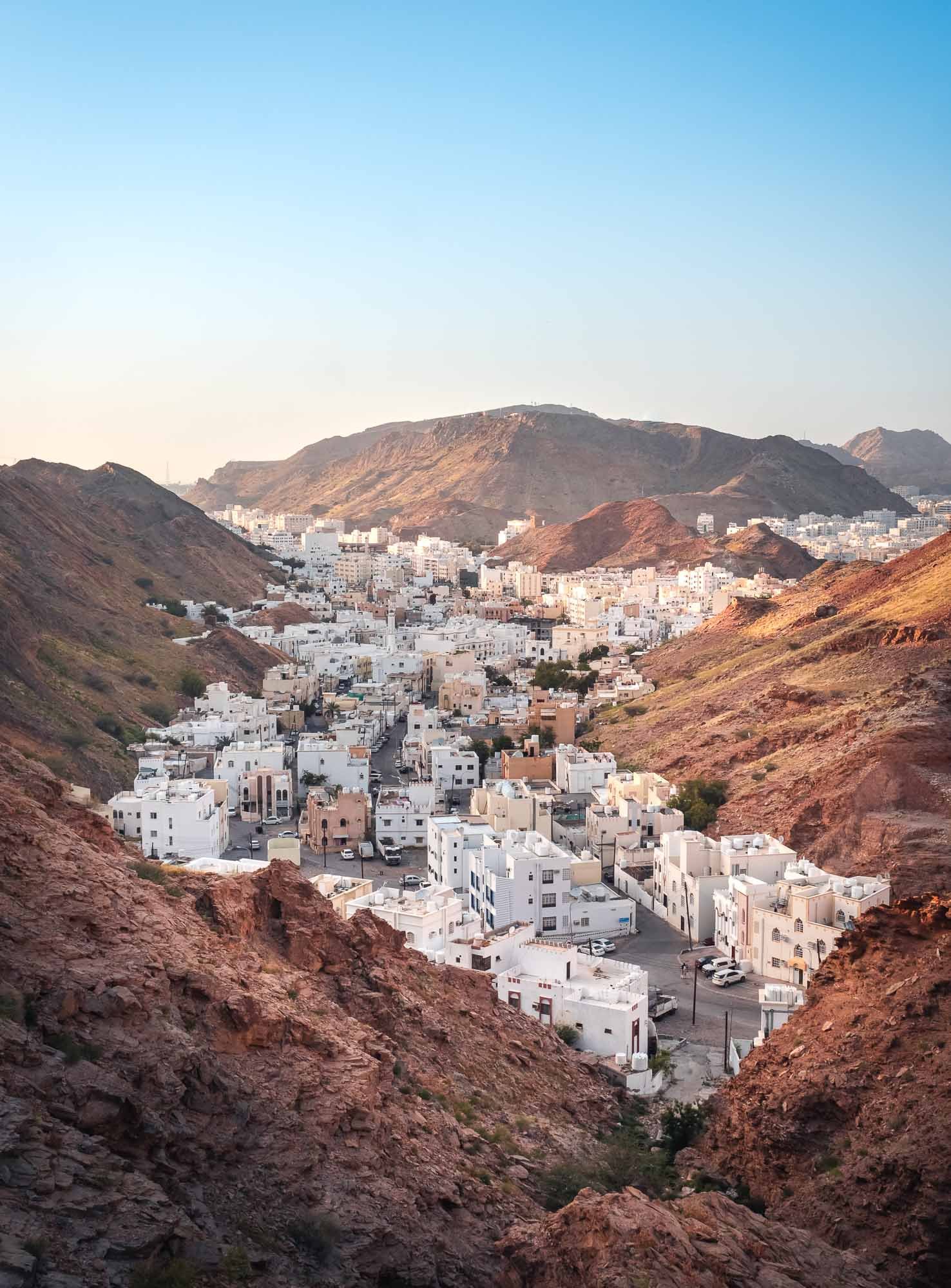
Making it Fit
On the way back we stopped at this viewpoint over Hamriya.
Along the Coast
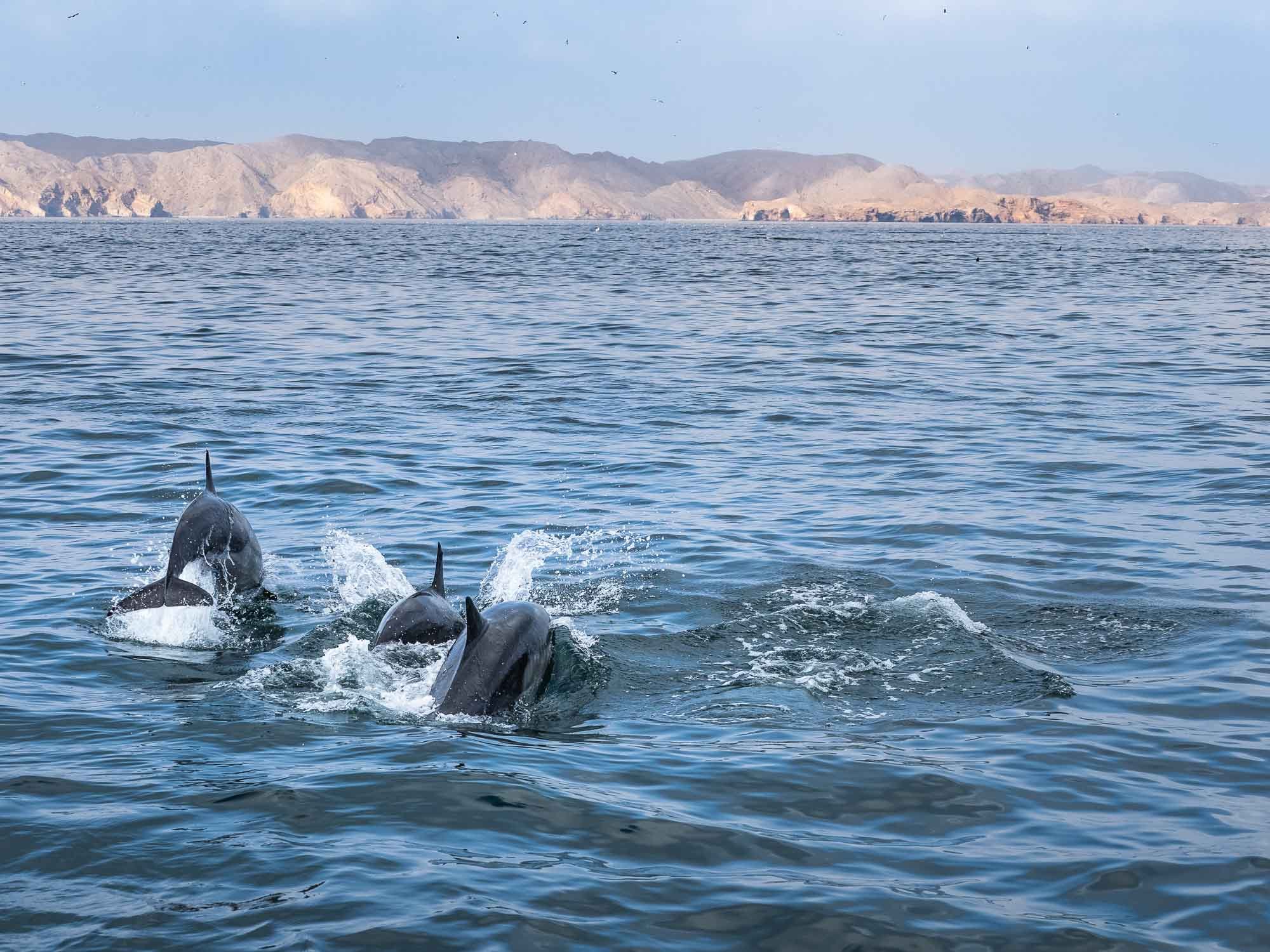
Into the Sea
An early morning boat trip the next day rewarded us with this sight - a large pod of dolphins enjoying themselves with the backdrop of the Hajar mountain coastline.

Bottlenose Dolphins
I would estimate the pod was at least 100-200 individuals in size.
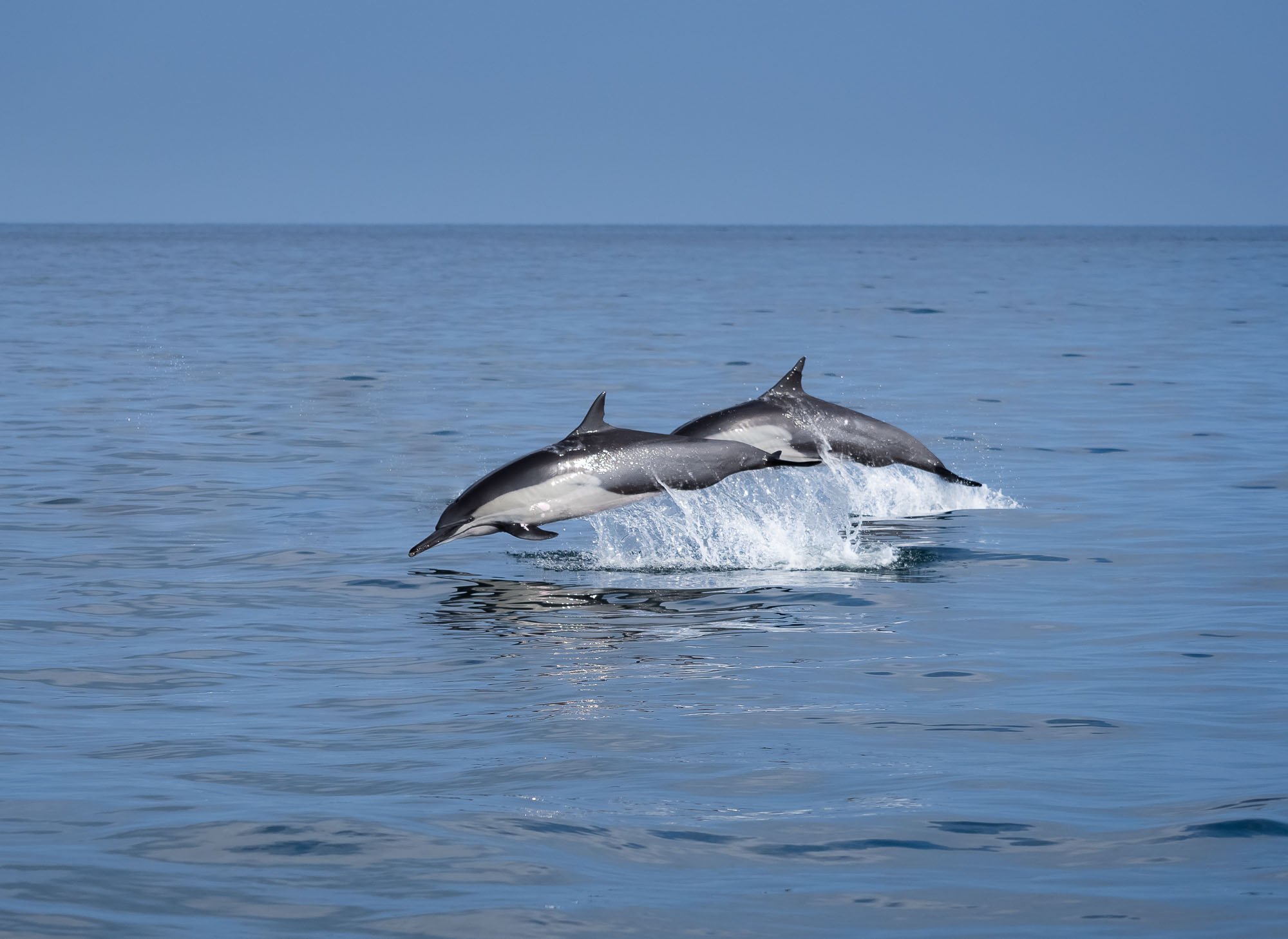
In the Air
They were calm this morning, and so there weren't many opportunities to get a photo like this, but I was able to time one correctly with the help of Olympus' ProCapture feature.
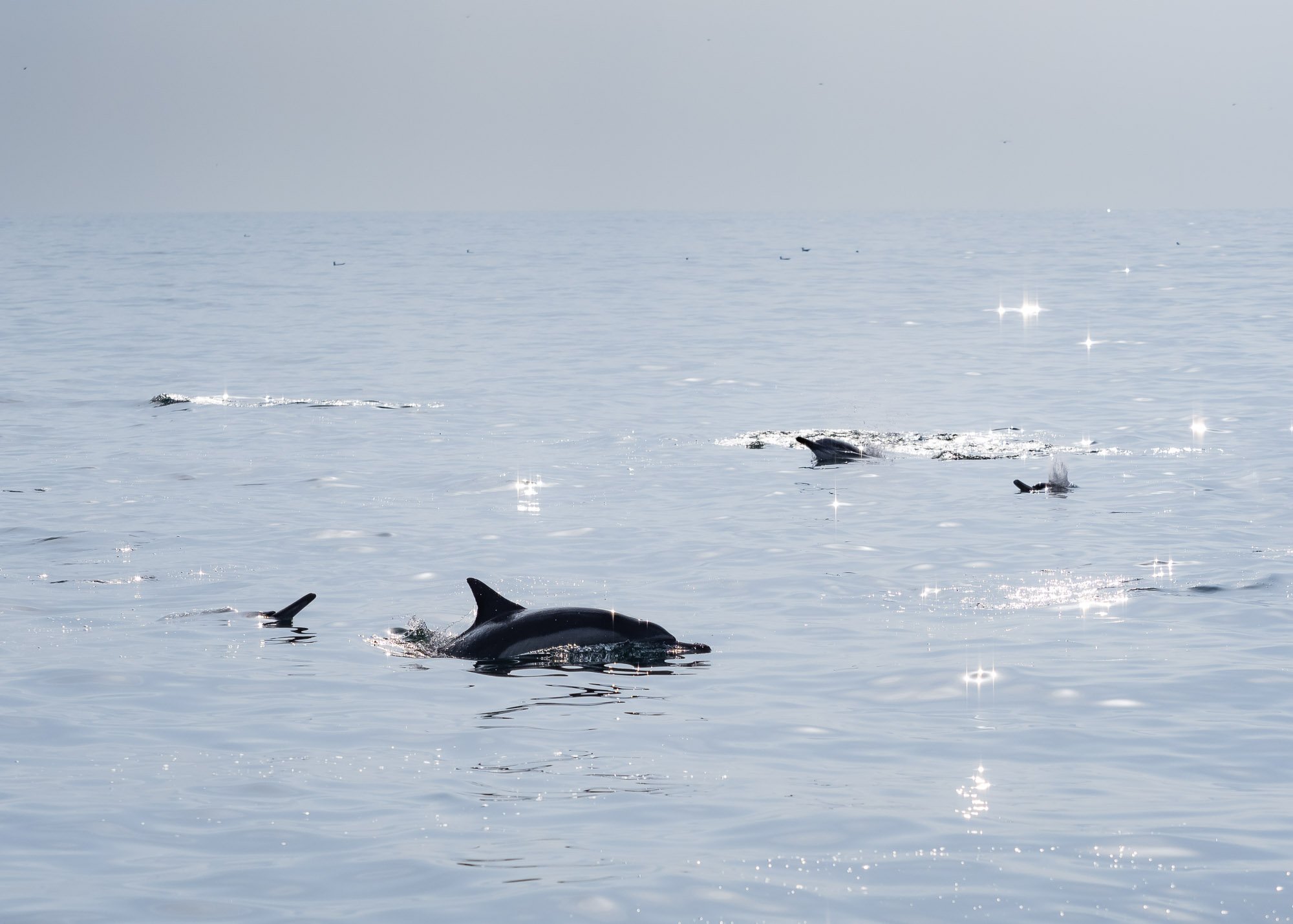
Marine Variety
The Omani Waters are home to turtles, dolphins, and wales at the right time of the year.
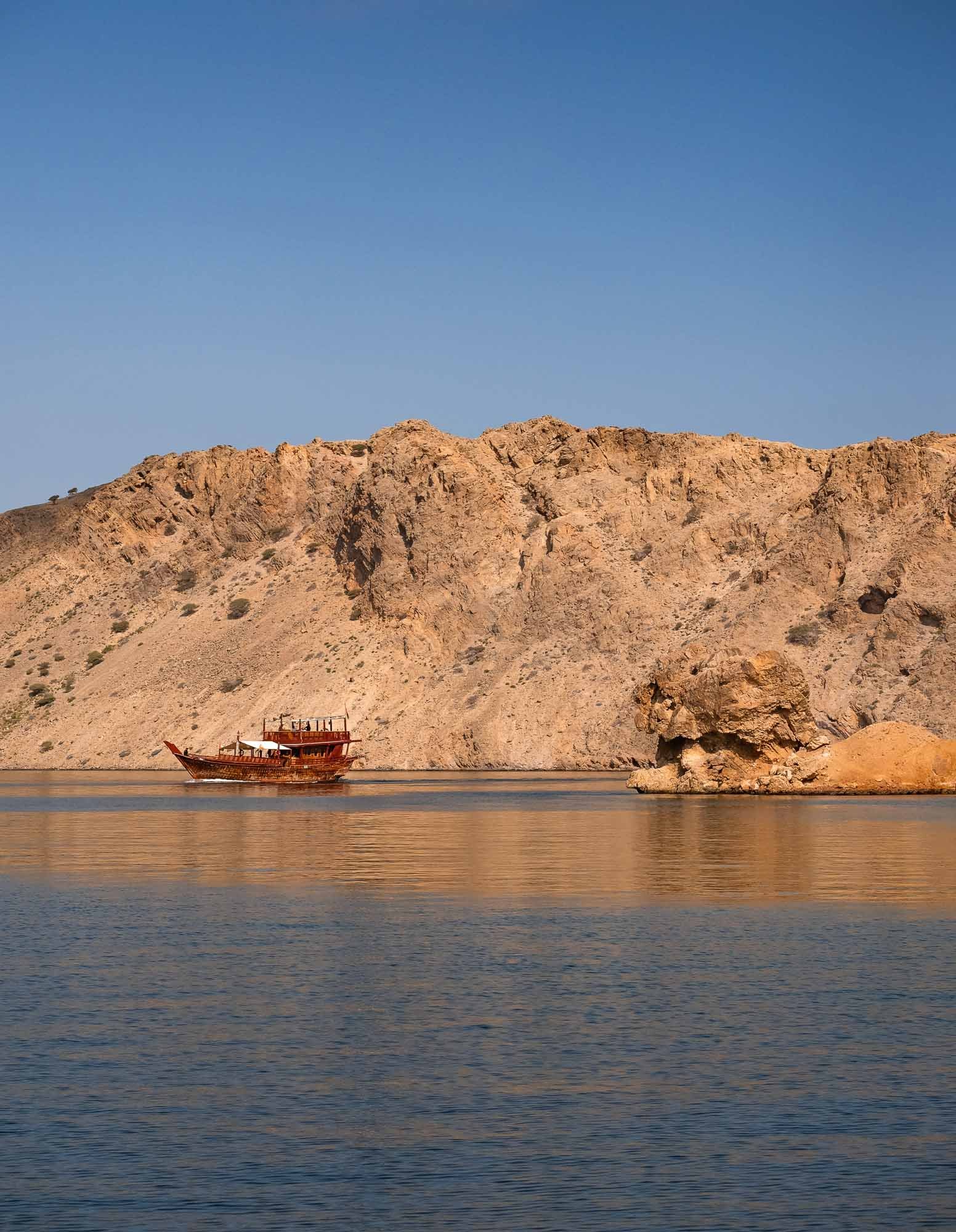
Dhow
A traditional dhow exploring the beautiful coastline.
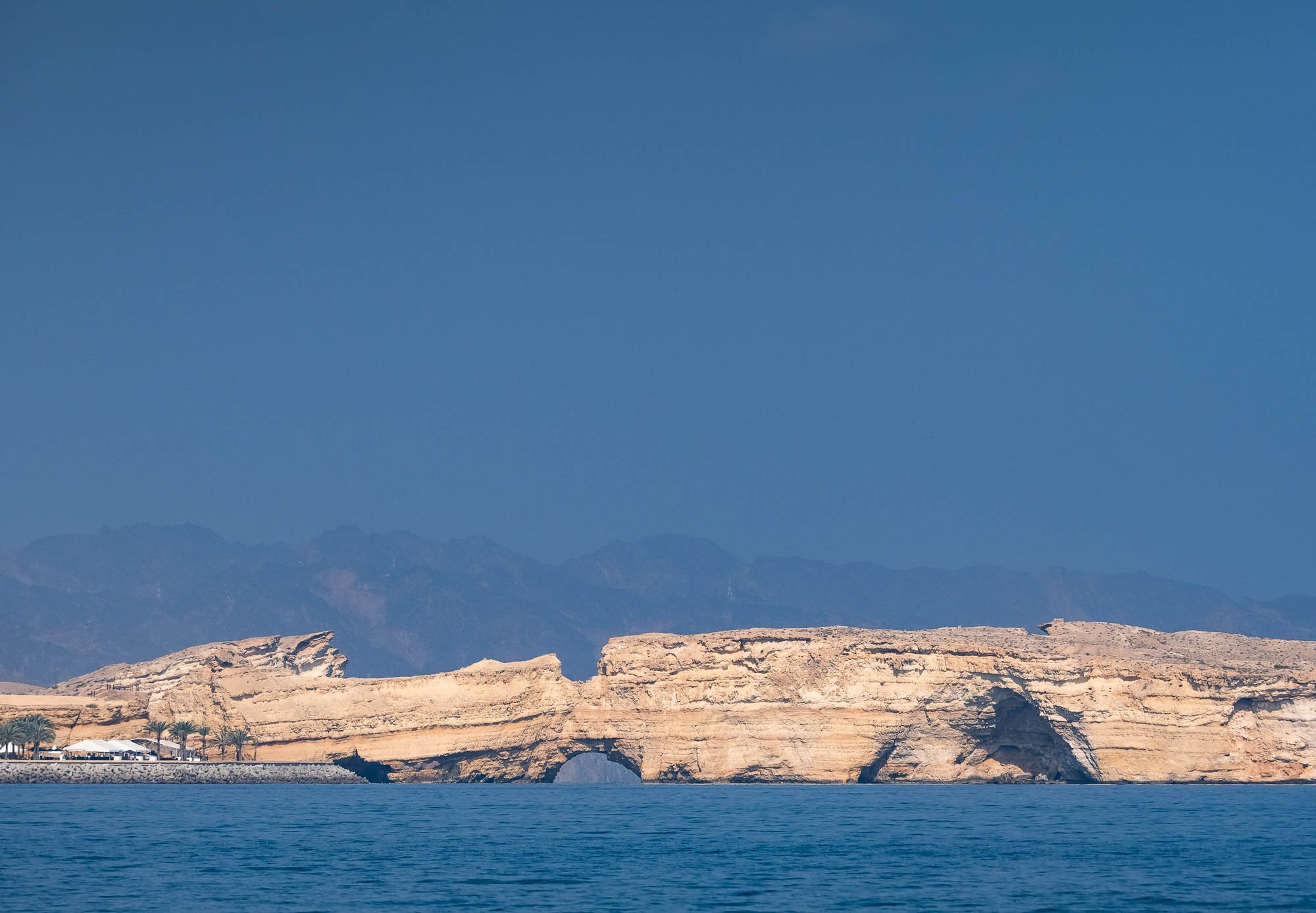
The Natural Arch
We also got to see the aforementioned stone arch near Qantab...
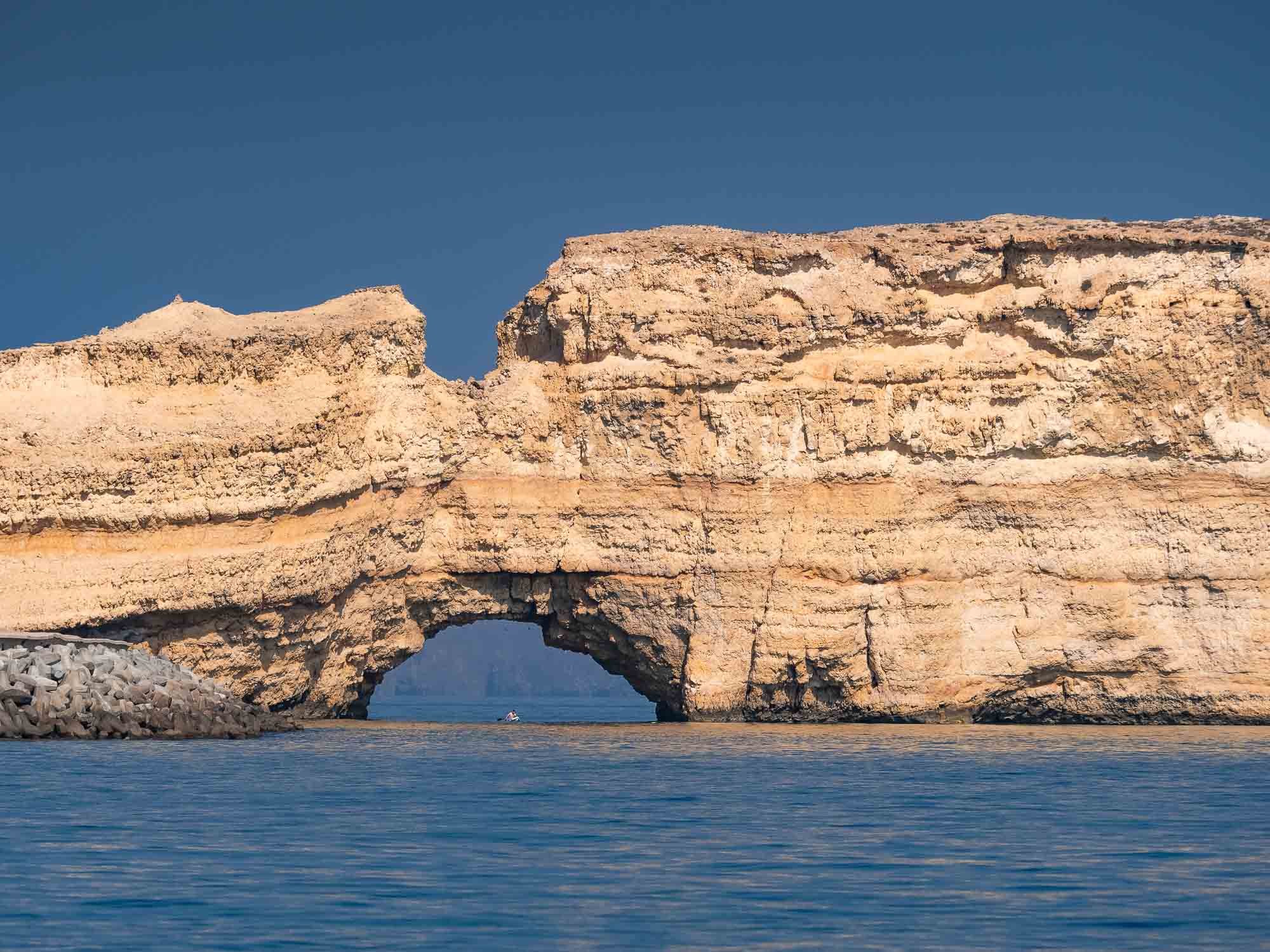
Passage
...with a single explorer on his canoe.

Morning Light
Al Bustan and the State Council buildings from the sea side.
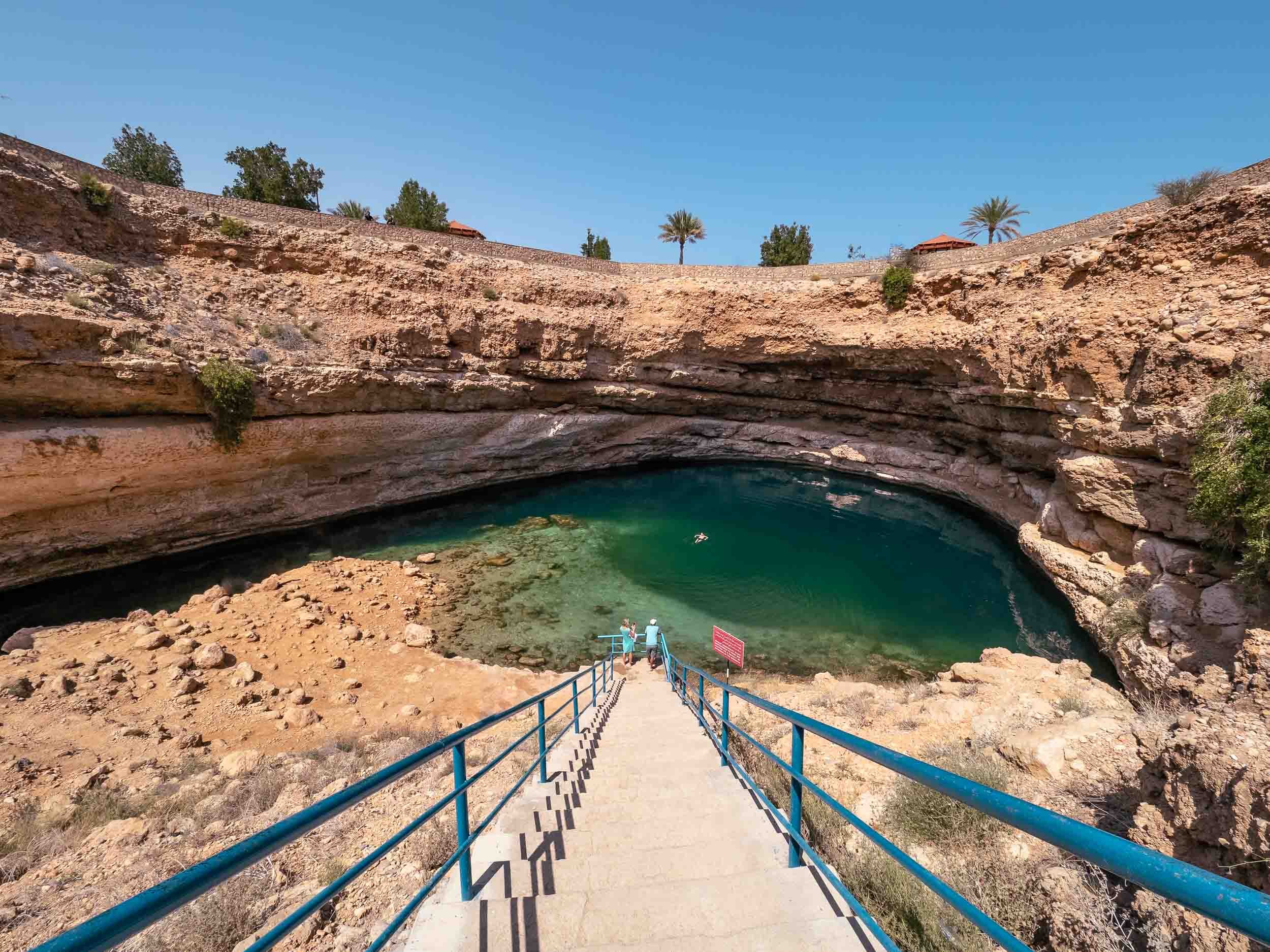
The Way Down
Stairs have been built into it, but I can testify that some people prefer jumping (not me).
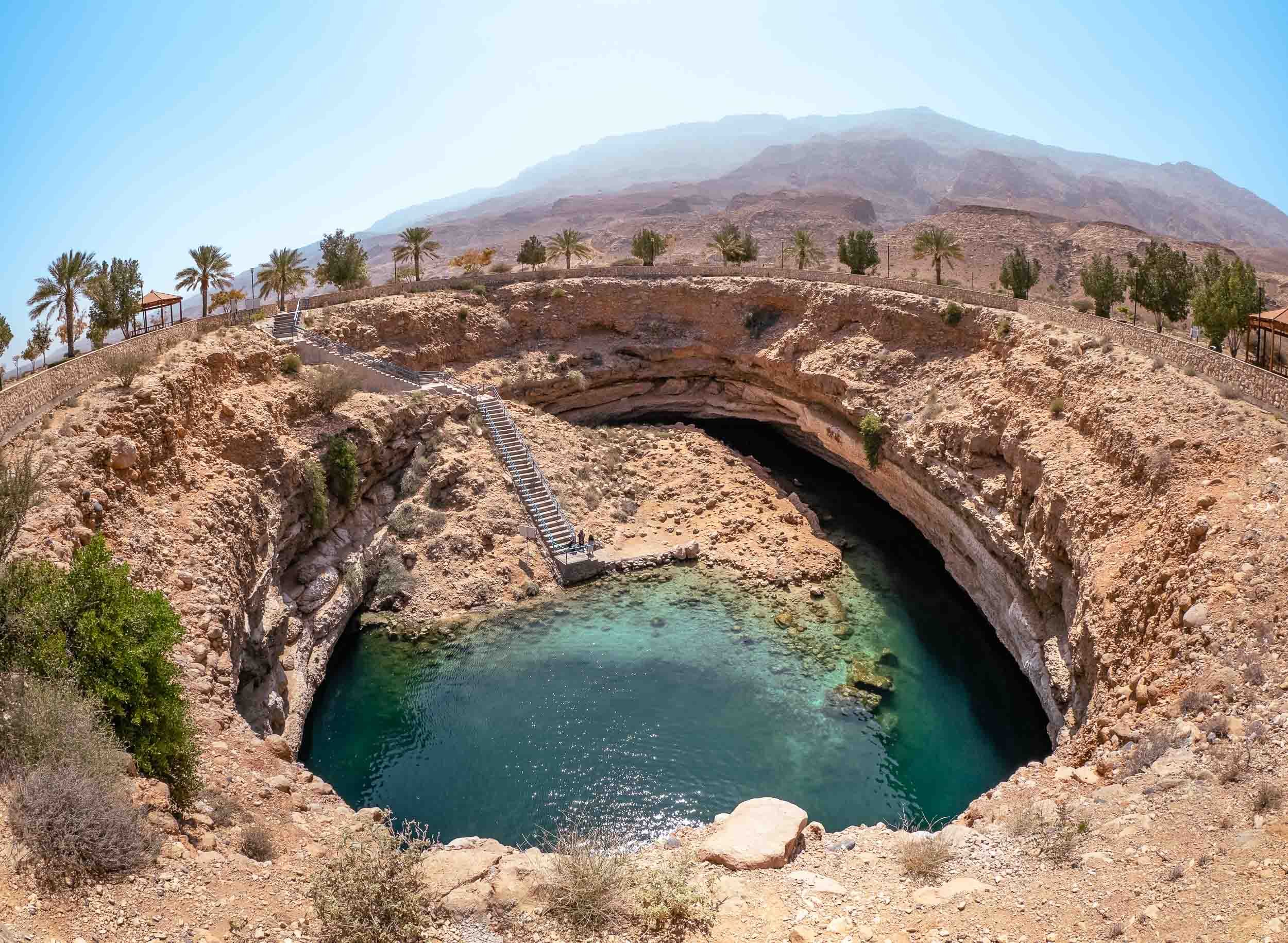
Bimmah Sinkhole
Another incredible spot of natural beauty is this sinkhole near Bimmah, about 100km from Muscat.
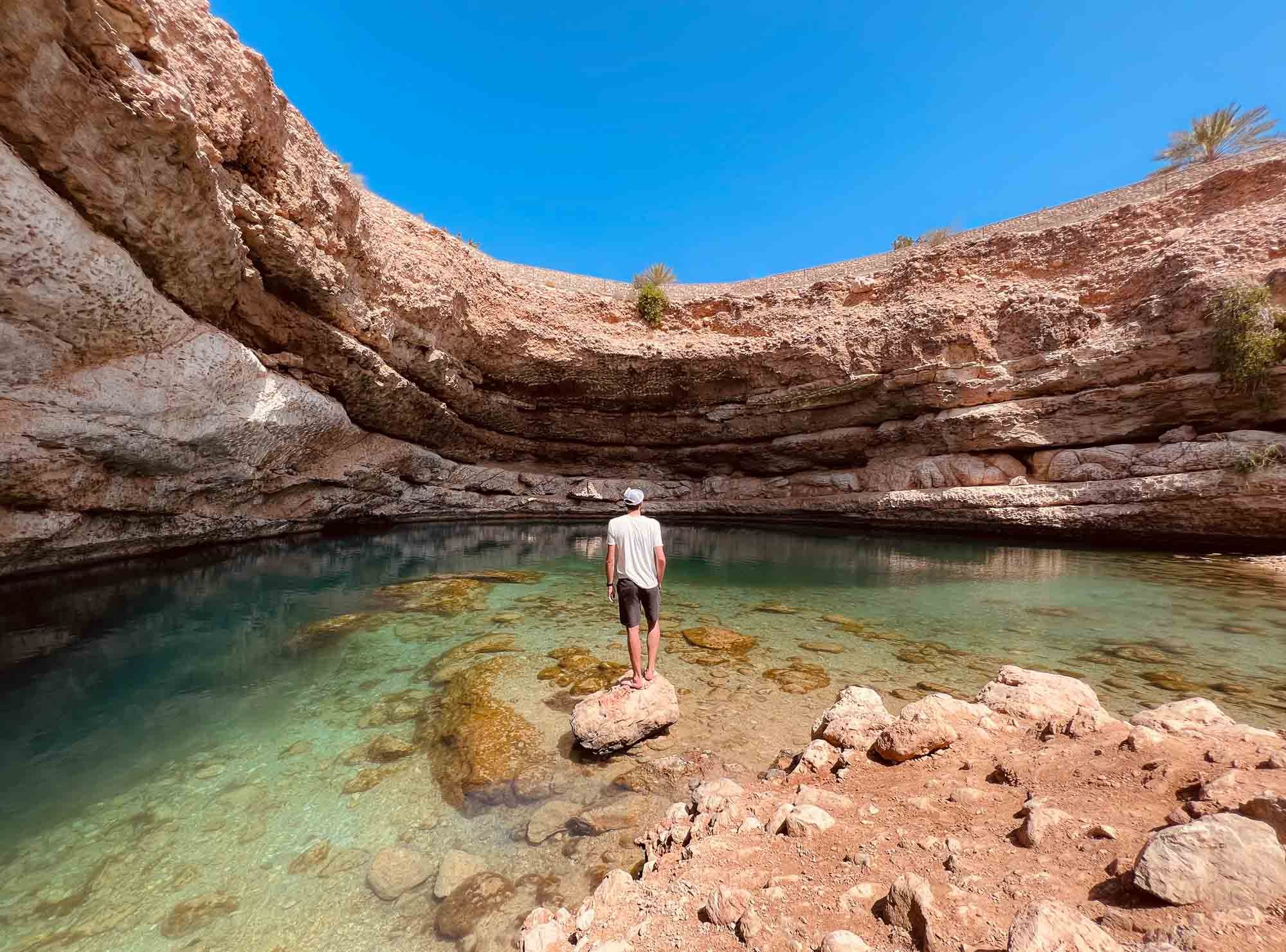
Cyrstal Clear
What a spot for a swim - or just hold your feet into the water and be treated to a fish spa.

Egyptian Vulture
Spotted this guy on the beach.
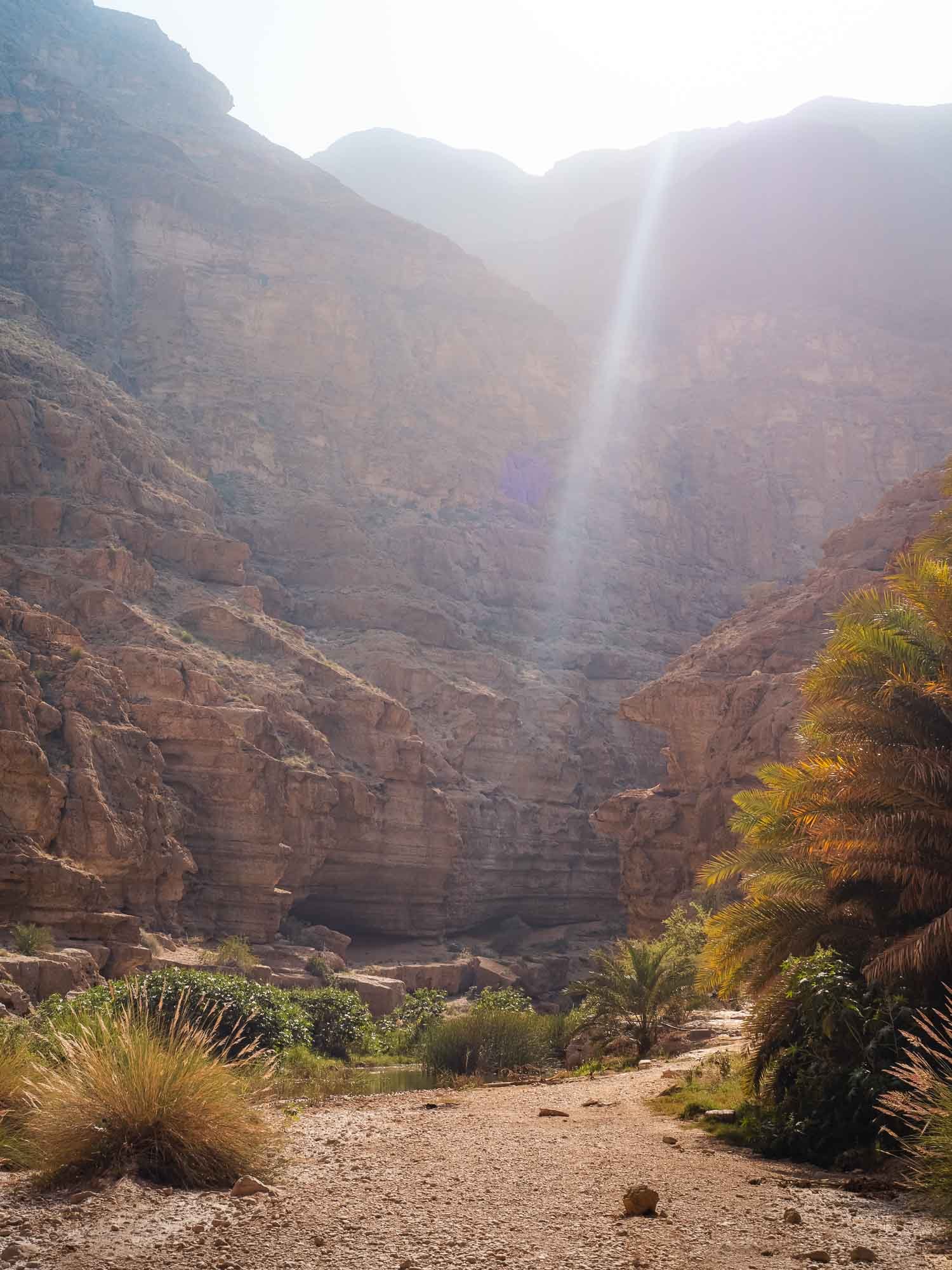
Jurassic Park or Wadi Shab?
Next up, one of the most amazing Wadi's I've seen to date - makes you feel like entering Jurassic Park.

Scale
The size of the canyon and rock formations was amazing.
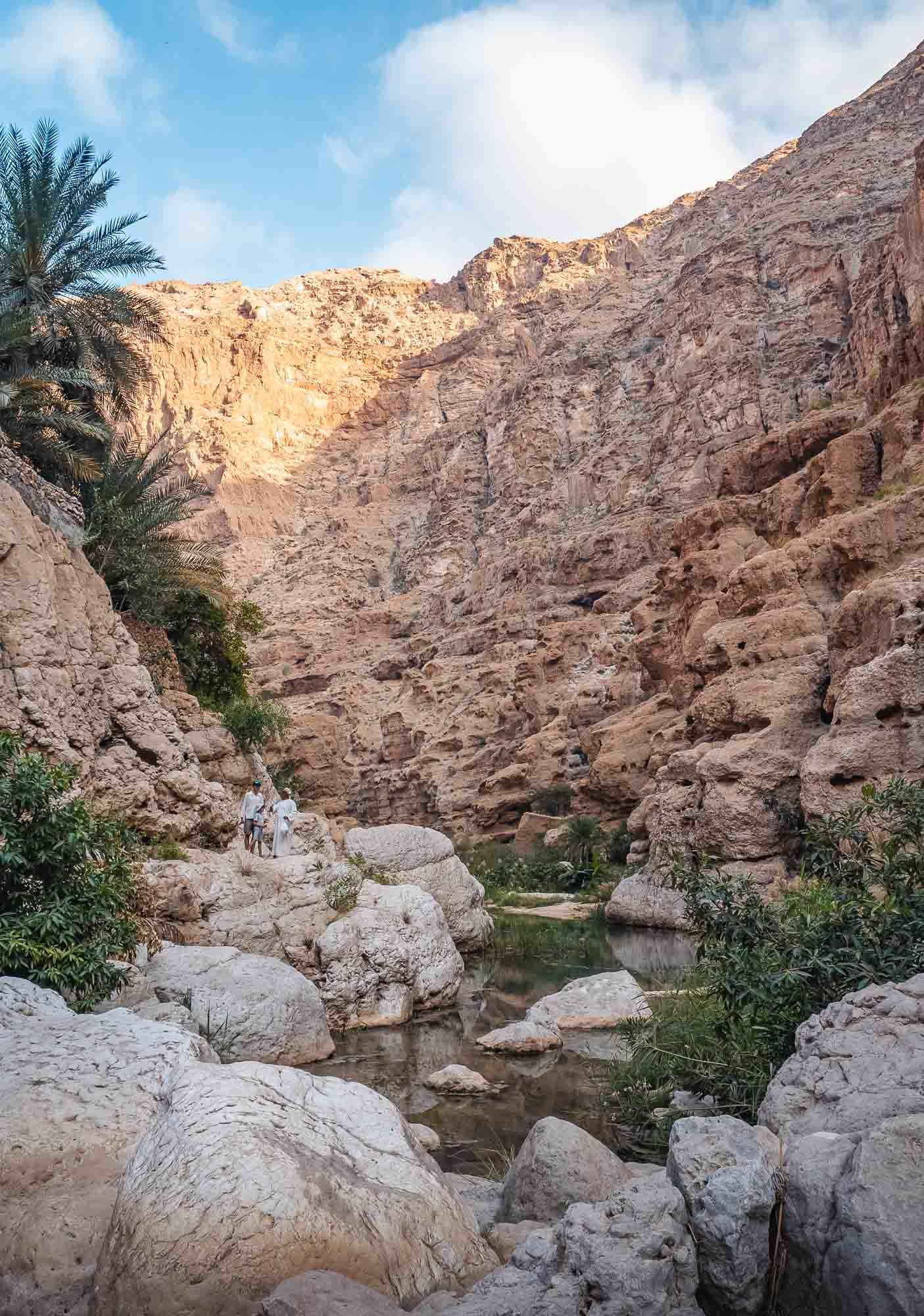
No Photos
After a 10 minute swim into the Wadi you arrive at a small cave, accessible by a narrow opening that barely fits one's head. No photos for that, got to explore yourself!
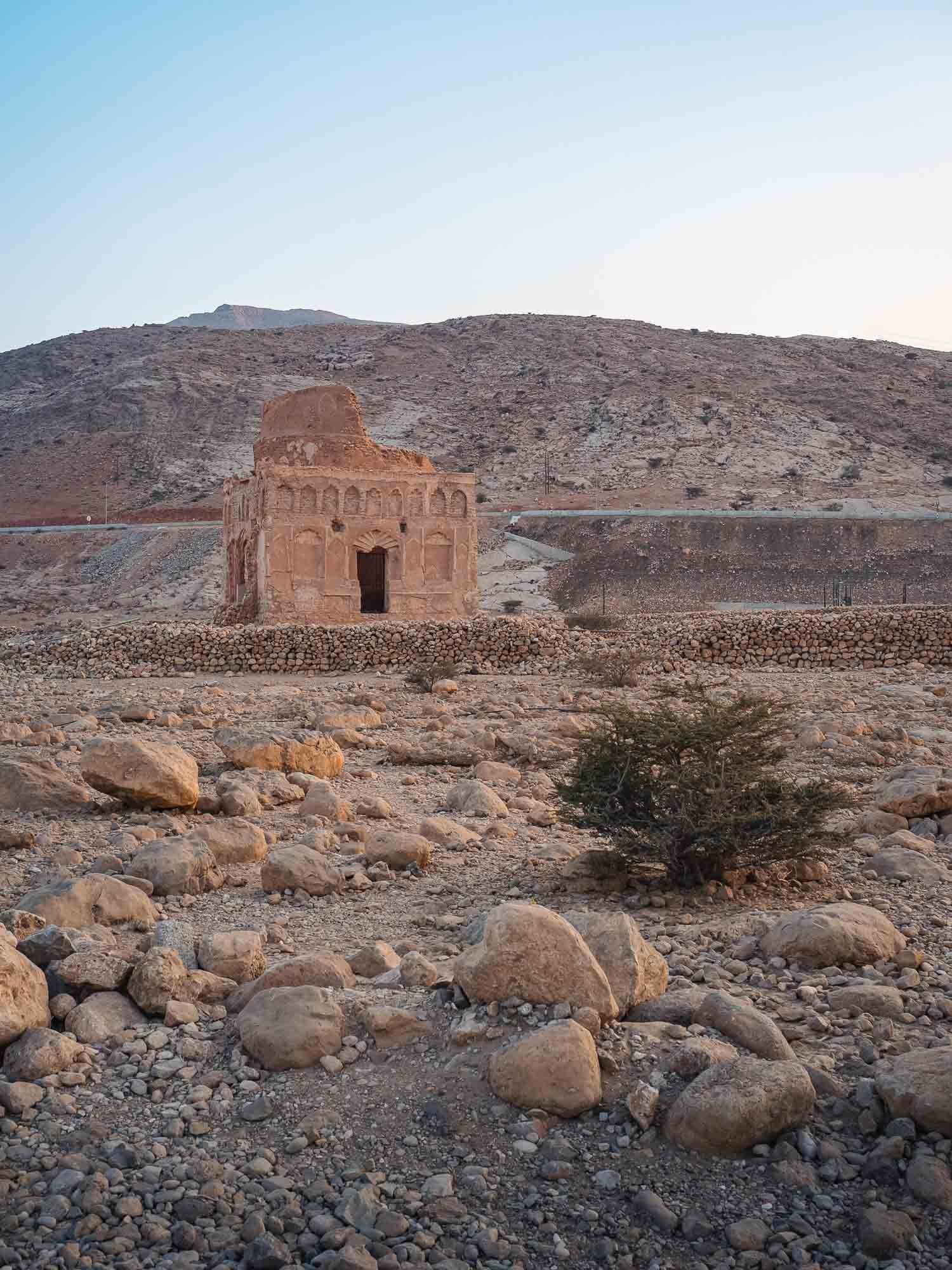
Incredible History
We drove a little further on the coast to see another World Heritage Site: Qalhat. It is unfortunately currently closed, but you can spot its most significant remaining site, the Bibi Maryam mausoleum. This city was visited by Ibn Battuta, Zeng He, and Marco Polo!
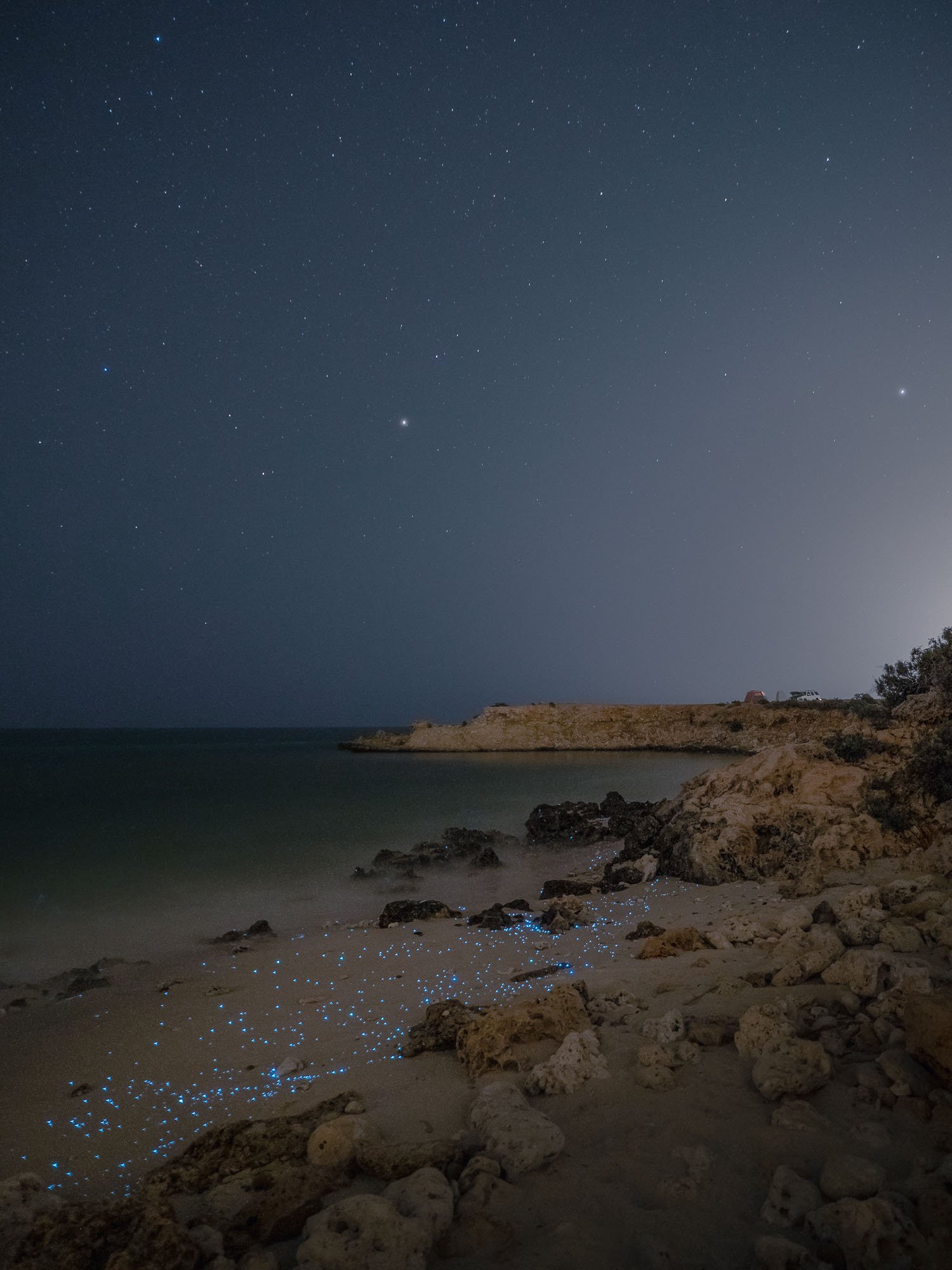
Sometimes You Get Lucky
Our plan was to spend the night on the way back to Muscat somewhere on the coast - we knew chances to see the bioluminescent plankton on the beach were next to nothing, but there was always the Milky Way or some deep sky photography...
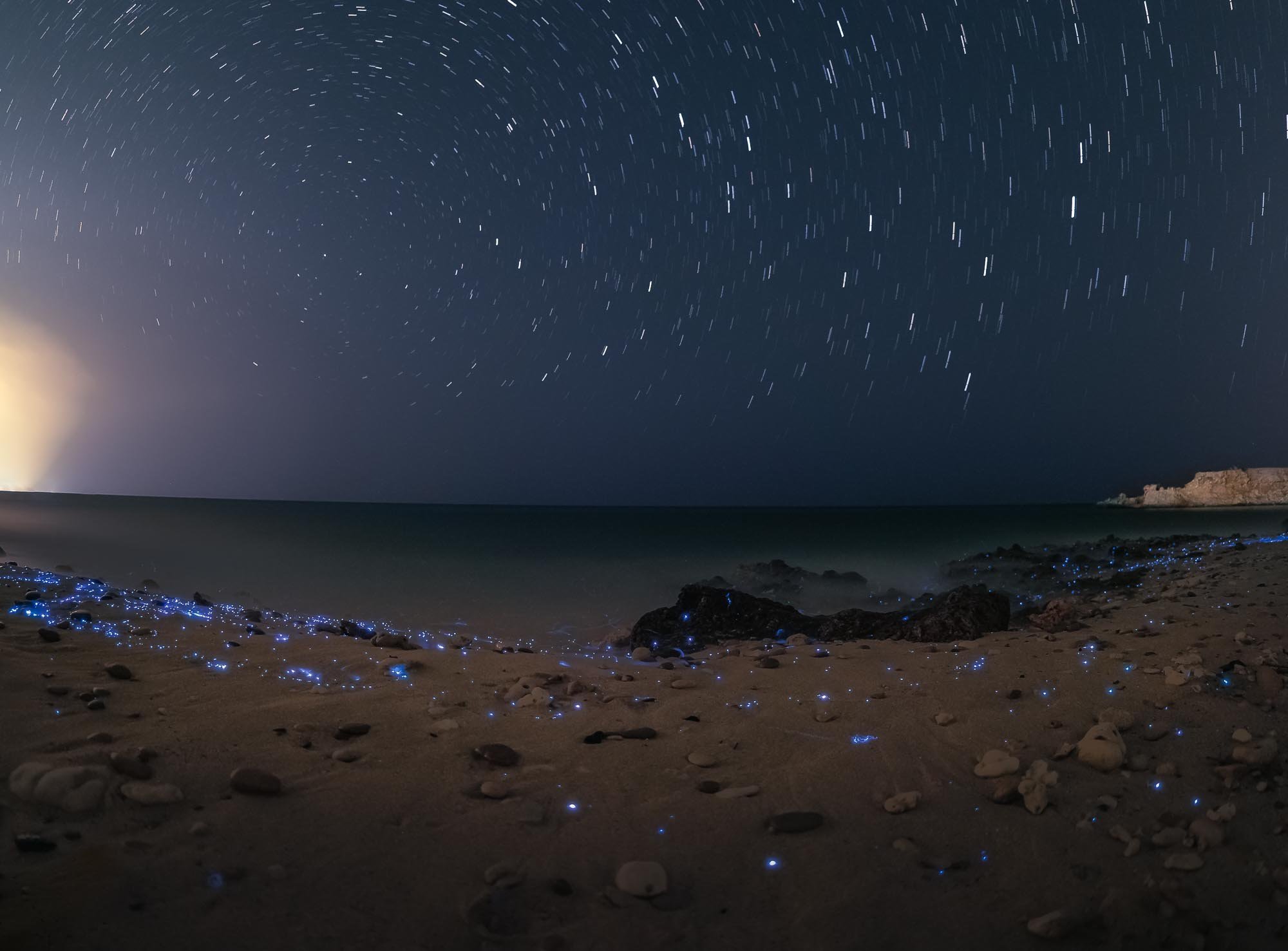
Natural Wonders
When we explored good locations to set up for the night, our second spot proved to be the golden one, and we spotted little blue dots on the beach and rocks as the waves hit.
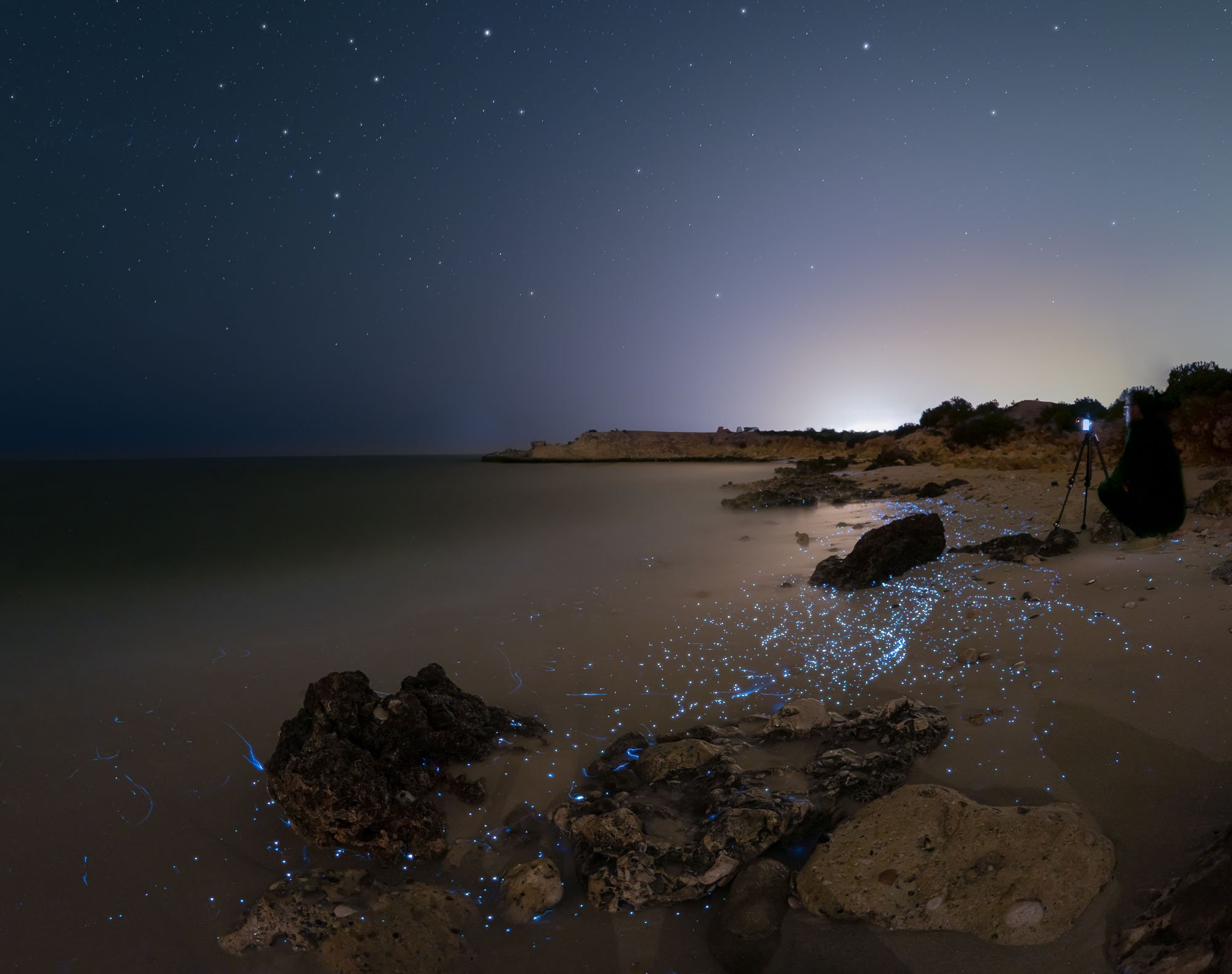
Magical
After turning off the flashlight, we saw it for what it really was - the elusive glowing blue bioluminescent phytoplankton. The blue light is produced by energy released from chemical reactions occurring inside these organisms - what a sight.
The Last Day in Muscat
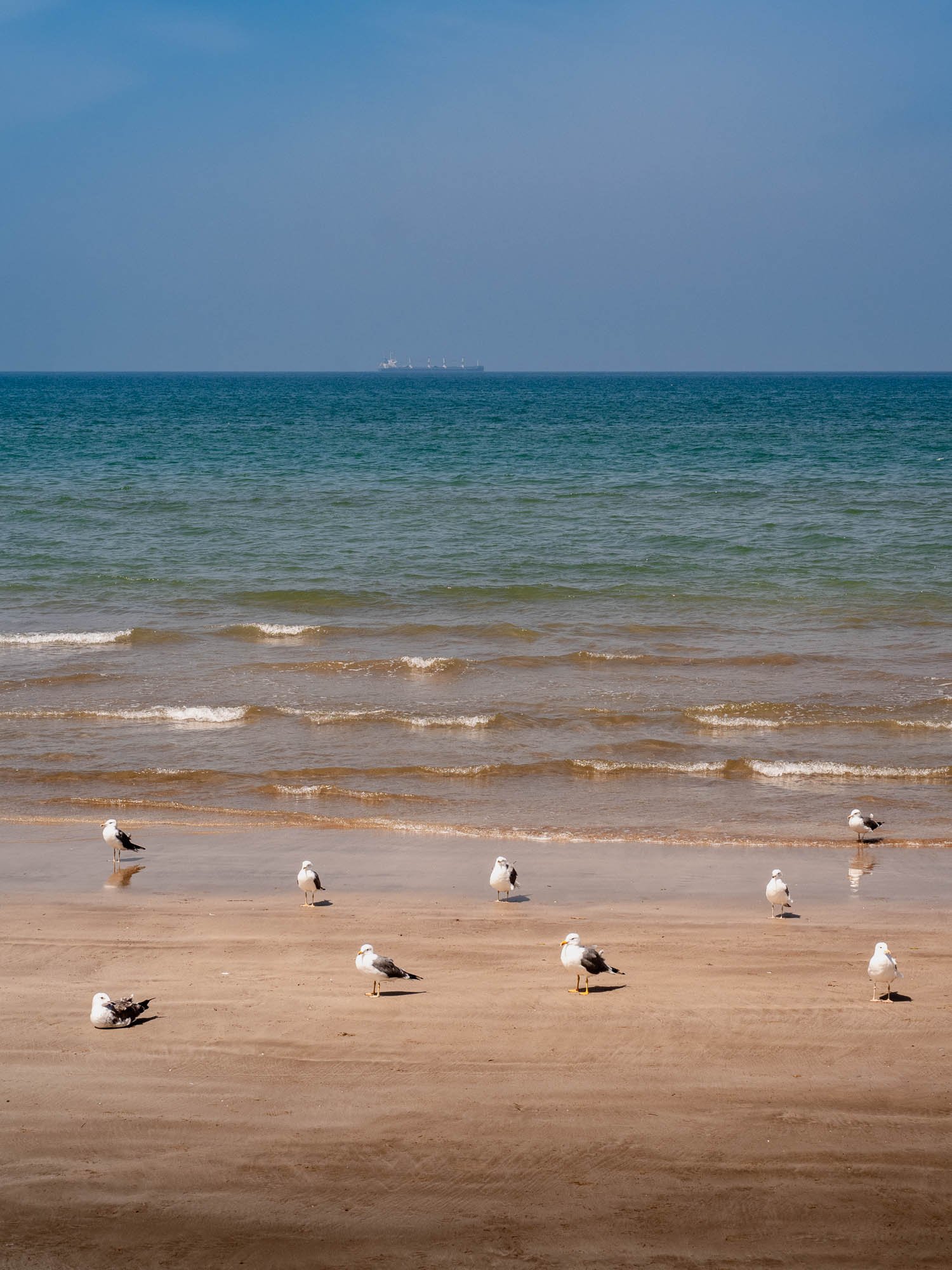
Beach Vibes
The next day was a later and slower start after the night on the coast, walking on the beaches of Muscat.

Friday Vibes
Oman retains the Friday weekend, so the locals were enjoying the day out.
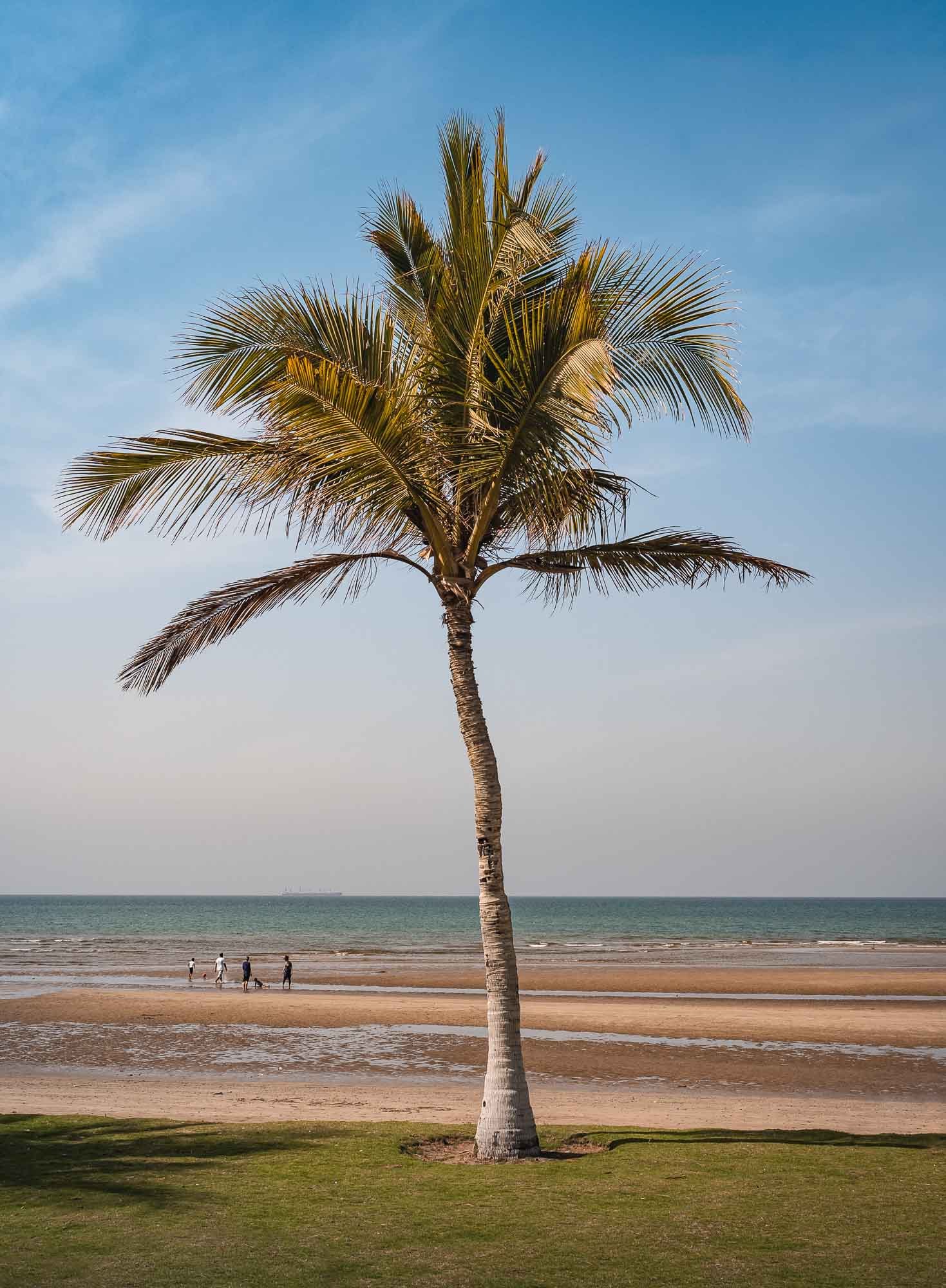
Postcard Views
All around in Oman!
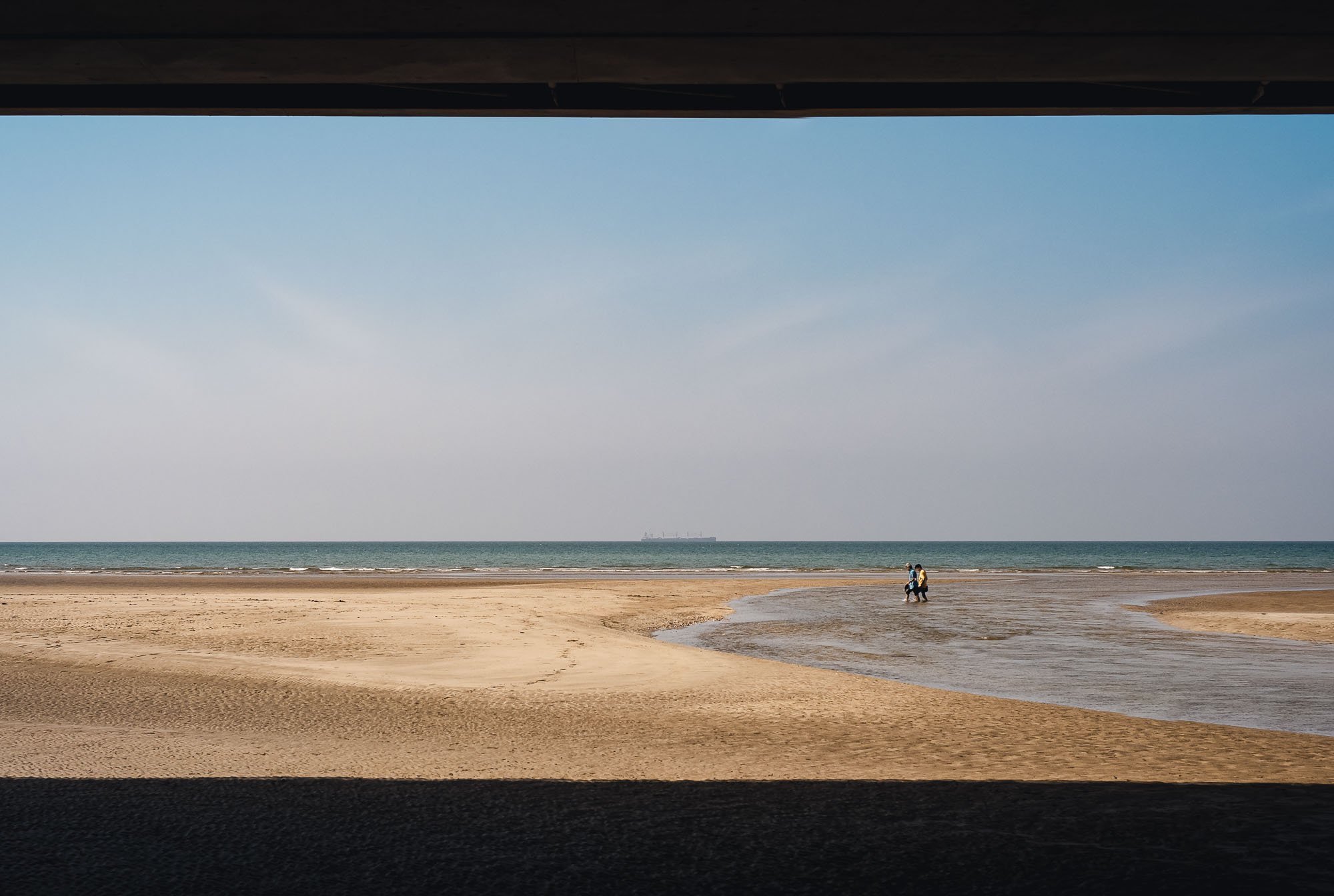
Qurum Beach
This was taken at the beach near the city's national park.
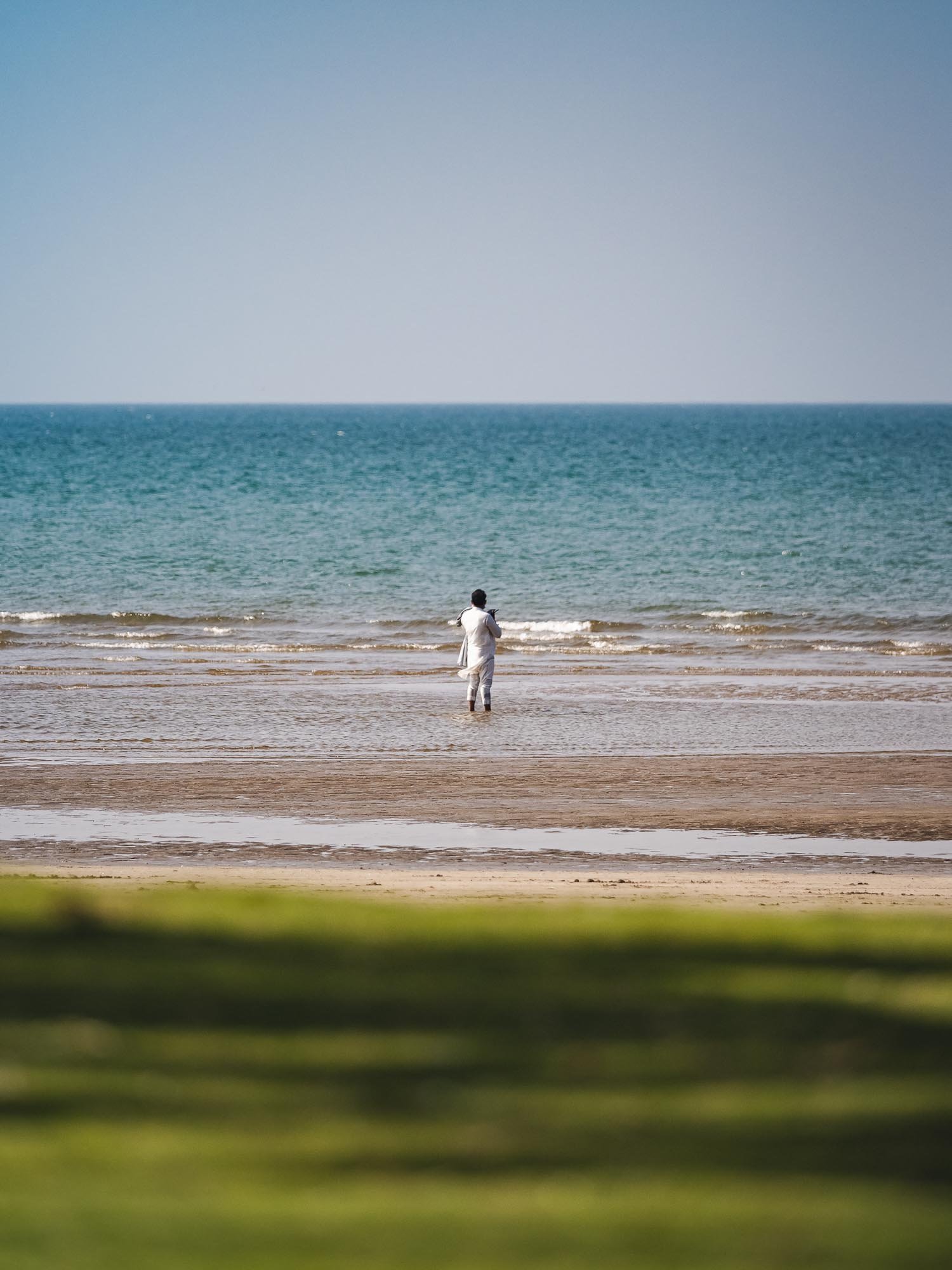
Nice Day
for a walk alone...
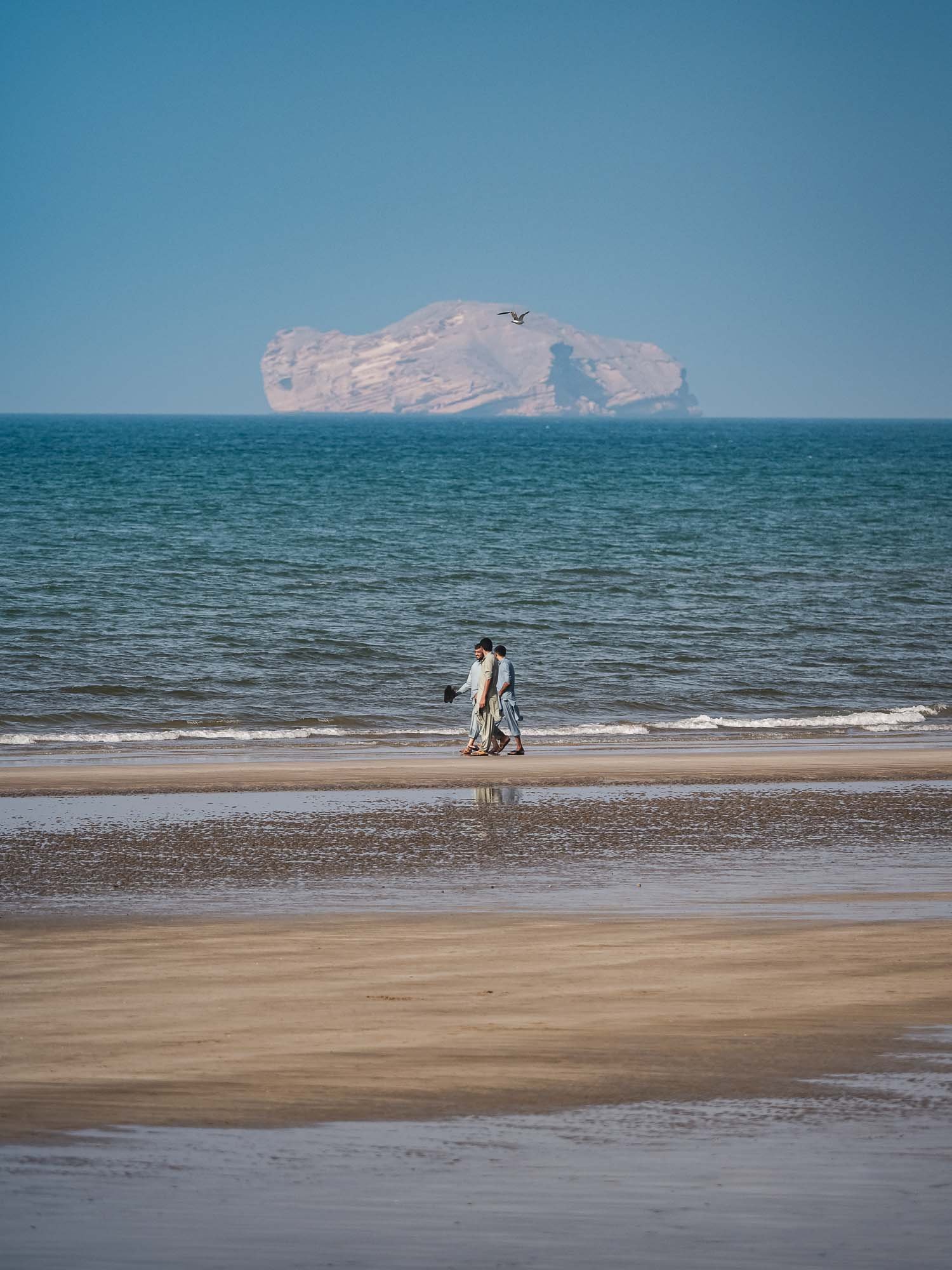
Or
...with friends.
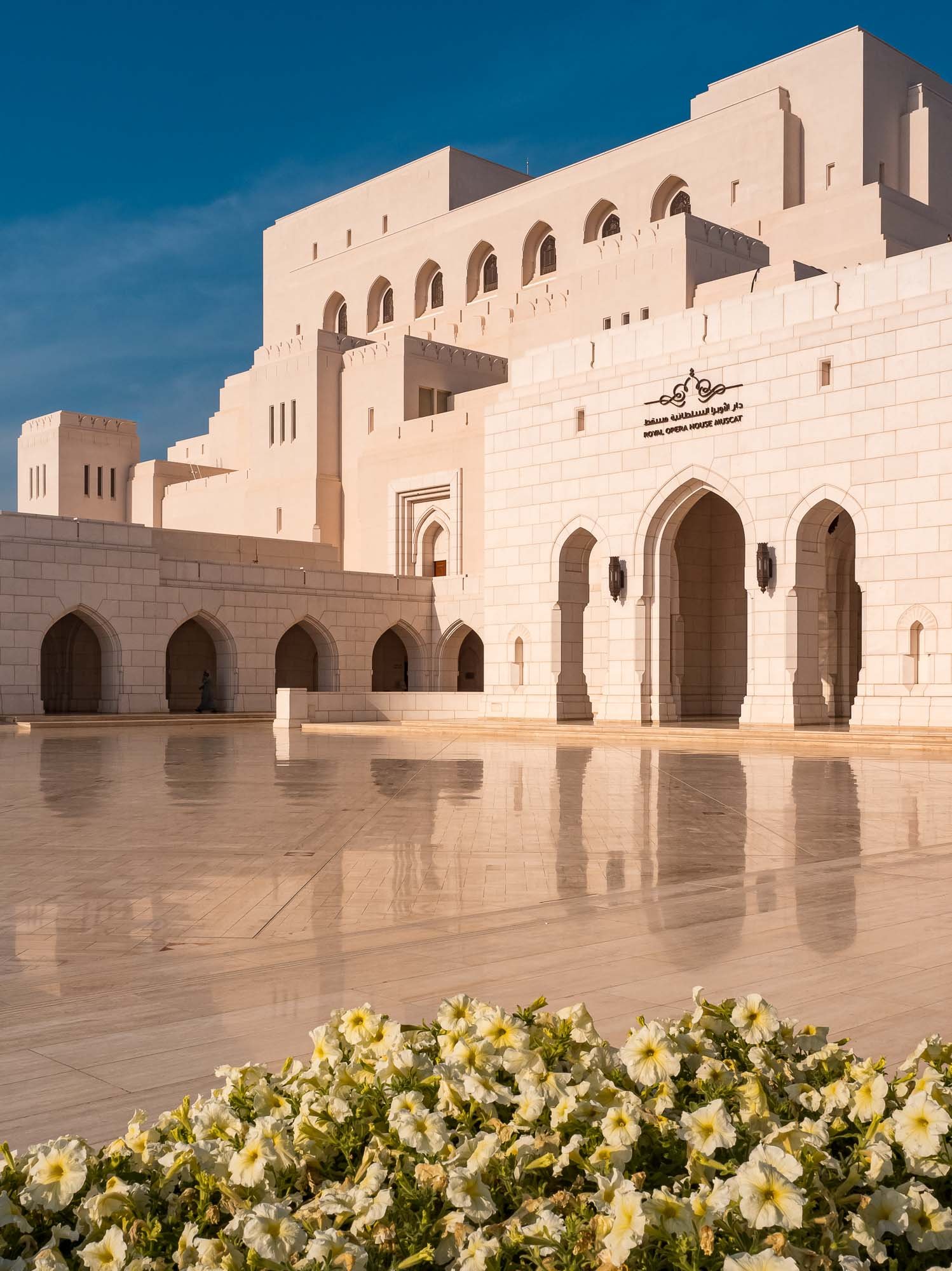
Royal Opera House
We also visited the Royal Opera House, which opened in 2011 and has seen performances by Plácido Domingo and Andrea Bocelli. Unfortunately the interior wasn't open for visits that day.
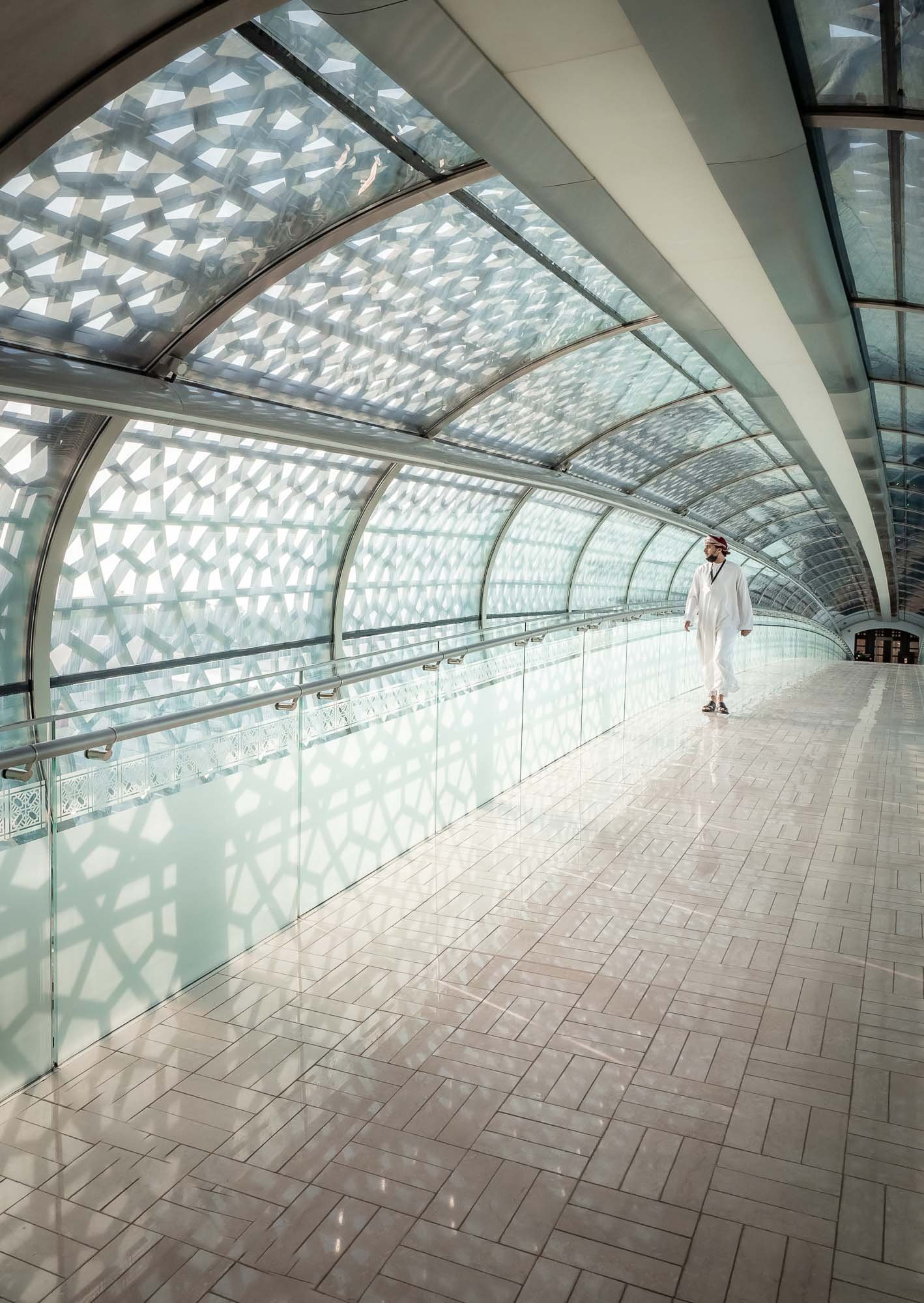
Architecture
It did feature this neat bridge crossing to the House of Musical Arts.

In Flight
Couldn't resist causing a bit of a stir up when we passed Al Bait Mosque.
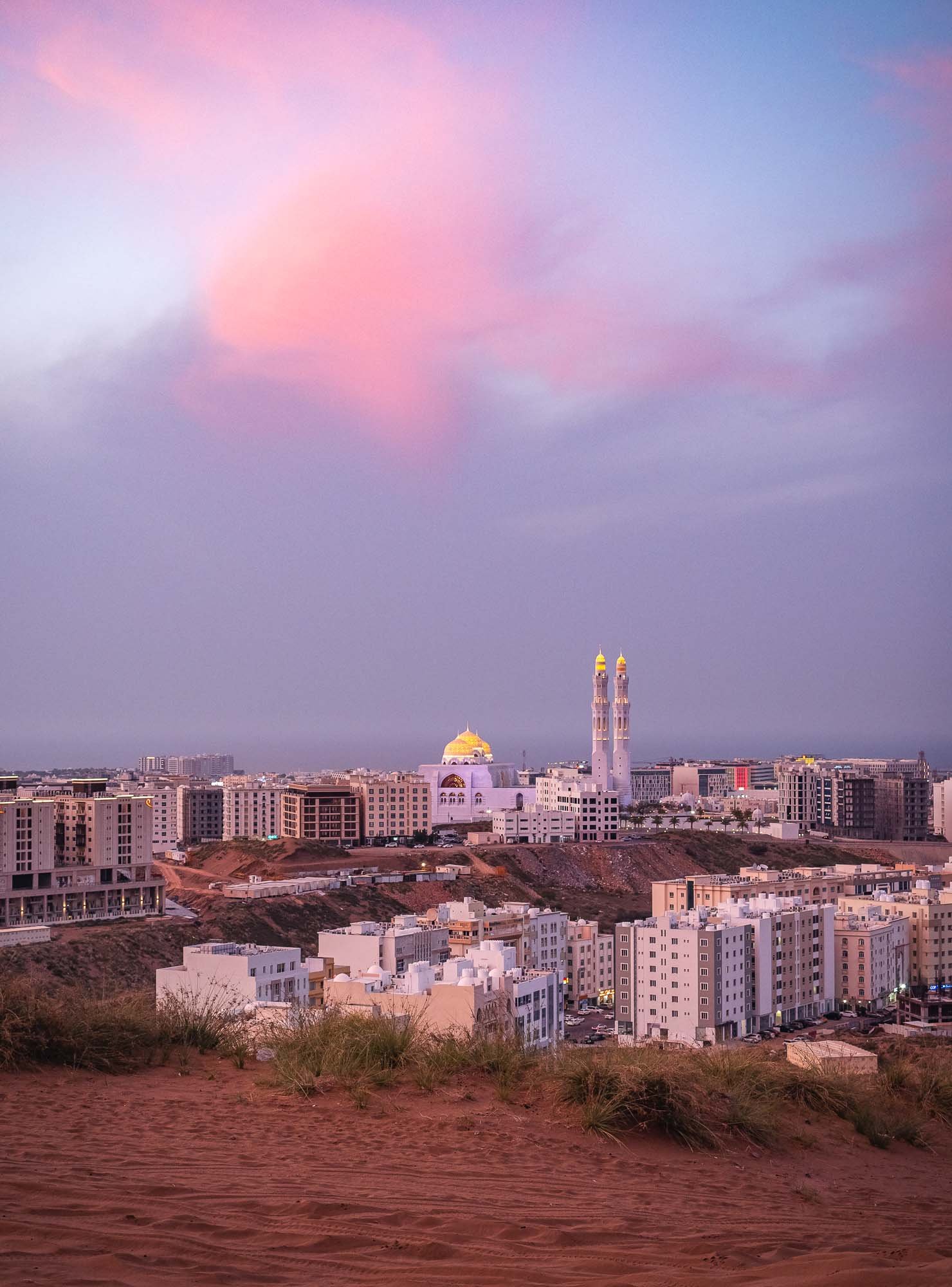
Golden Hour Vibes
We spent the evening hiking up some dunes in the city for sunset.

Fun Times
We weren't the only ones up there, as a group of people on motorbikes, quads and 4x4s made the most of the evening.
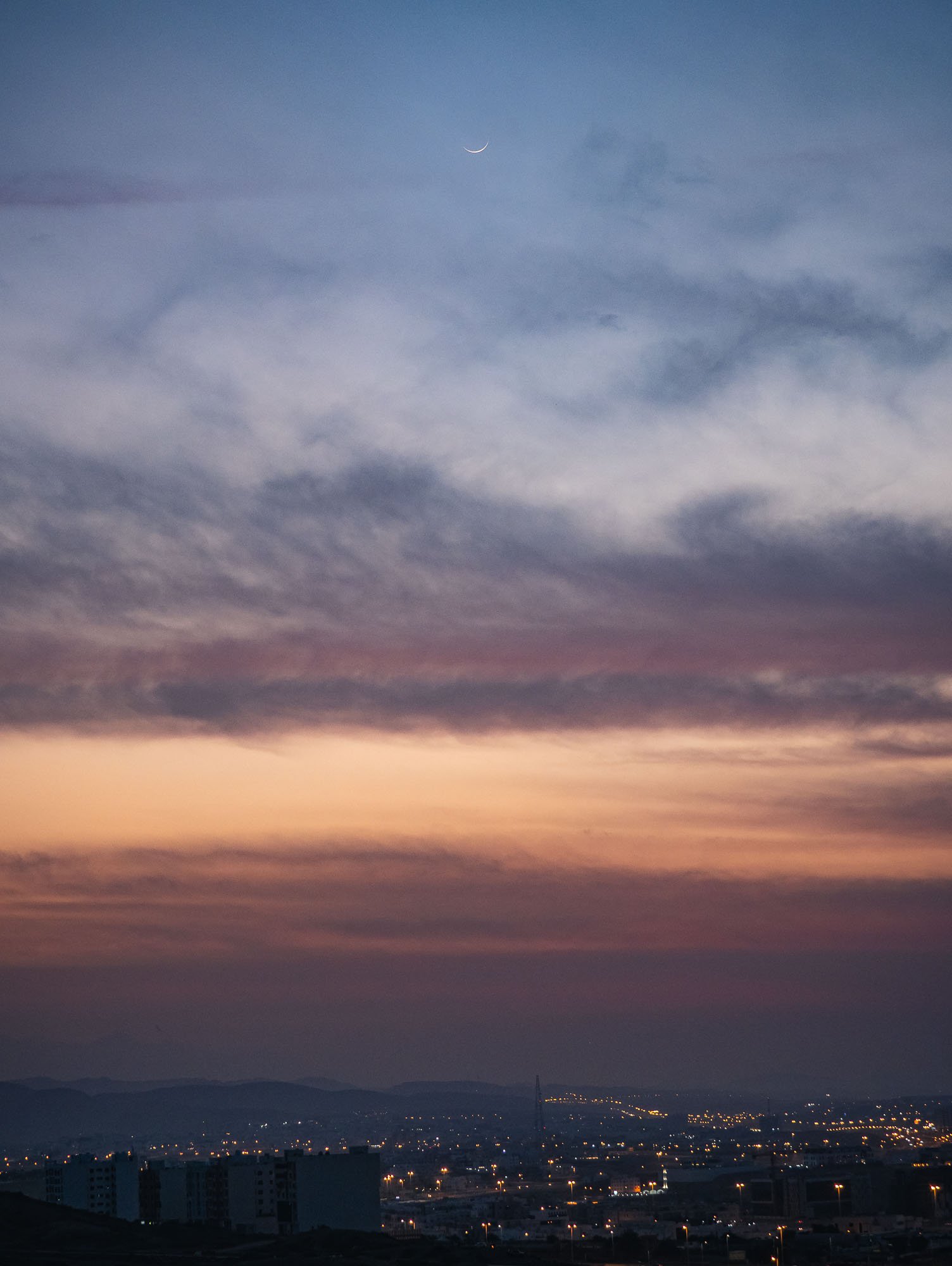
Luna
The moon came out to play as well.
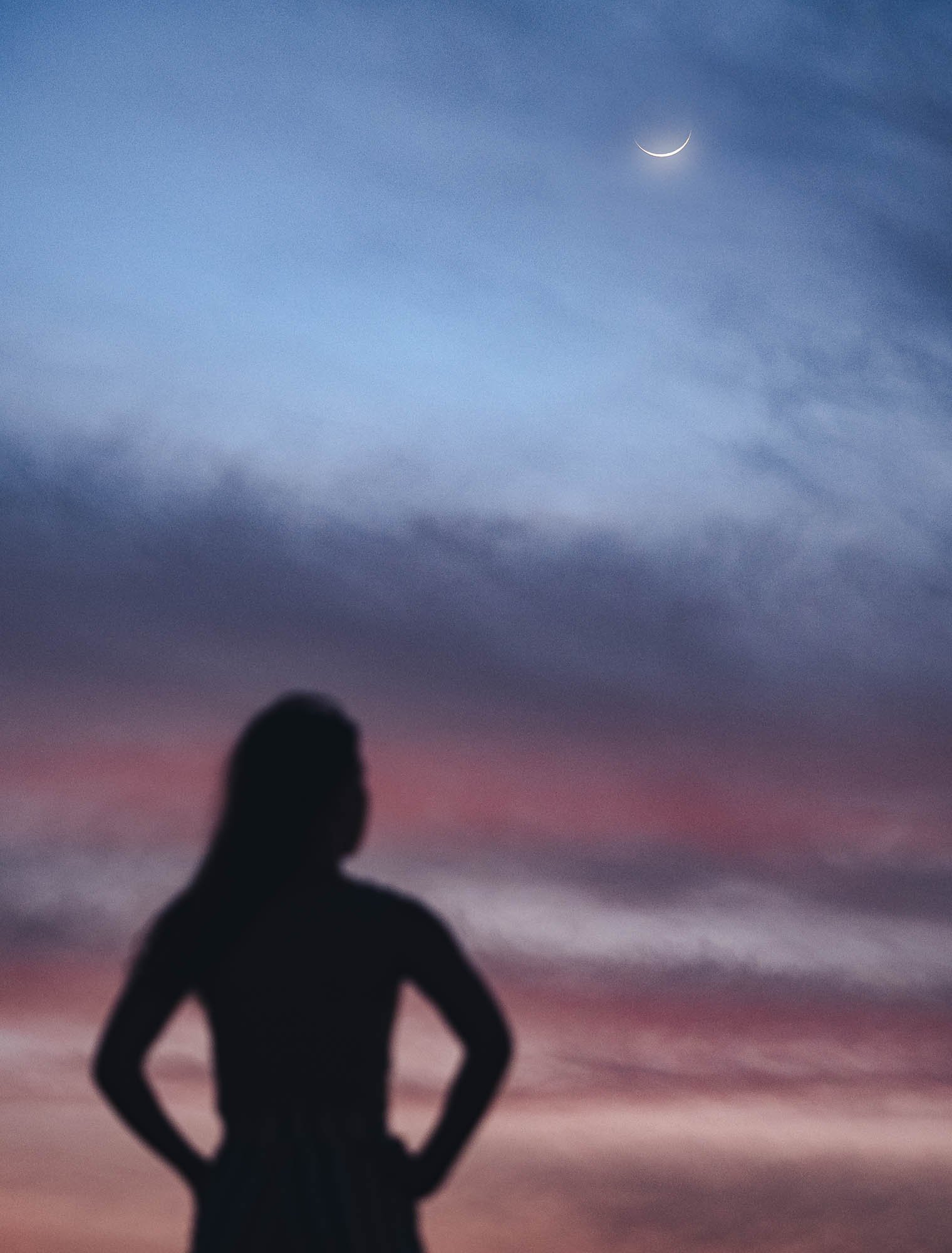
Favourite Subject
Of course I had to play along.
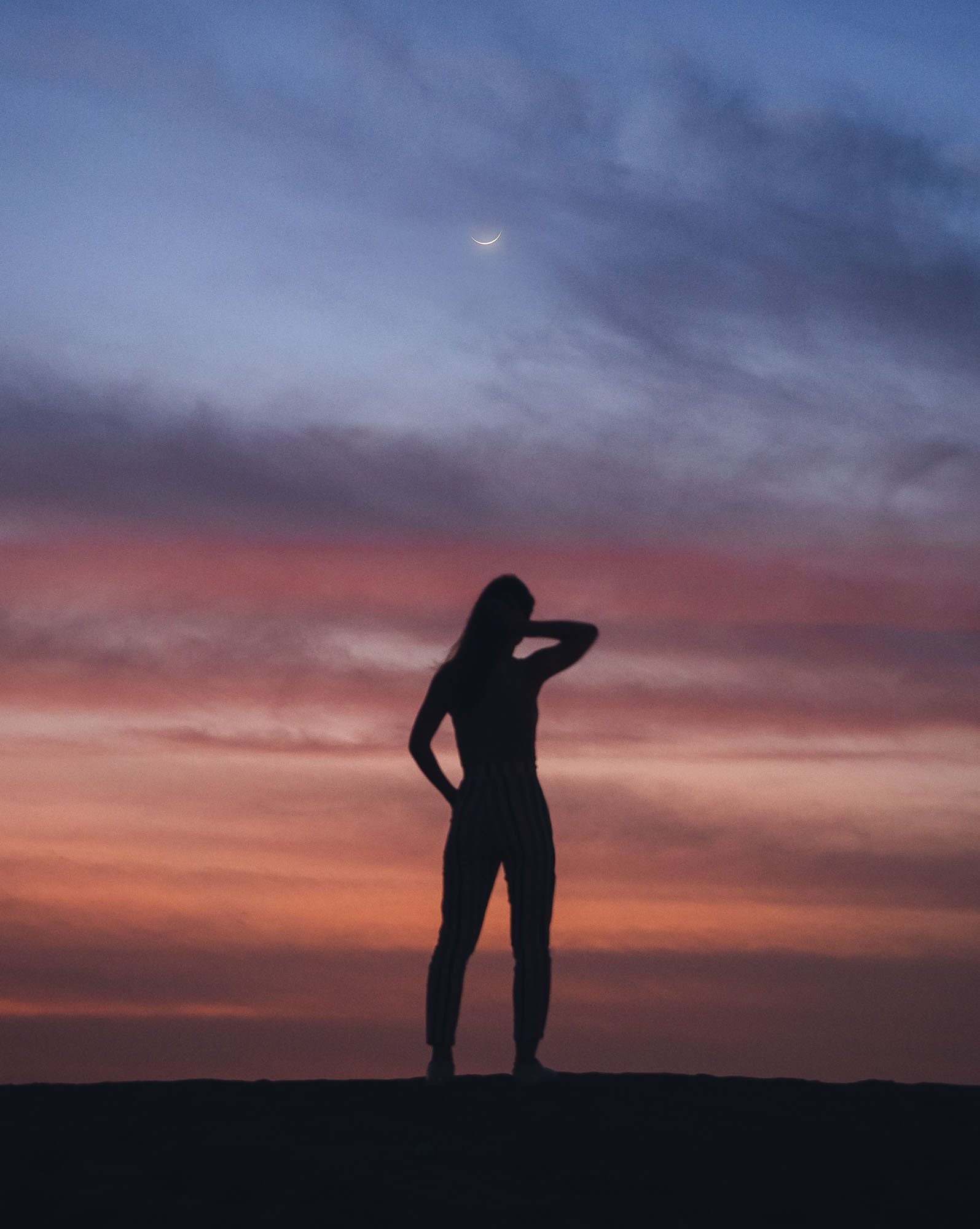
Last Sunset
An appropriate one.
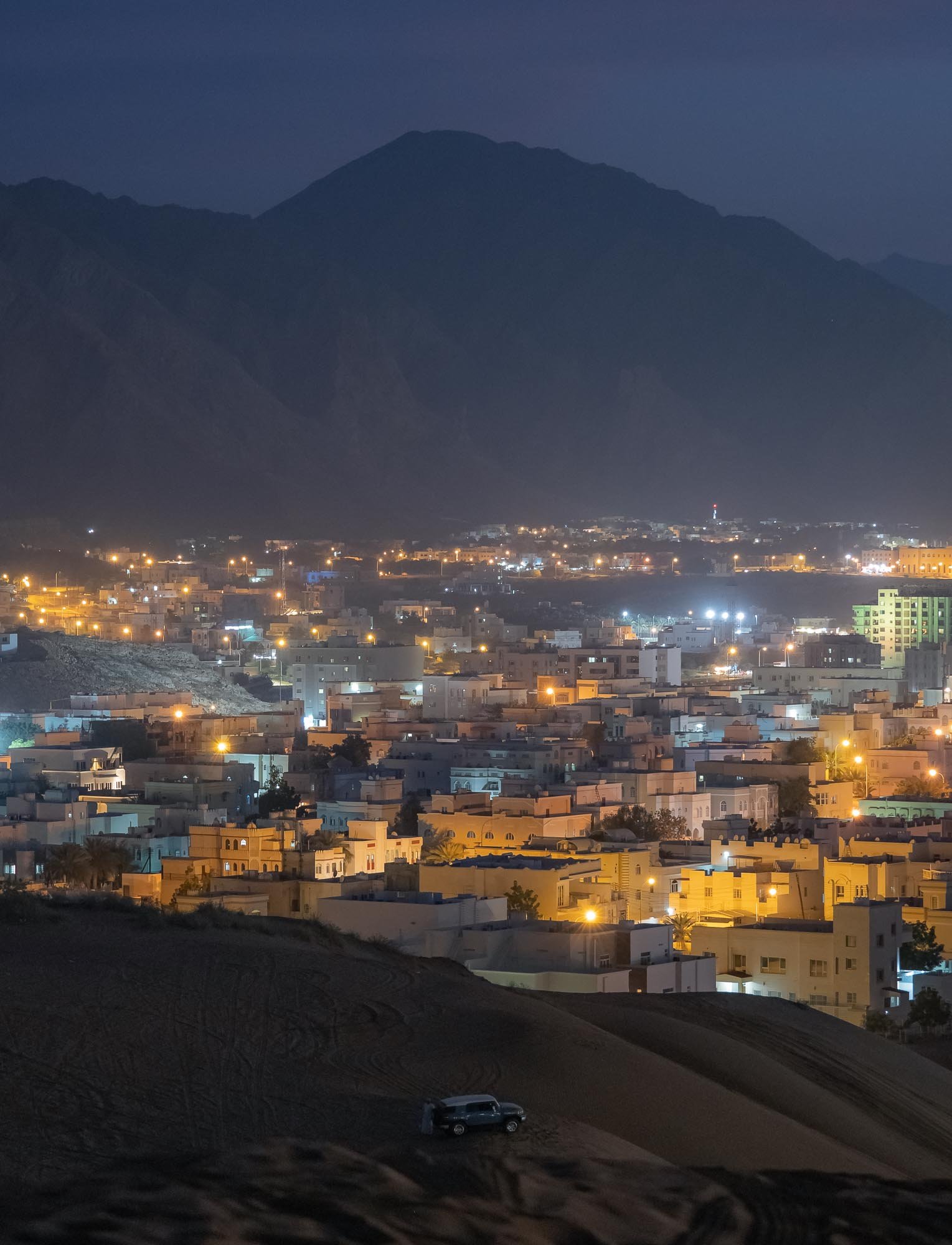
City Lights
The last light of the day disappearing over Muscat.
Back to Dubai
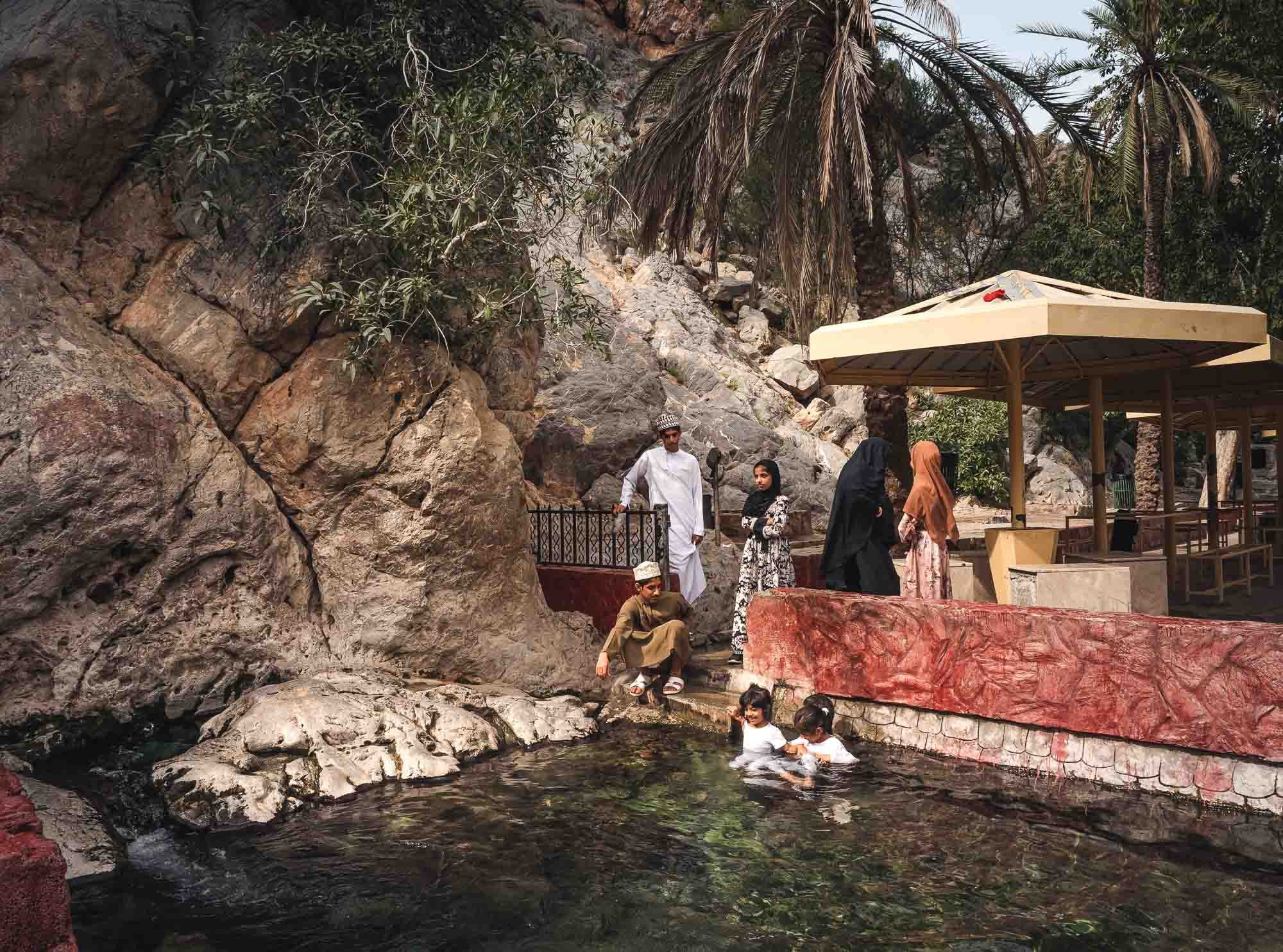
Athawarah Hot Spring
On our way back to Dubai we took a different route, passing by the hot spring of Nakhla. The hot water originating on the bottom left runs directly into the Wadi, keeping it surprisingly warm.
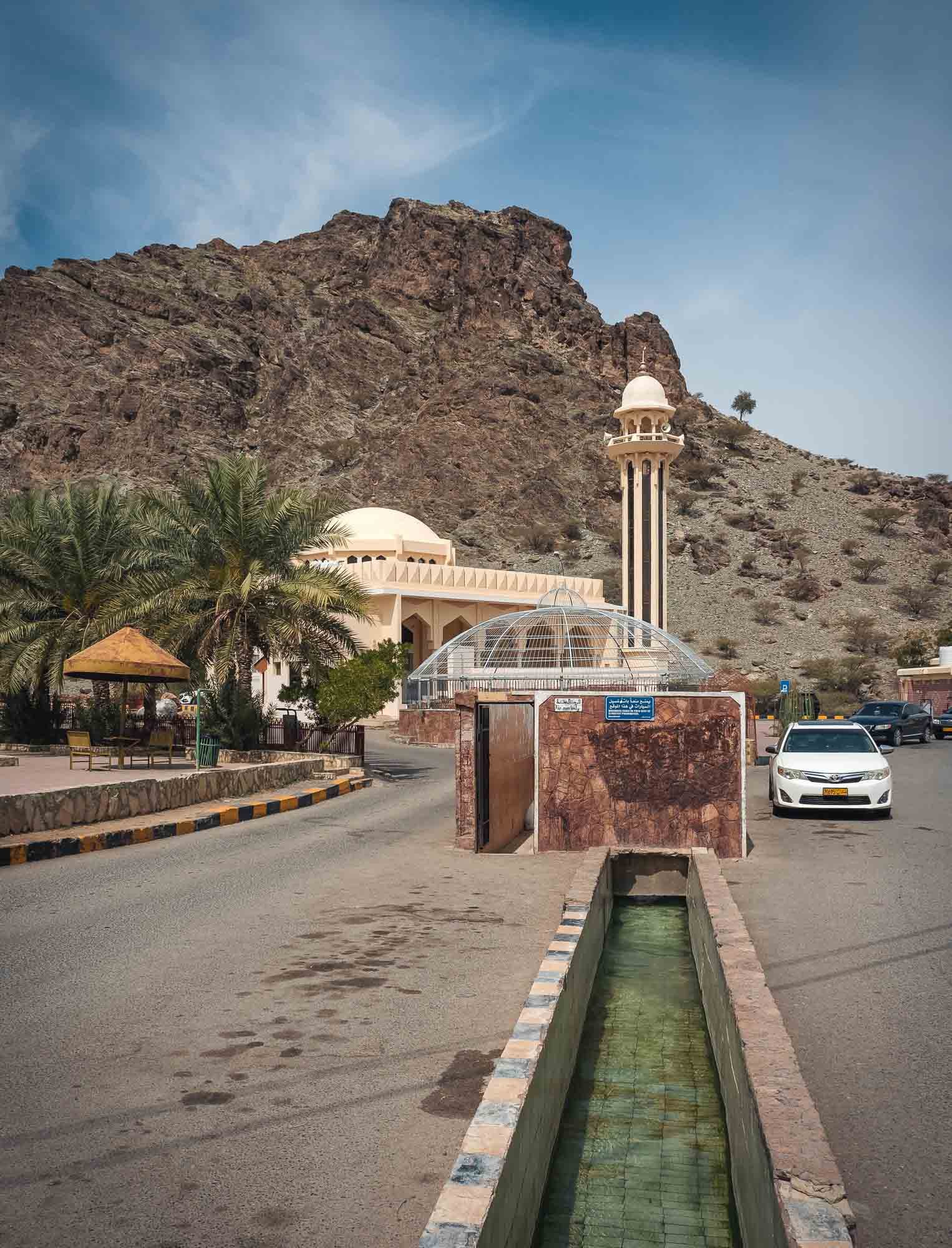
Al Kasfah Hot Spring
We also stopped in Rustaq at another spring - this one is said to have healing powers owing to the sulphur traces in the water. It originates under the caged dome in the background and then runs in a kind of channel through the streets, with stalls for people to take baths in the water visible in the foreground.
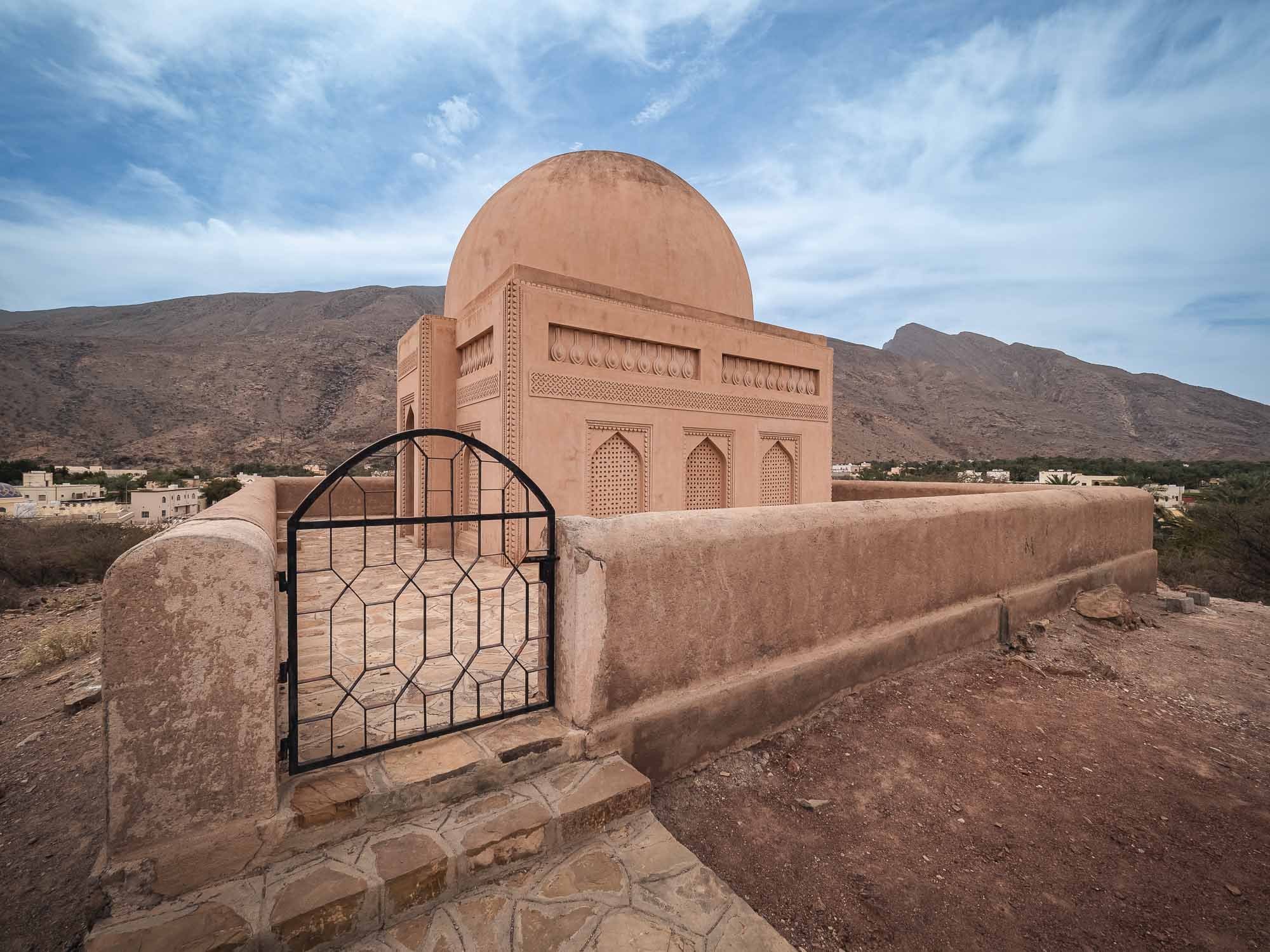
18th Century Tomb
The city is also home to this restored Ibadi tomb of the Imam Ahmad bin Said al-Busaidi, first ruler of Oman of the Al Said dynasty - took me quite a while to find this info, as there are very few signboards around and the Google Maps pin is in Arabic only.
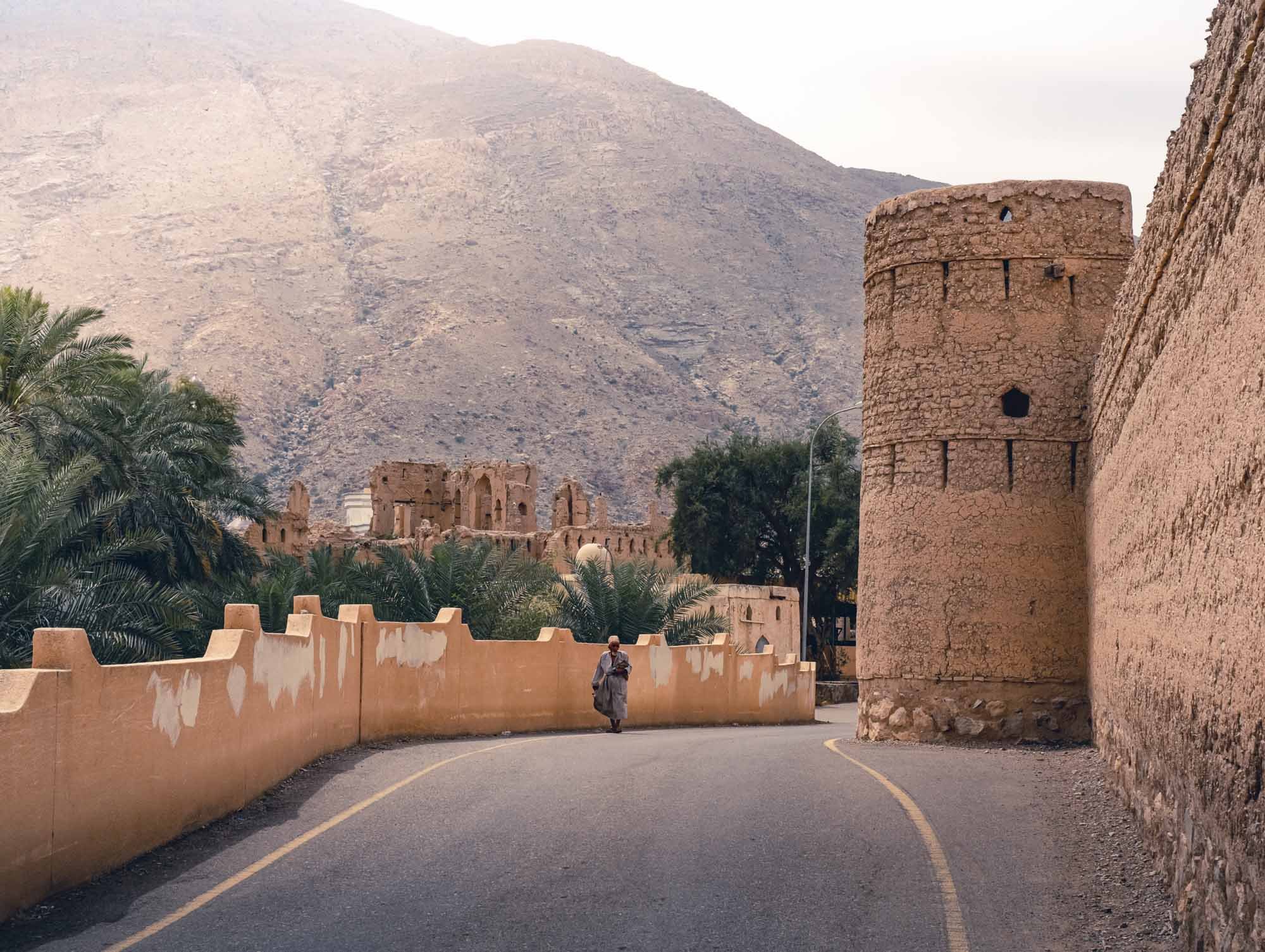
Rustaq Fort
The fort itself is currently closed for maintenance, but its imposing walls are nevertheless impressive.

Transport
We did encounter this fine gentleman who allowed us a quick glimpse into the fort, and then took us to the older parts of the city in this... vehicle, which he imported from China.

Qusra Museum
This was one of the places he showed us, a restored 300 year old family house, now converted and adorned with various artifacts.
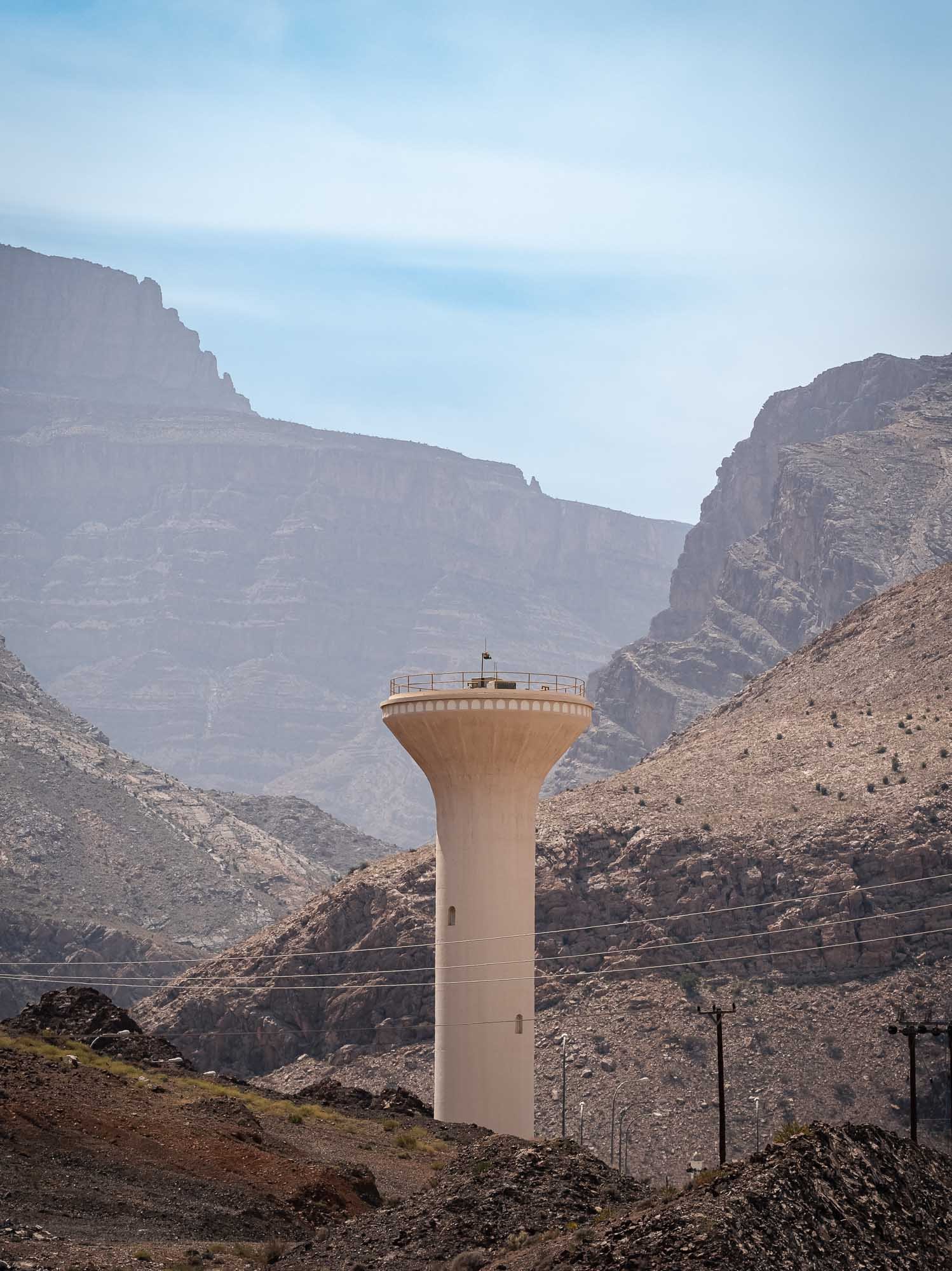
Water Towers
On our way to the final destination. You can find these towers dotted around the landscape, used for storage and to generate pressure.

Framed
Owing to questionable road conditions, we had to take quite a detour, but a few sights on the way made it enjoyable.

Al Ayn Beehive Tombs
When we finally made it, the scenery was worth it. I had initially failed to add this location to the route on the first day, but really didn't want to miss out after seeing the Beehive Tombs of Bat.
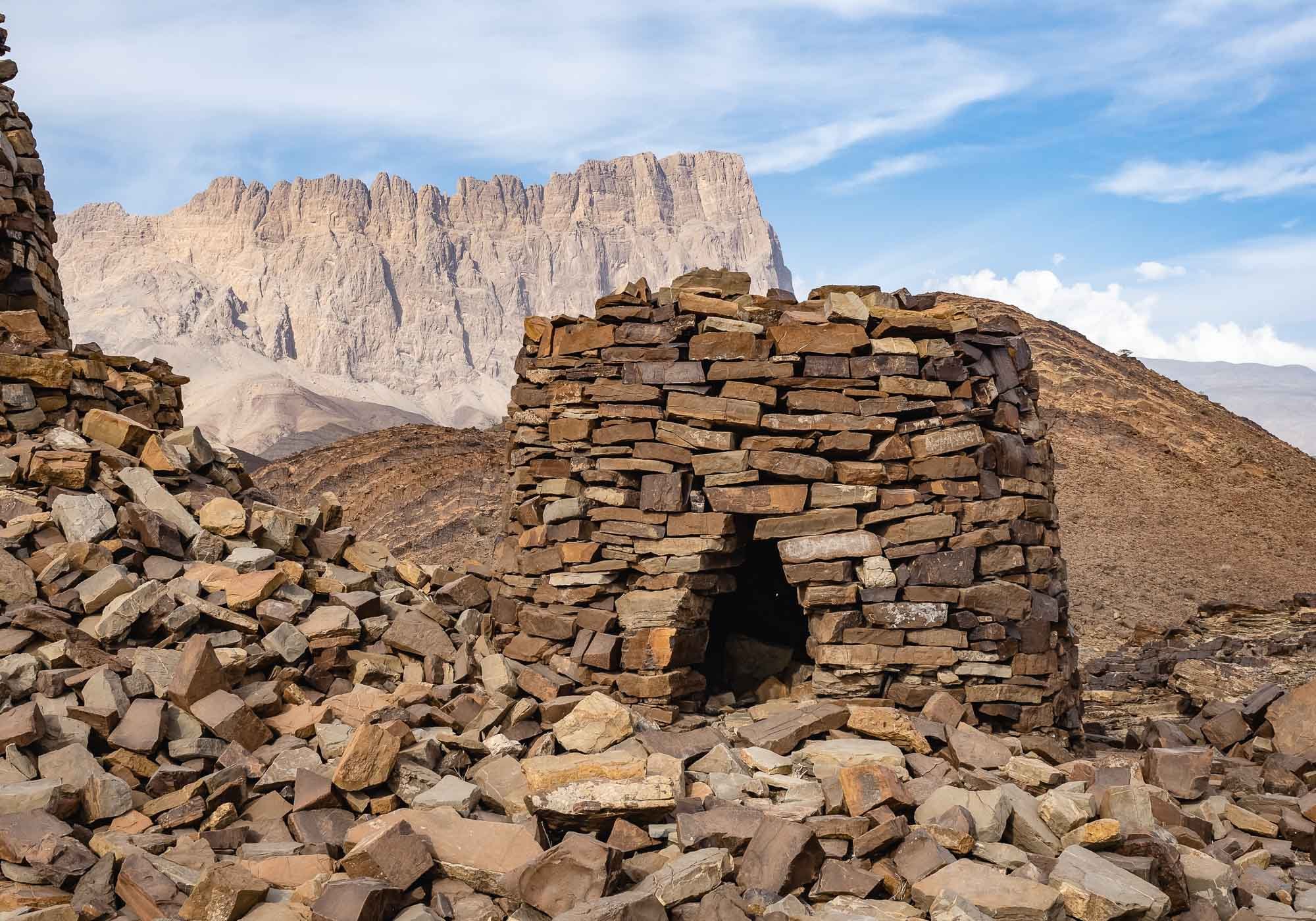
Awe-inspiring
Looking at these 5000 year old tombs with the imposing Jebel Misht in the background was truly amazing.
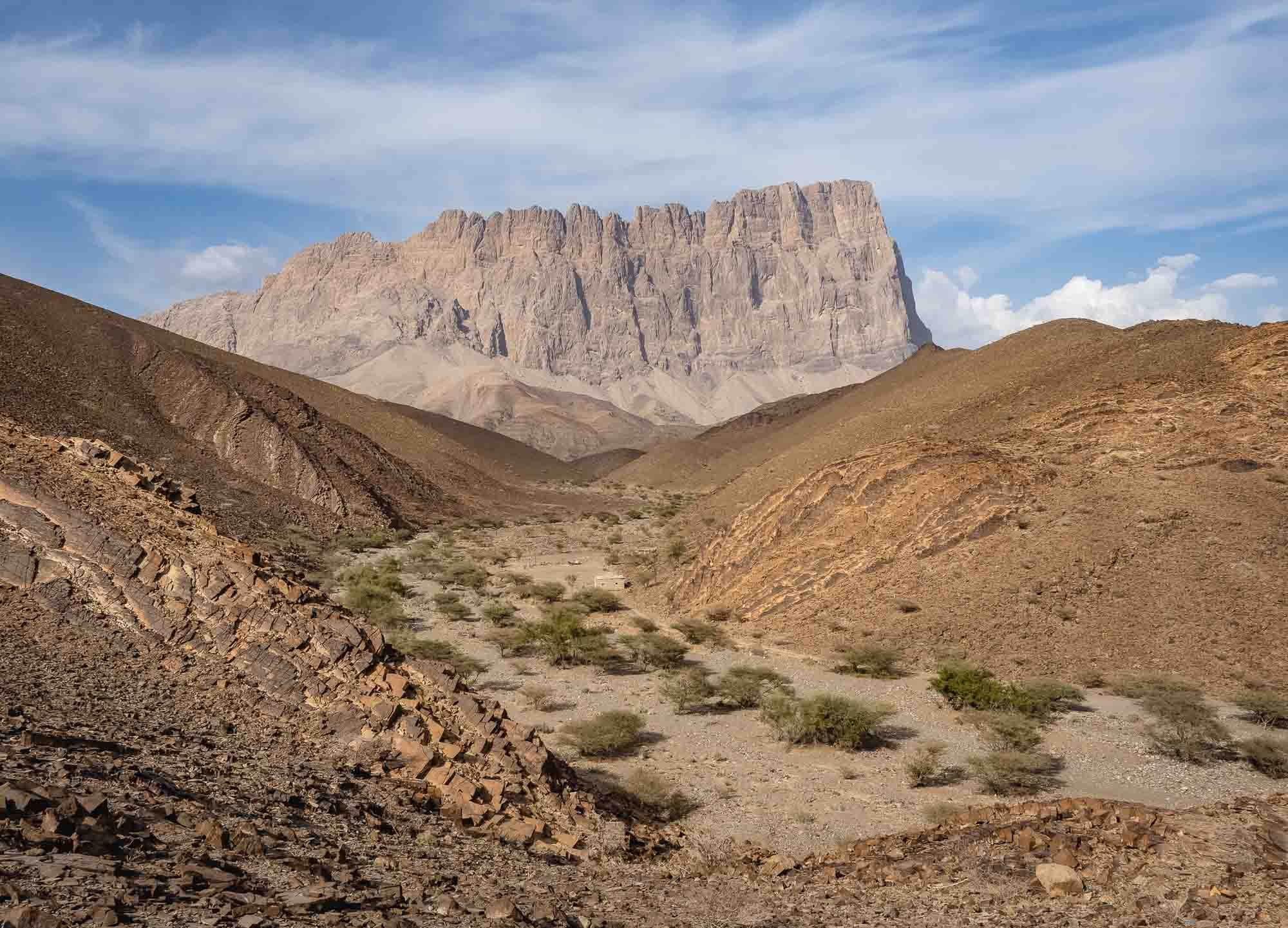
Jebel Misht
The striking landscape from the hill on which the tombs are located.
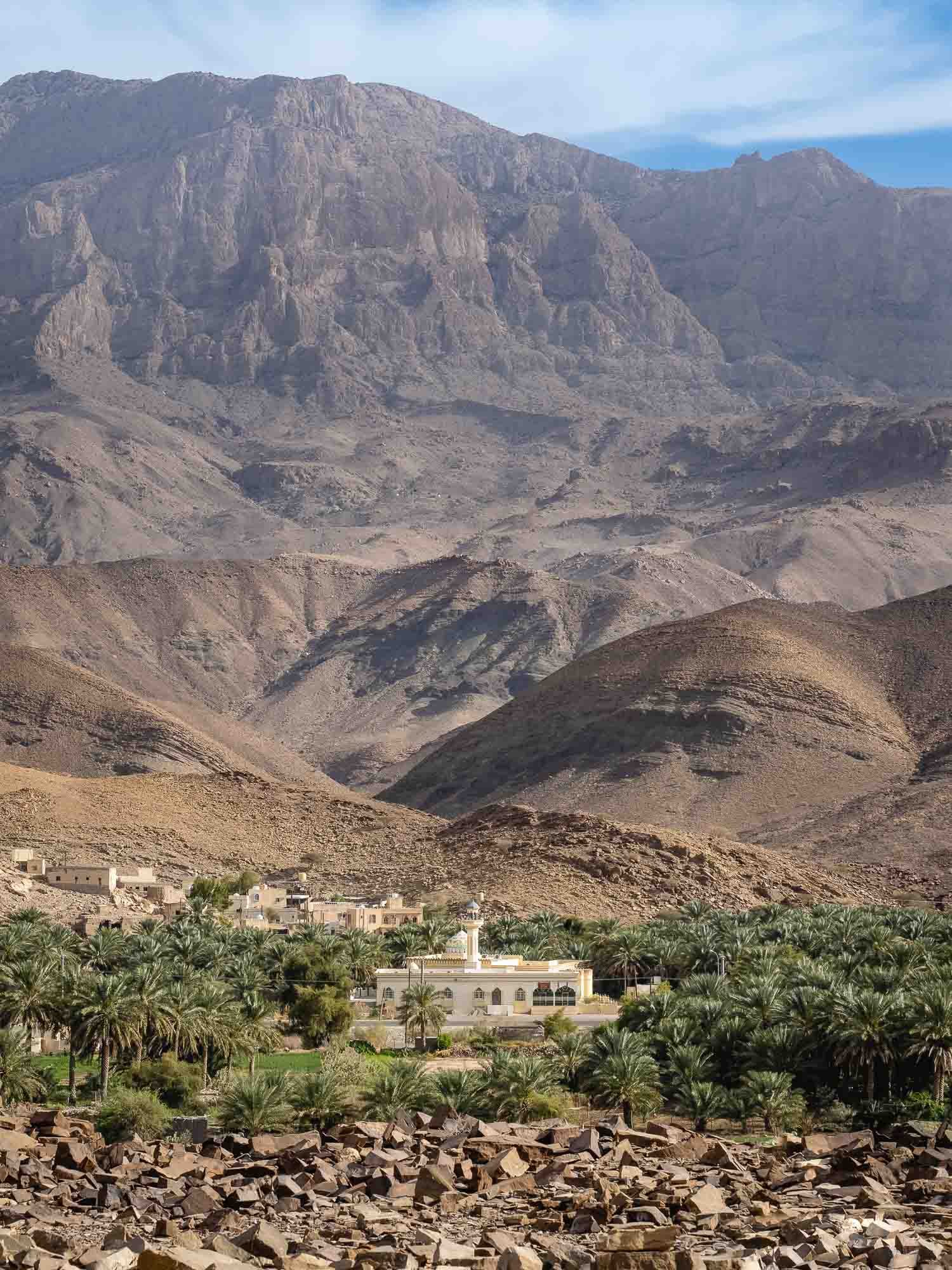
Hajar Views
Looking the other way into the date farm.
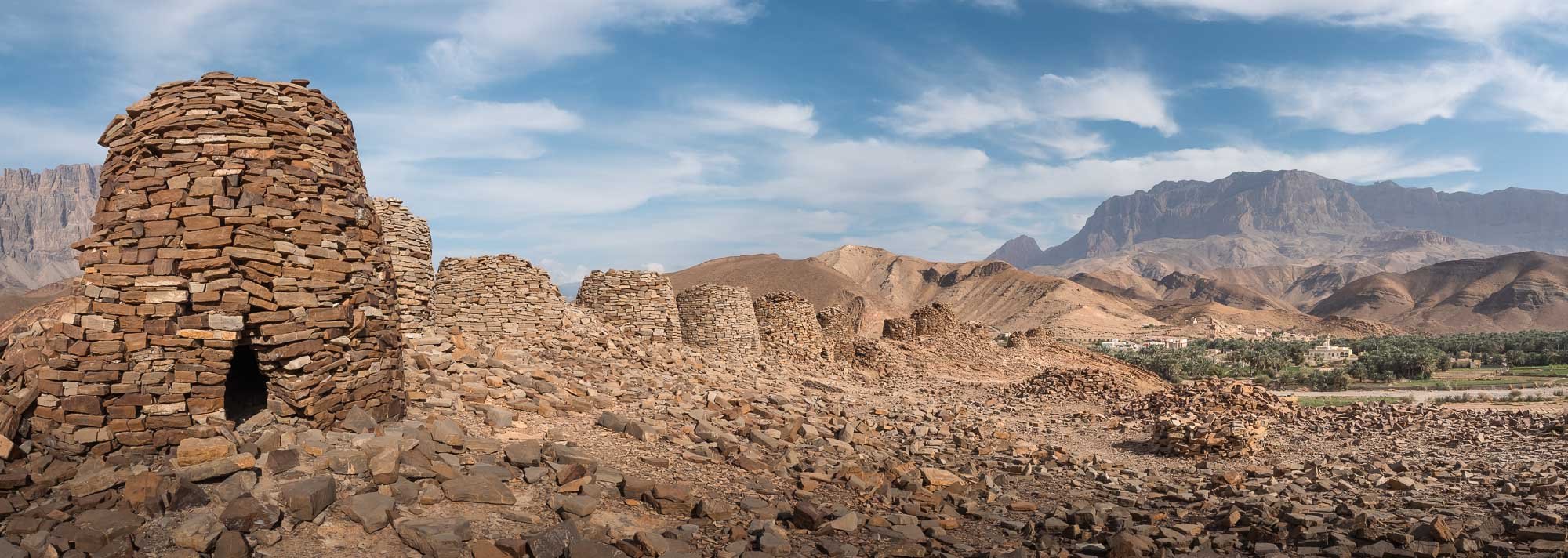
World History
According to Unesco, together with the neighbouring locations, this site forms the most complete collection of settlements and necropolises from the 3rd millennium B.C. in the world. It's almost a bit humbling (and a little concerning for their future) that you can just walk up to these fragile structures with no fences or rails of any kind.

Panoramic View
A full view of the site, which features a total of 19 tombs in almost a straight line. A definite highlight for me.

The End
Obligatory cat photo.
I really hope you enjoyed this small documentary series of my trip to Oman. I’ve known about the beauty, geology, and history of the Hajar mountains from exploring the UAE, but Oman really took this to another level. It is probably a good thing for these sites that the country hasn’t had the same level of attention as some other more famous destinations in the Middle East, but on the other hand Oman and its people really deserve to be recognized alongside them. Will definitely come back.





































